Author: Mrs A
Location: Kenilworth and surrounds, Sunshine Coast Hinterland, Queensland, Australia
Just when we thought our rainforest visiting days were over we decided to book in at the showgrounds in Kenilworth for a few days.
If you are unfamiliar with showgrounds (you may have noticed we have stayed on quite a few), a showground is a community run area of ground on which country shows – rodeos, livestock sales and comptitions and horse riding trials are held. Outside of major events, the land sits empty, so many towns have turned them into campgrounds, providing power and water to a number of sites as well as offering unpowered spots. We like them because they tend to be more bushy and spread out than caravan parks, and money earned from our fees goes back into improving the community facilities.
It was a breath of fresh air arriving in Kenilworth, after the frenzied school holidays crowds flocking to our Didillibah campsite, children keen to enjoy the water slides and jumping pillows on offer there. Although there were children around, mostly they were busy playing games on the oval or riding their bikes around the quiet driveways.
The overwhelming sound we first noticed was of birds in their hundreds, flocking to the flowering callistemon trees around the park. As well as Rainbow Lorikeets and Pale-headed Rosellas, there were dozens of tiny Scarlet Myzomelas, a challenge to see as they are so similar in colour to the flowers.
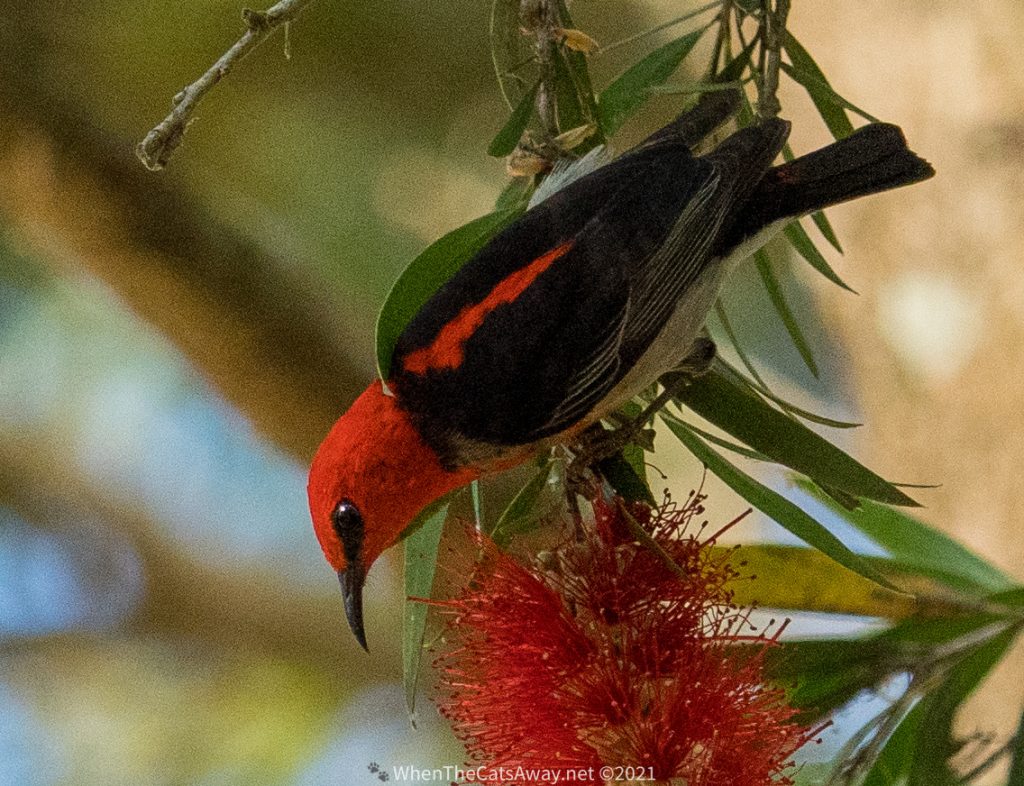
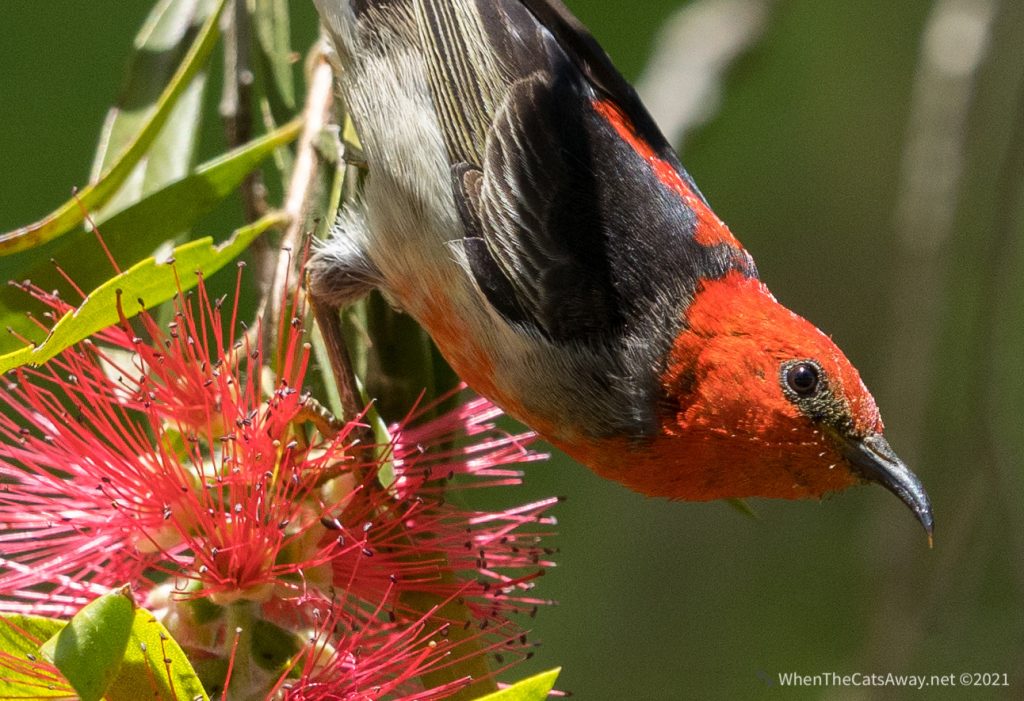
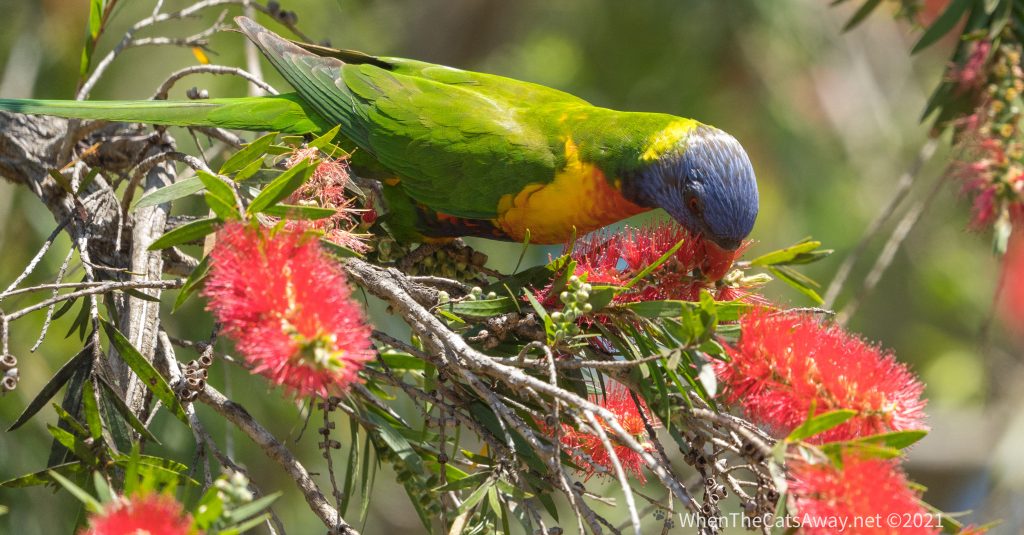
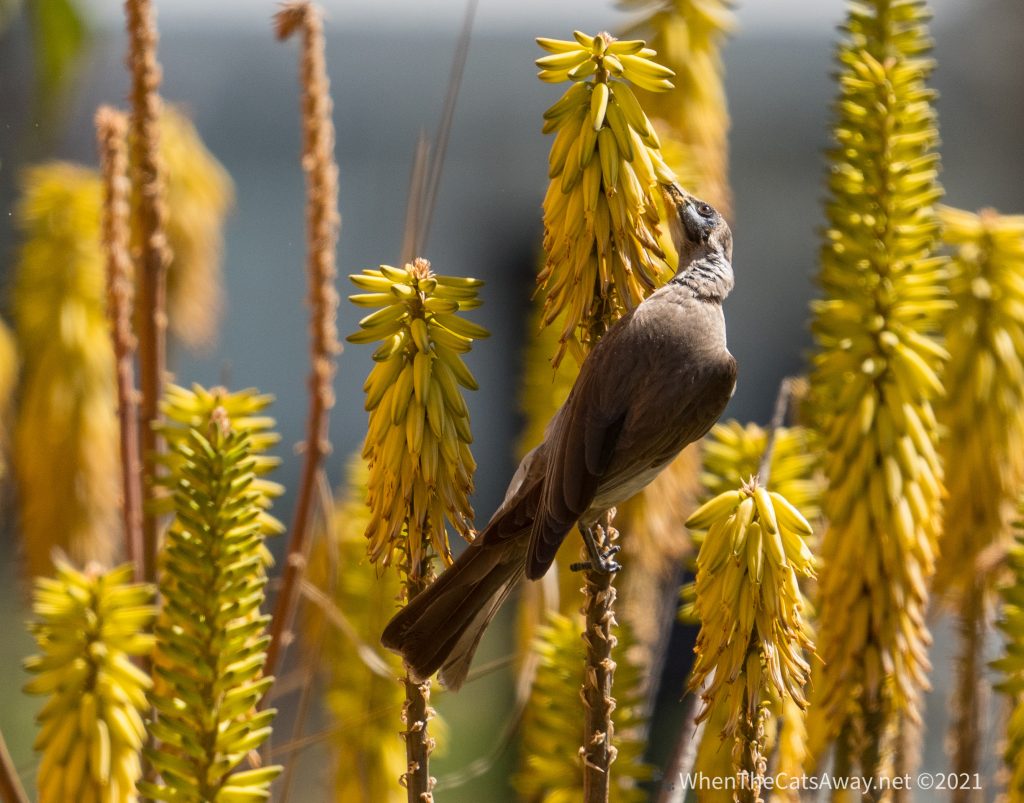
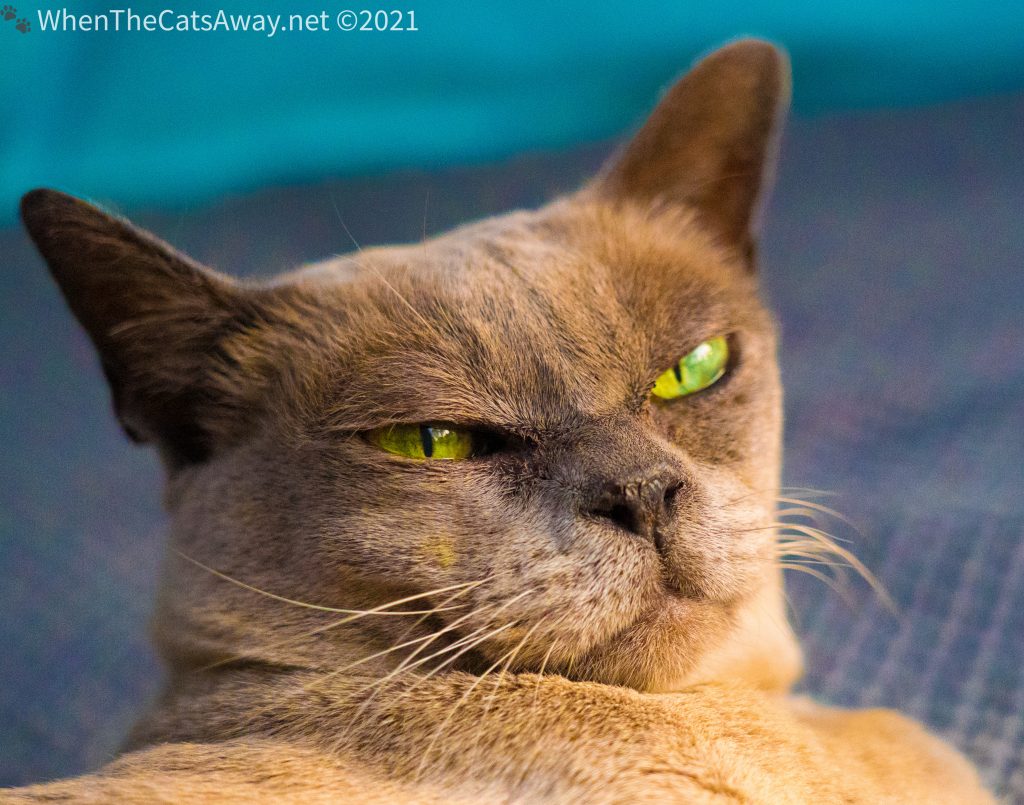
*
Kenilworth is situated in a rural setting ringed by national parks and state forests in all directions, the green rolling hills reminding us somewhat of England on a fine sunny day. It sits in the Mary River valley, and the river itself runs just behind the showground.
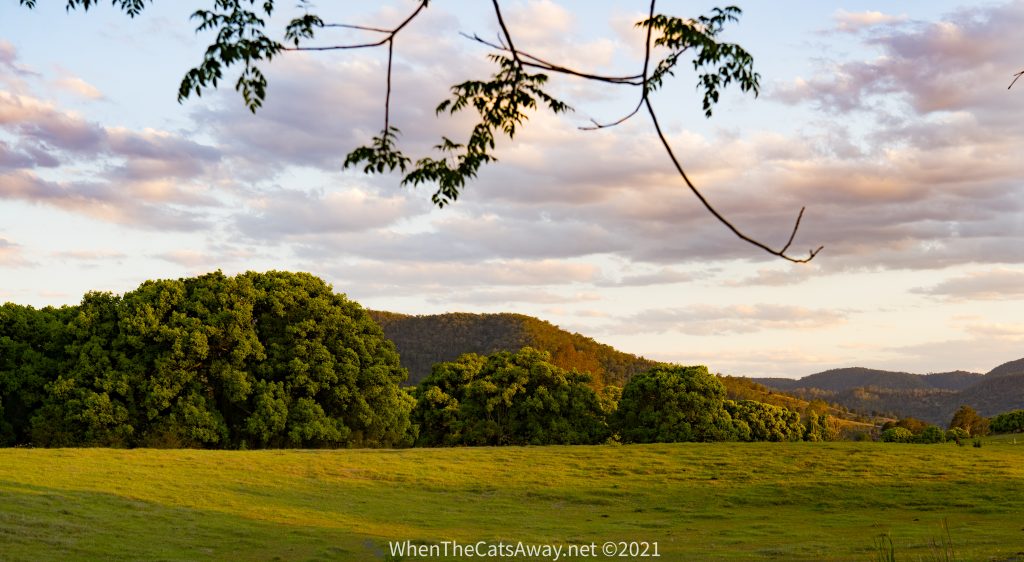
All this natural environment makes for a wildlife filled location and we ticked off more than 35 different species of bird just footsteps from our caravan!
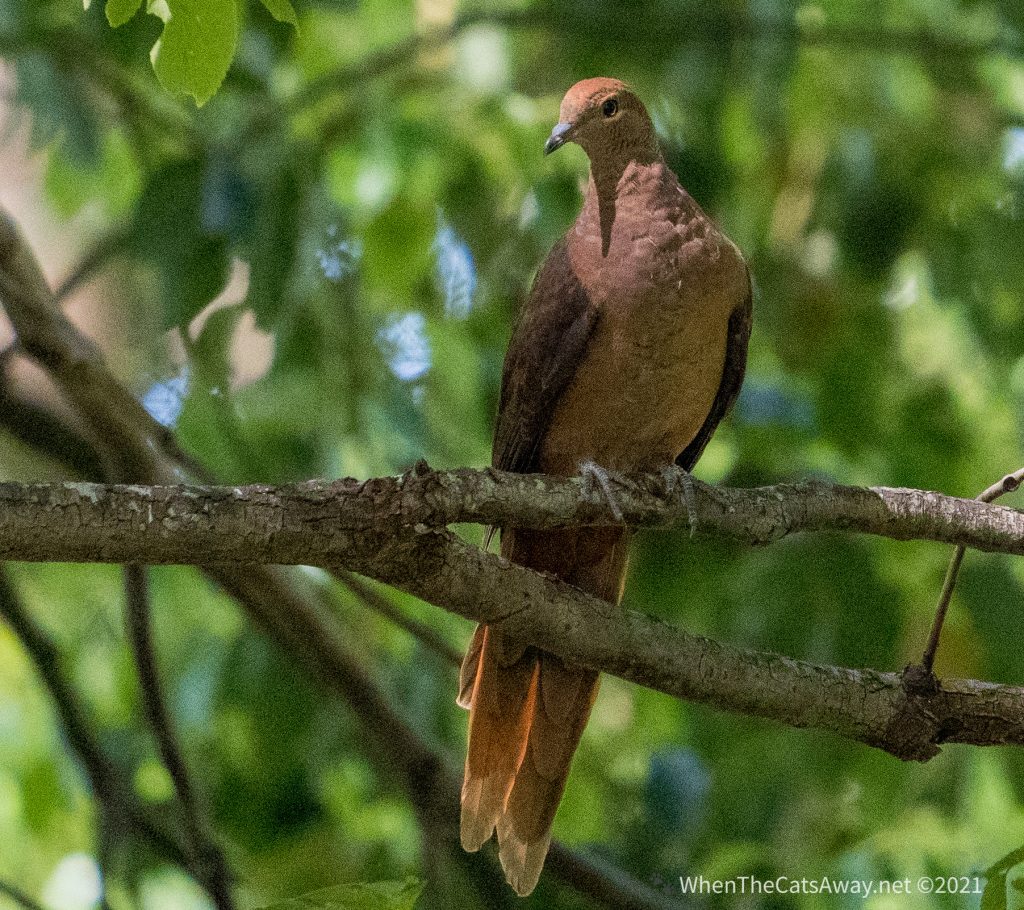
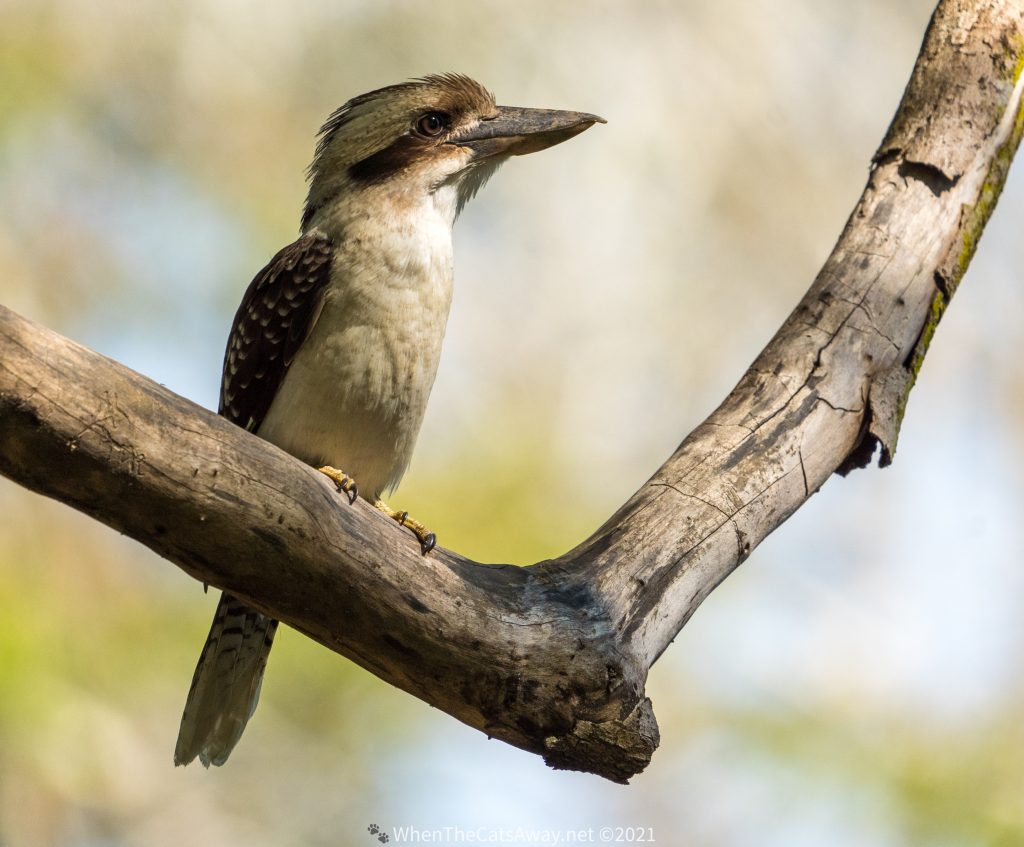
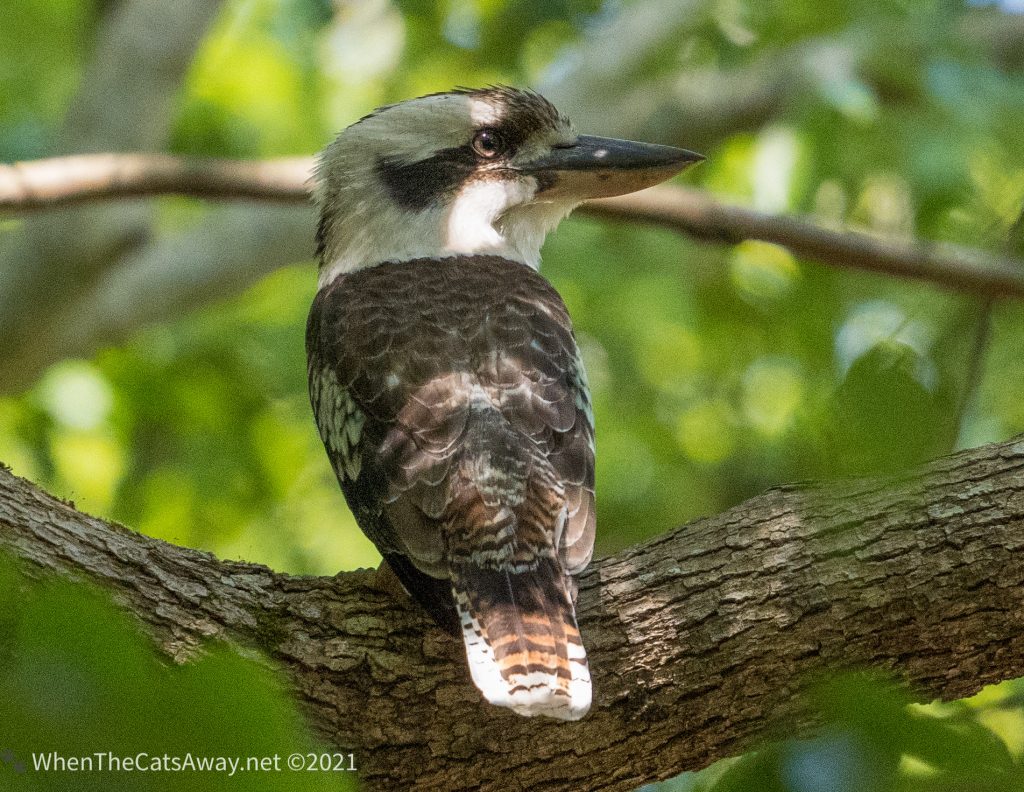
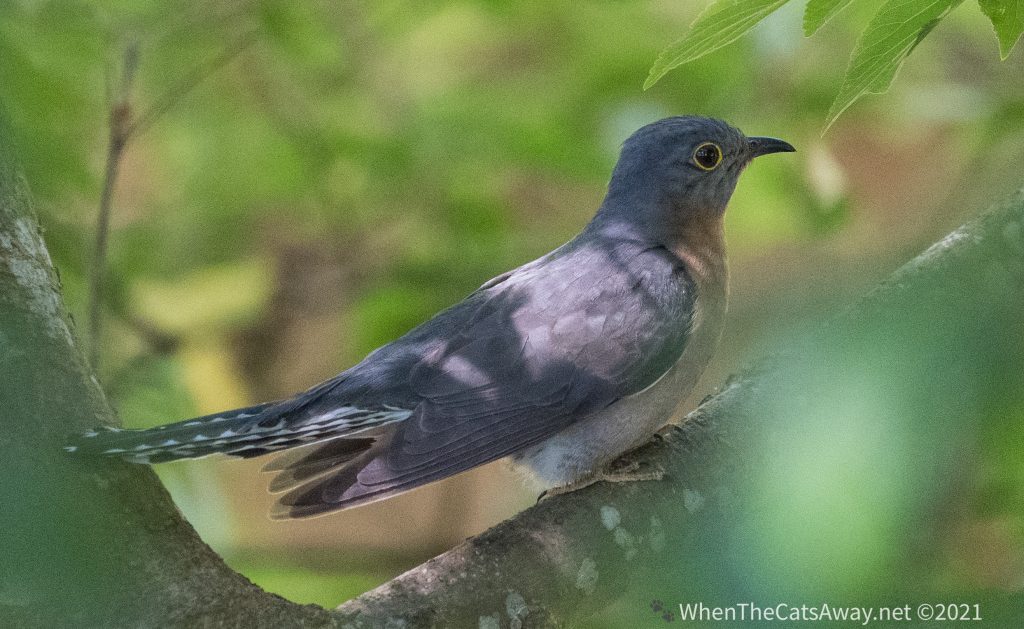
We were reminded in no uncertain terms that (despite the temperature reaching over 30 degrees centigrade on a couple of the days we were there) it is spring, and many of the birds were busy building nests, collecting food to feed young, and often in their vibrant mating colours. It is a great time to be spotting birds.
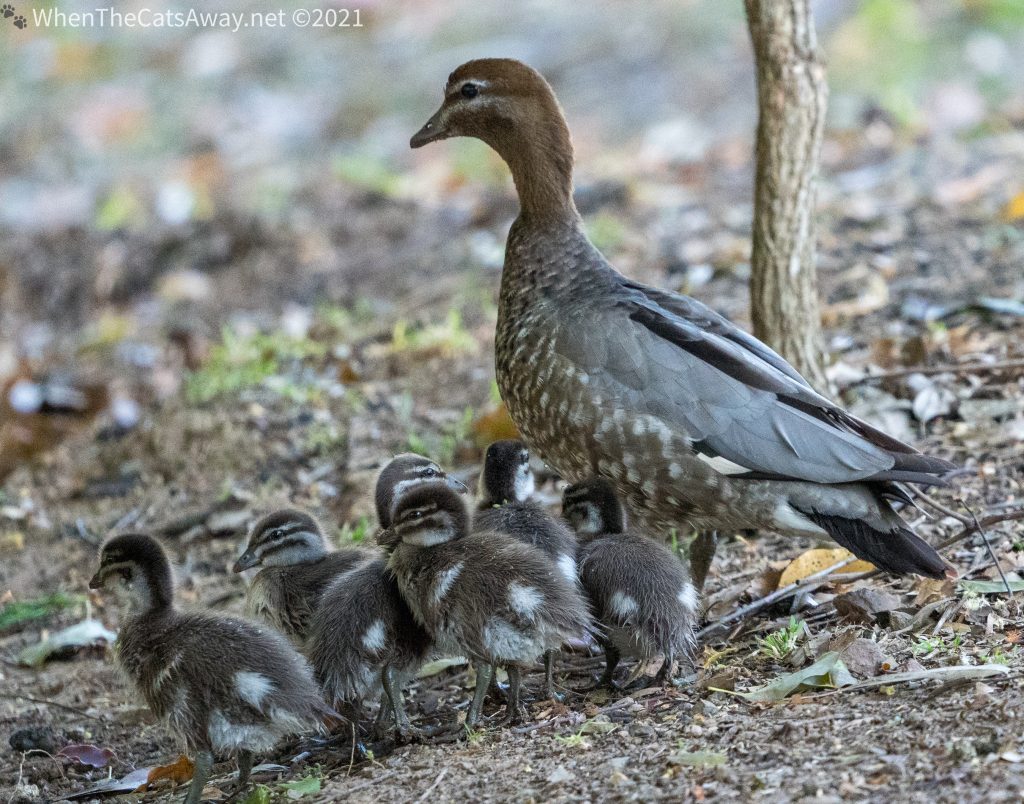
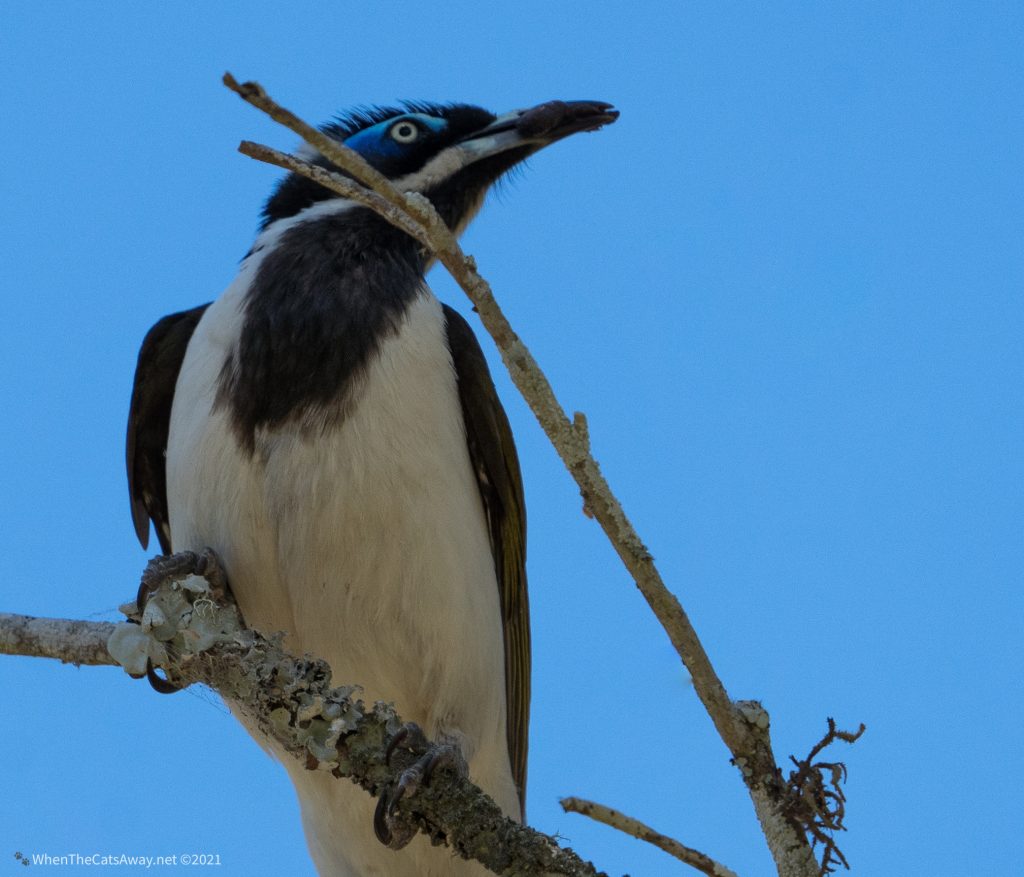
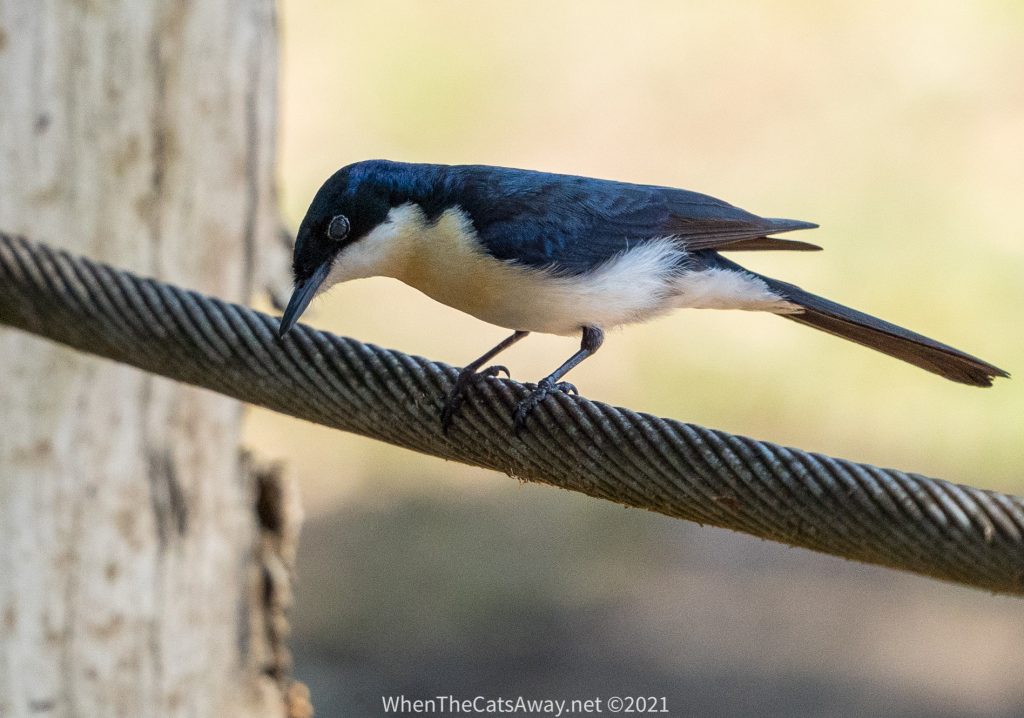
In addition to the many birds around, on one walk we even spotted a large Australian Water Dragon, located where I had previously seen the ducklings. I was so worried that they were missing I checked to see whether duckling might be on the Water Dragon’s dinner list – fortunately not, they prefer insects and the odd baby mouse!
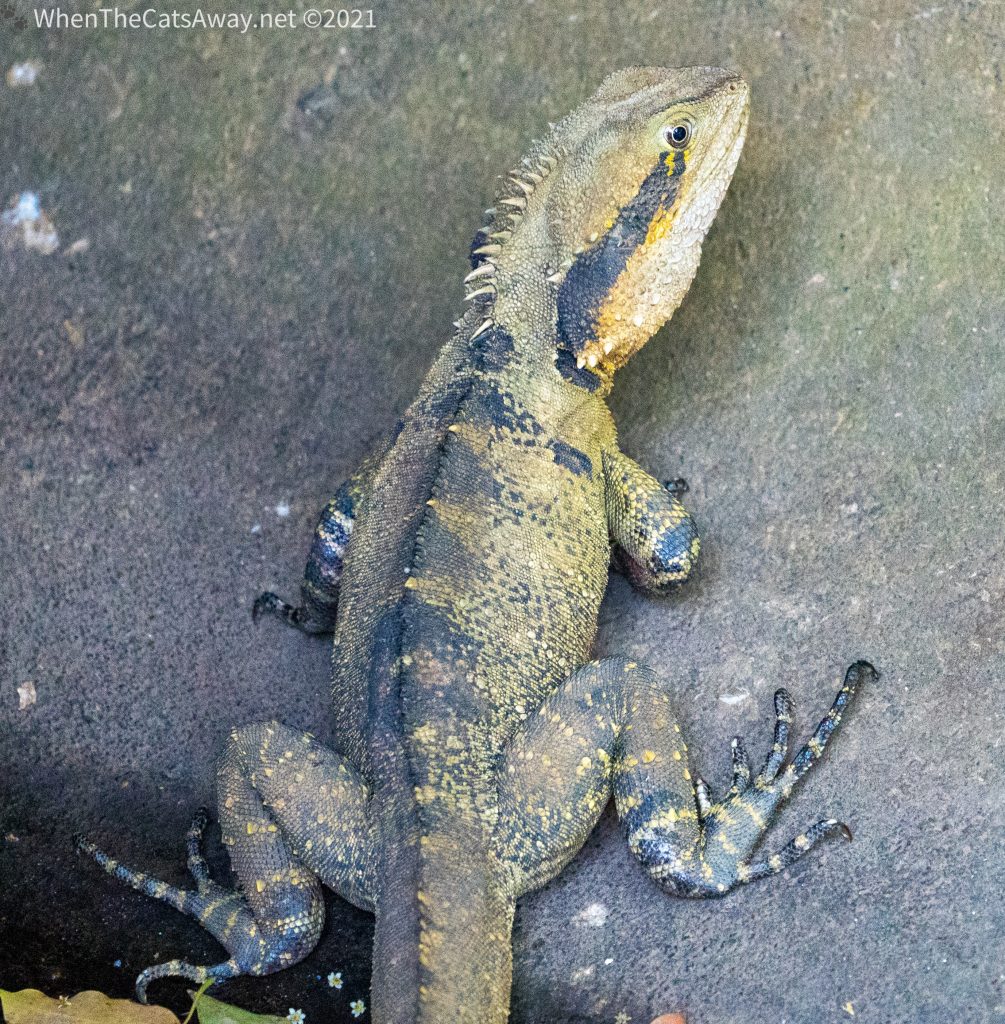
*
The Mary River is about a 10 minute walk from the campsite, following a mown grass tree lined pathway which leads down to the river’s edge.
We came to this region back in 2018 when we organised a Zoner’s Muster at Kenilworth Camping, a farm camping area on the banks of this river further downstream. Back then we had paddled 4.5km in our inflatable pack rafts and had a great time with some of our Zoner (owners of Zone RV caravans) friends. So it was really fitting when our friends Phil and Libby, who had been there with us too, decided they hadn’t quite had enough of us in Noosa, and that they would drive up with their granddaughters, Ava and Hayley, for the day.
Hayley didn’t hesitate to jump in the river for a paddle, while Ava took time to learn how to skim stones. The water was definitely too shallow for kayaking and we certainly could not have managed the trip we did three and a half years ago.
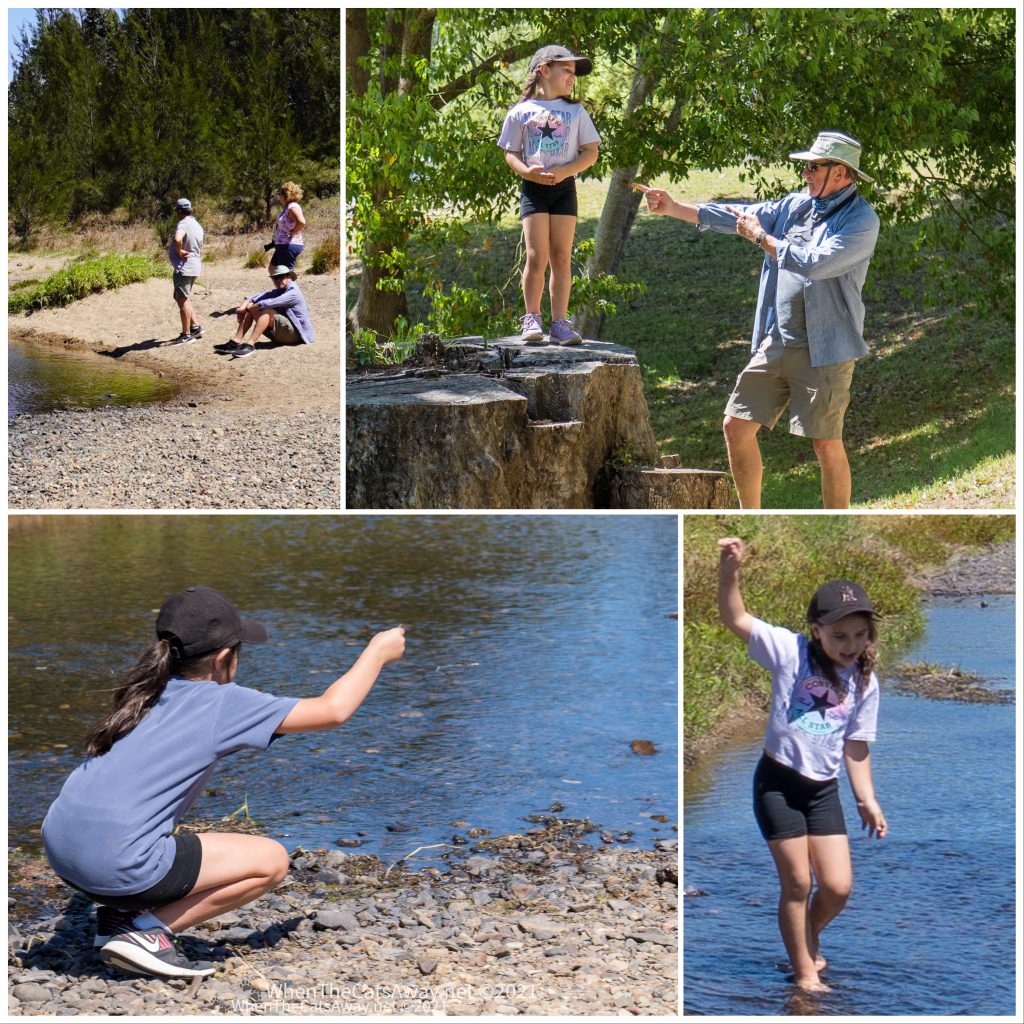
We were reminded that the river is home to more than fish, turtles and birds, when sharp-eyed Hayley pointed out a Red-bellied Black Snake slithering along the riverbank into the undergrowth. This one was just a baby – on another visit down to the water Mr A came rushing along the bank towards me ashen faced – a 2 metre long adult had just emerged from the water swiftly retreating into the reeds just centimetres in front of him. We steered clear from reeds and grasses after that!
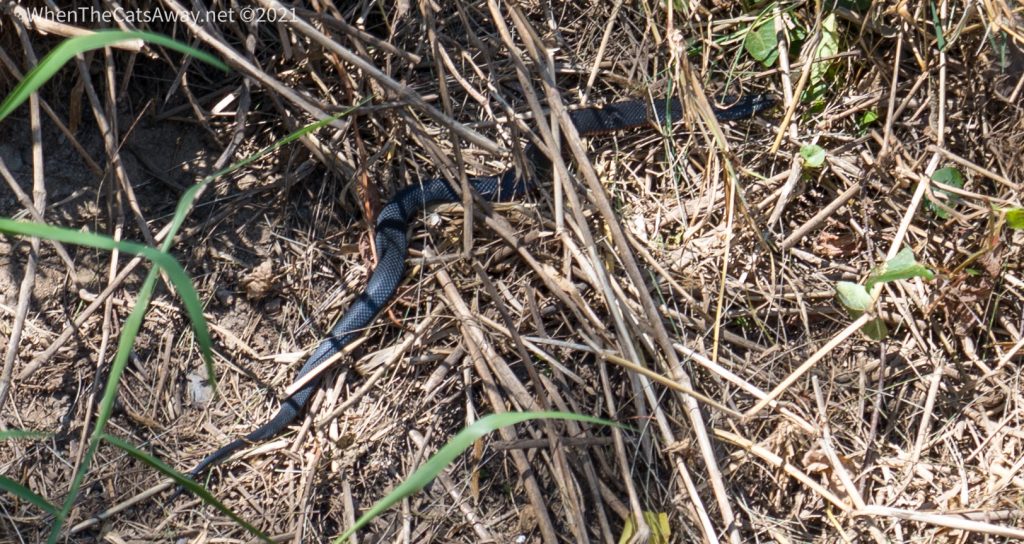
Mark and I visited the Mary River on a few occasions, every time rewarding us with new sightings – like these gorgeous Red-browed Firetails – tiny finches often heard but rarely seen.
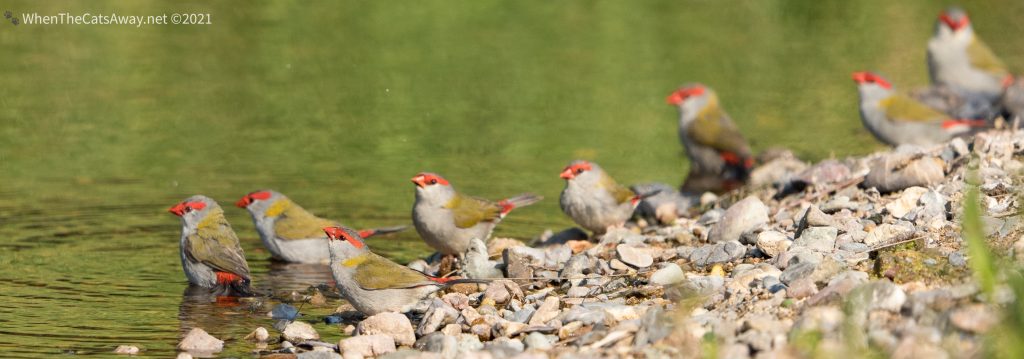
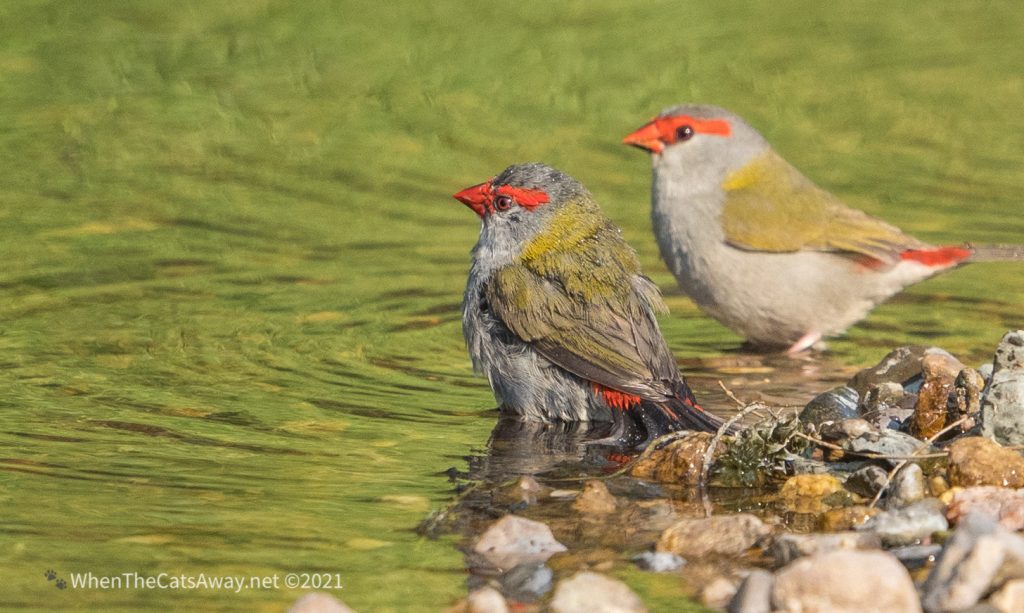
And little insect loving Red-backed Fairywrens flitting through the Casuarina trees (River Sheoaks) and grasses.
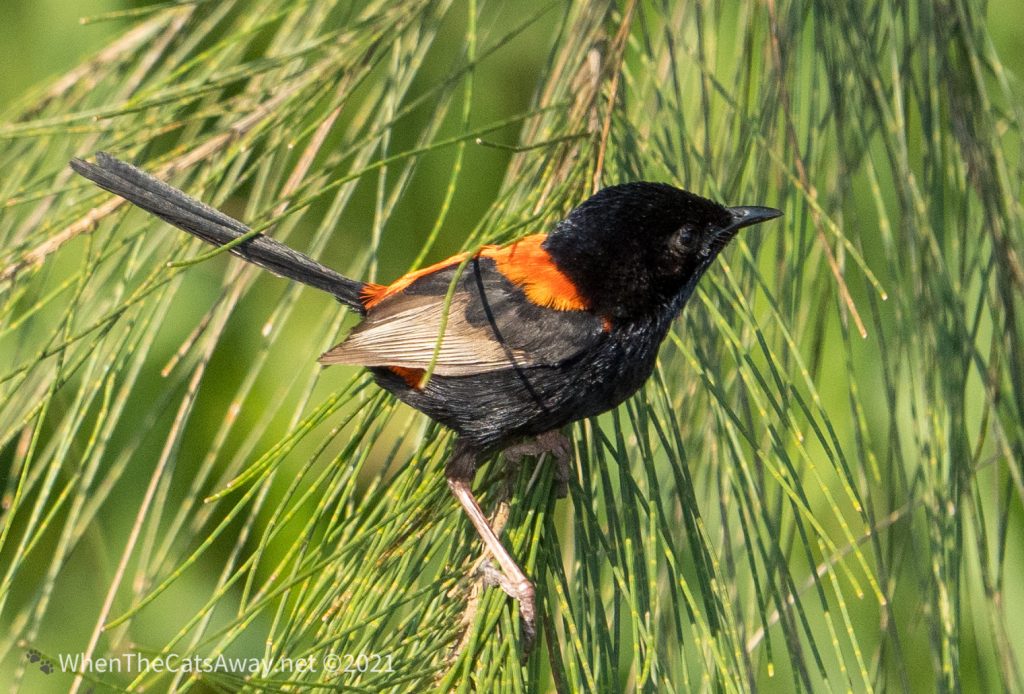
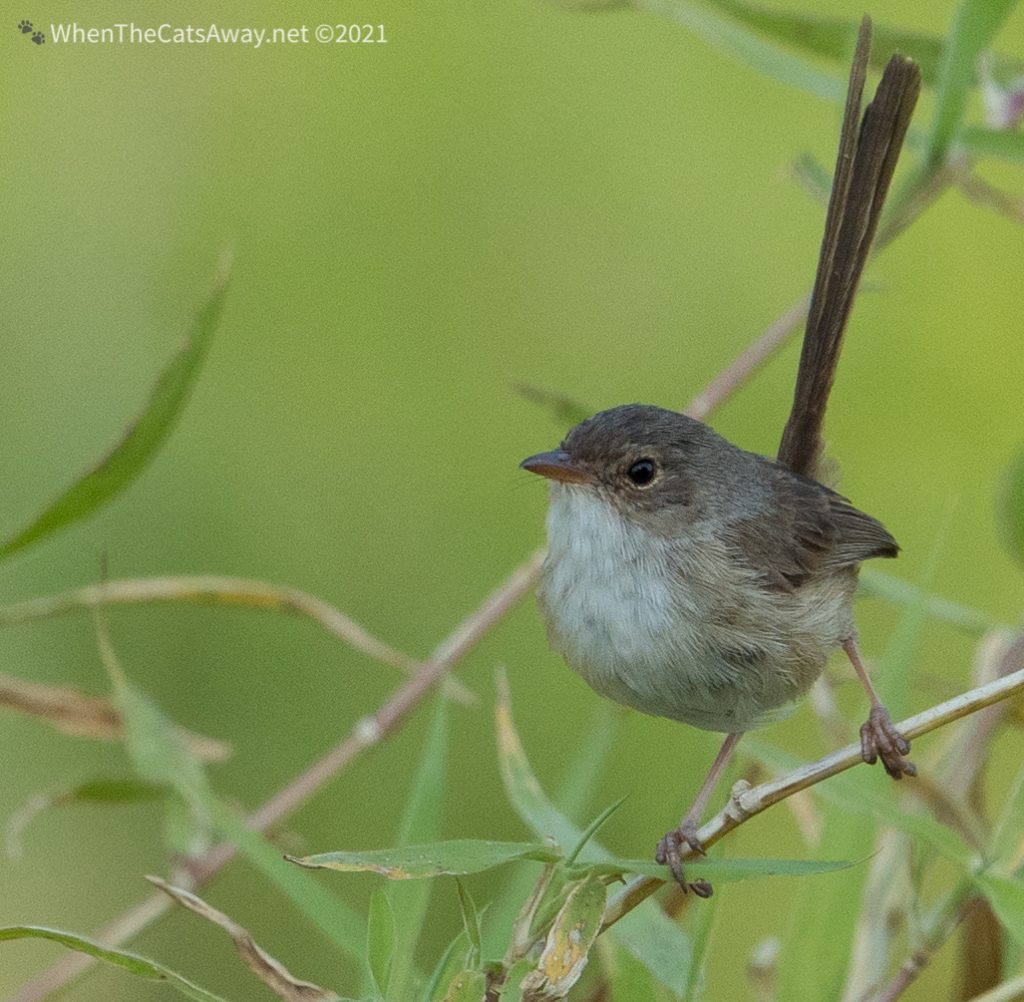
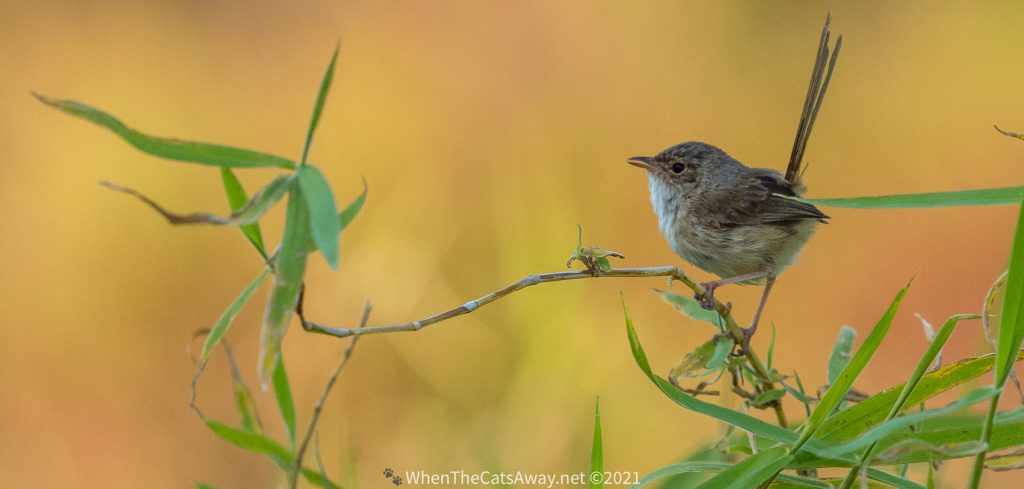
The river is also home to many more traditional water lovers, including Little Pied Cormorants, Intermediate and Great Egrets, Herons, Dotterels and more.
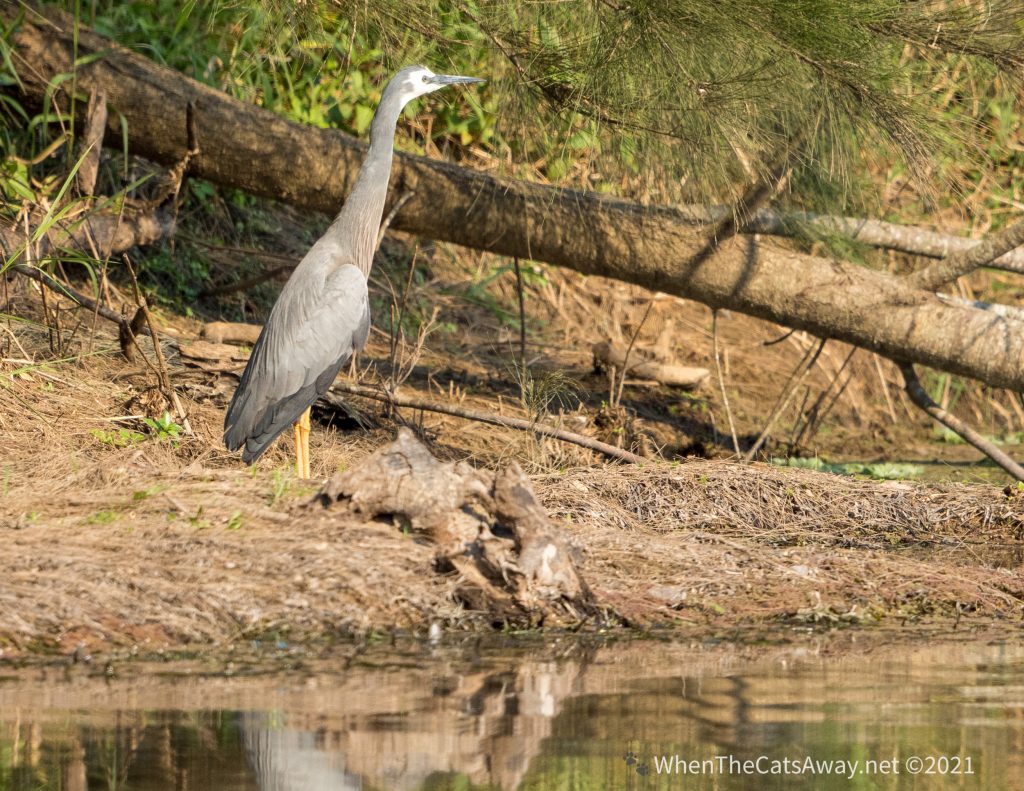
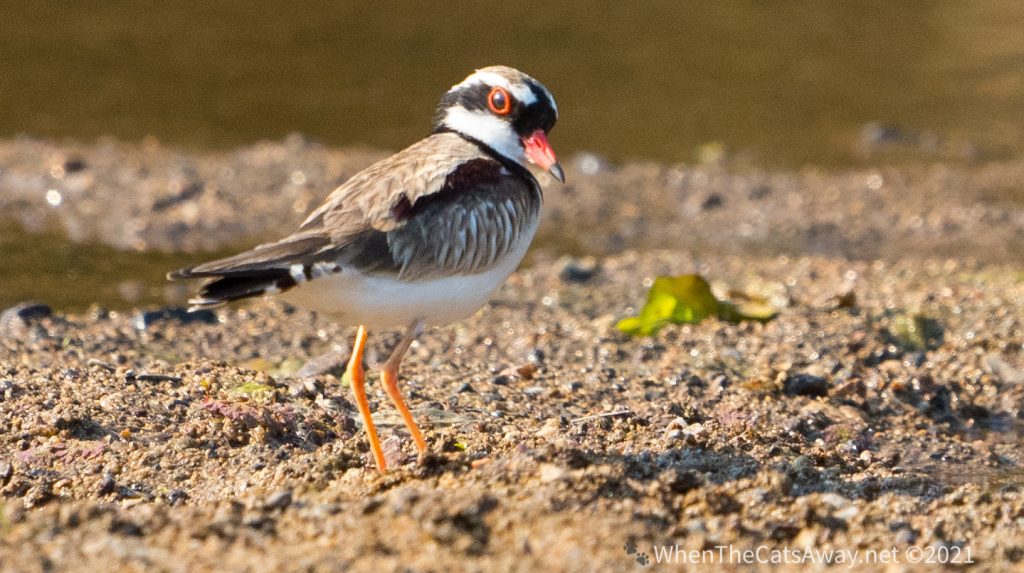
*
A short 10 minute drive from Kenilworth is a small area of ancient rainforest, home to the Fig Tree Walk. The boardwalk takes visitors on a short educational trail through the forest, explaining about the trees and the lifecycle within this special environment. Mark and I visited on two occasions, the second time bringing along Libby and Phil and the kids for an explore to finish their day out.
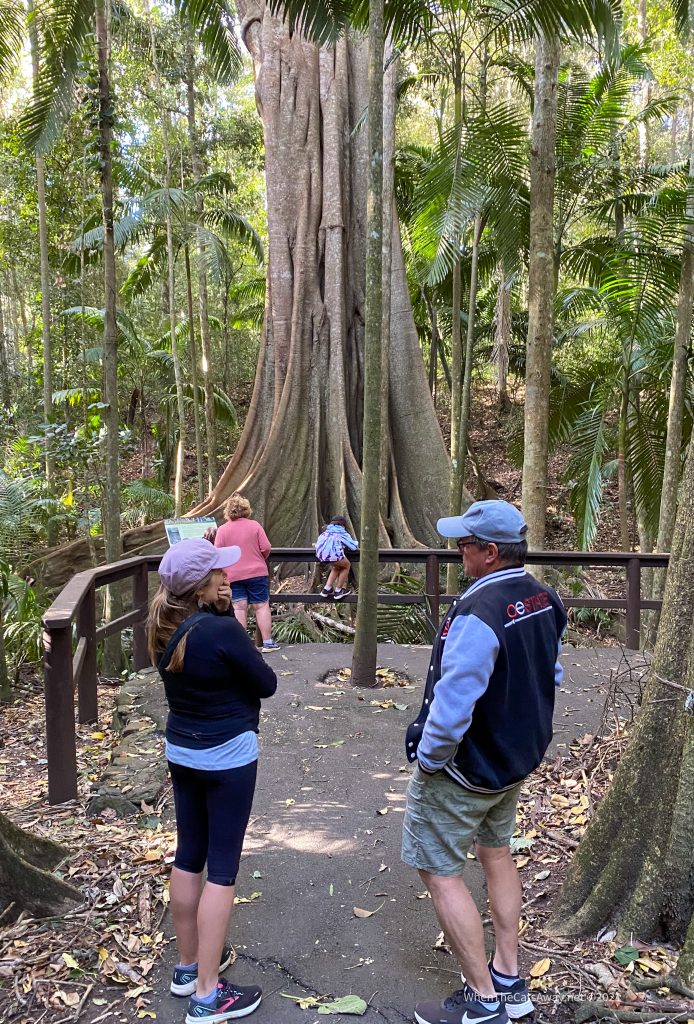
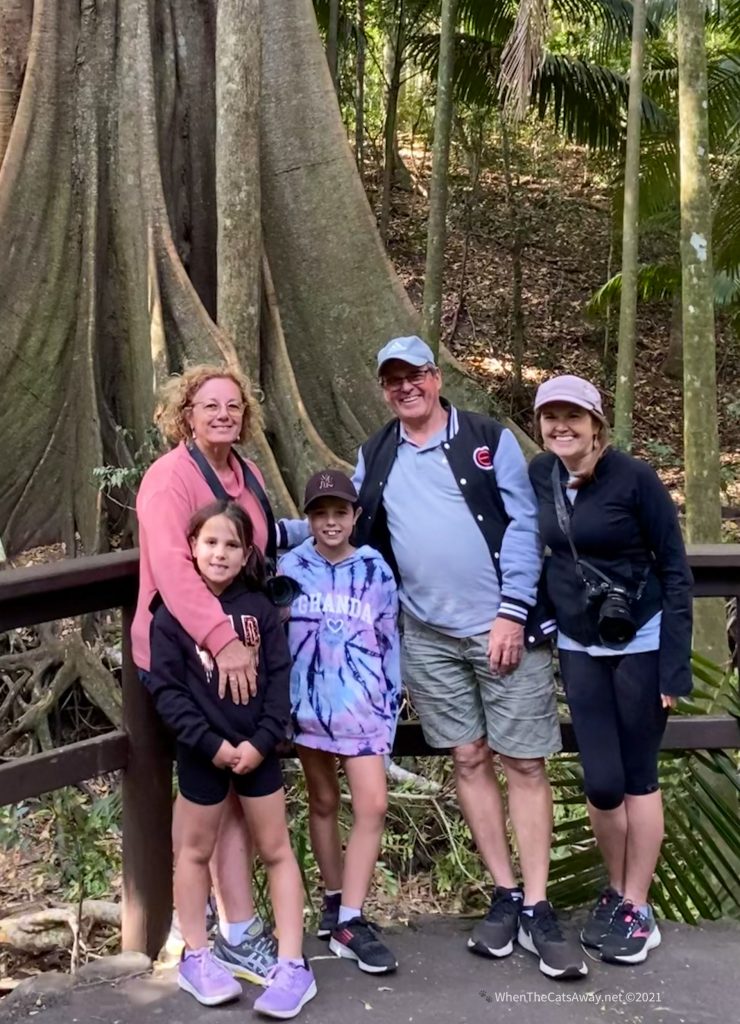
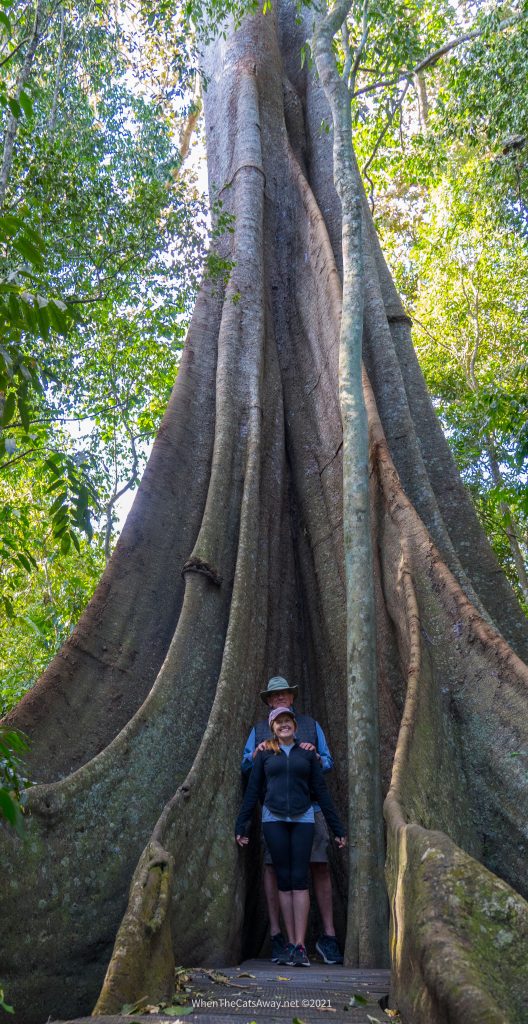
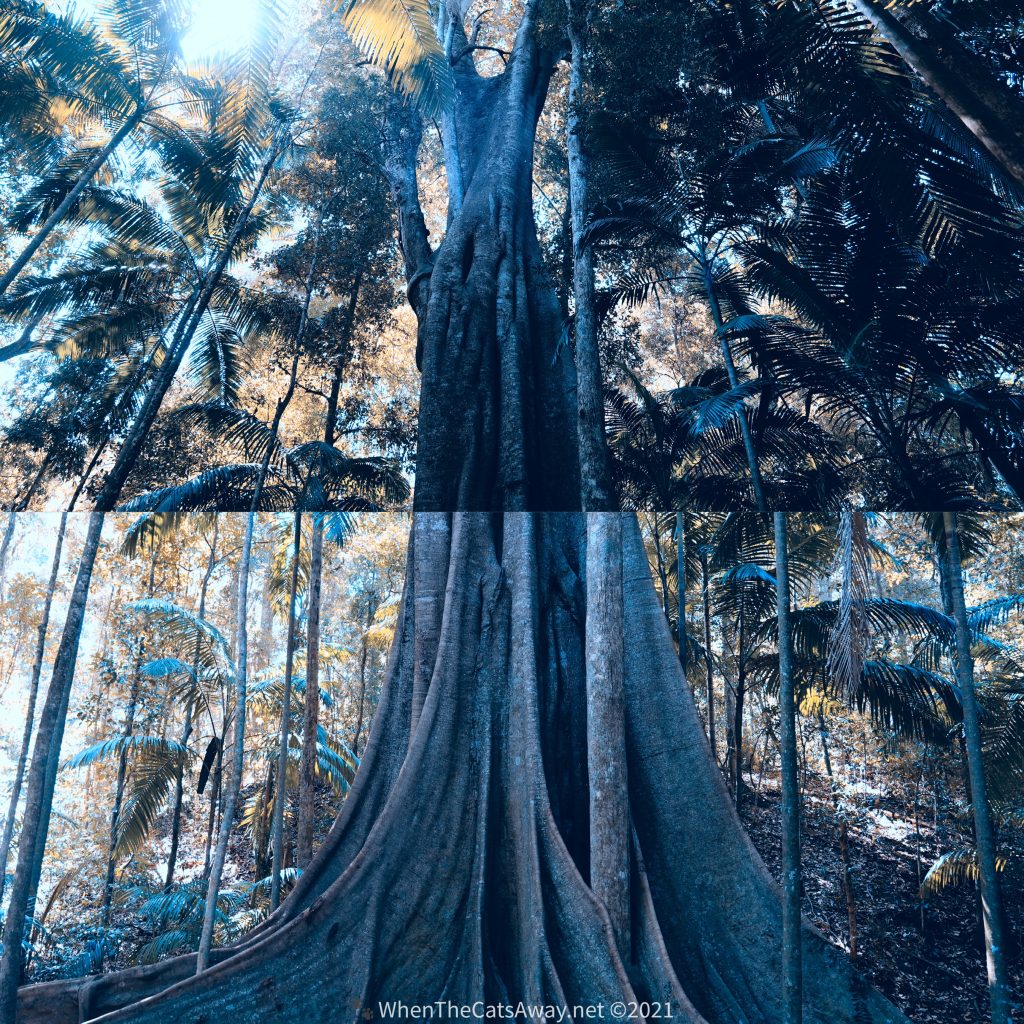
*
Mapleton National Park is located 24km west of Kenilworth and was the location for another trip during our week. We combined a couple of walks (map), hiking the short but picturesque Linda Garret Circuit and tagging on some of the Sunshine Coast Hinterland Great Walk (just shy of 60km in total – we only did a couple of kilometres each way!).
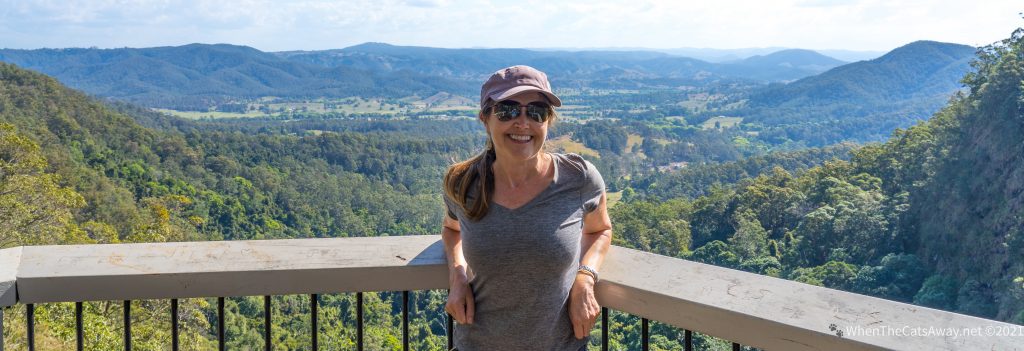
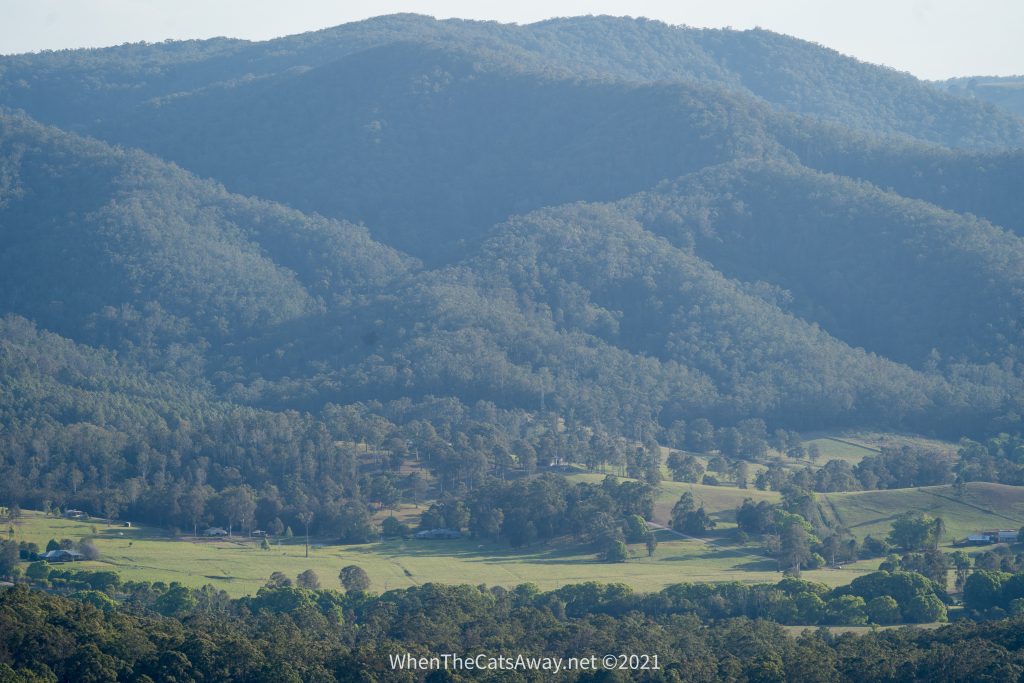
Amazingly I spotted another Tawny Frogmouth sleeping alongside the path – these nocturnal birds are not owls or related to them. They have a wide beak rather than hooked, designed for catching moths on the fly, and their feet are not talons, rather just designed for gripping a branch, more similar to a pigeon’s toes.
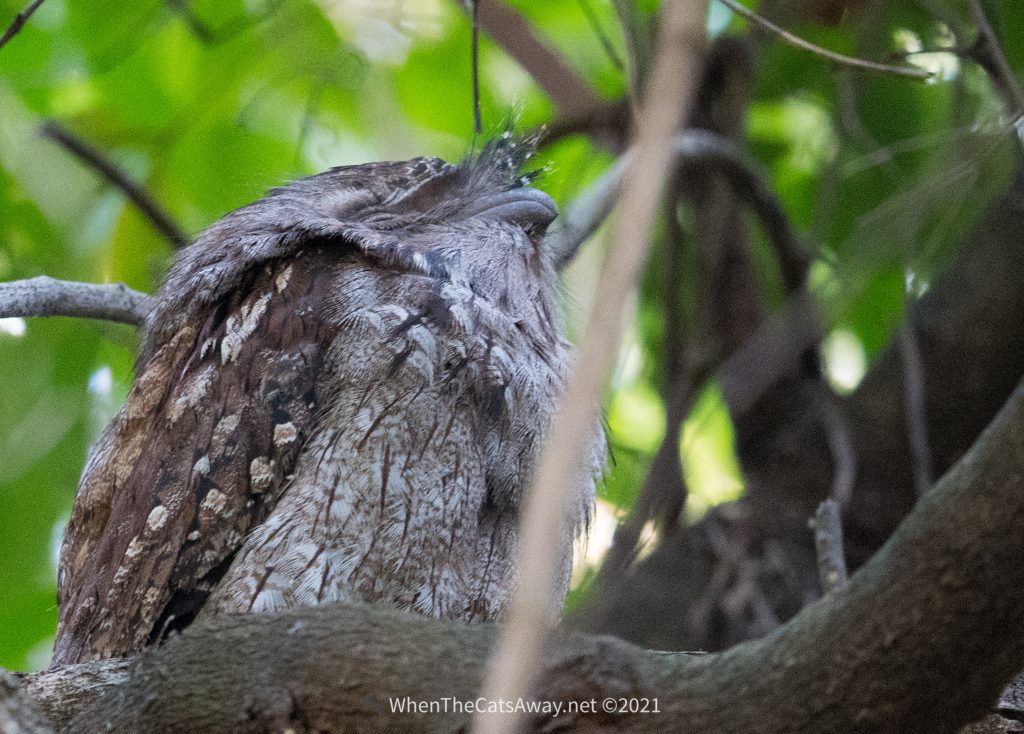
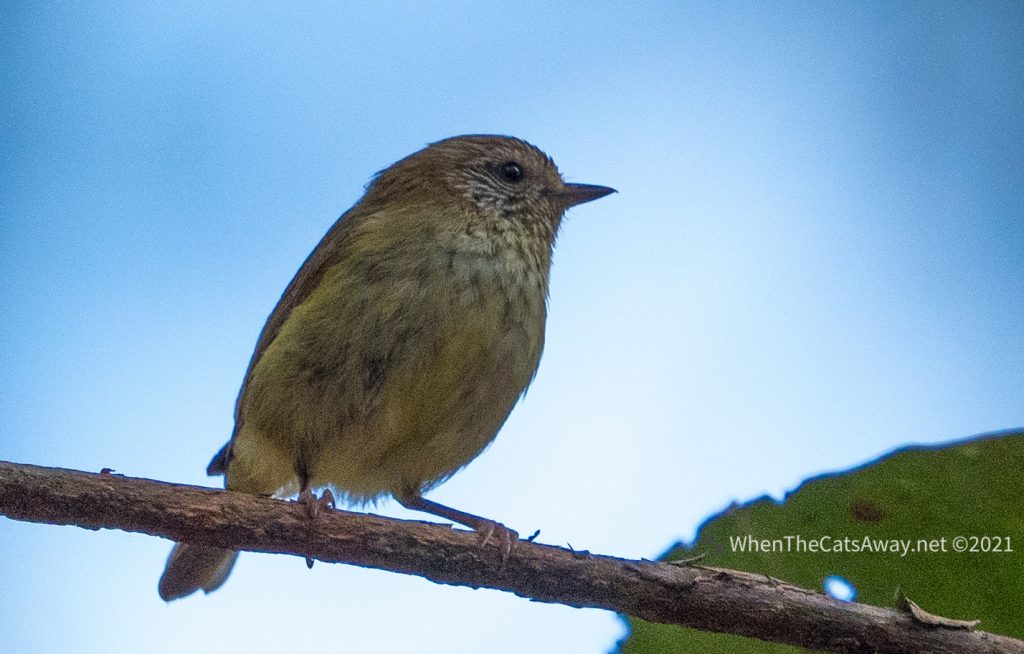
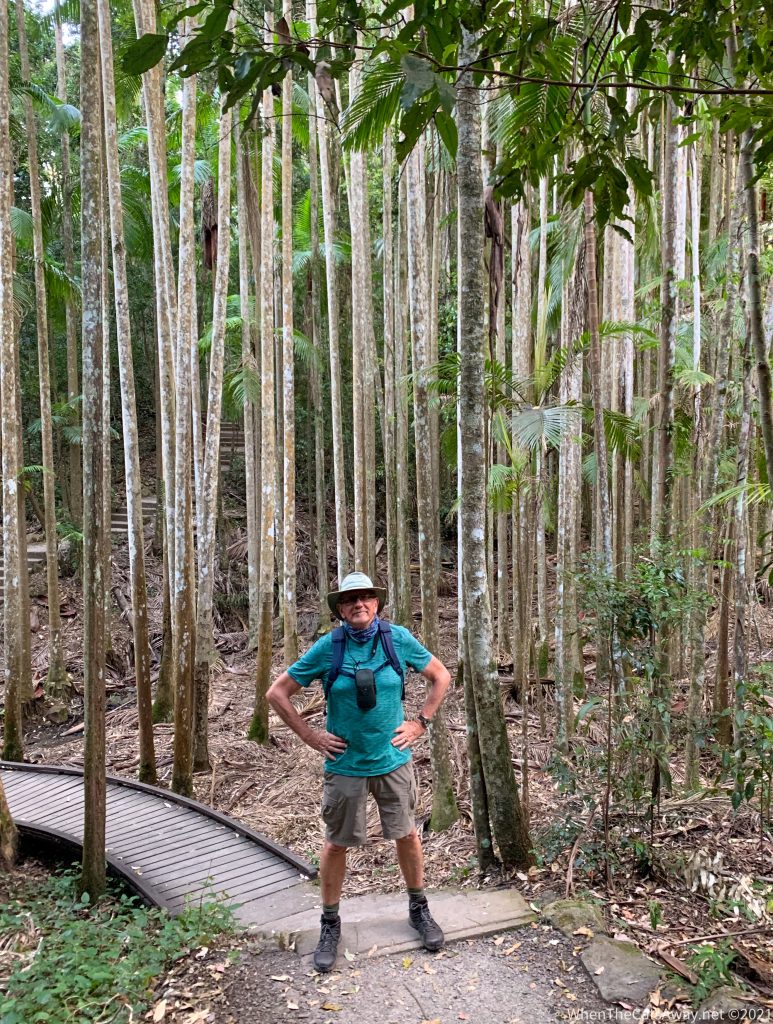
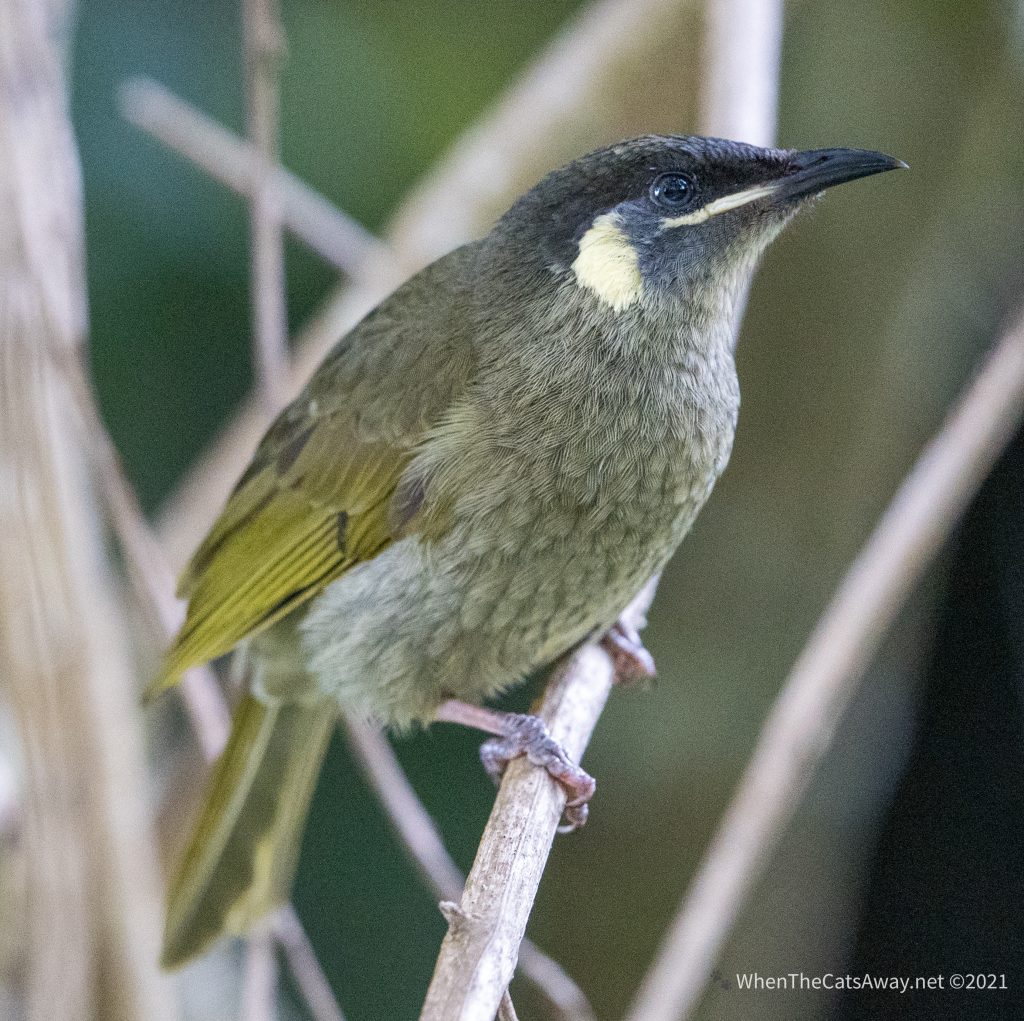
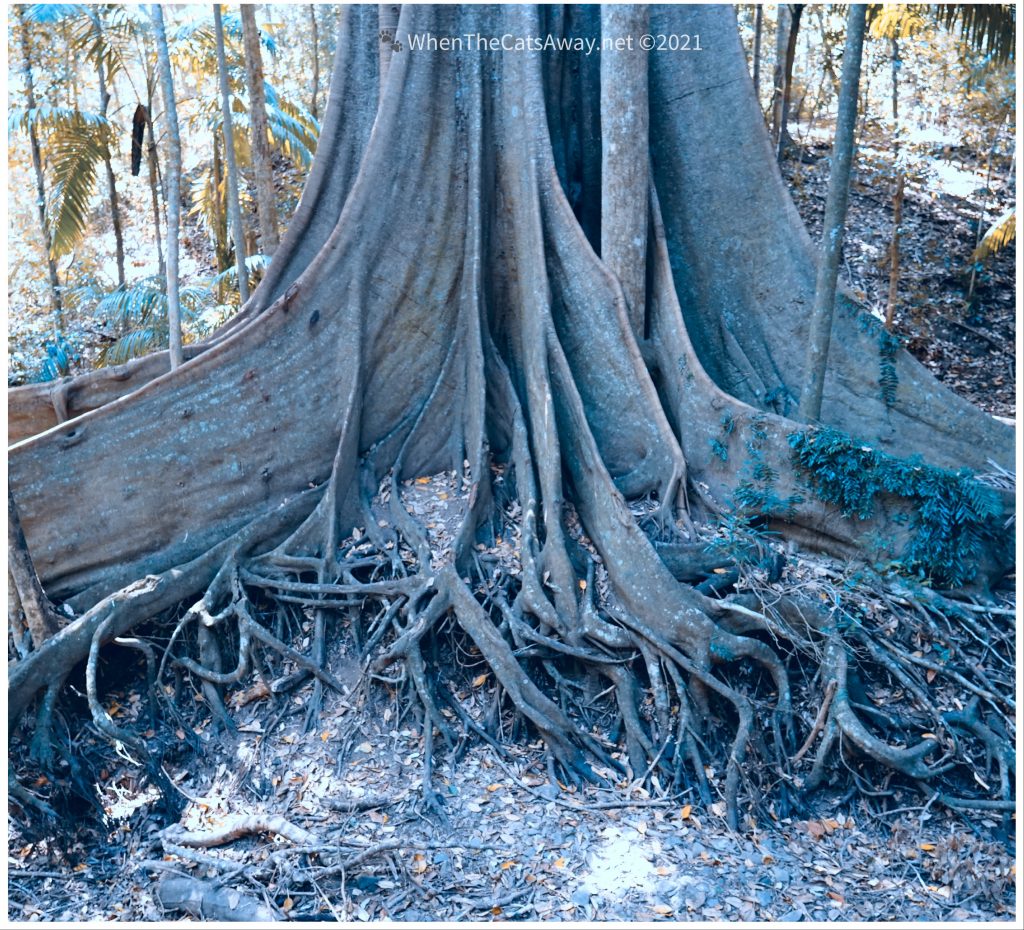
The walks in this area seemed to have fewer ground-dwelling birds, perhaps because the village is so close and domestic cats and maybe even foxes have killed them. There were plenty of yellow robins flitting through the trees though, chasing insects we disturbed on our walk.
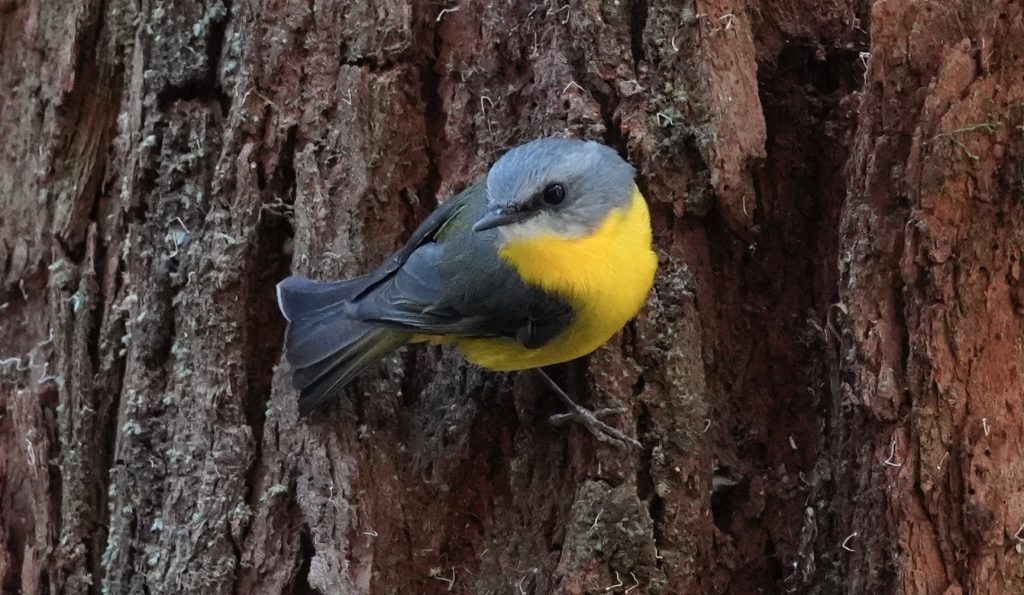
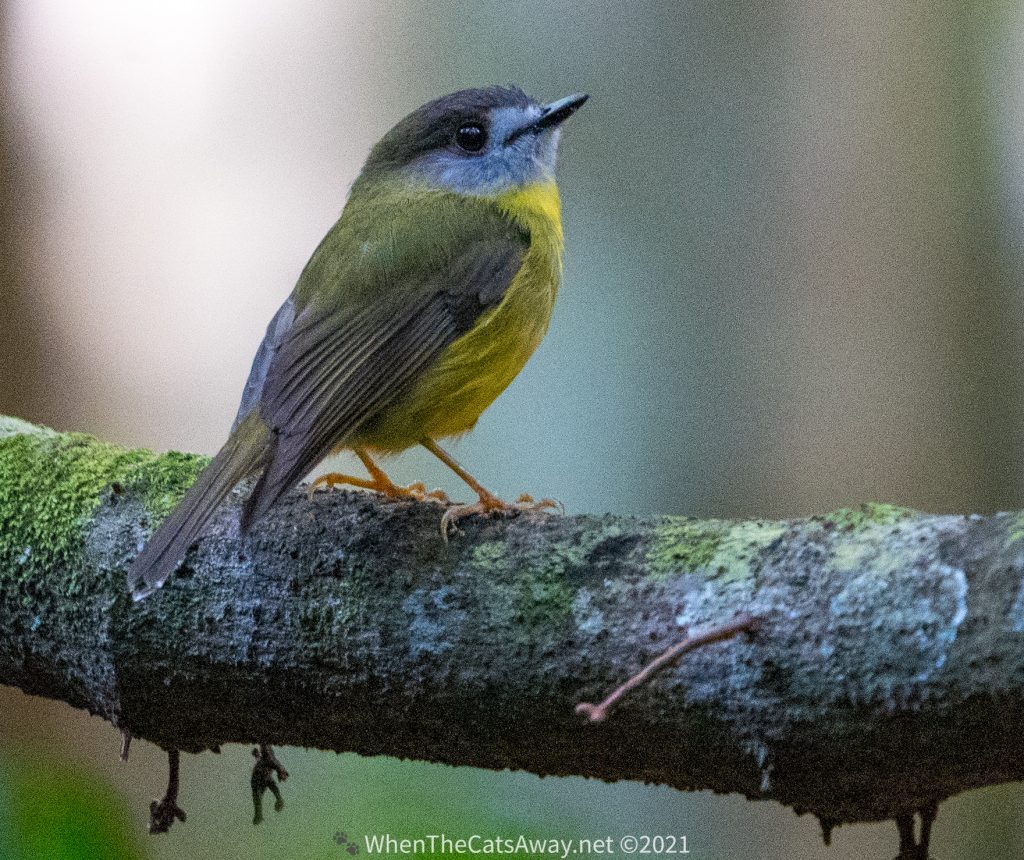
*
Conondale National Park is also not far from Kenilworth. Just a 20 minute drive and you reach a 4WD only track, where three water crossings deliver you to Boolumba Creek Day use area. From there you can start the Sunshine Coast Hinterland Great Walk or chose from a selection of shorter routes.
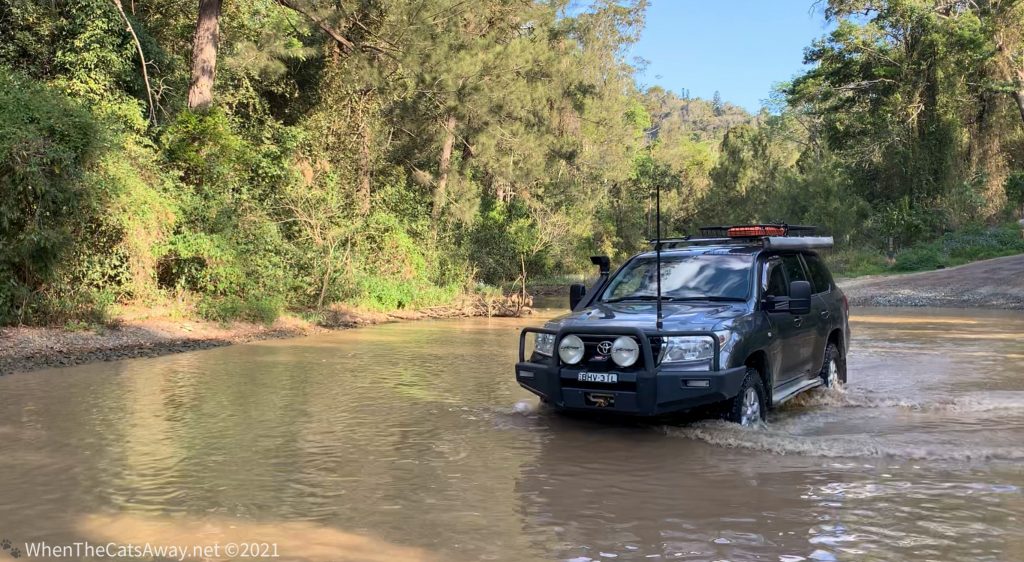
We visited on a couple of occasions, loving the area rich with untouched rainforest, the constant hum of insects and chatter of birds addictive.
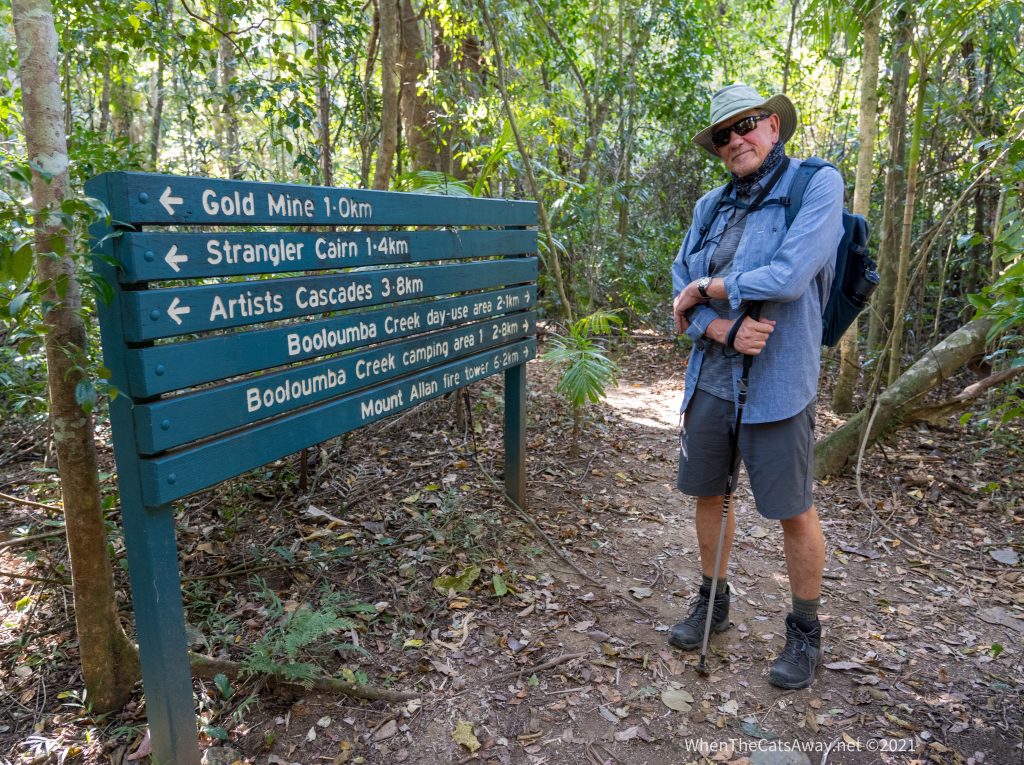
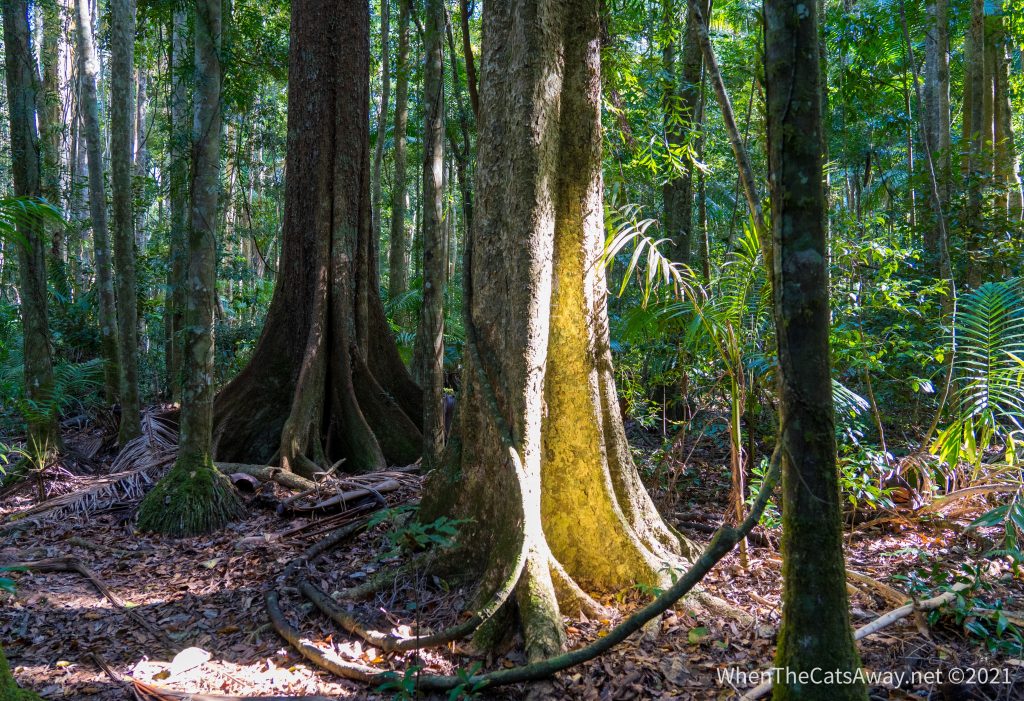
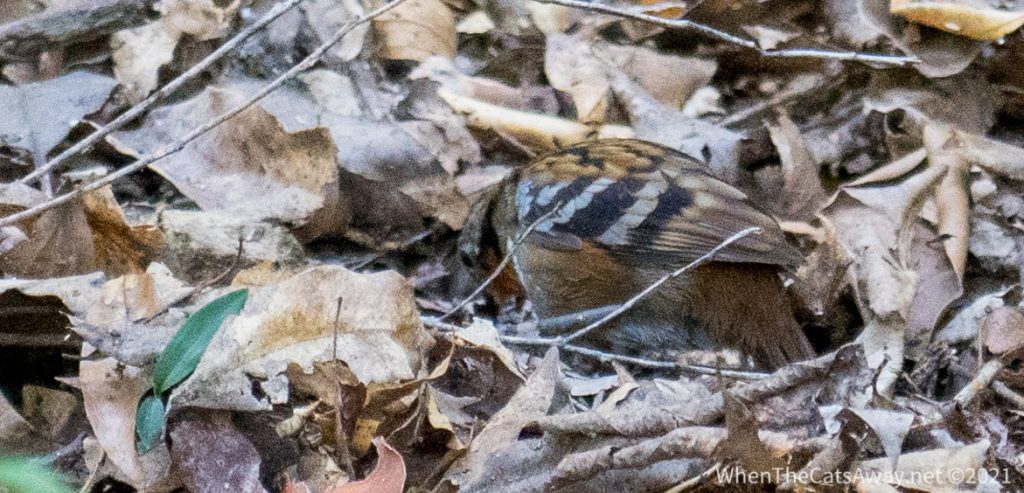
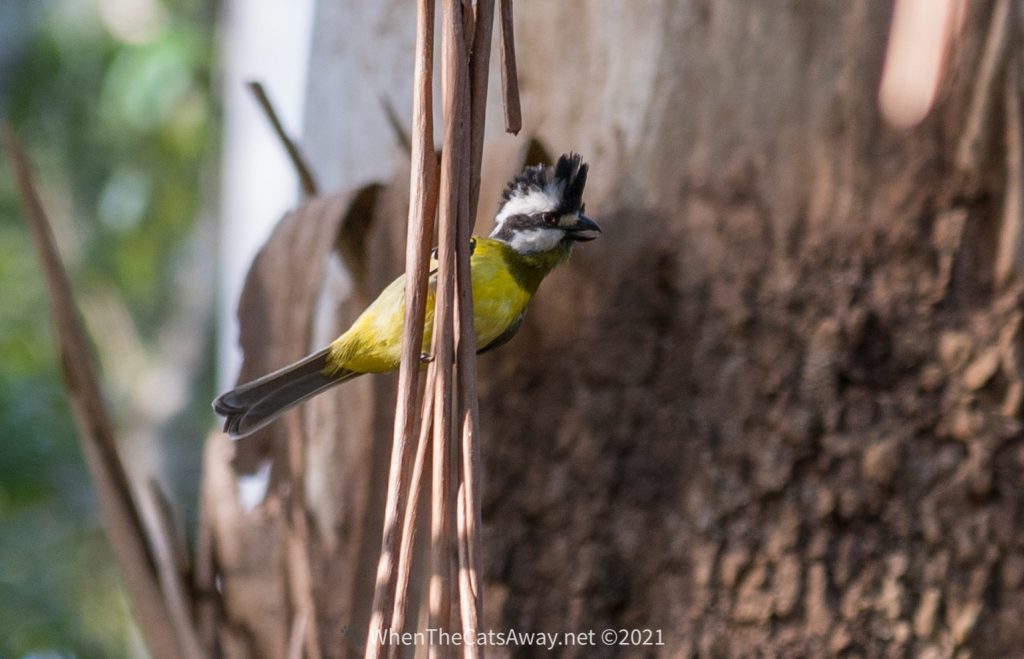
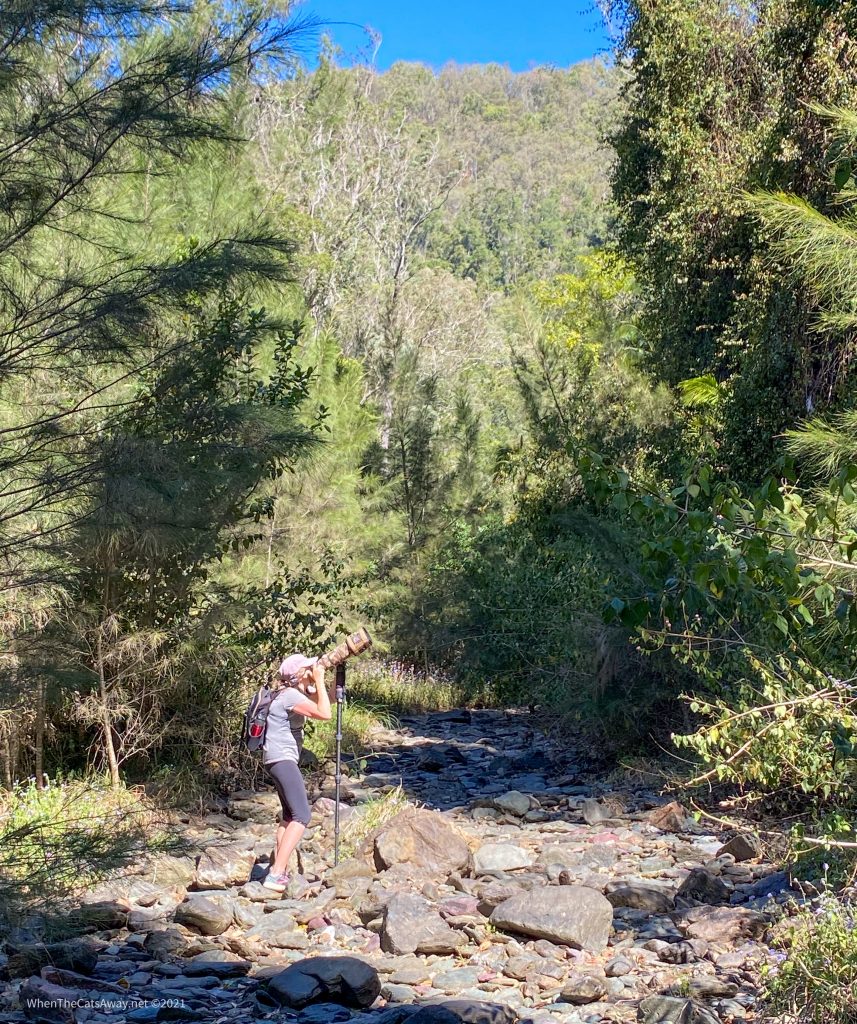
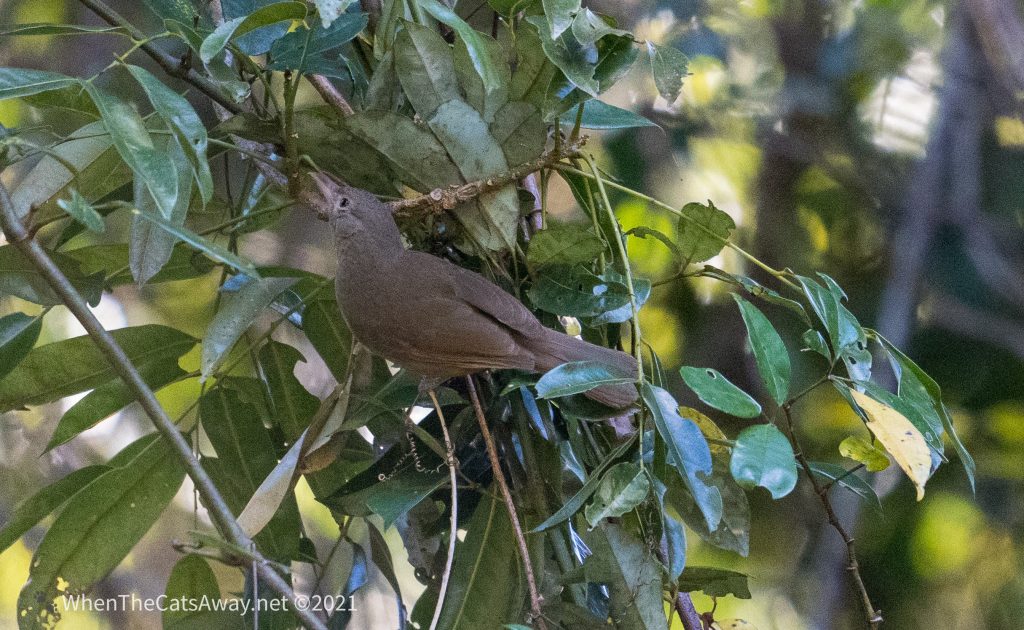
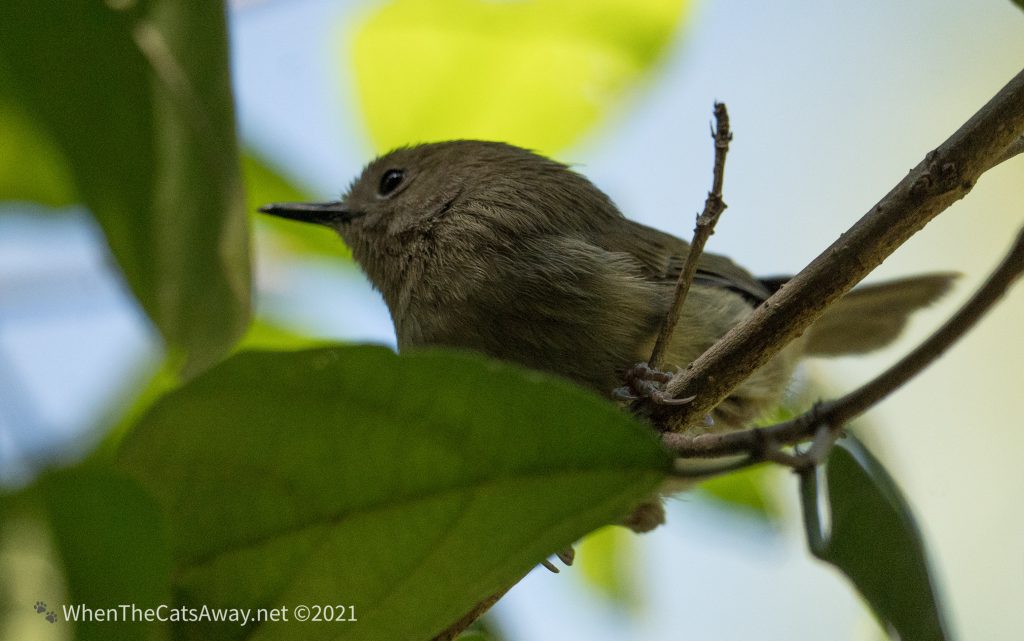
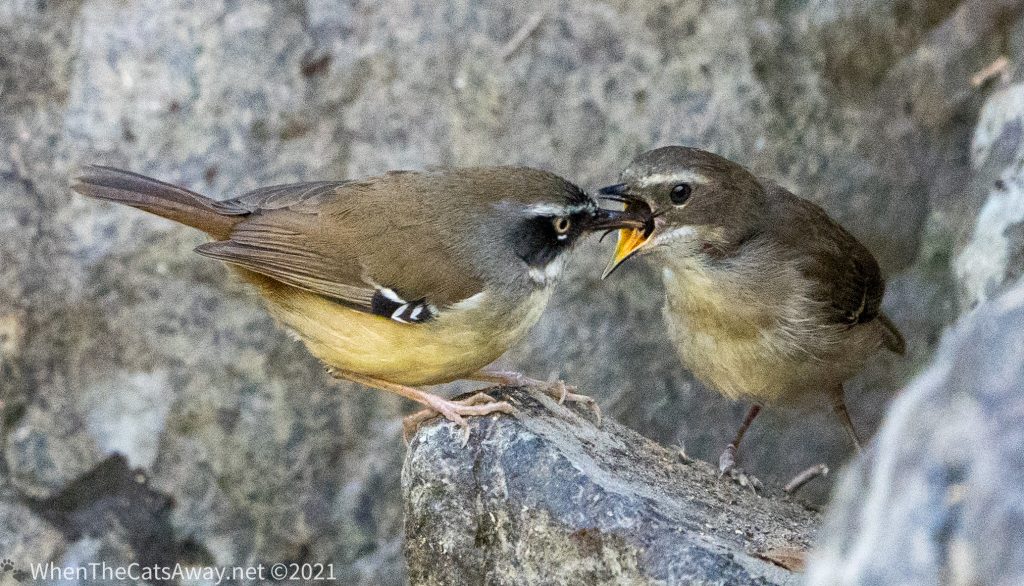
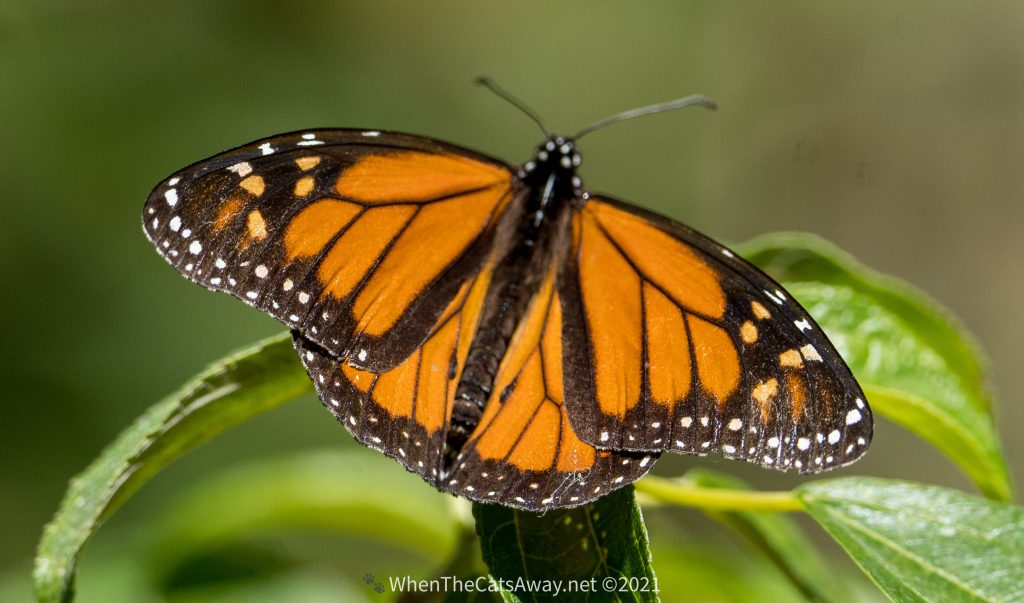
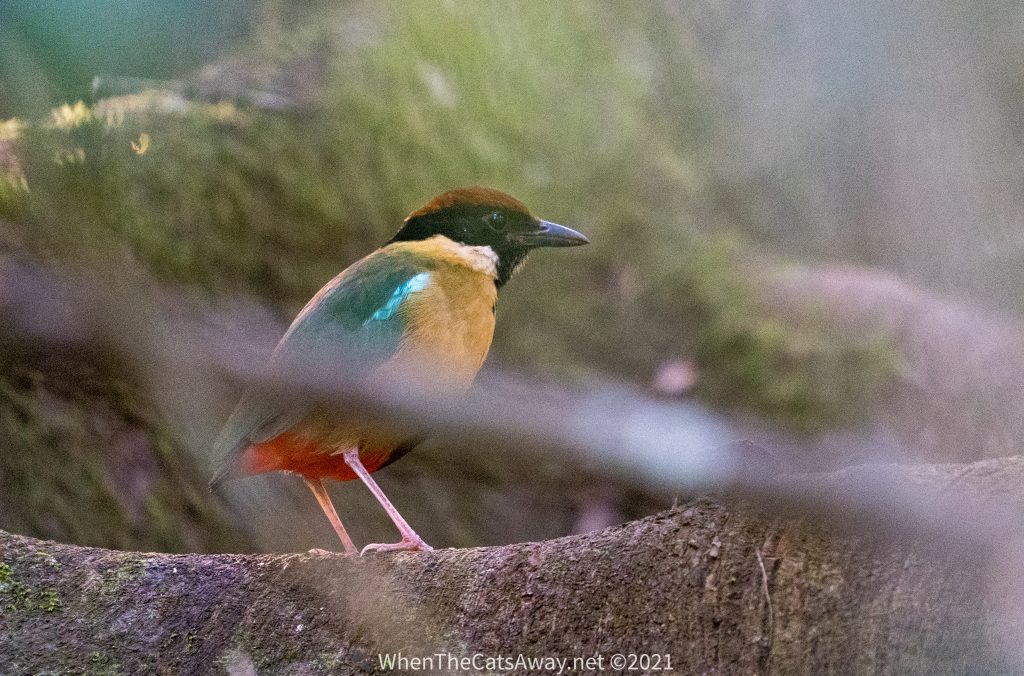
*
Imbil State Forest and the Charlie Moreland Campground are about a 15 minute drive from Kenilworth, and another location you can walk from. We combined two short walks, the Little Yabba and Piccabeen circuits which took us away from the busy camping area (we estimated around 100 people by the number of caravans, whizz-bangs (camper vans!) camper trailers, and tents) and over a small creek and into the forest. Despite the crowds at the campground, once we left the small day visitor car park and crossed the creek, we didn’t see another human for more than 2 hours!
The birdlife was prolific, starting with more Scalet Myzomelas feeding as we crossed the water, and continuing as we spotted Golden Whistlers, fantails, Fairywrens and more.
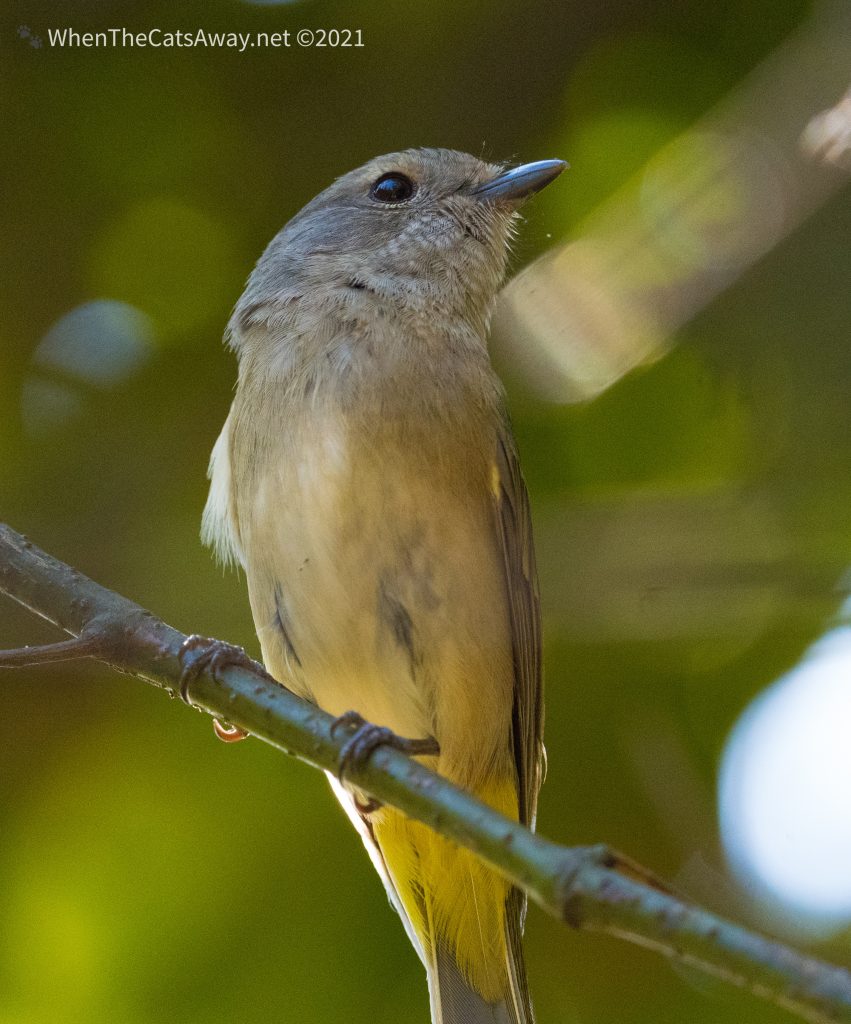
It didn’t look as though many people had recently taken the longer Piccabeen circuit, as we had to clamber over a recently fallen tree to continue round. It was worth it though, with several species of bird in the forest, and the temperature cooling as nature’s air conditioning kicked in.
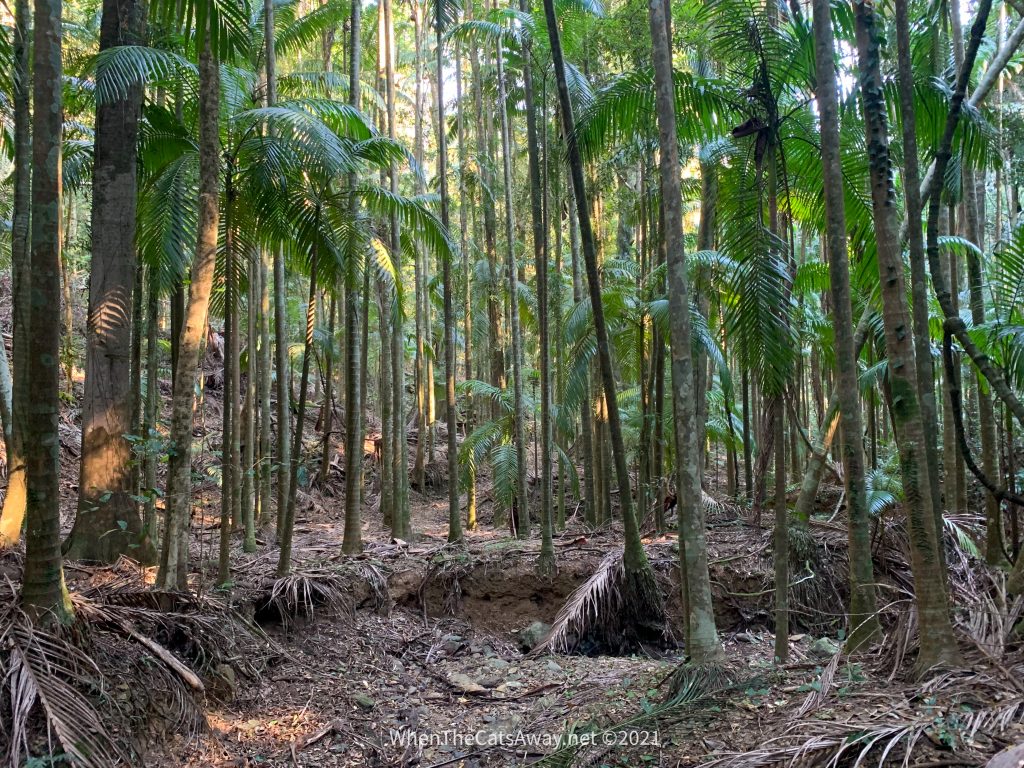
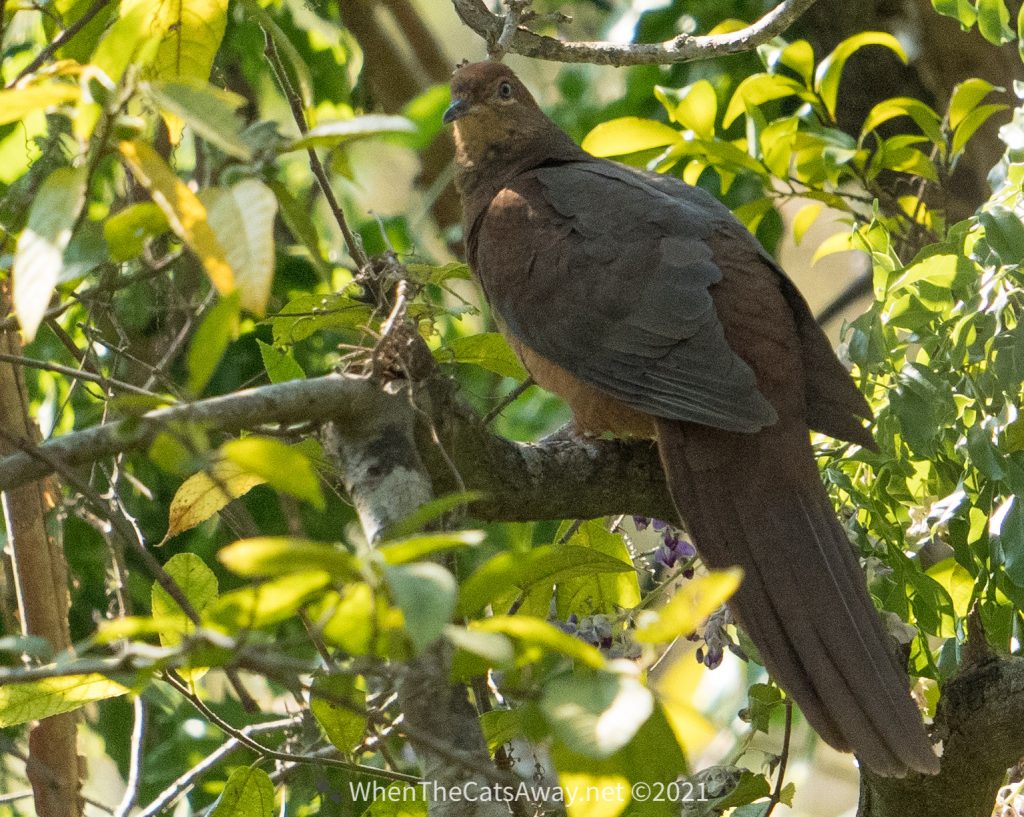
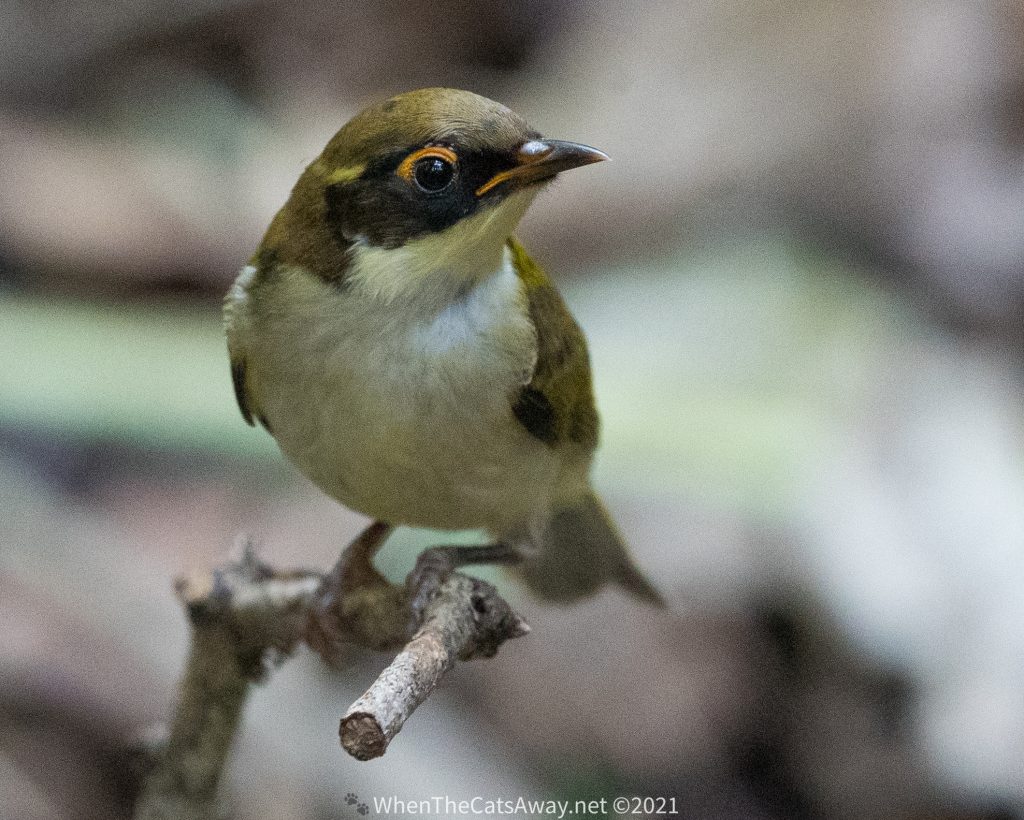
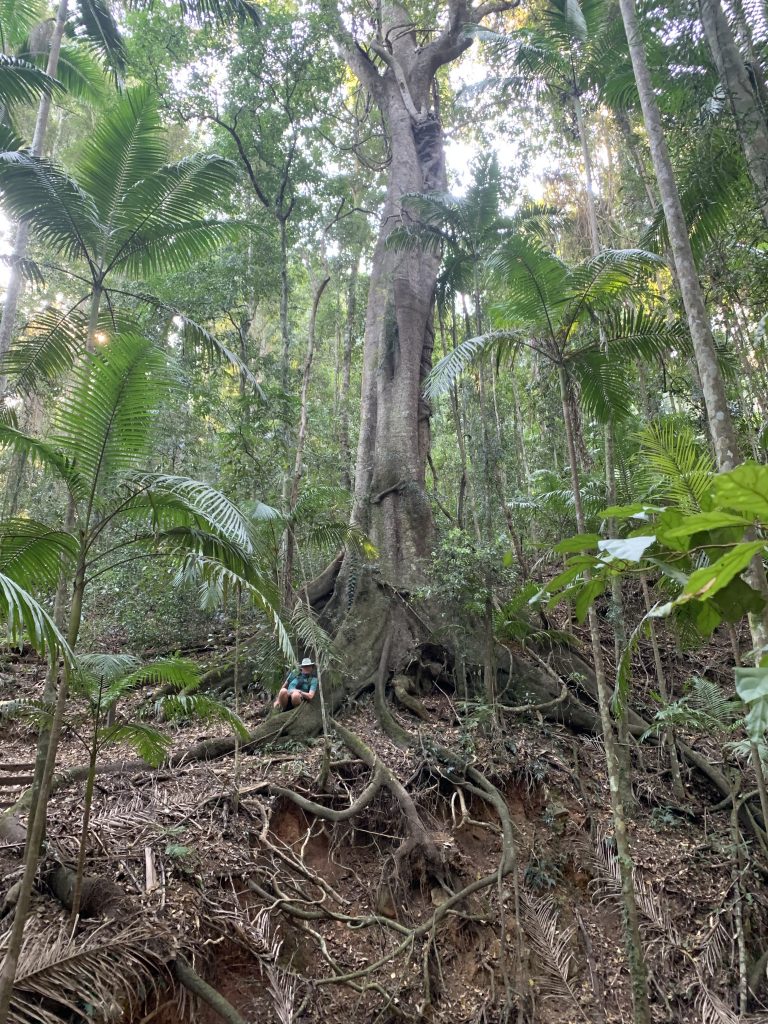
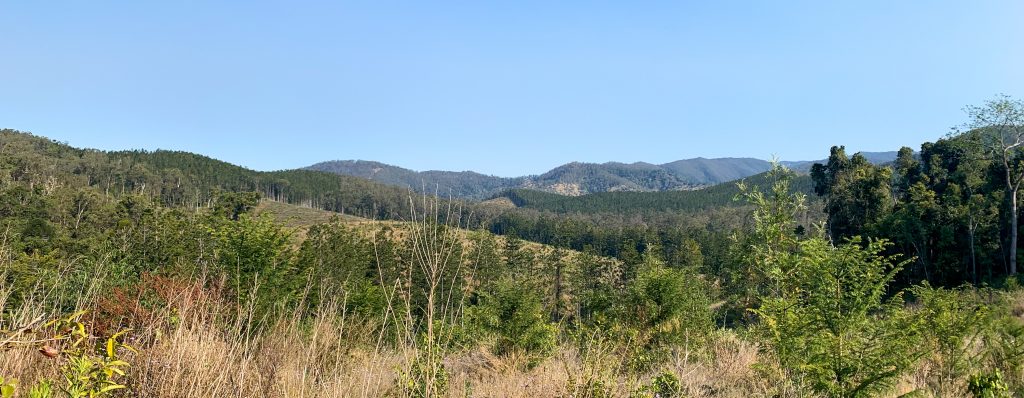
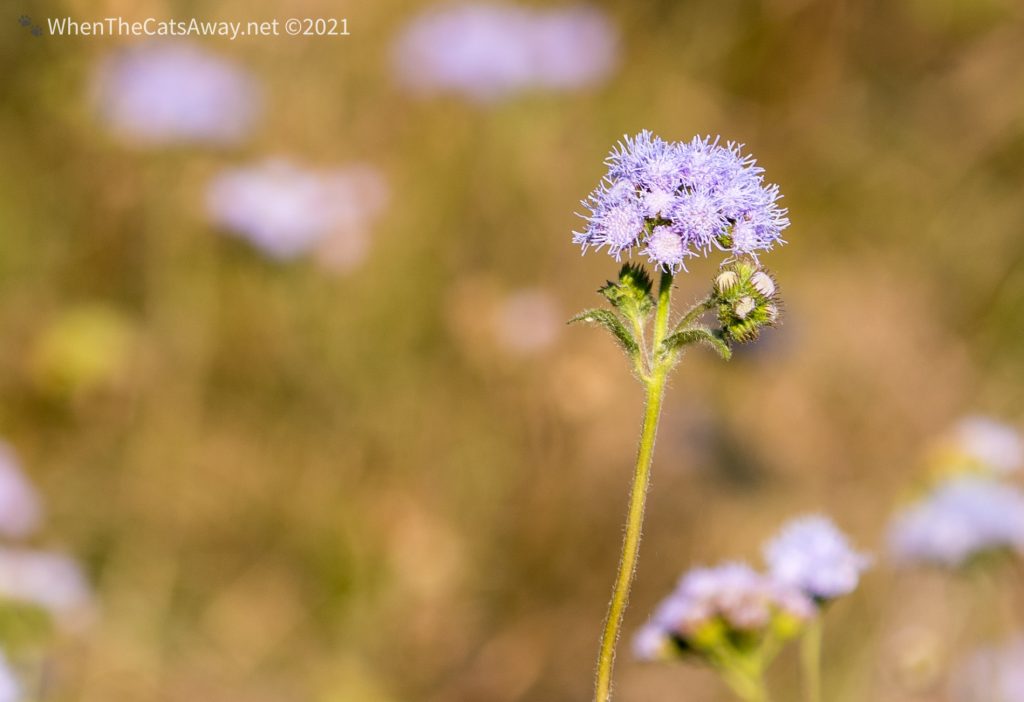
*
On Friday we had a coincidental surprise visit from our friends Carol and Nick Gray, who had (unbeknownst to us) been having some work conducted on their caravan in Coolum Beach, and decided to camp here a few nights once they had their van back. We first met them when we were staying in the Margaret River in Western Australia back in 2017 on our first lap around Australia when they were interested in buying a. Zone. We showed them around our van and Mr A did such a good sales job they ended up buying one!
Although we have met up with them on several occasions over the years, this was the first time we had seen their new van, ironically on the same day we heard we had officially sold ours. It felt like our Australian travels had come full circle as we once again shared food and wine with our travelling friends.

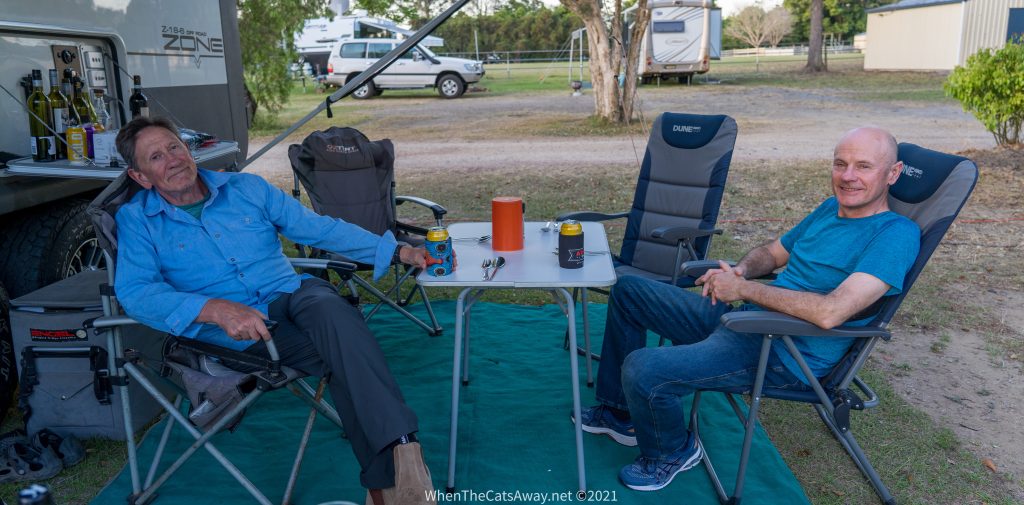
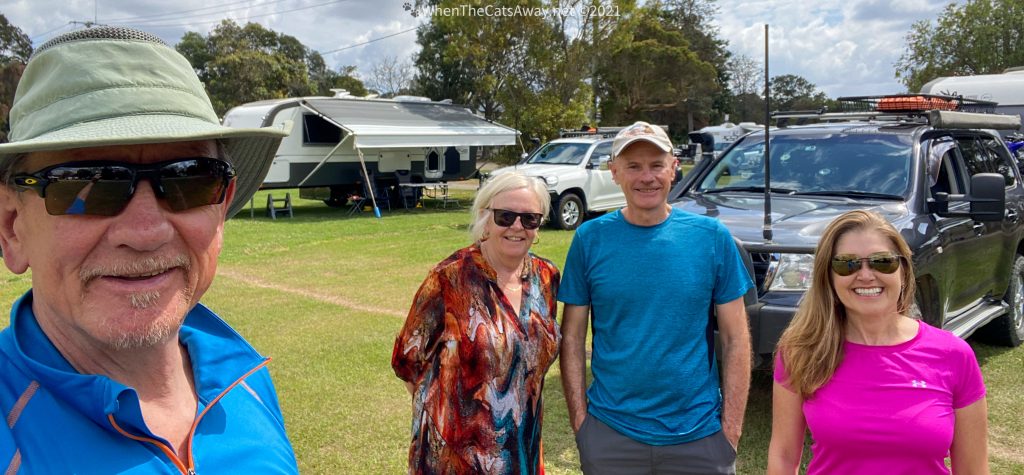
We enjoyed a couple of fun evenings with them before we headed off for our final week in our home on wheels.
🐾🐾
I conclude my post with a poem which was displayed at a reserve near the Fig Tree Walk, which feels quite poignant at this time when our life and travels in Australia are nearing the end.
We are certain there will be ‘boulders’ in our future, as there have been in our past. It is always good to be reminded that these boulders do fade with time and become much smaller issues, with somewhat smoother edges.
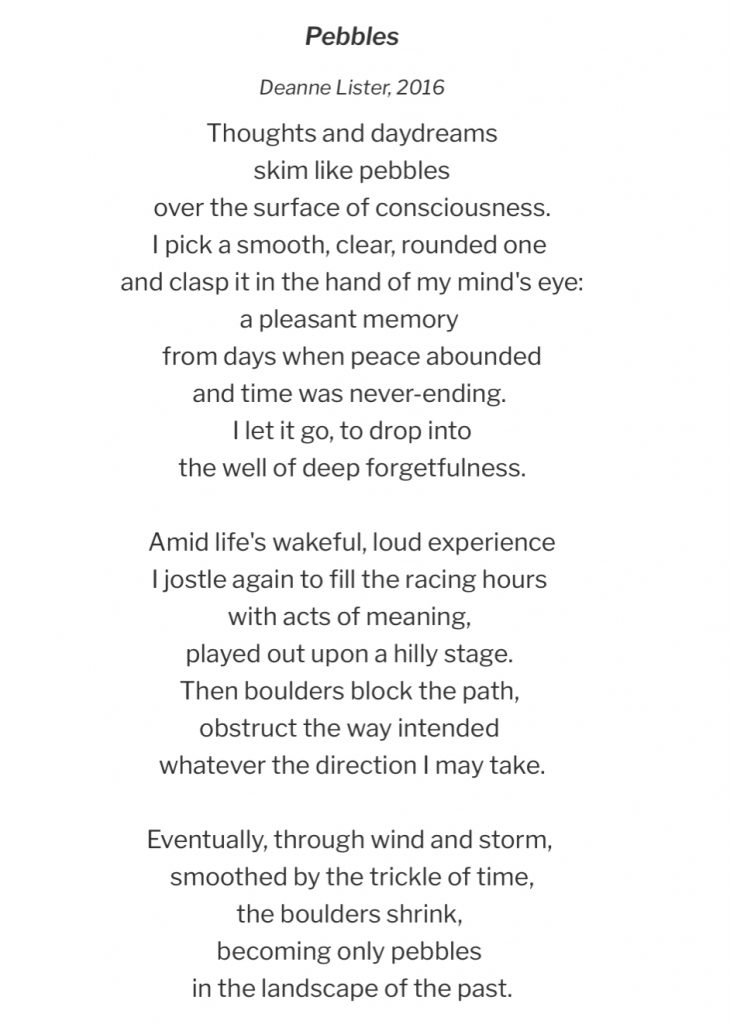
*

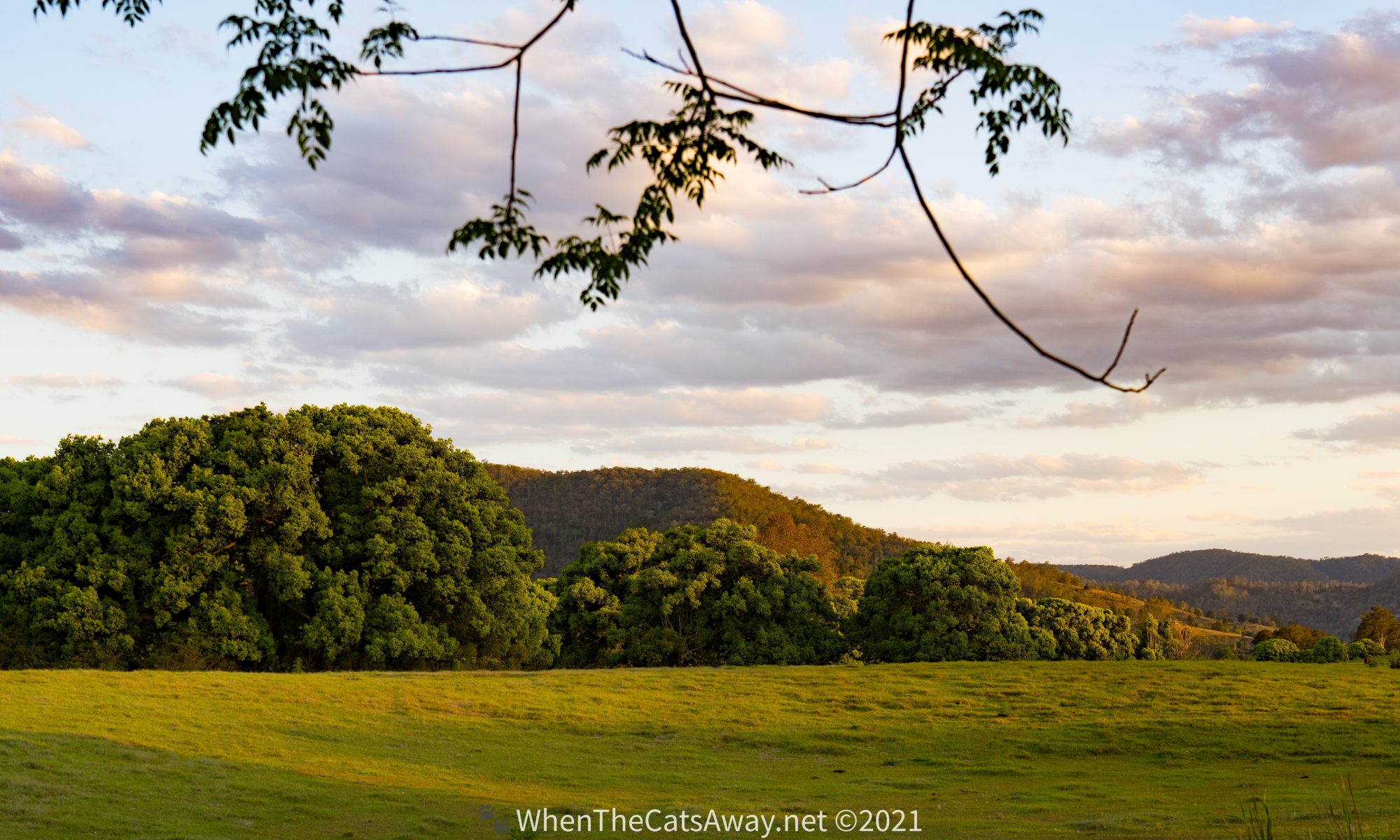
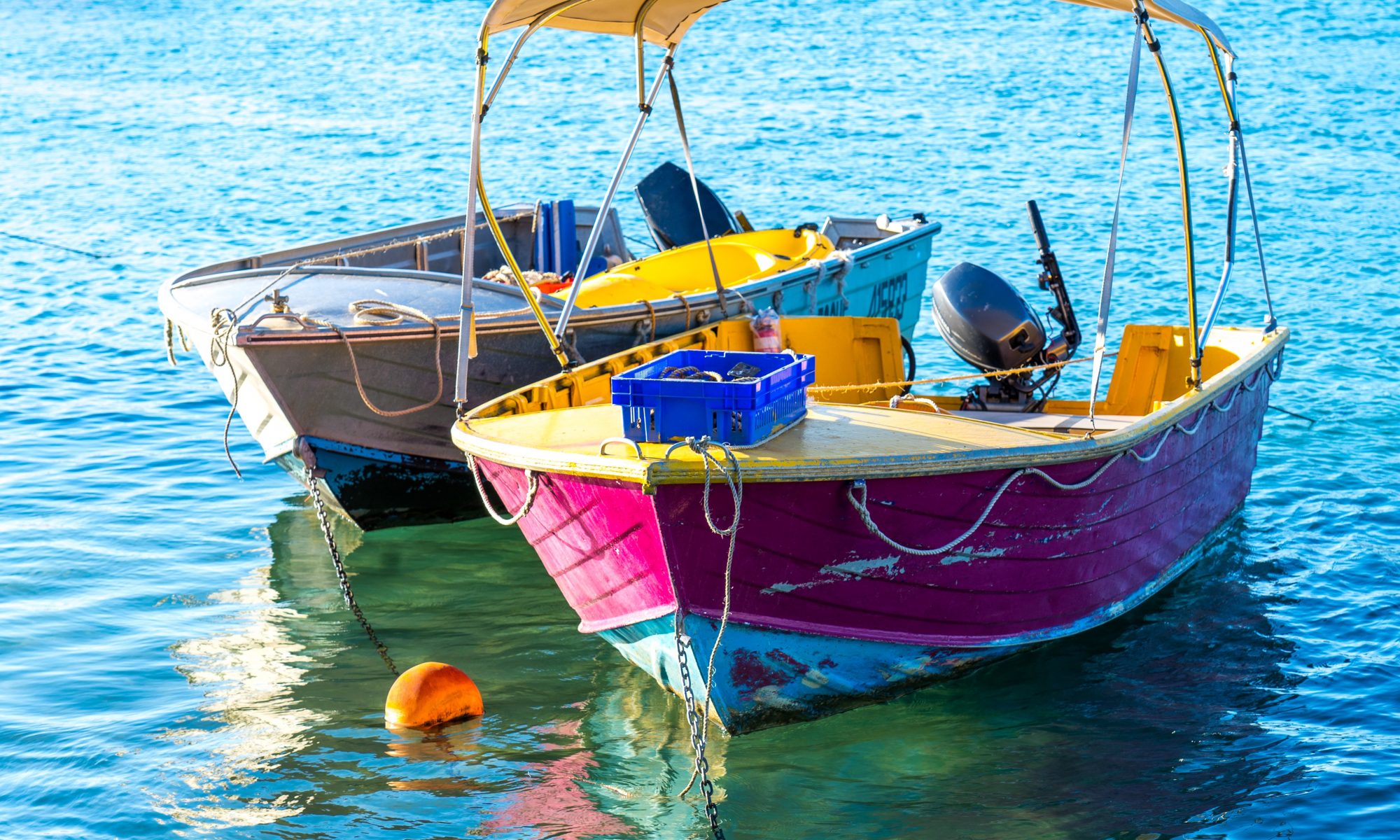
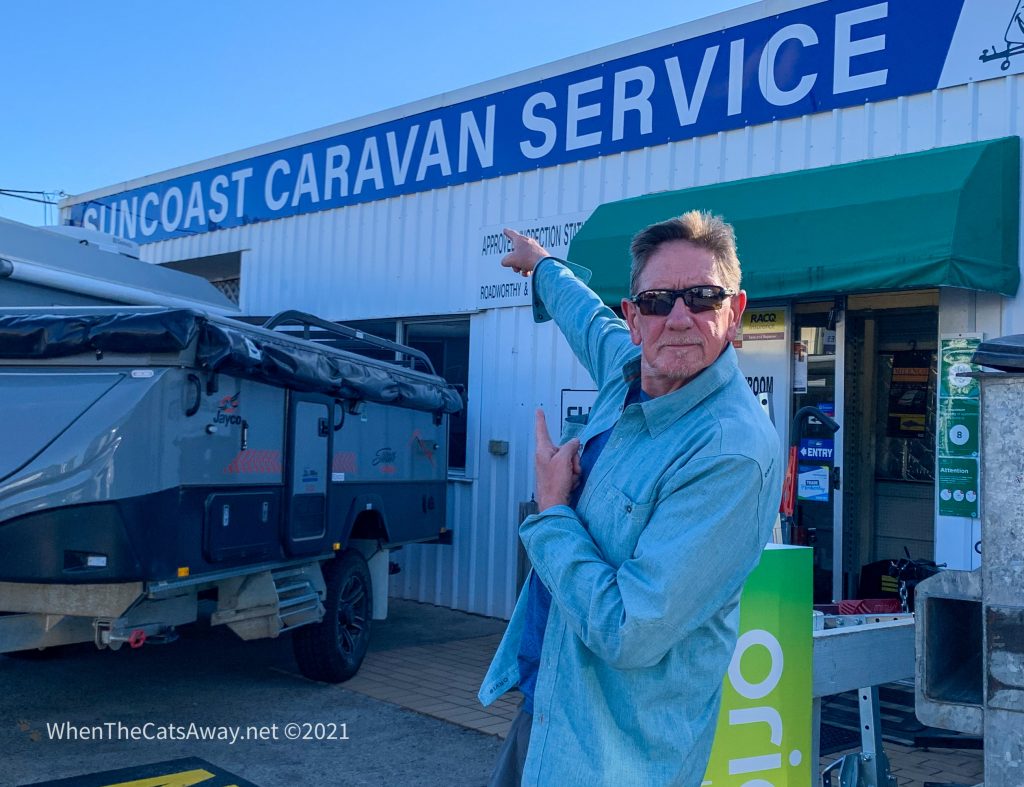
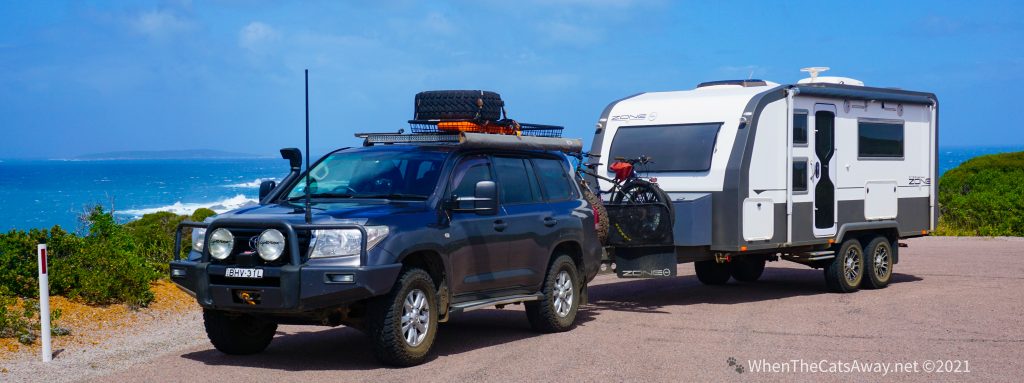
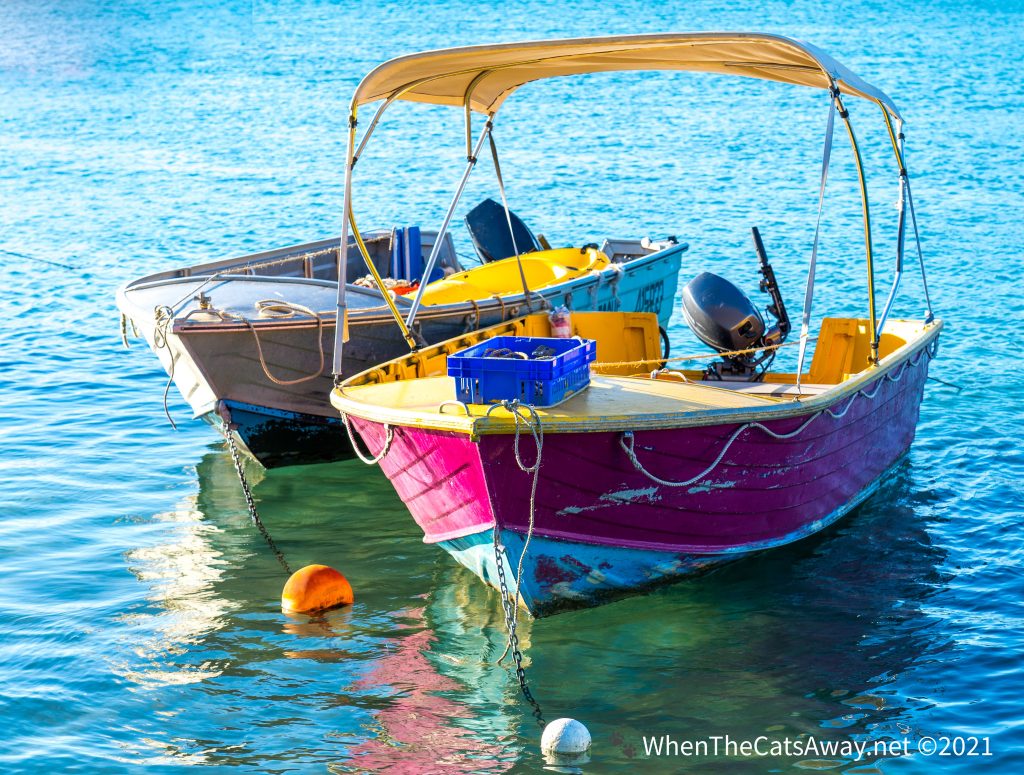
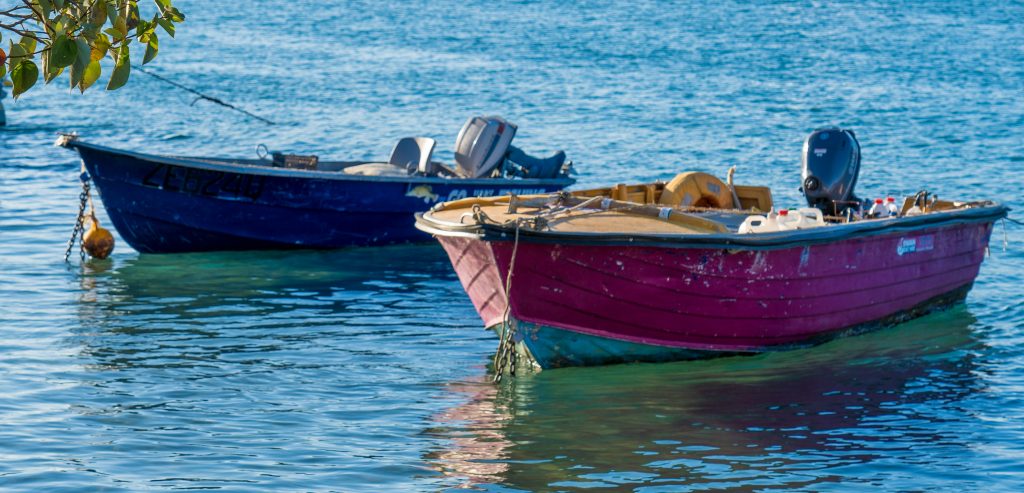
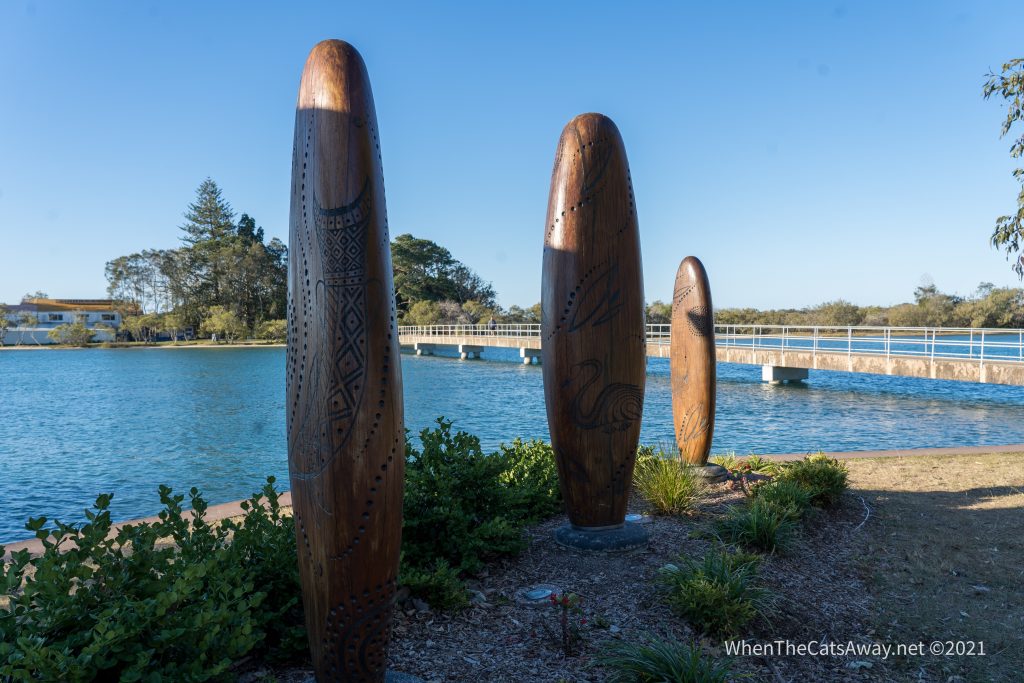
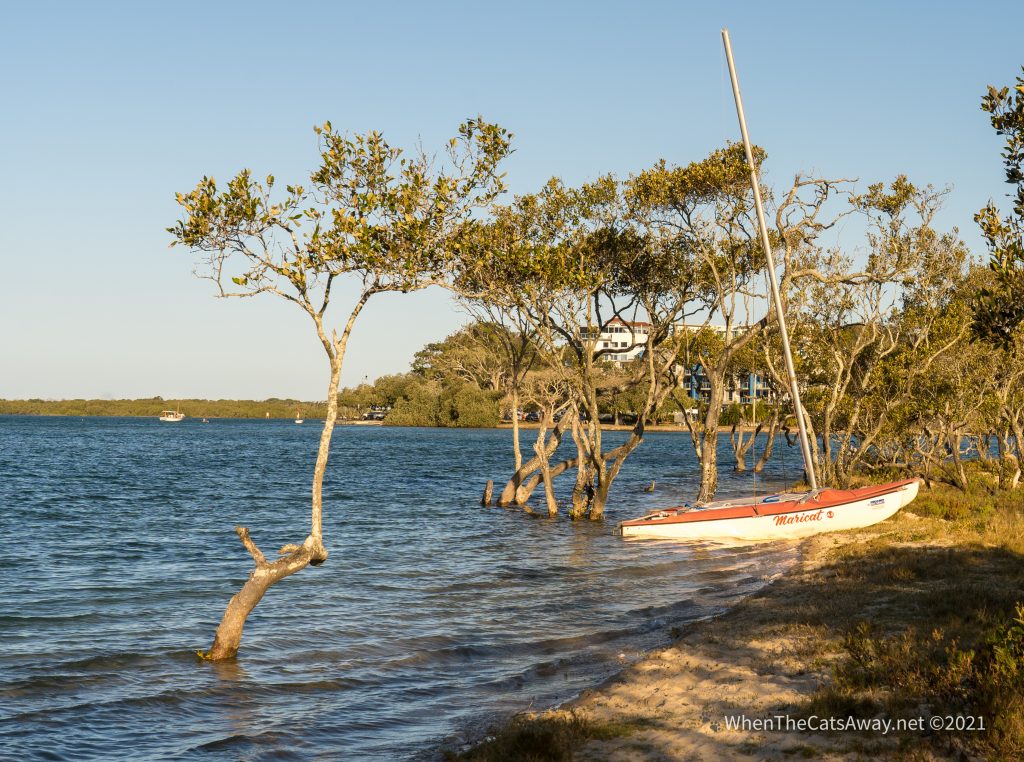
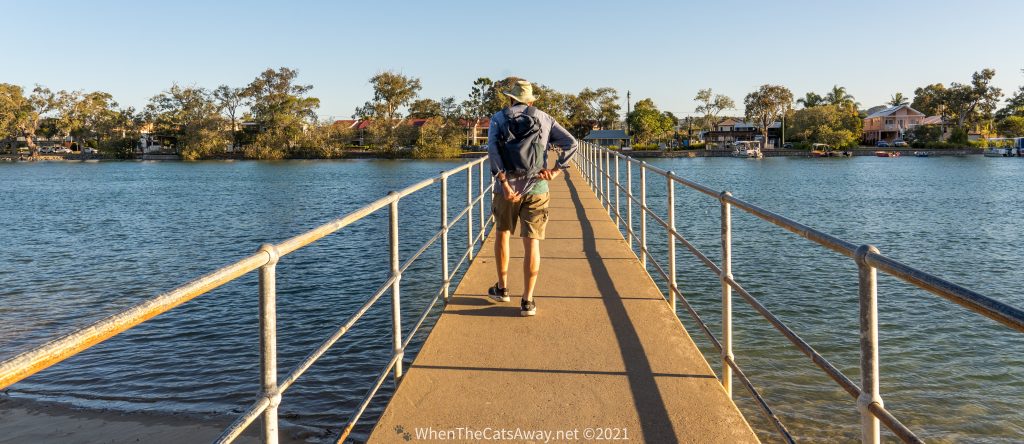
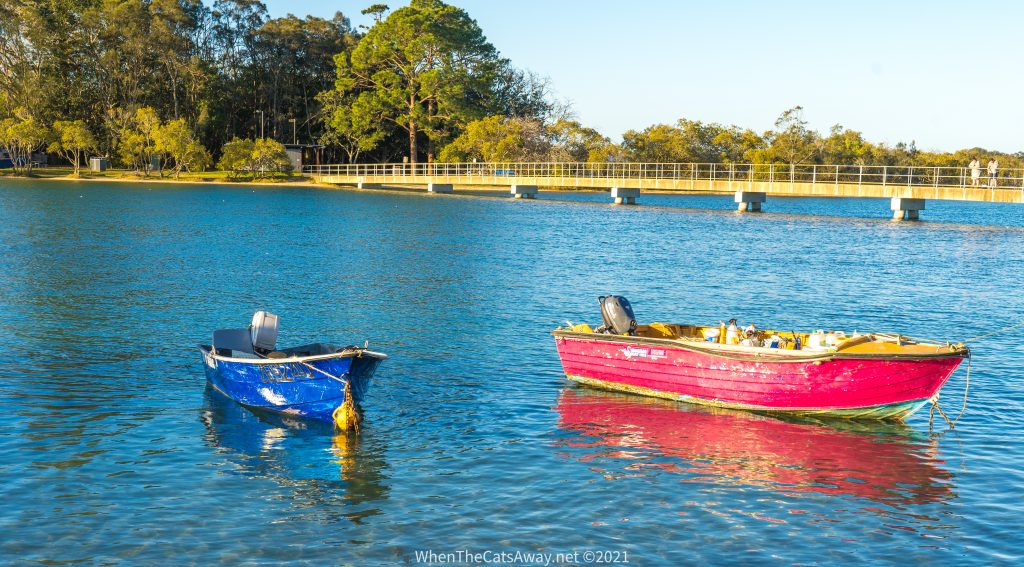
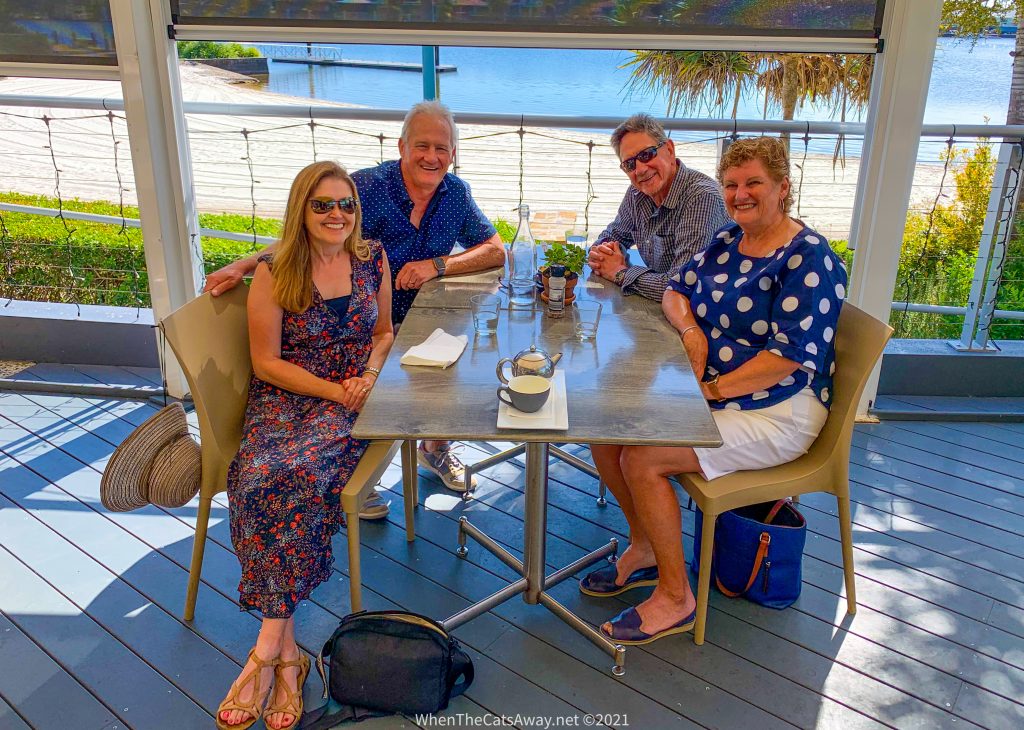

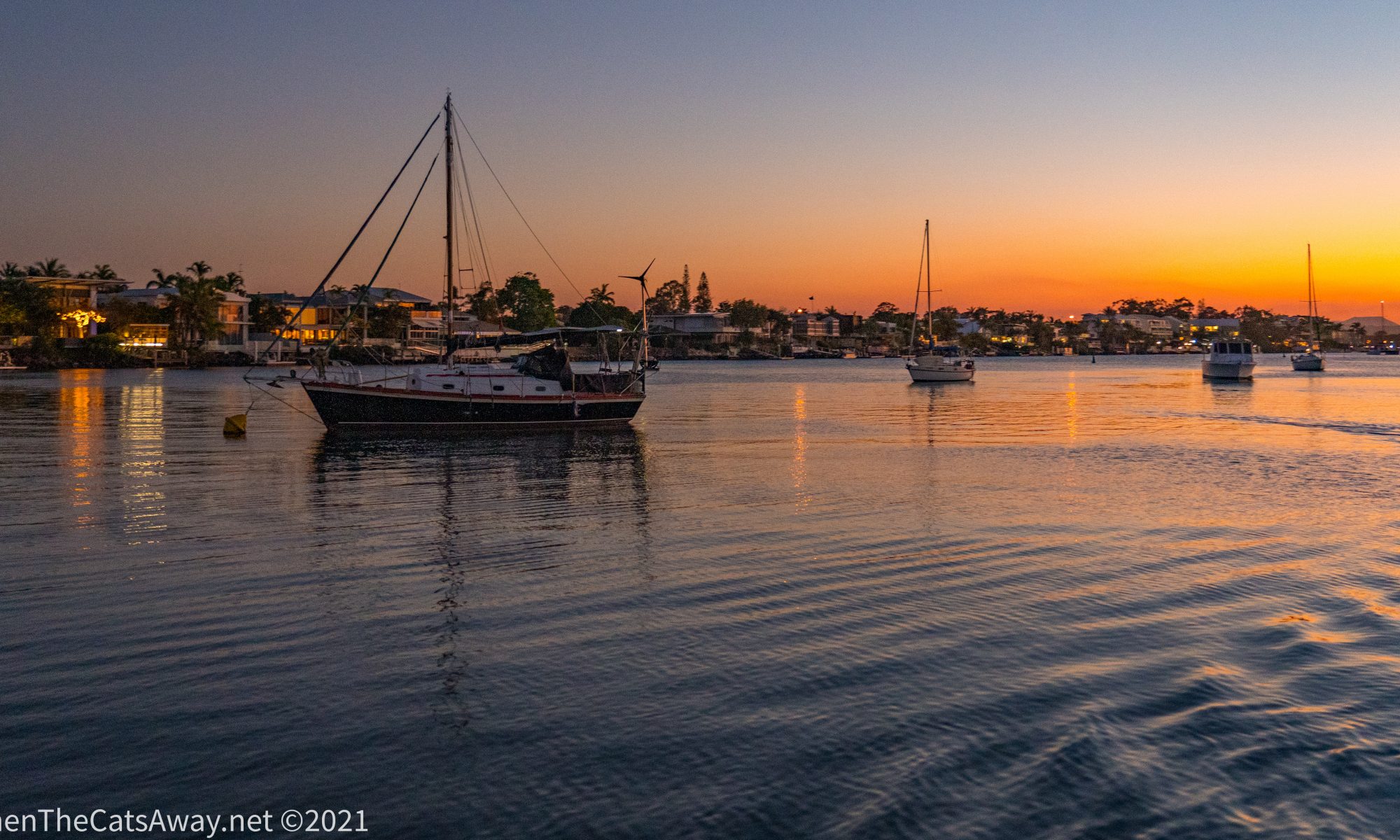
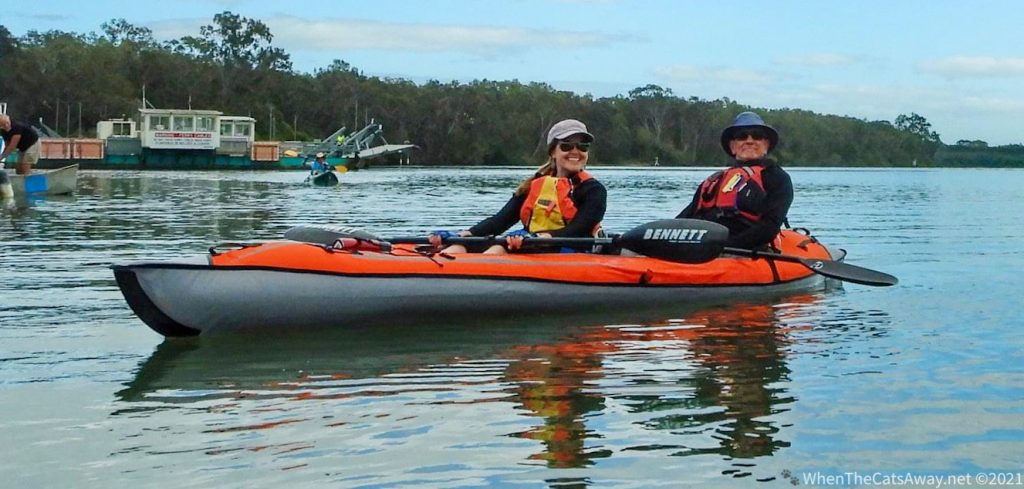
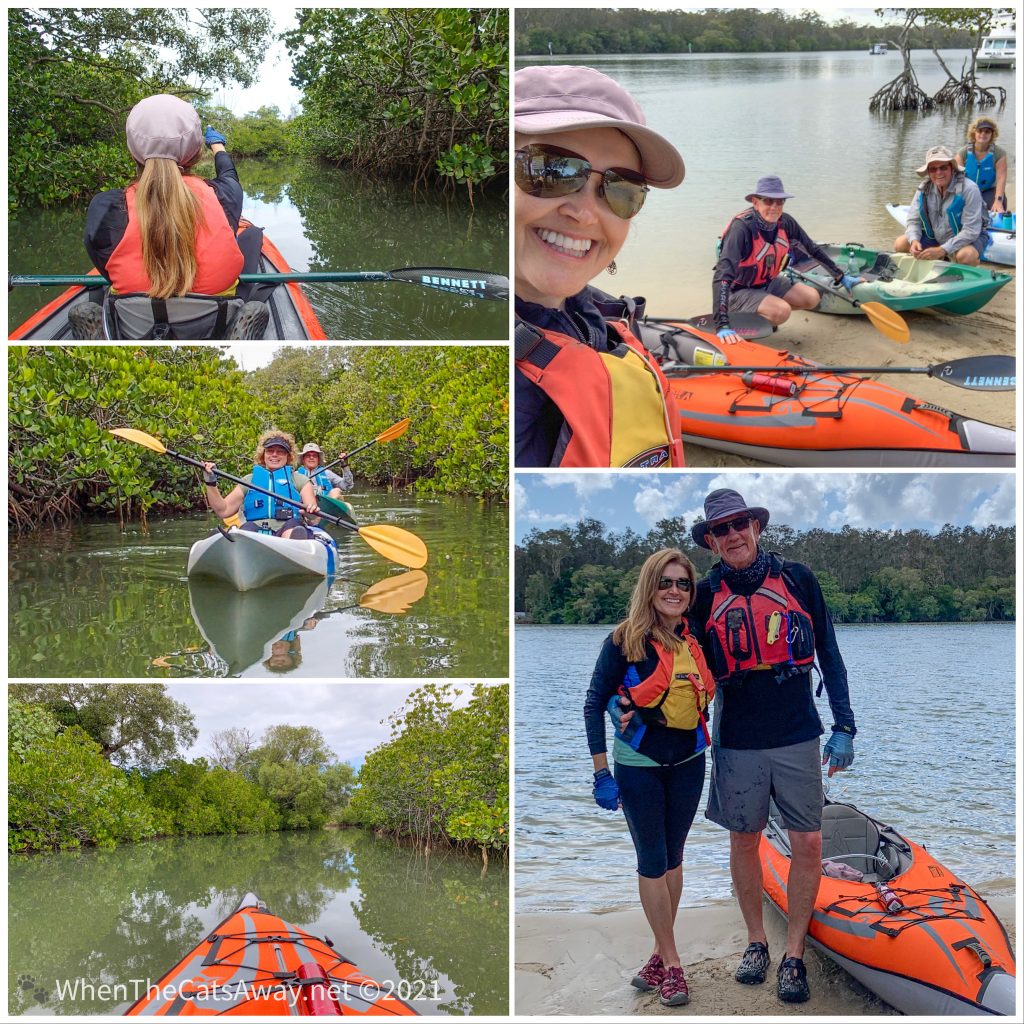
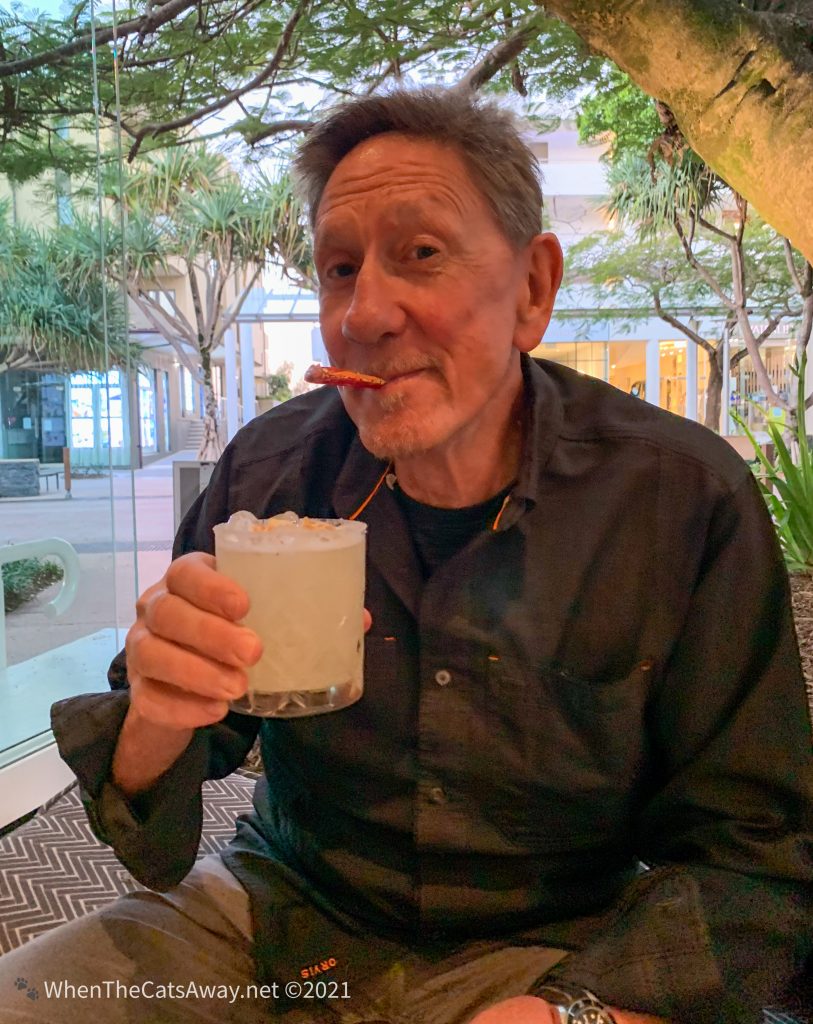
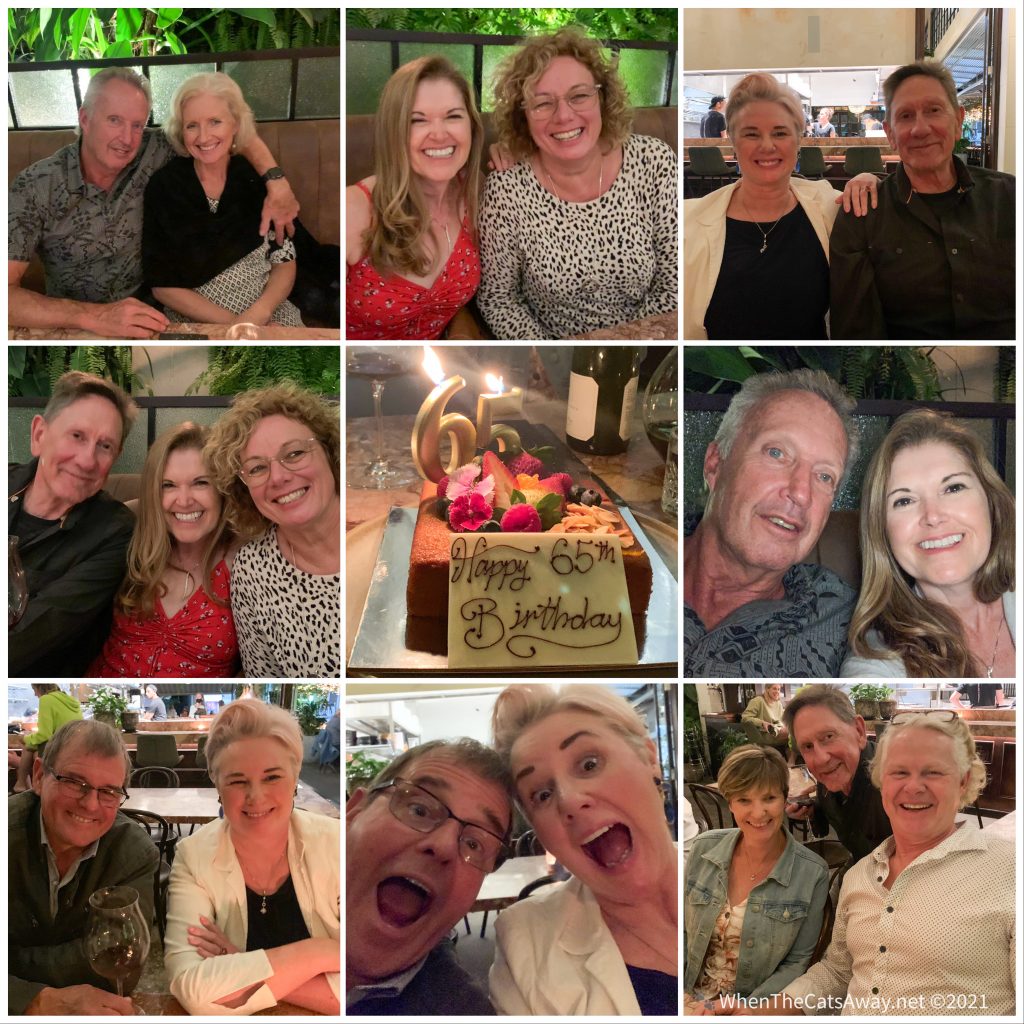
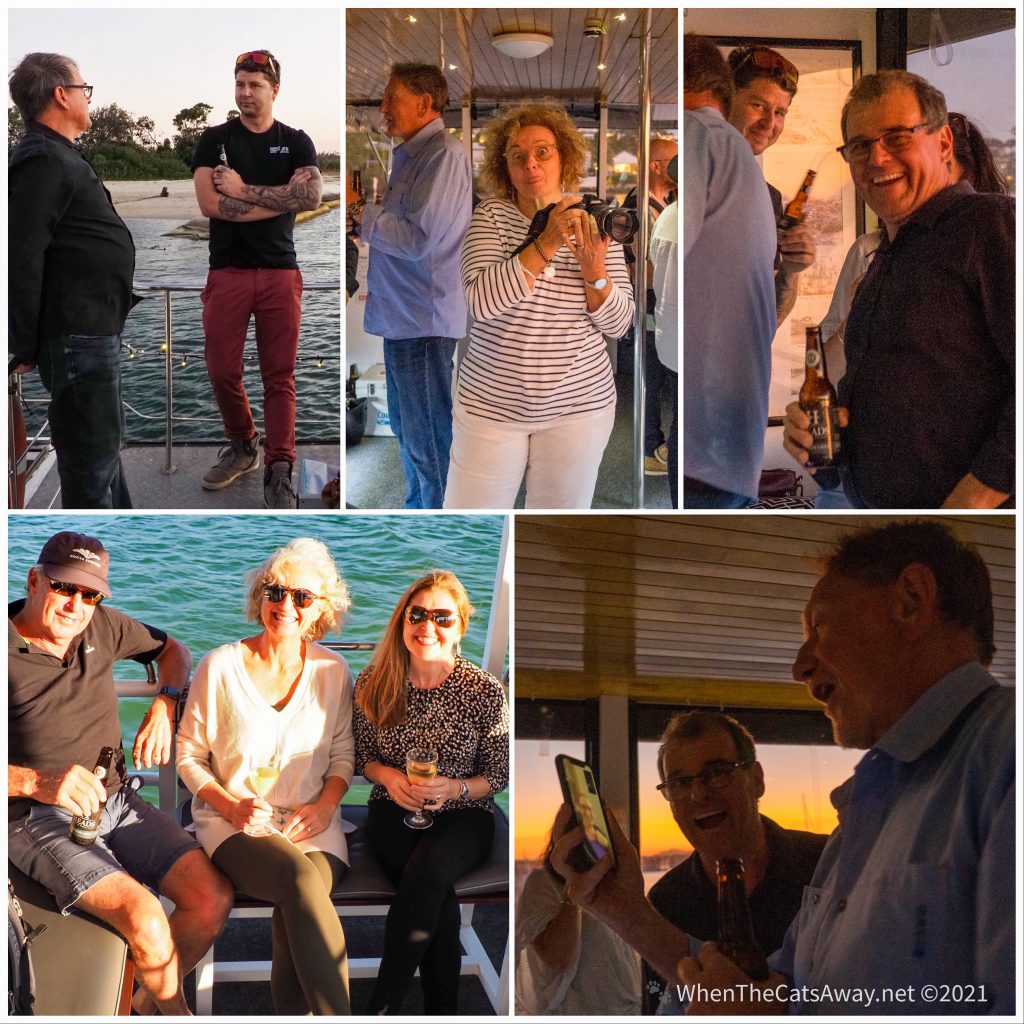
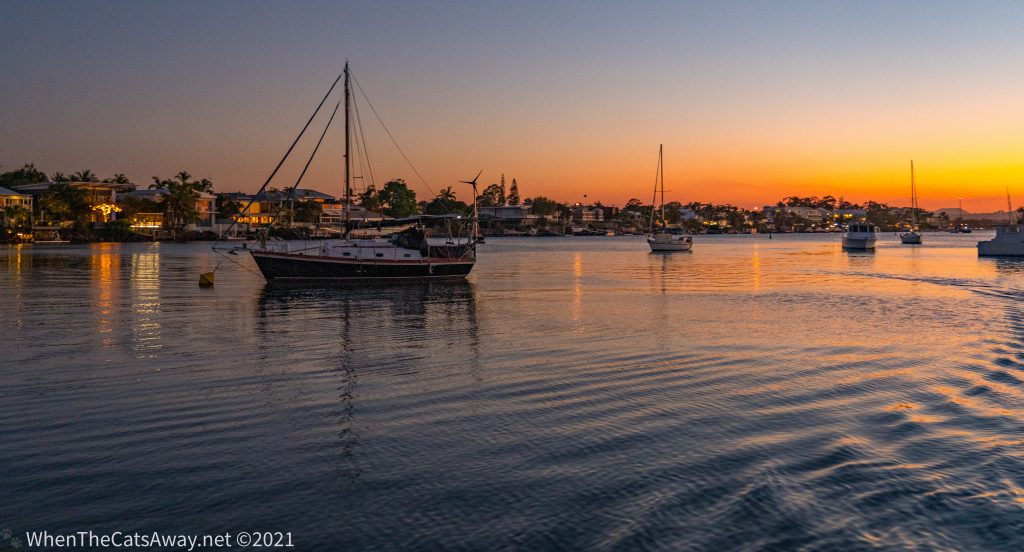

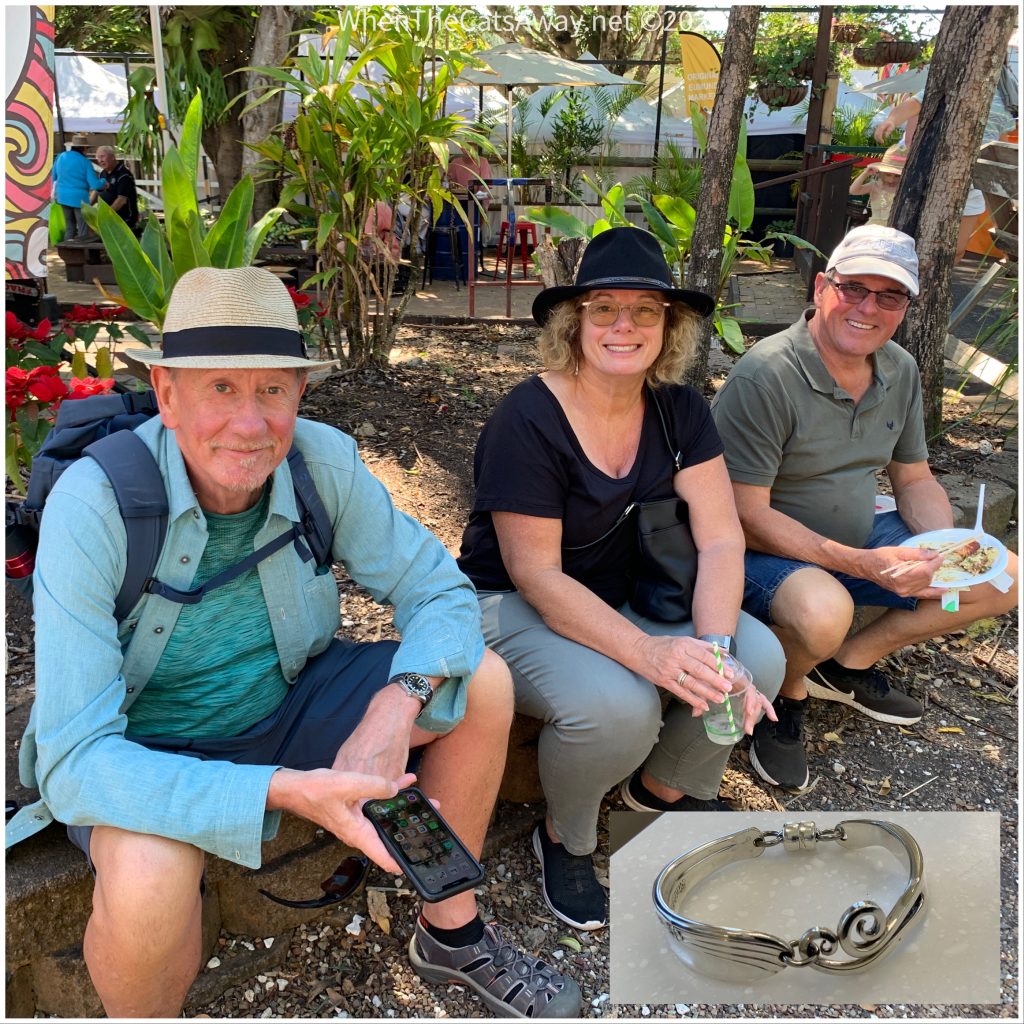
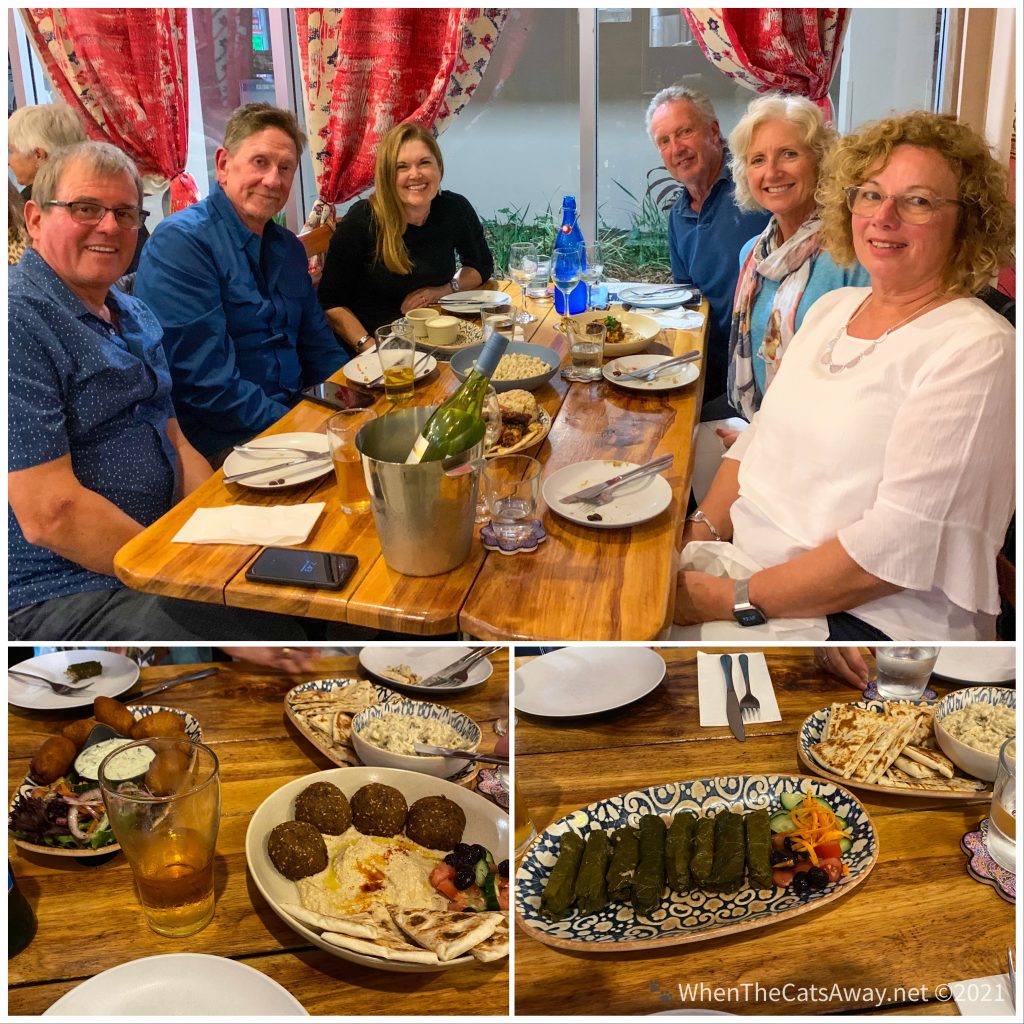
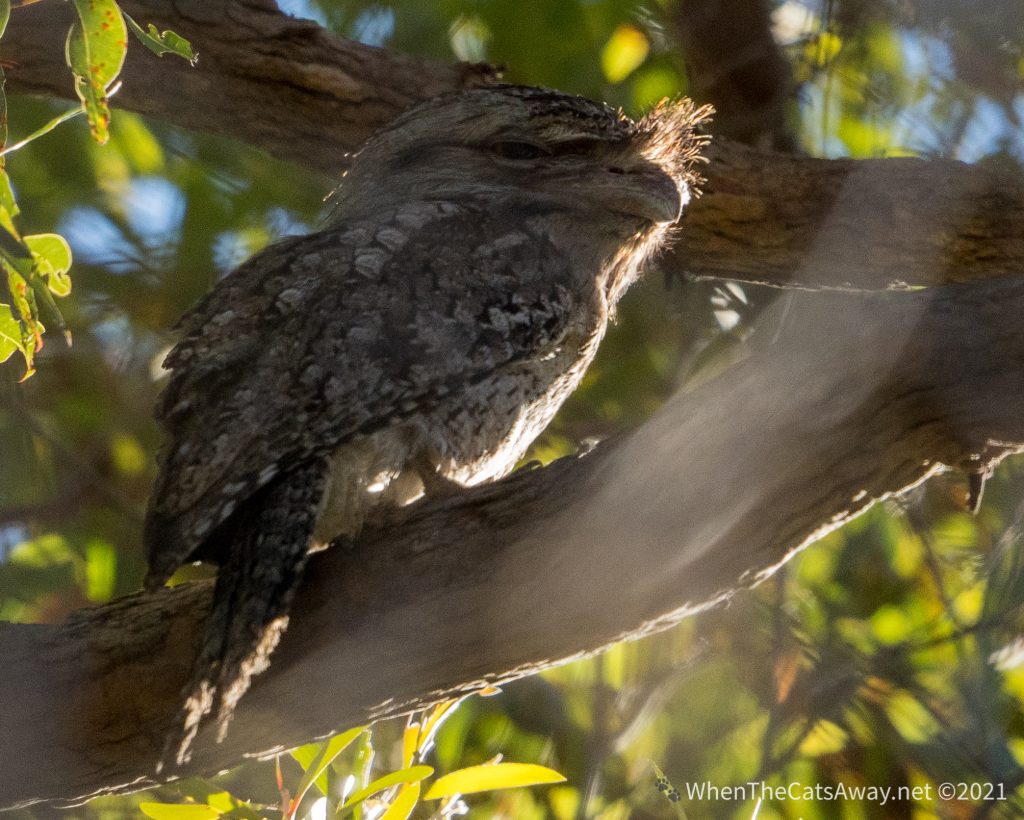
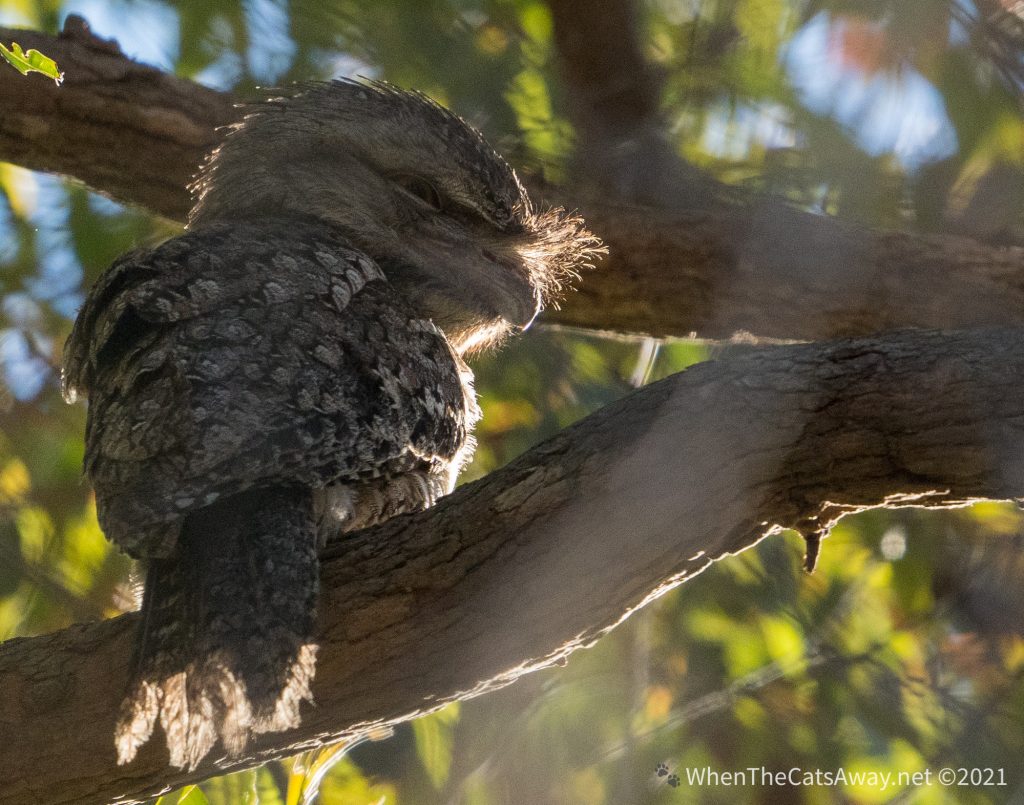
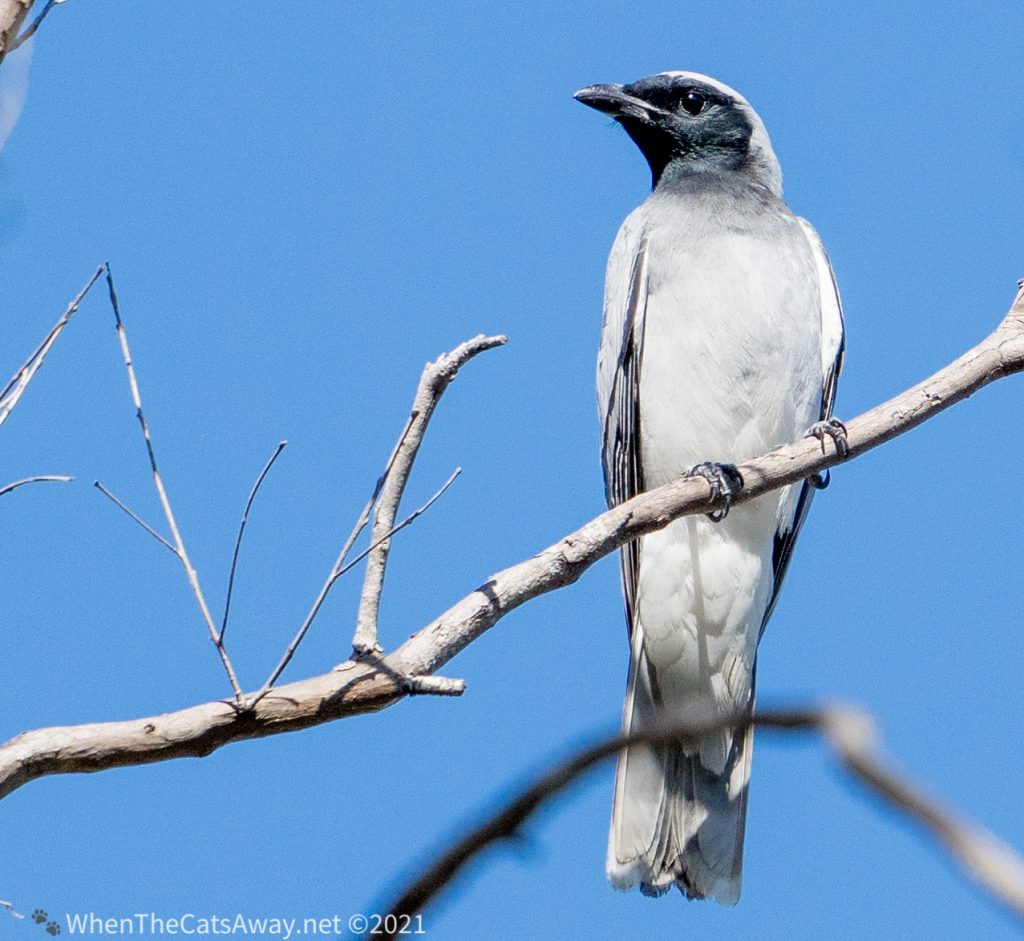
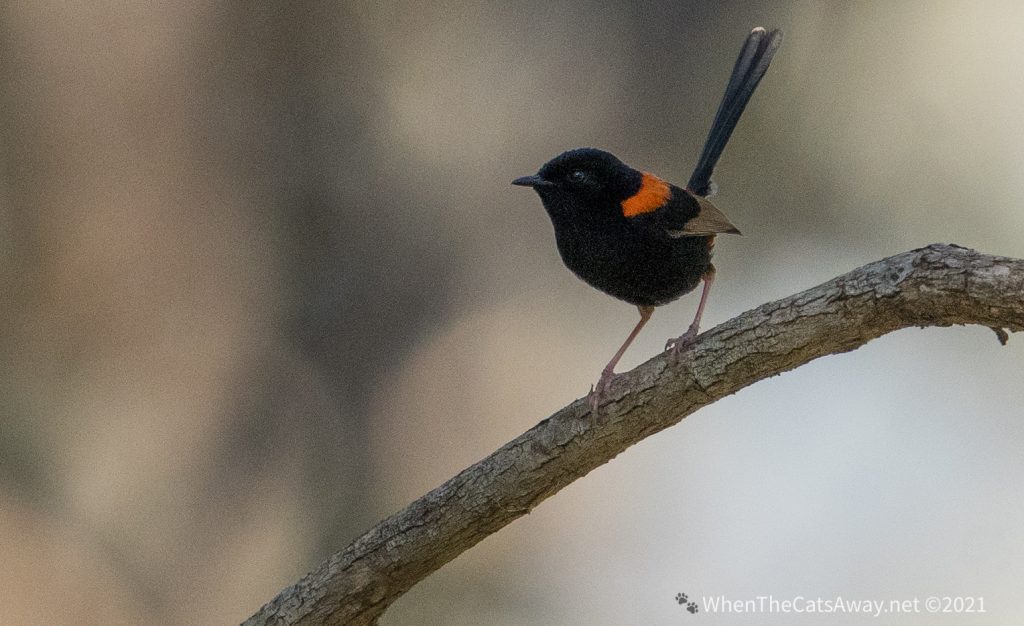
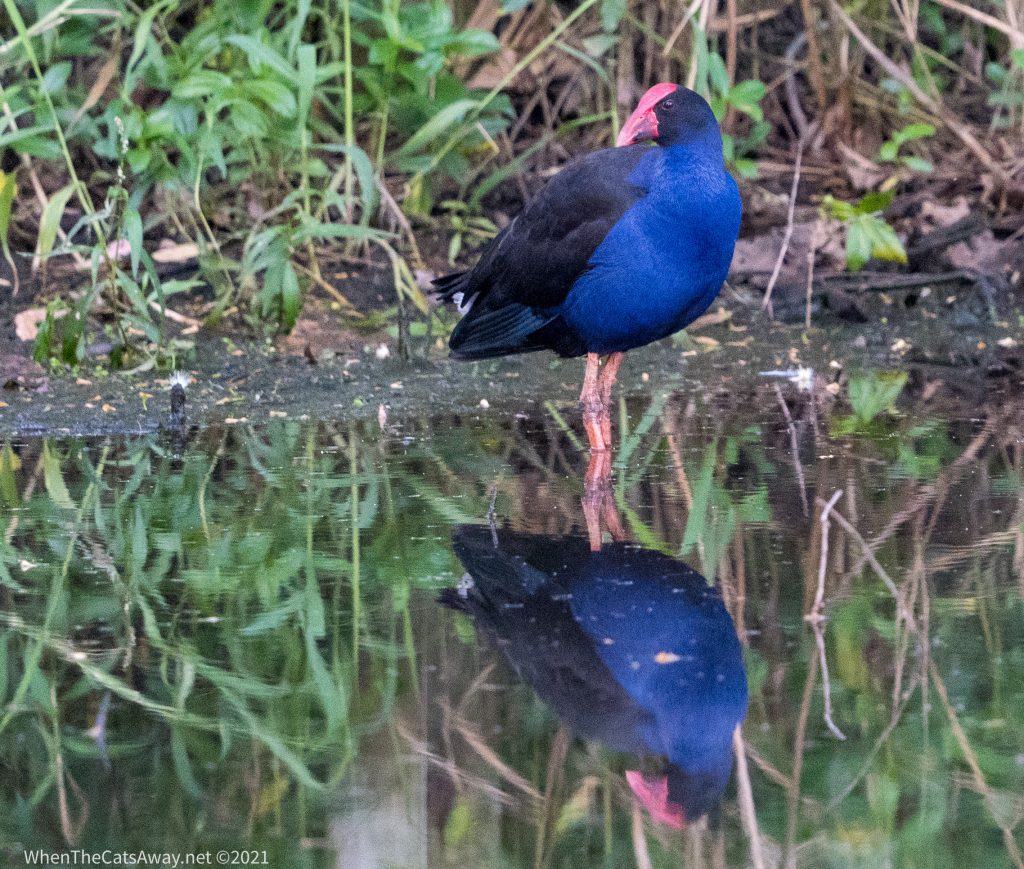
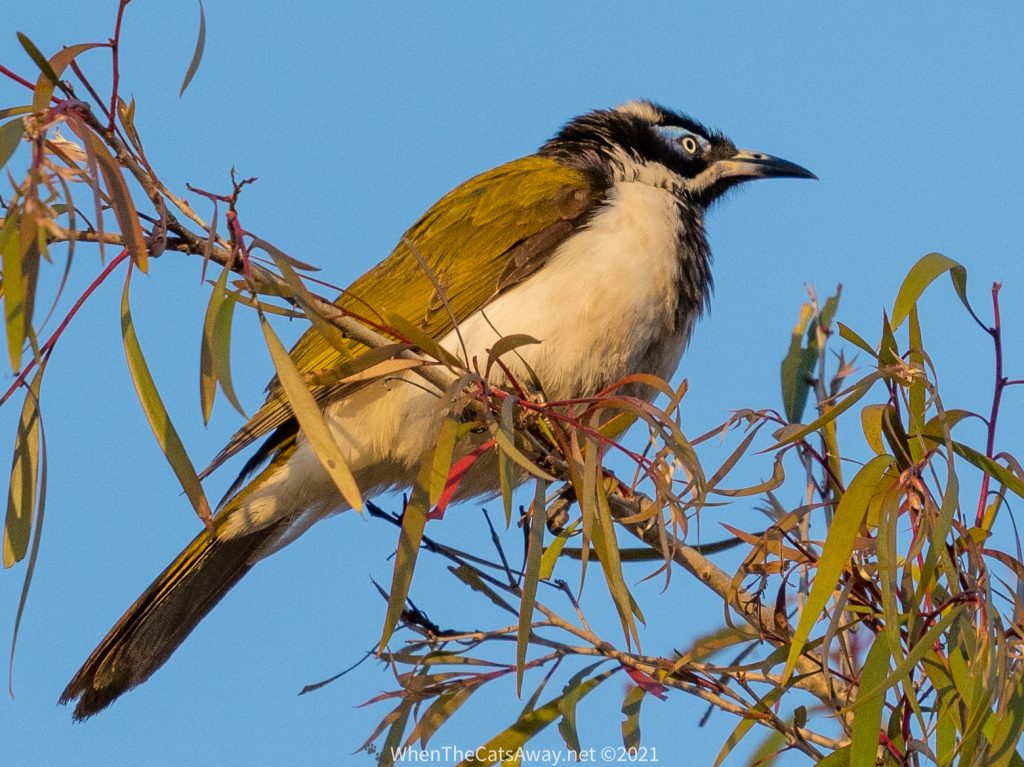
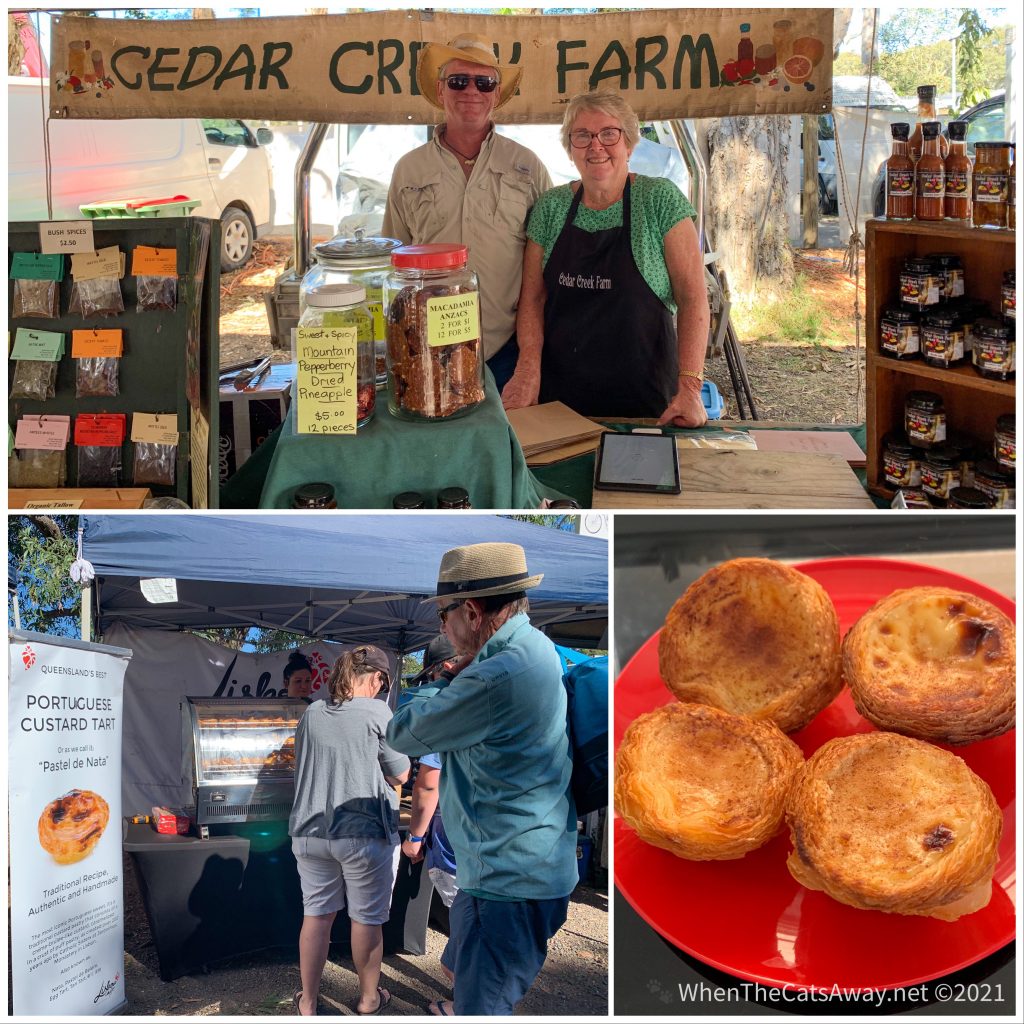
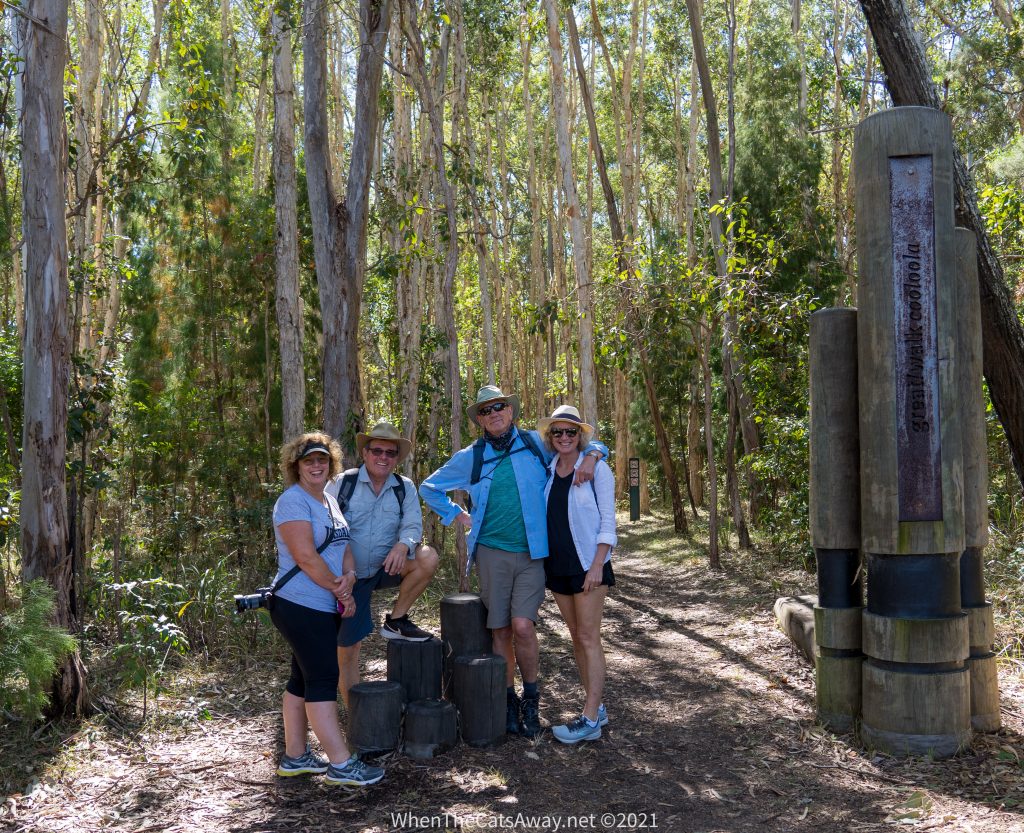
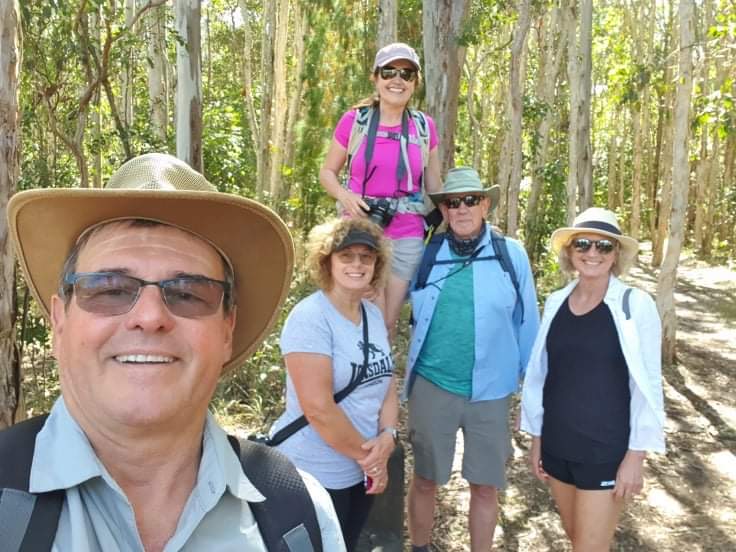
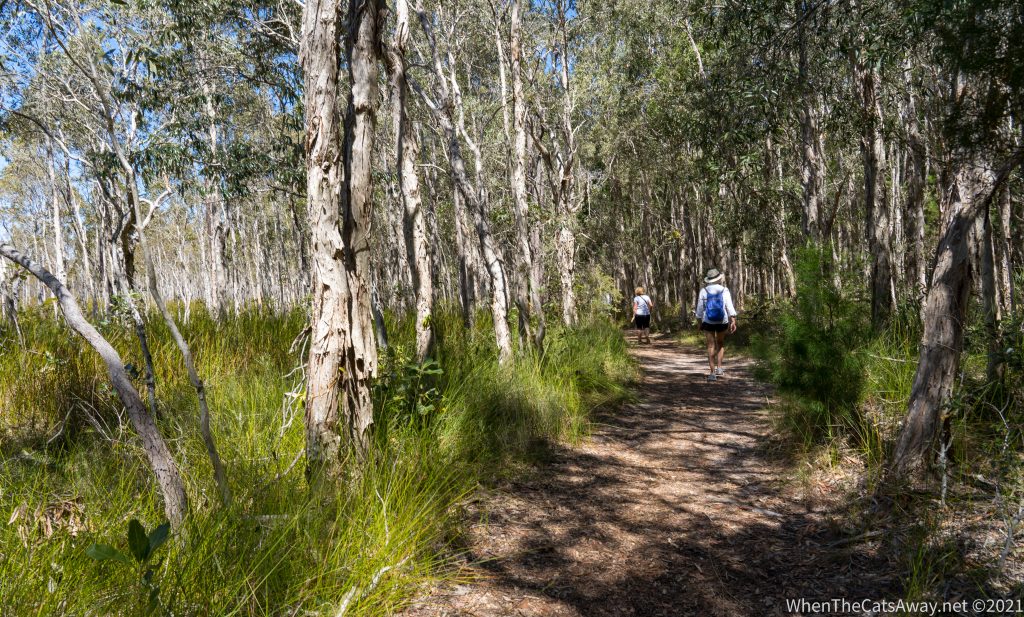
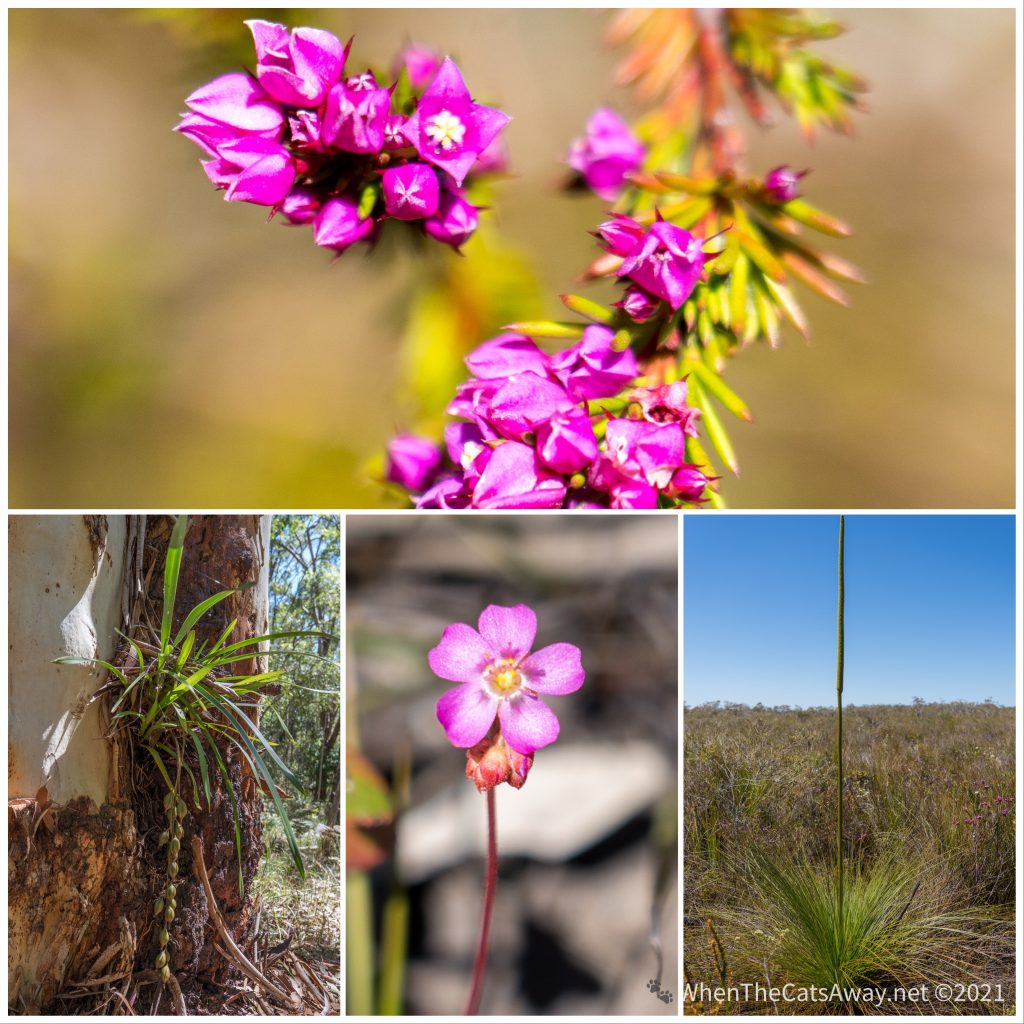
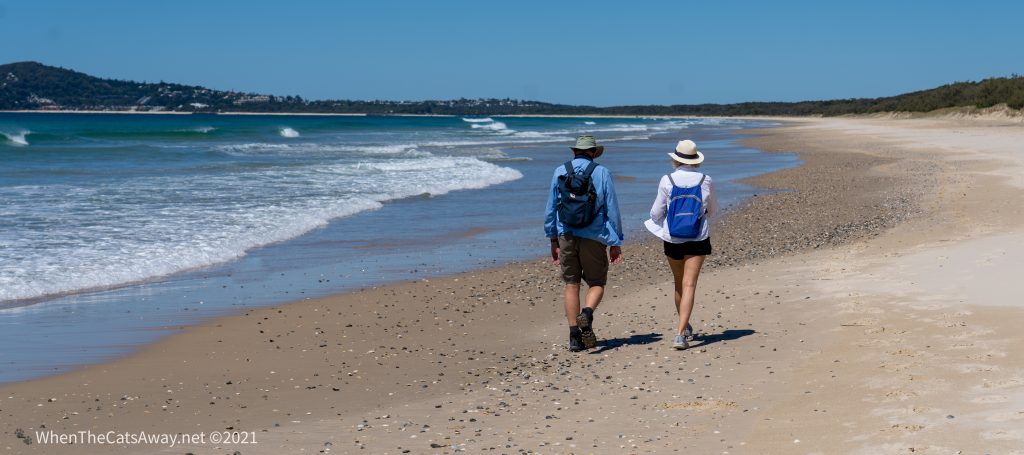
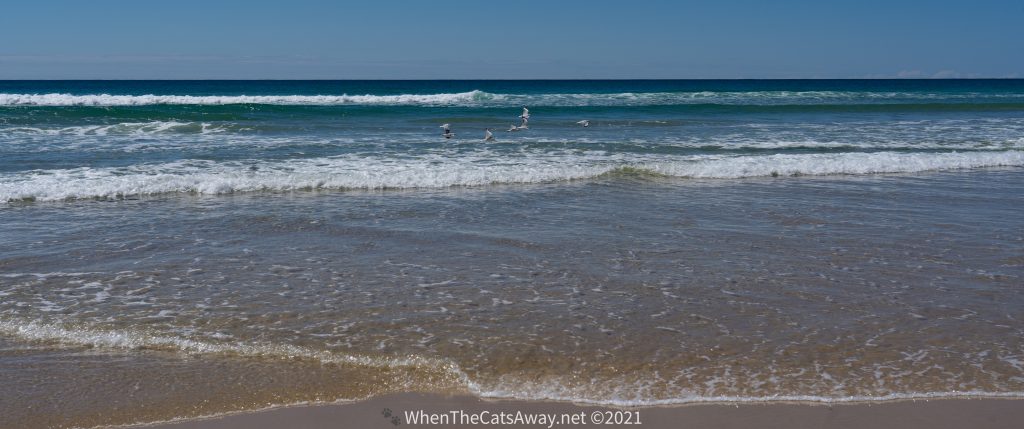
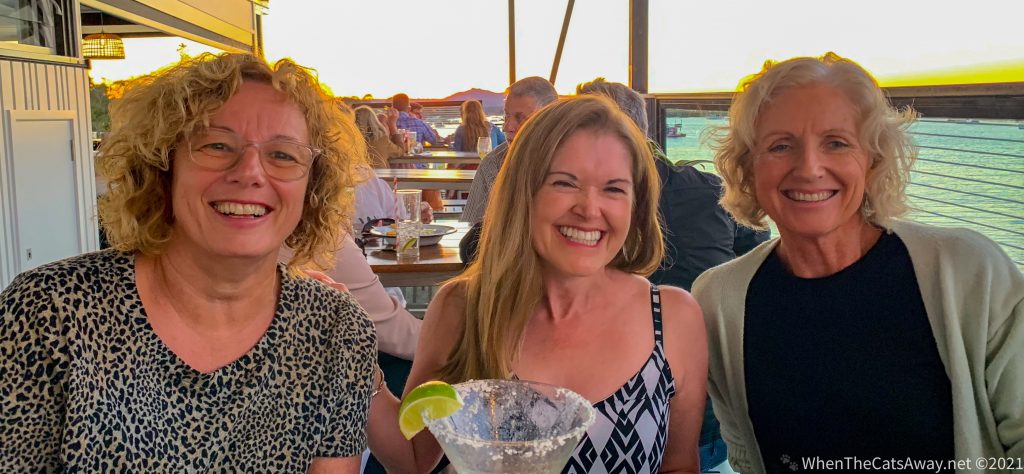
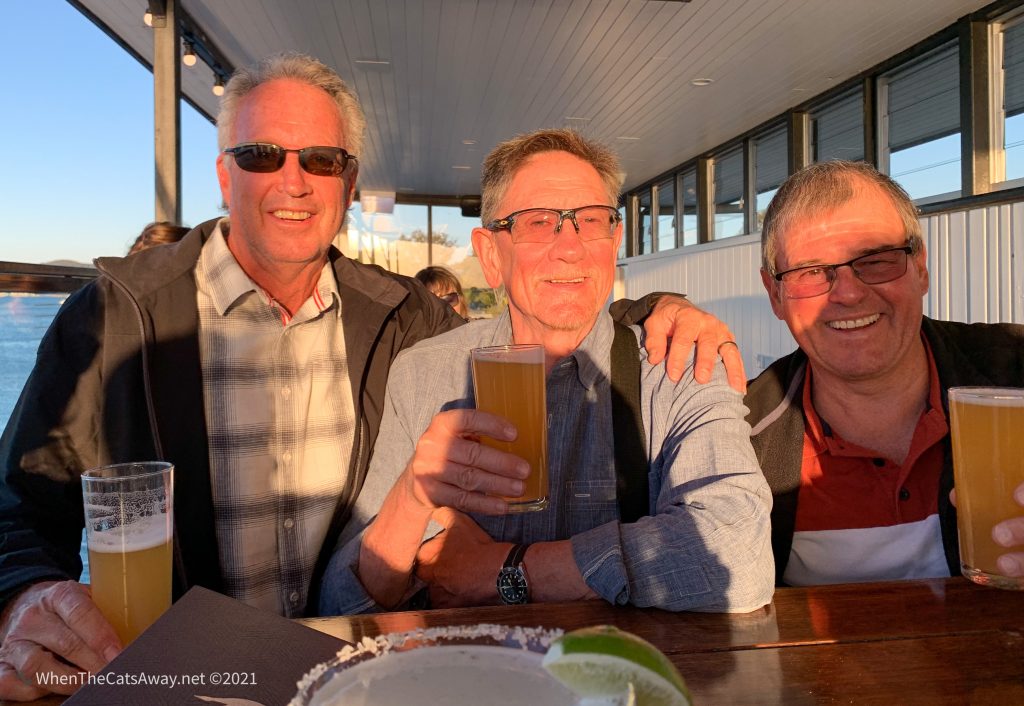
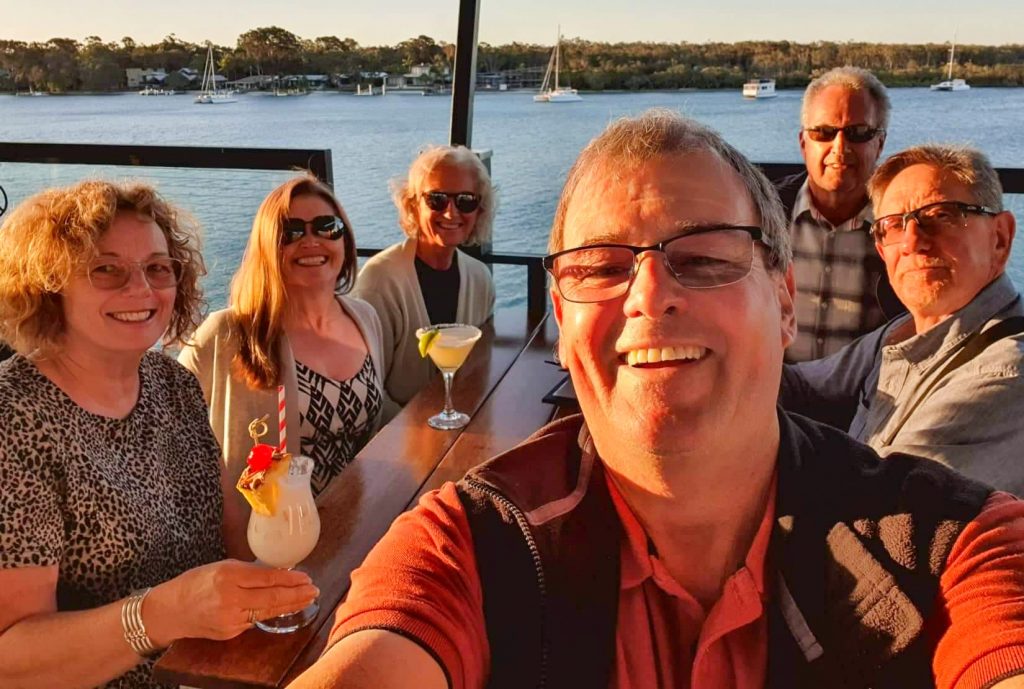





















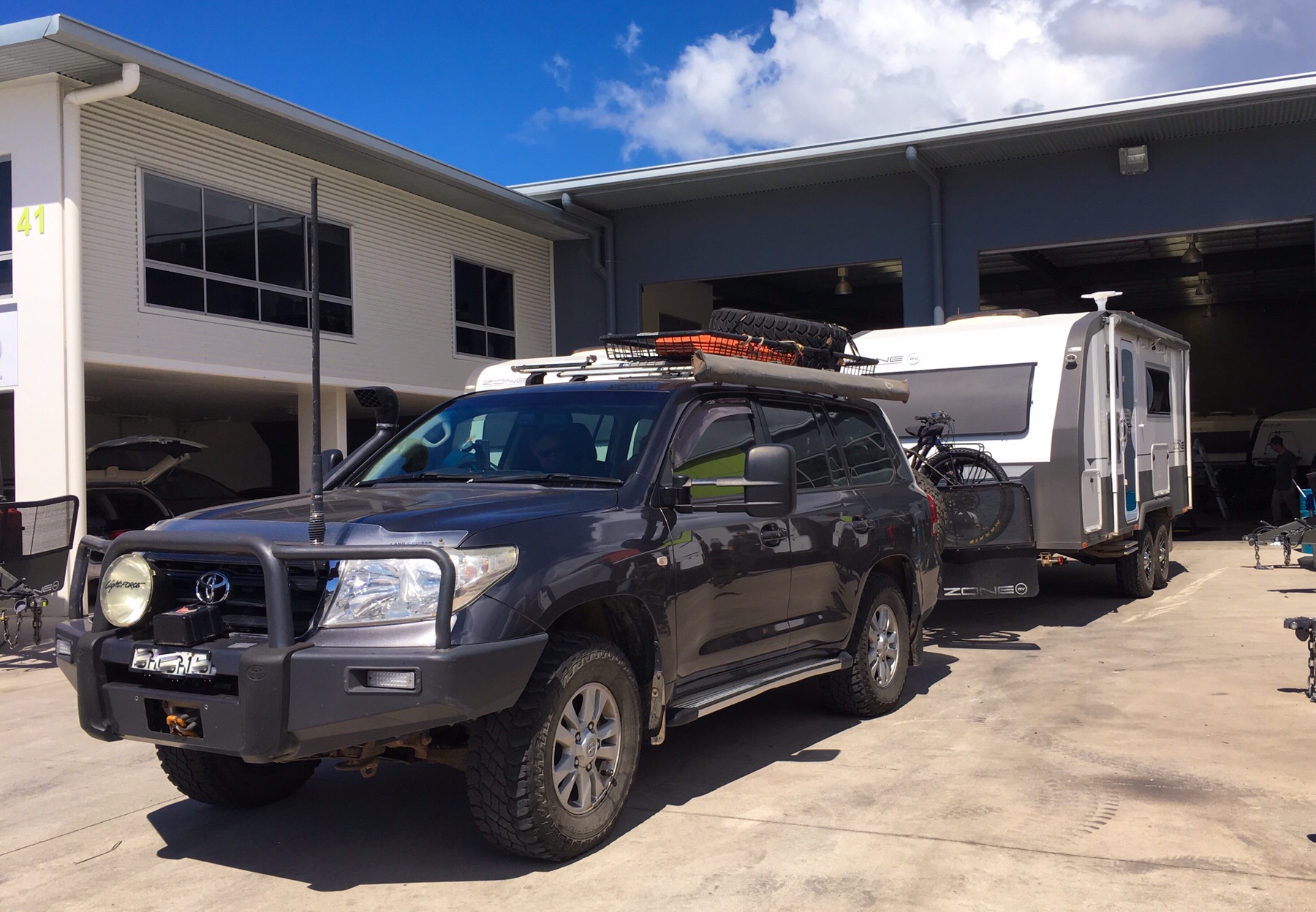 We had a brief whirlwind of time to transfer our cases and food back into the caravan, dig out the smart clothes and get changed, before the four of us drove into Brisbane for the evening.
We had a brief whirlwind of time to transfer our cases and food back into the caravan, dig out the smart clothes and get changed, before the four of us drove into Brisbane for the evening.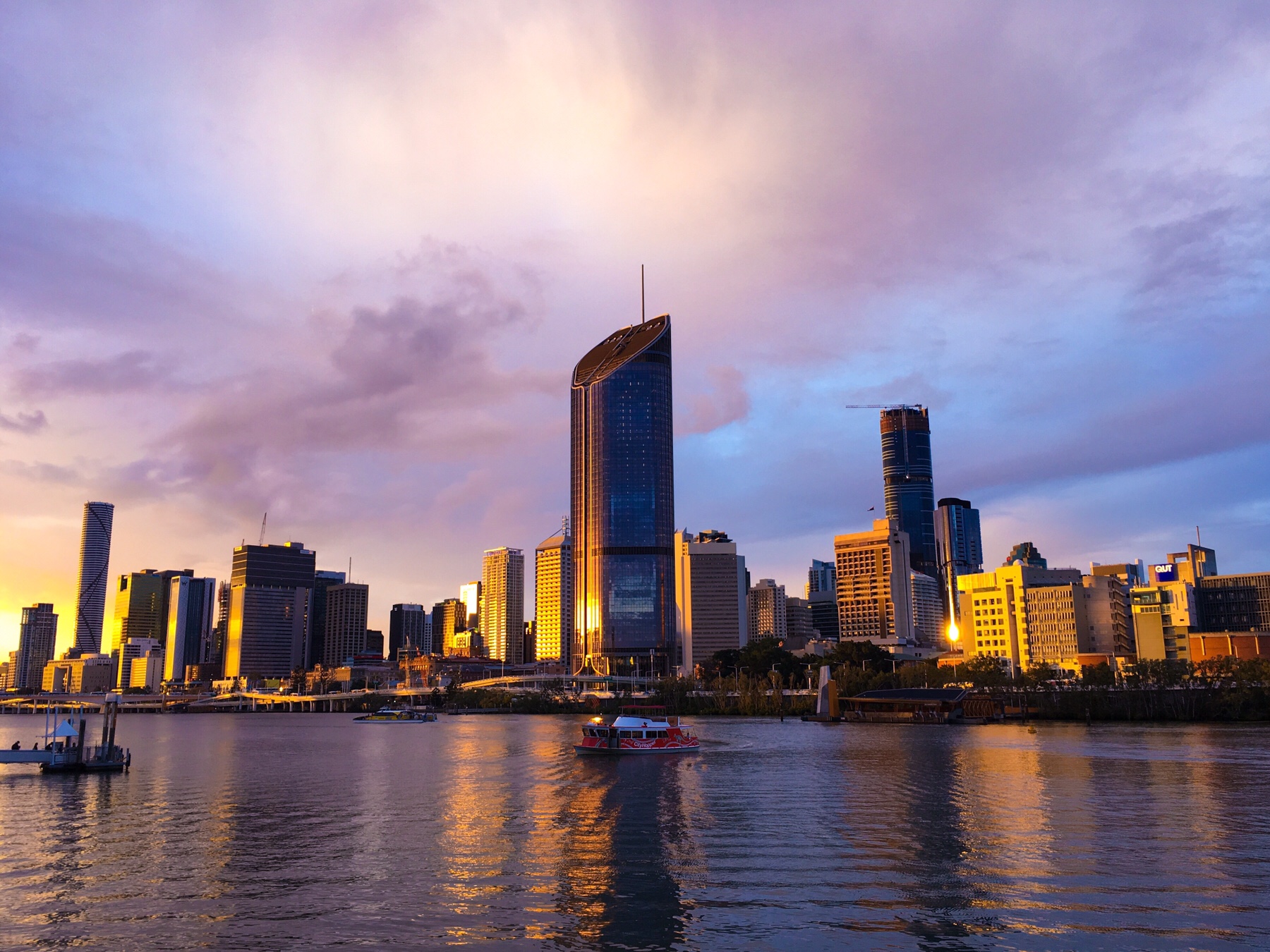
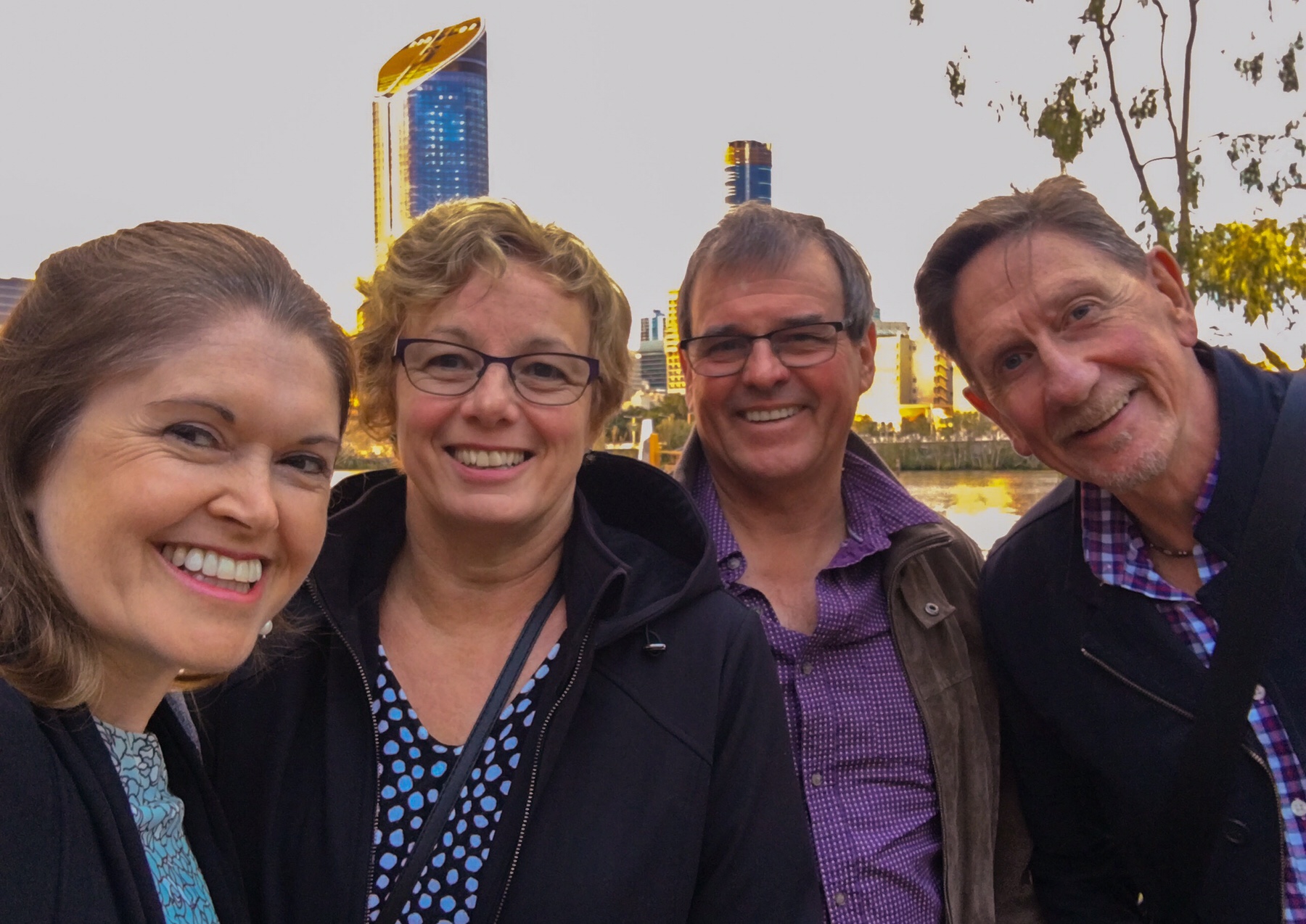 After this, we parted ways, Phil and Libby ending up at a pub helping celebrate a nephew’s birthday, while Mr A and I joined three lovely ladies for dinner in a French restaurant beside the water.
After this, we parted ways, Phil and Libby ending up at a pub helping celebrate a nephew’s birthday, while Mr A and I joined three lovely ladies for dinner in a French restaurant beside the water. We have probably driven past this area a dozen times without any awareness of what’s here, but it’s a lovely rural settlement sat on the banks of the Clarence River close to the estuary. There are over 100 islands in the wide river here, the nearest to us being Goodwood Island.
We have probably driven past this area a dozen times without any awareness of what’s here, but it’s a lovely rural settlement sat on the banks of the Clarence River close to the estuary. There are over 100 islands in the wide river here, the nearest to us being Goodwood Island.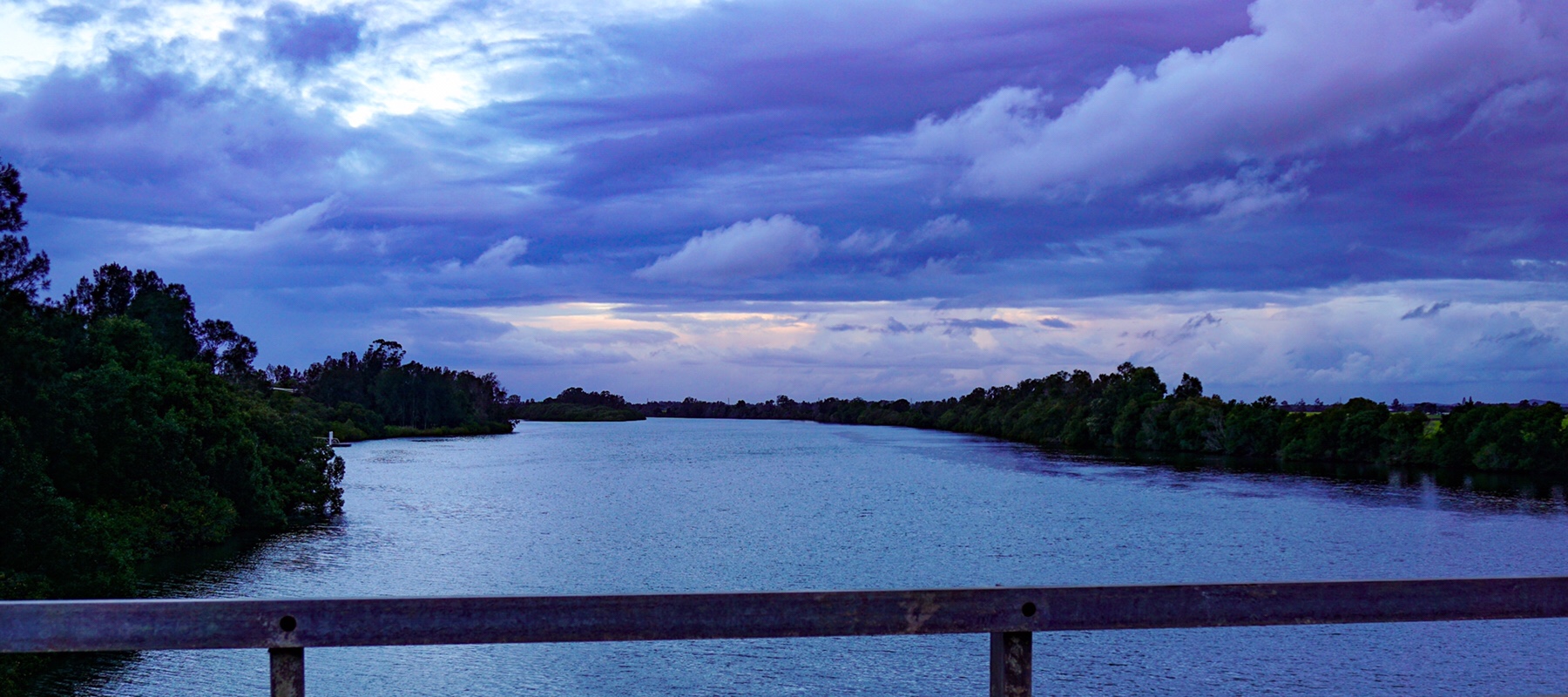
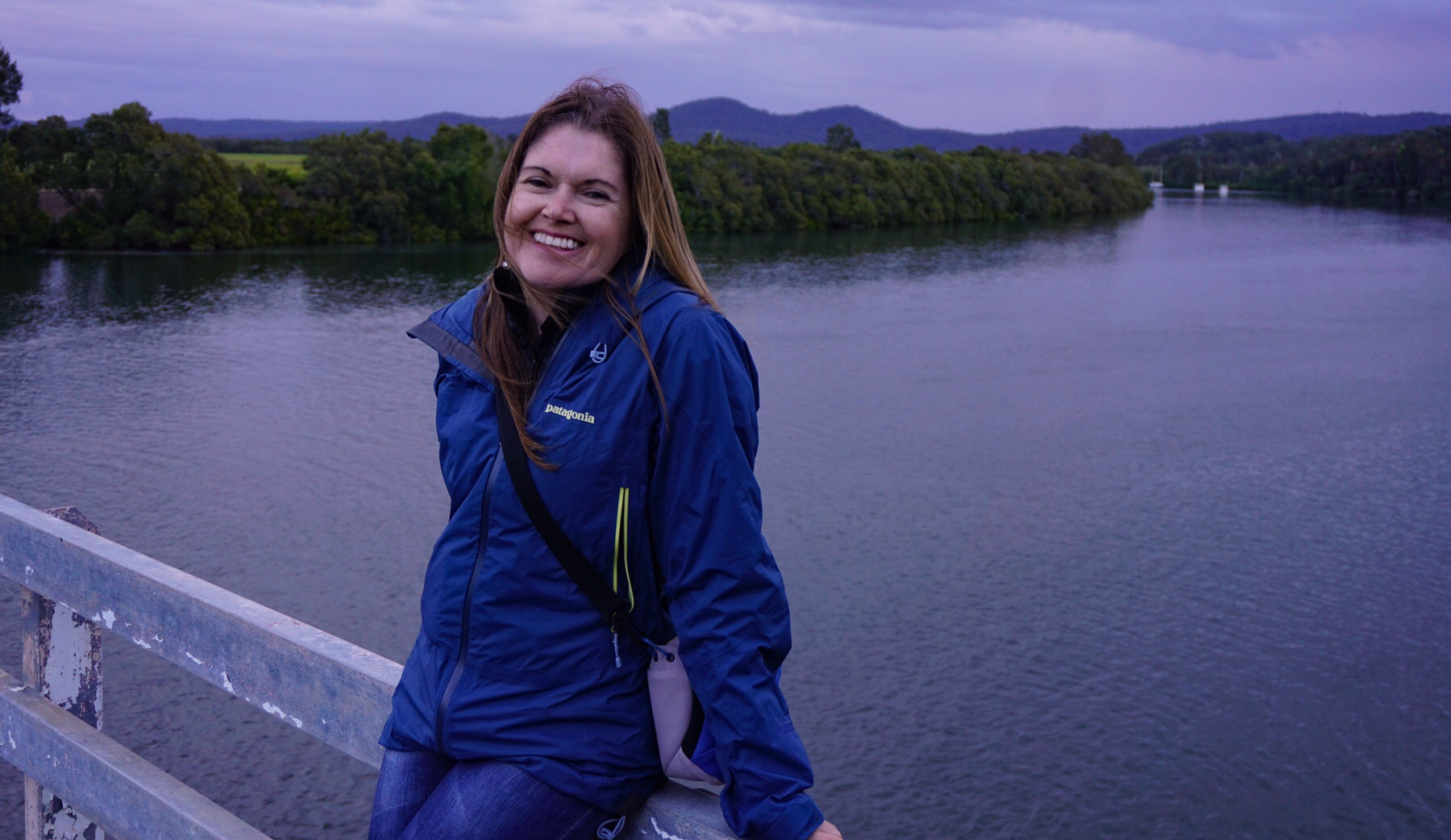 The sun was starting to set so we only went a couple of kilometres, crossing over the bridge to Goodwood Island and checking out the wet sugar cane fields before returning for the evening.
The sun was starting to set so we only went a couple of kilometres, crossing over the bridge to Goodwood Island and checking out the wet sugar cane fields before returning for the evening.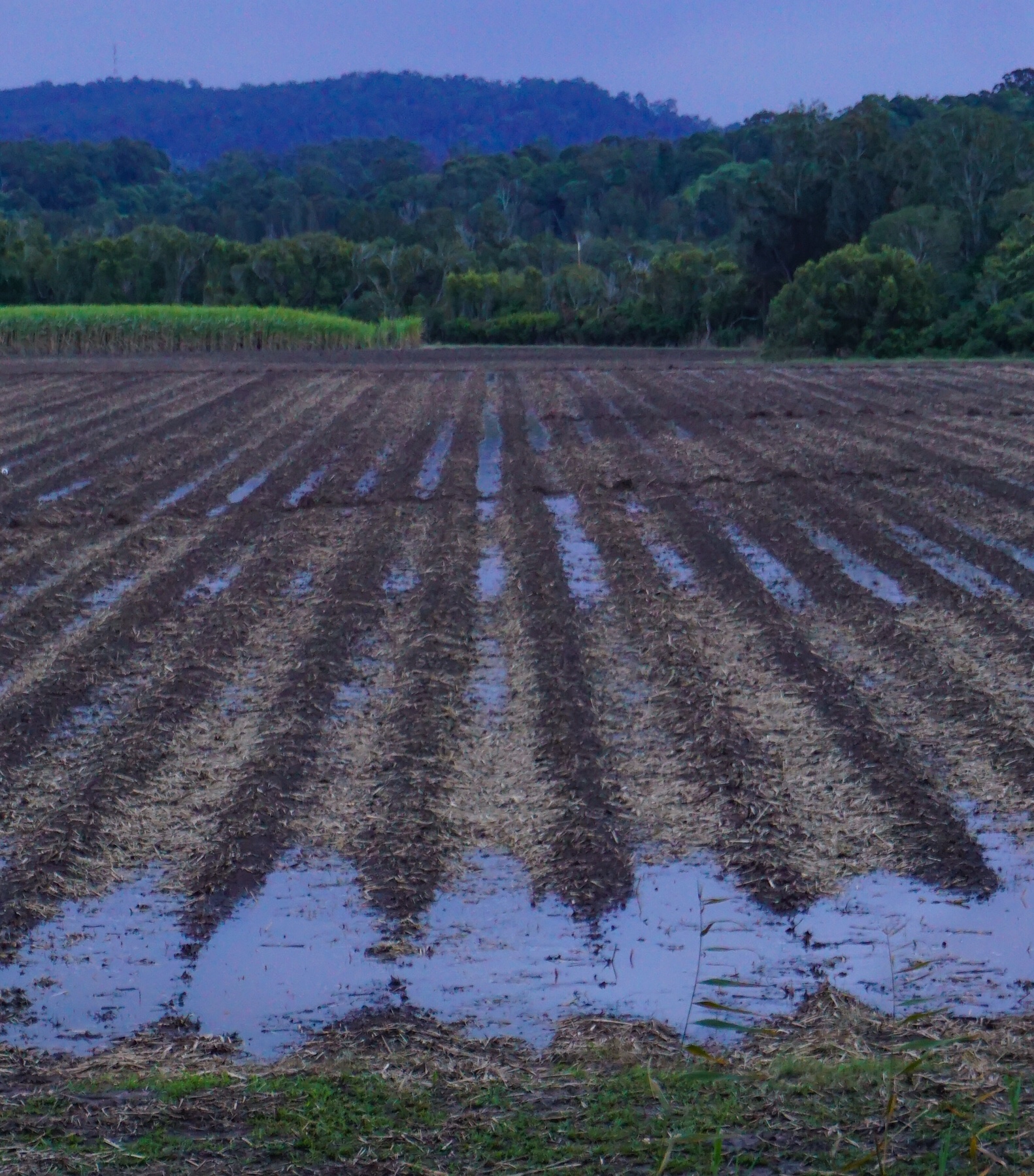
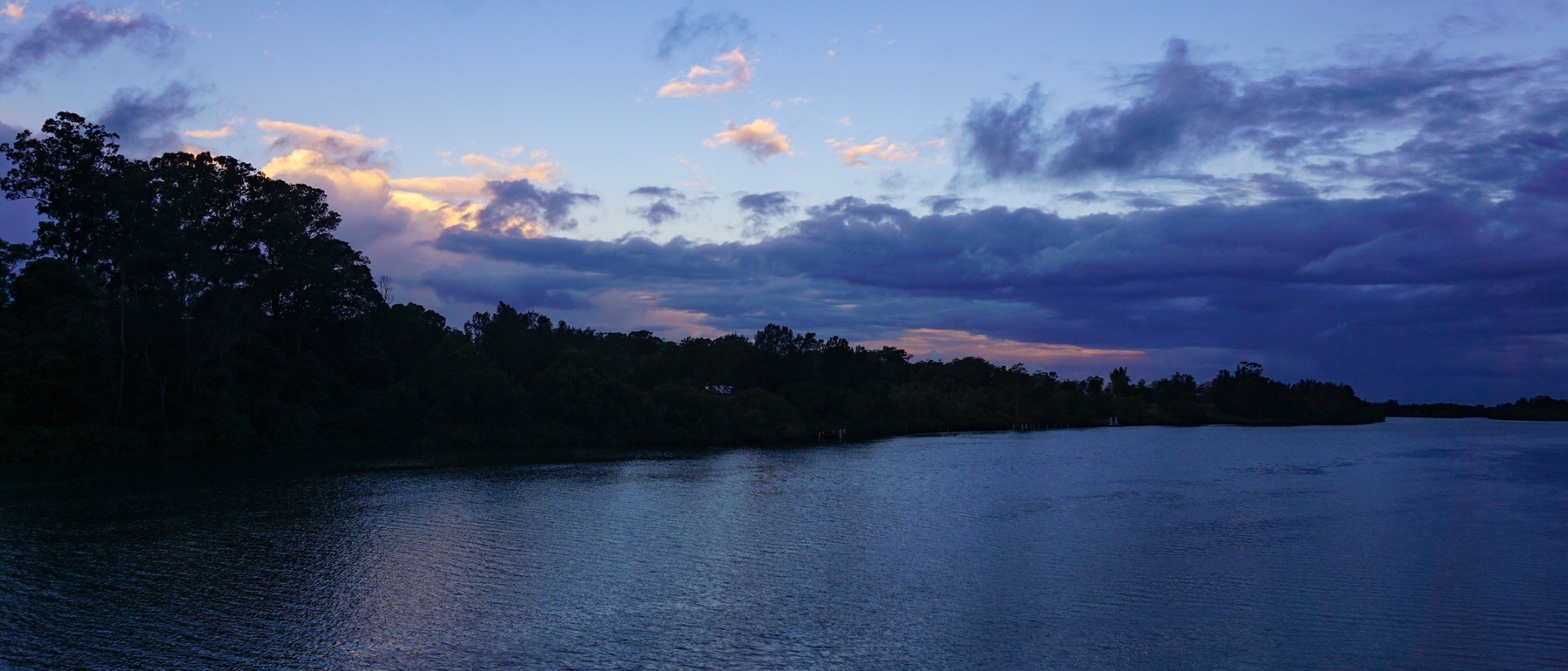 More rain and thunder entertained us, a novelty after the dry and drought of the inland areas. Sadly, it seems the rain is sticking to the coast, not helping out the farmers this time.
More rain and thunder entertained us, a novelty after the dry and drought of the inland areas. Sadly, it seems the rain is sticking to the coast, not helping out the farmers this time.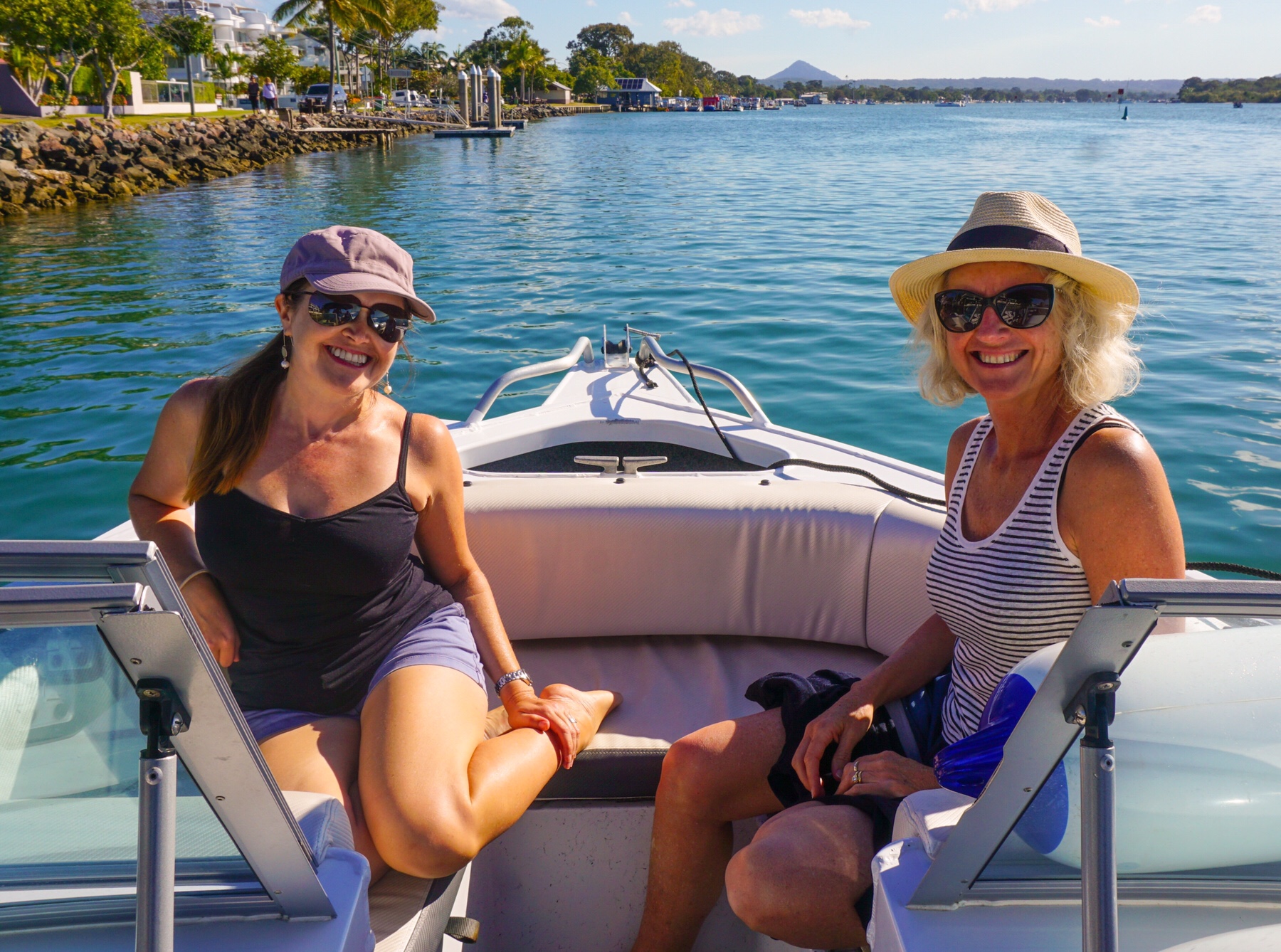

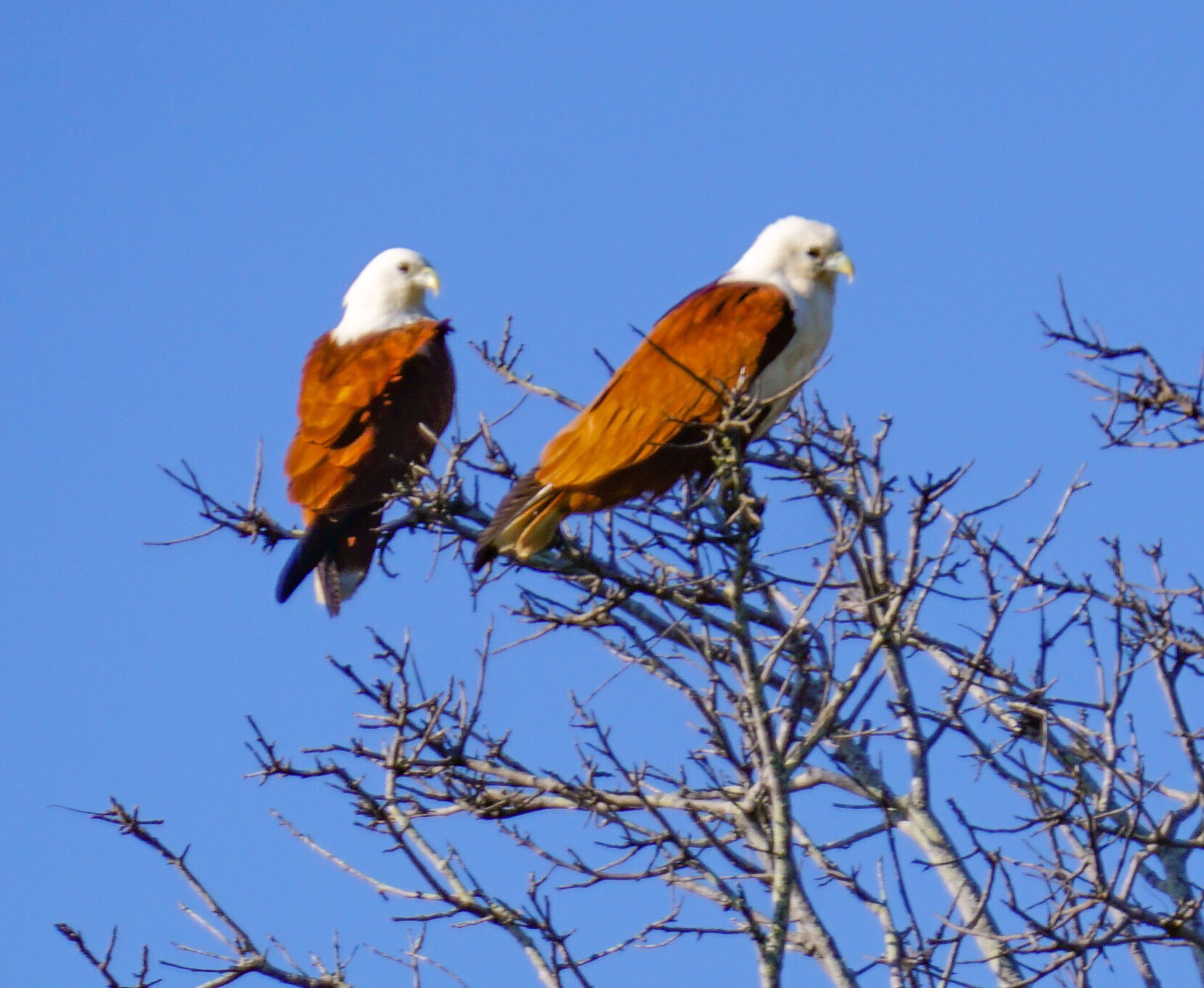
 We chat about our plan to come and rent here when we have had enough of our full time nomadic phase. It certainly is nice to be in an apartment again with endless water on tap and a toilet I don’t have to empty every morning! Tassie also approves, taking up her position on the day bed watching the non-stop action on the river.
We chat about our plan to come and rent here when we have had enough of our full time nomadic phase. It certainly is nice to be in an apartment again with endless water on tap and a toilet I don’t have to empty every morning! Tassie also approves, taking up her position on the day bed watching the non-stop action on the river.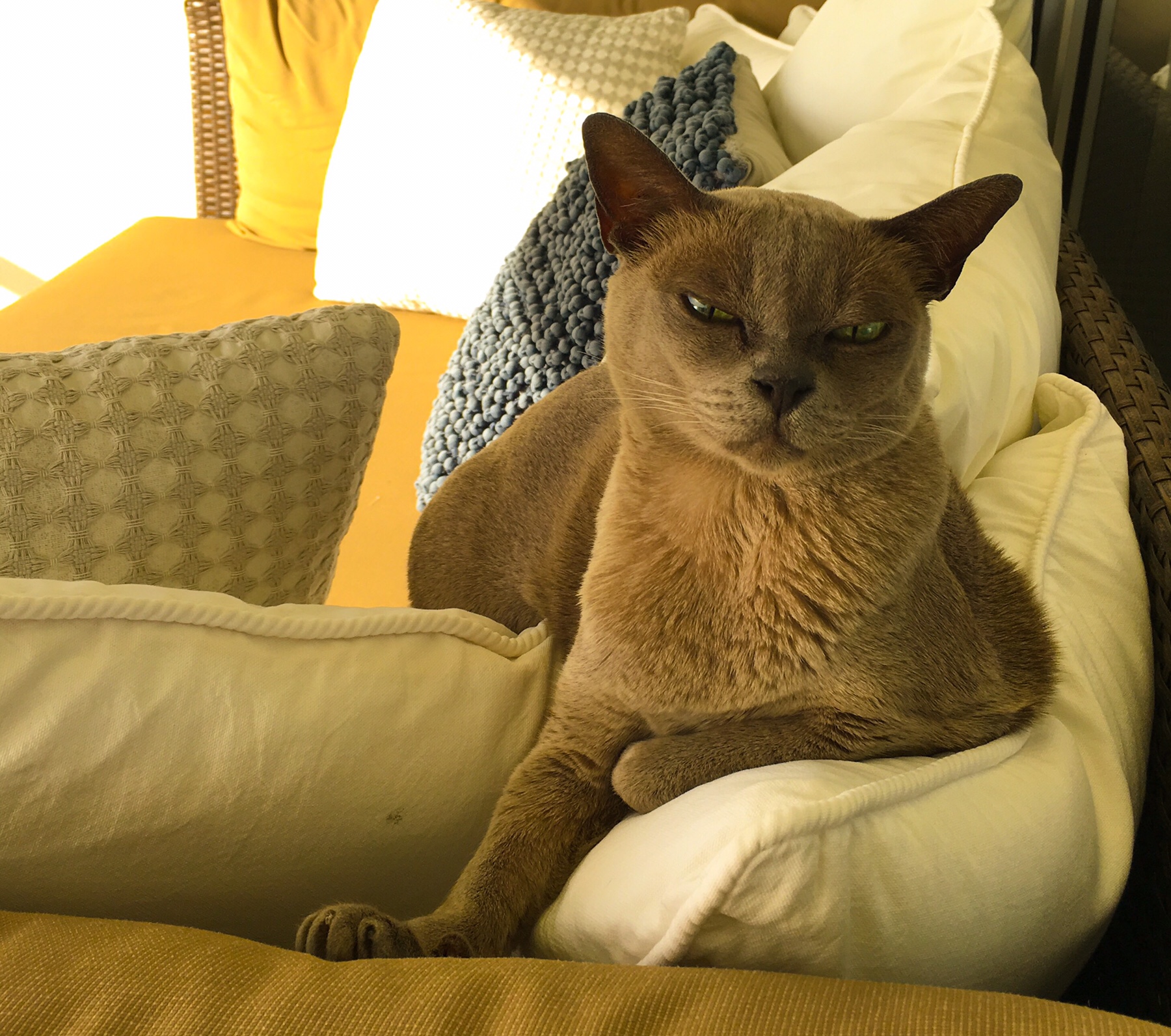
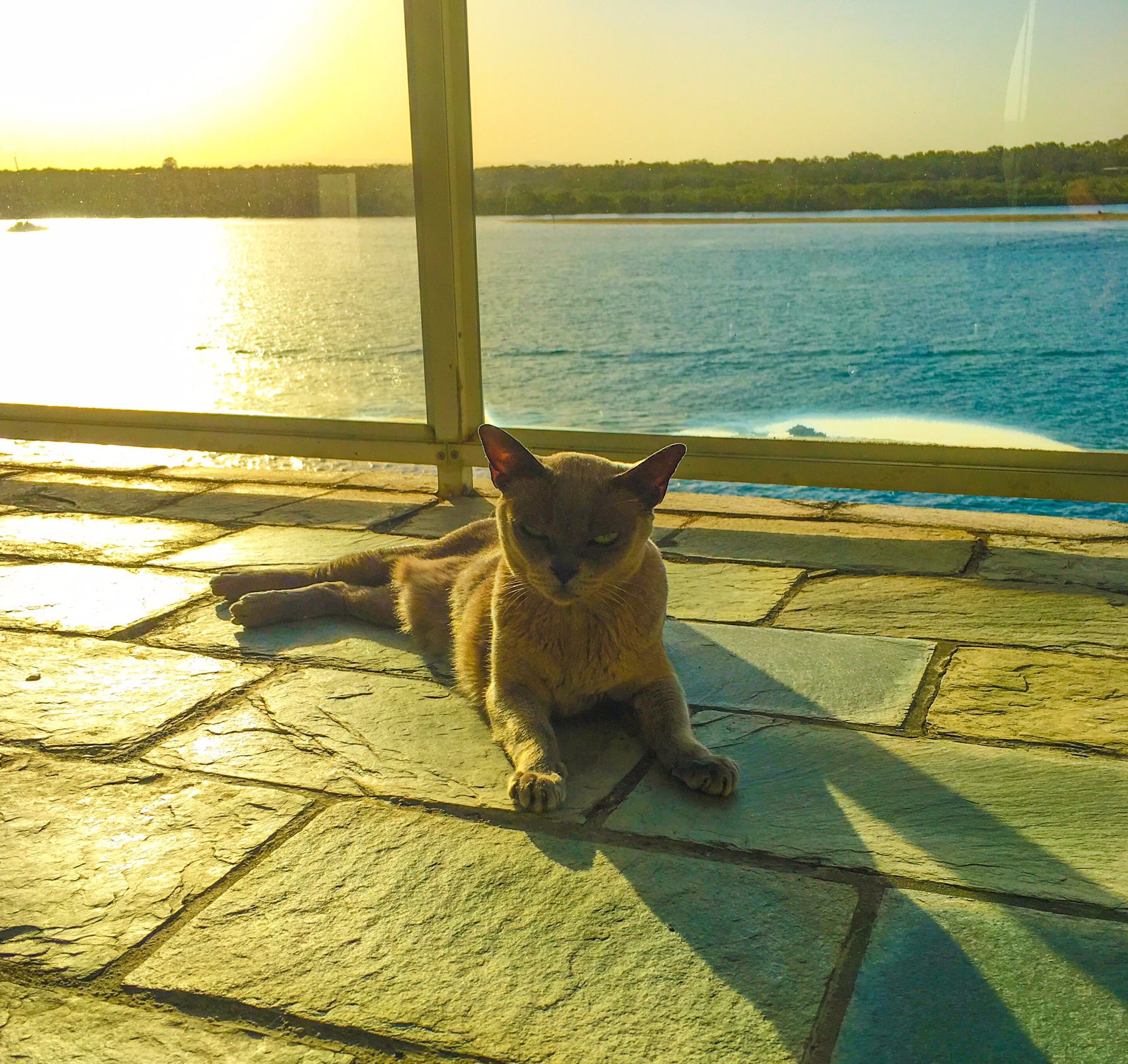 Watching the sunset turn the water to red, we both feel that we want to see this view a LOT more.
Watching the sunset turn the water to red, we both feel that we want to see this view a LOT more.
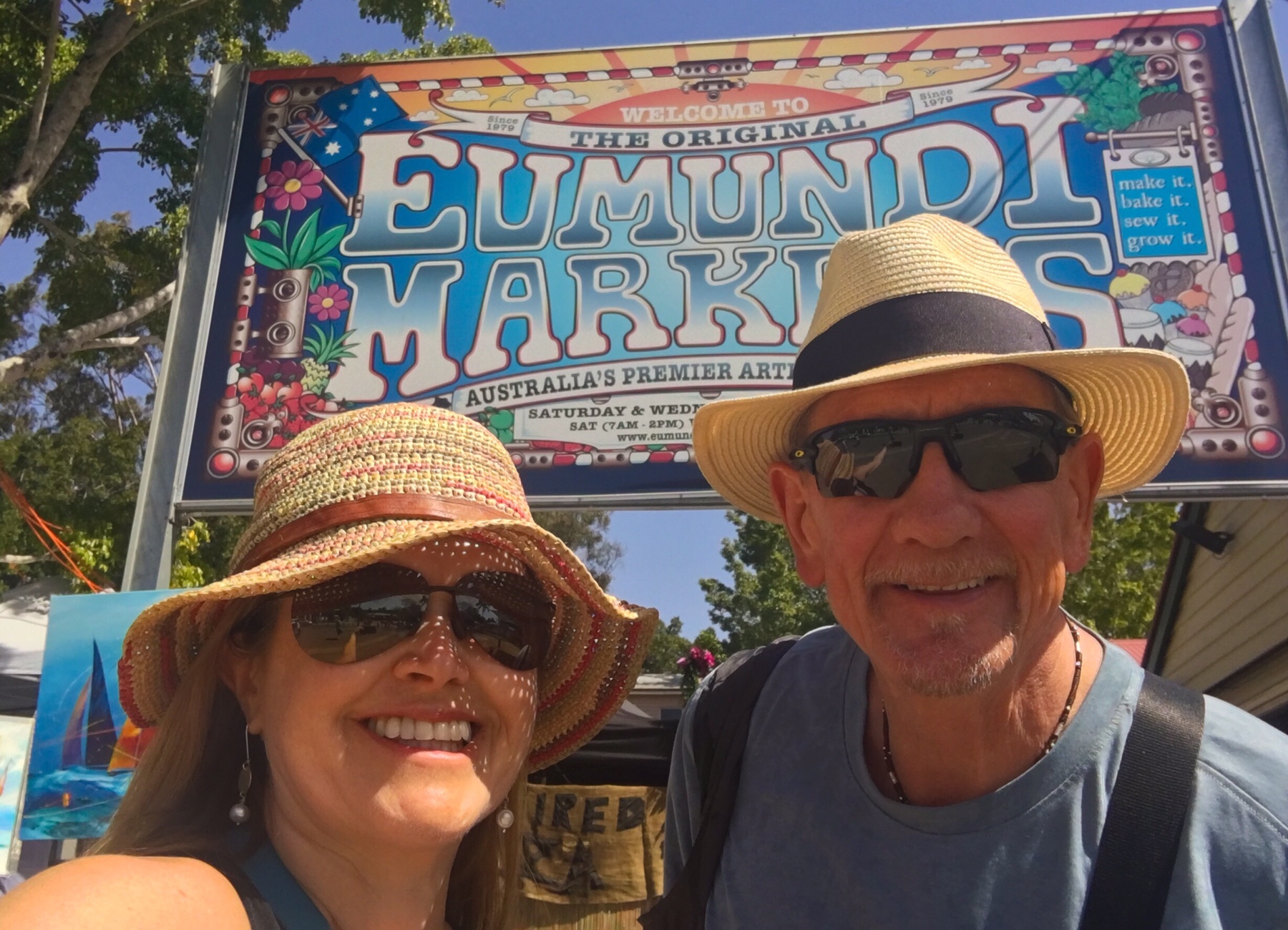
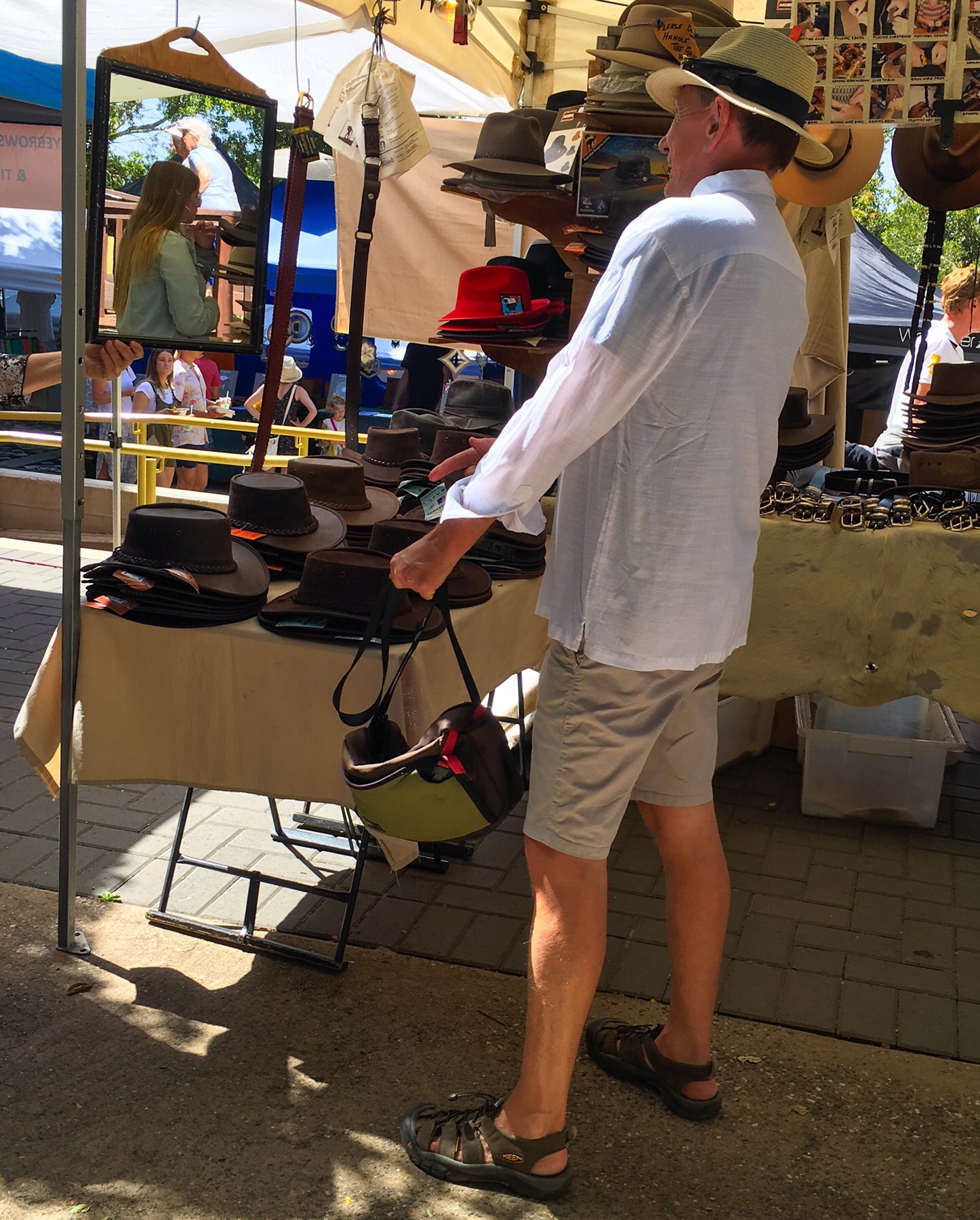 All sorts of local folk are selling their wares, or cooking up tasty treats. We could so get used to this life!
All sorts of local folk are selling their wares, or cooking up tasty treats. We could so get used to this life!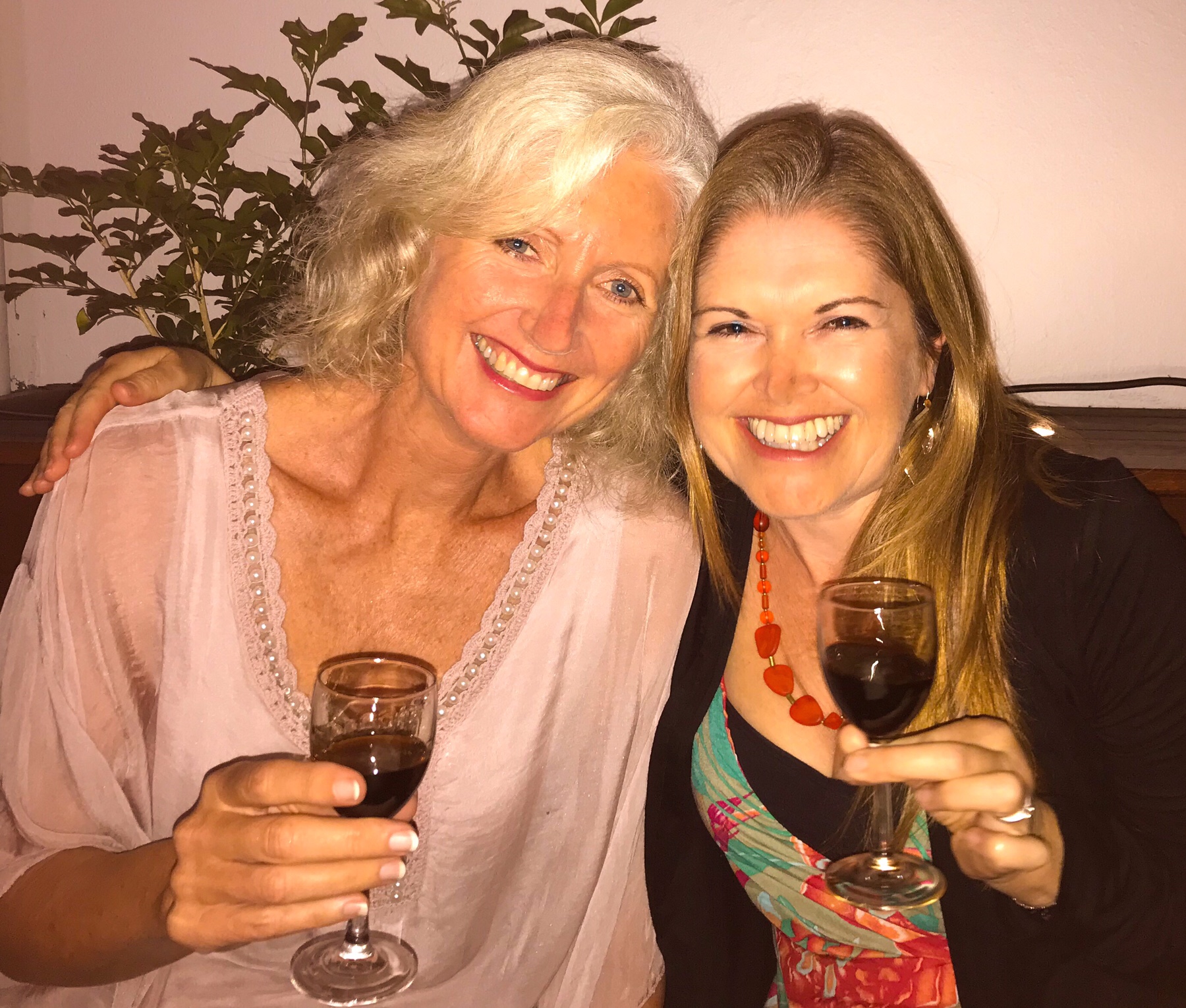 Sunday: A little worse for wear this morning, it was market time again – this time at the local Noosa farmers market. It seems the whole town turns out to buy their weekly fruit and veg, so you can see it is a bit of a social catch up as well. The food we buy is all just so yummy. Fresh olives with flavours that just leap out at you. Nitrate free bacon. Oranges and apples that are bursting with juice.
Sunday: A little worse for wear this morning, it was market time again – this time at the local Noosa farmers market. It seems the whole town turns out to buy their weekly fruit and veg, so you can see it is a bit of a social catch up as well. The food we buy is all just so yummy. Fresh olives with flavours that just leap out at you. Nitrate free bacon. Oranges and apples that are bursting with juice.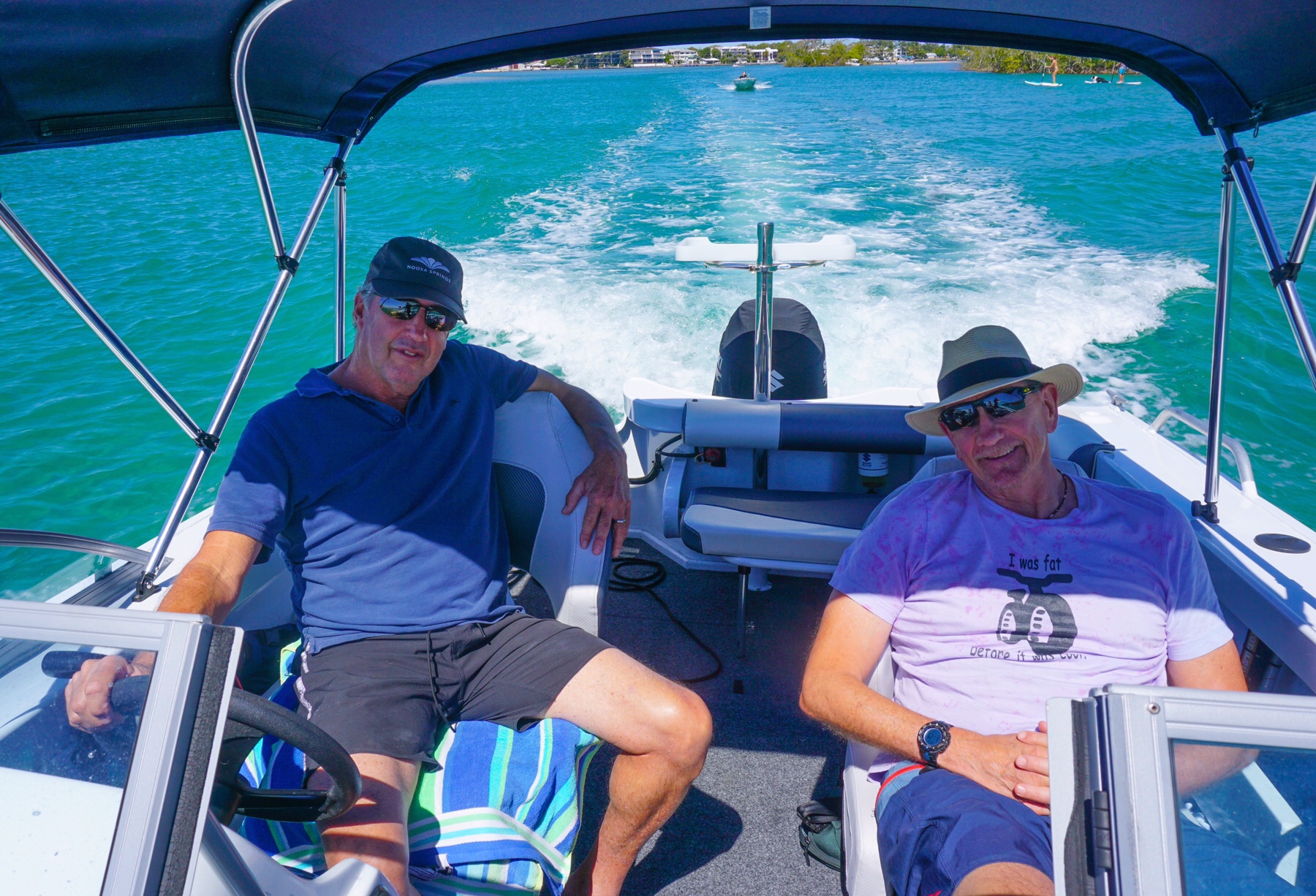
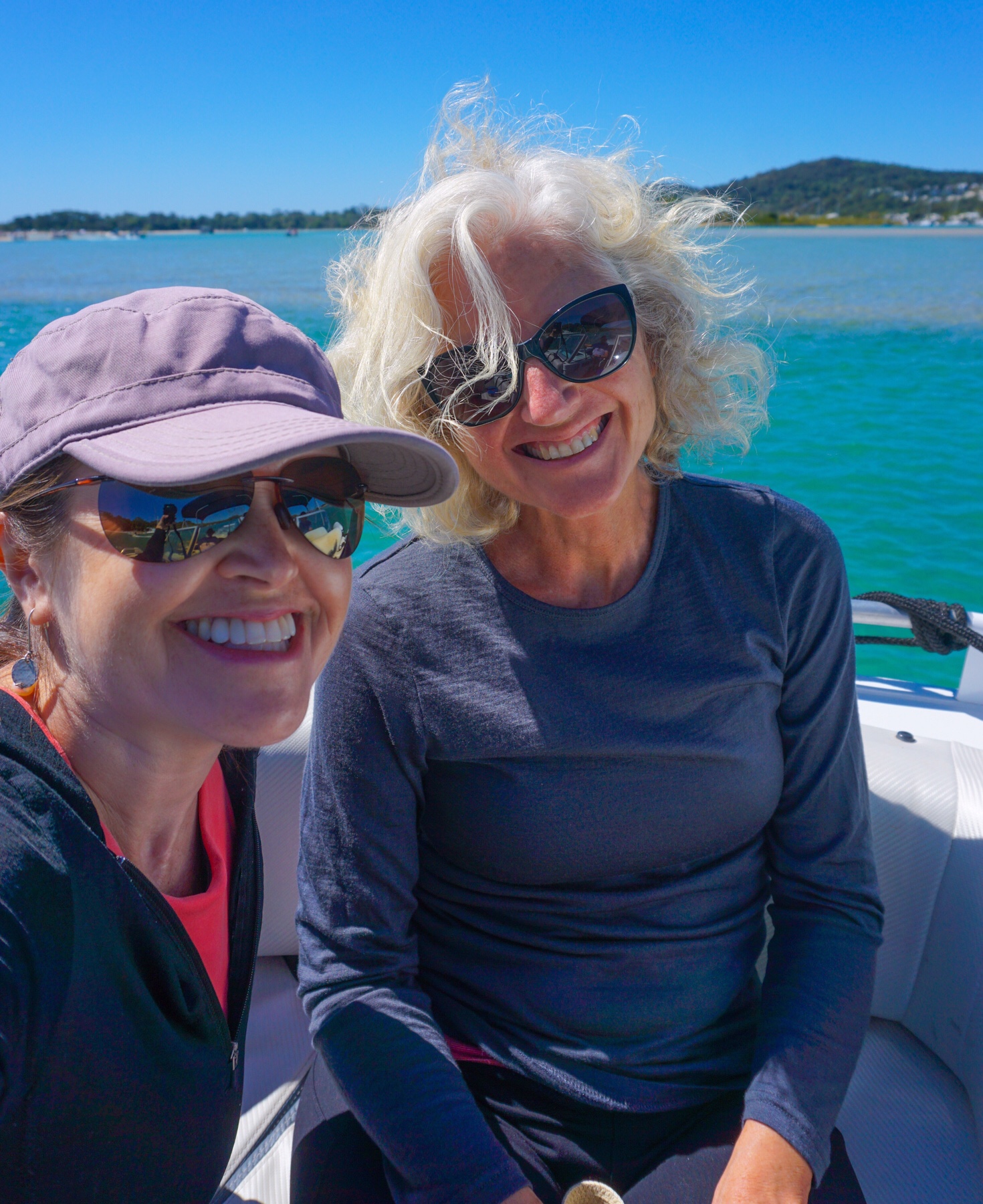
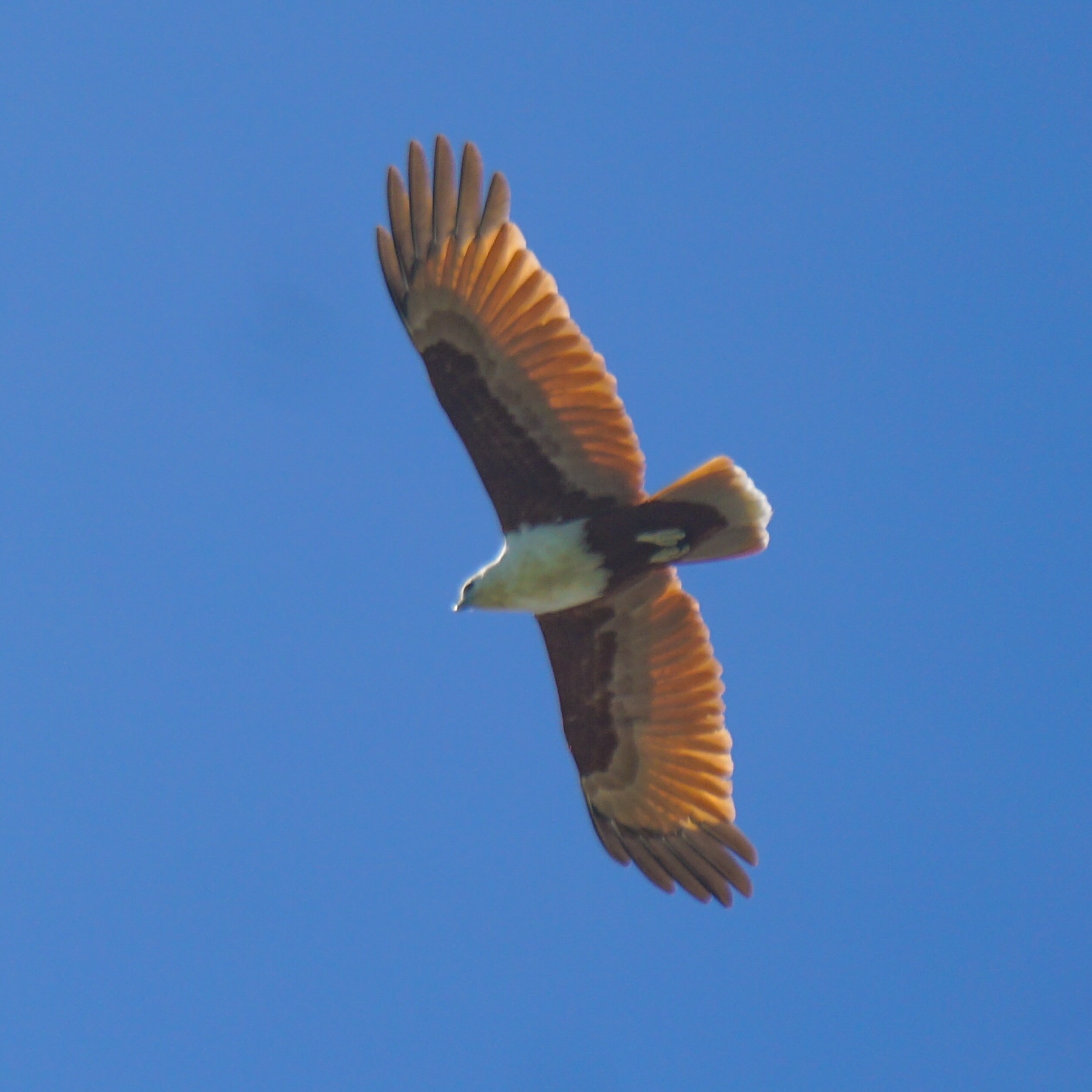
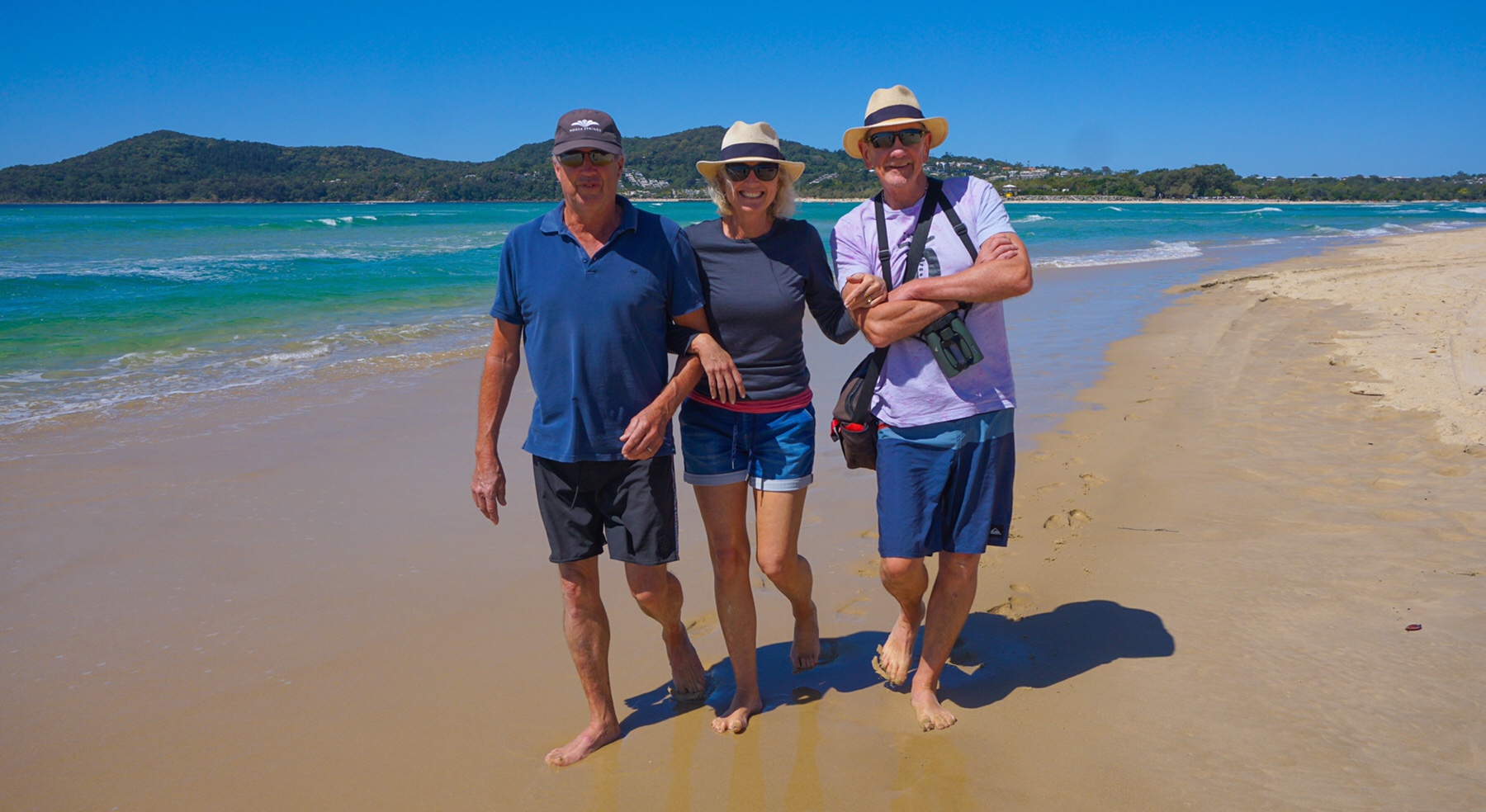
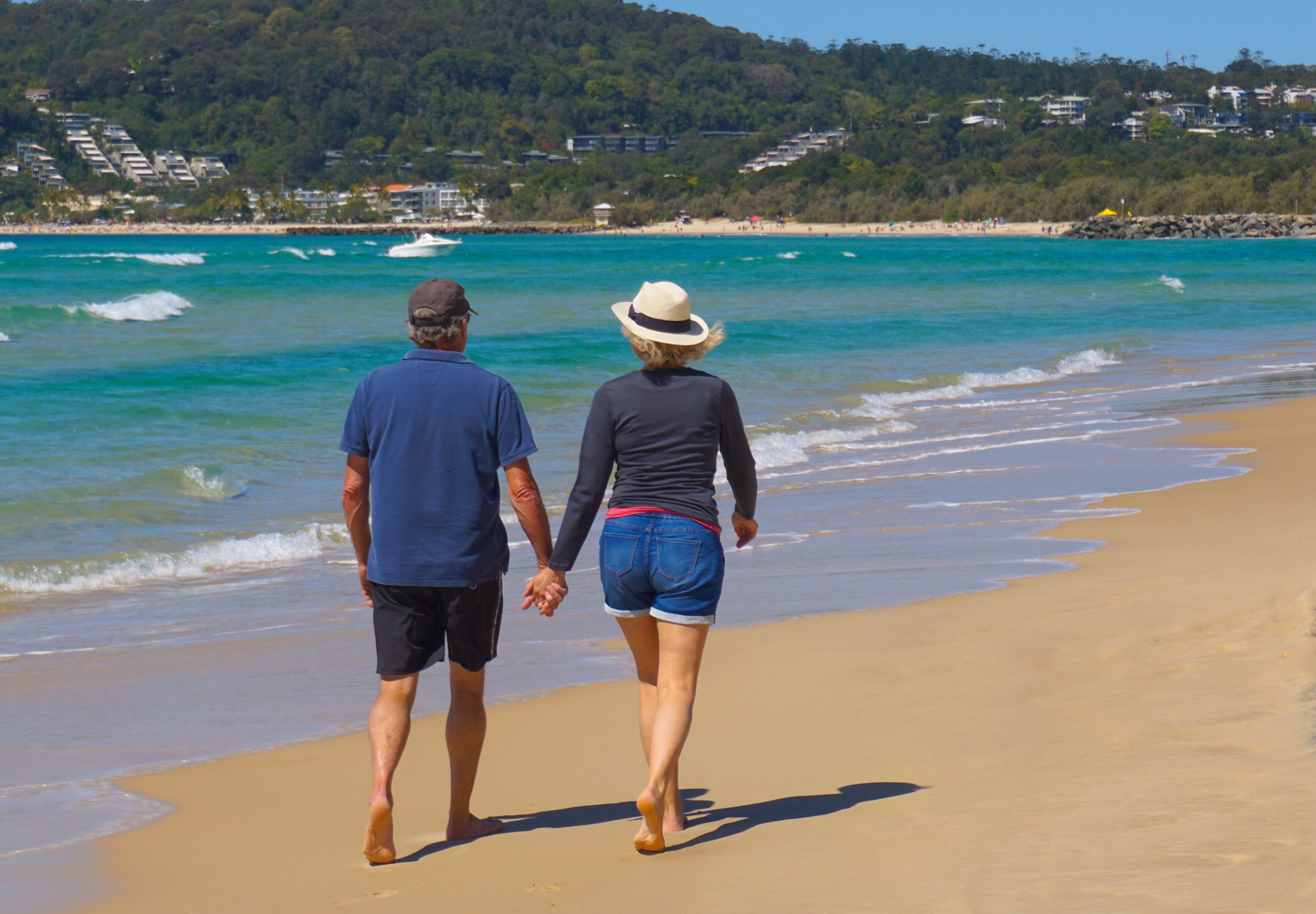
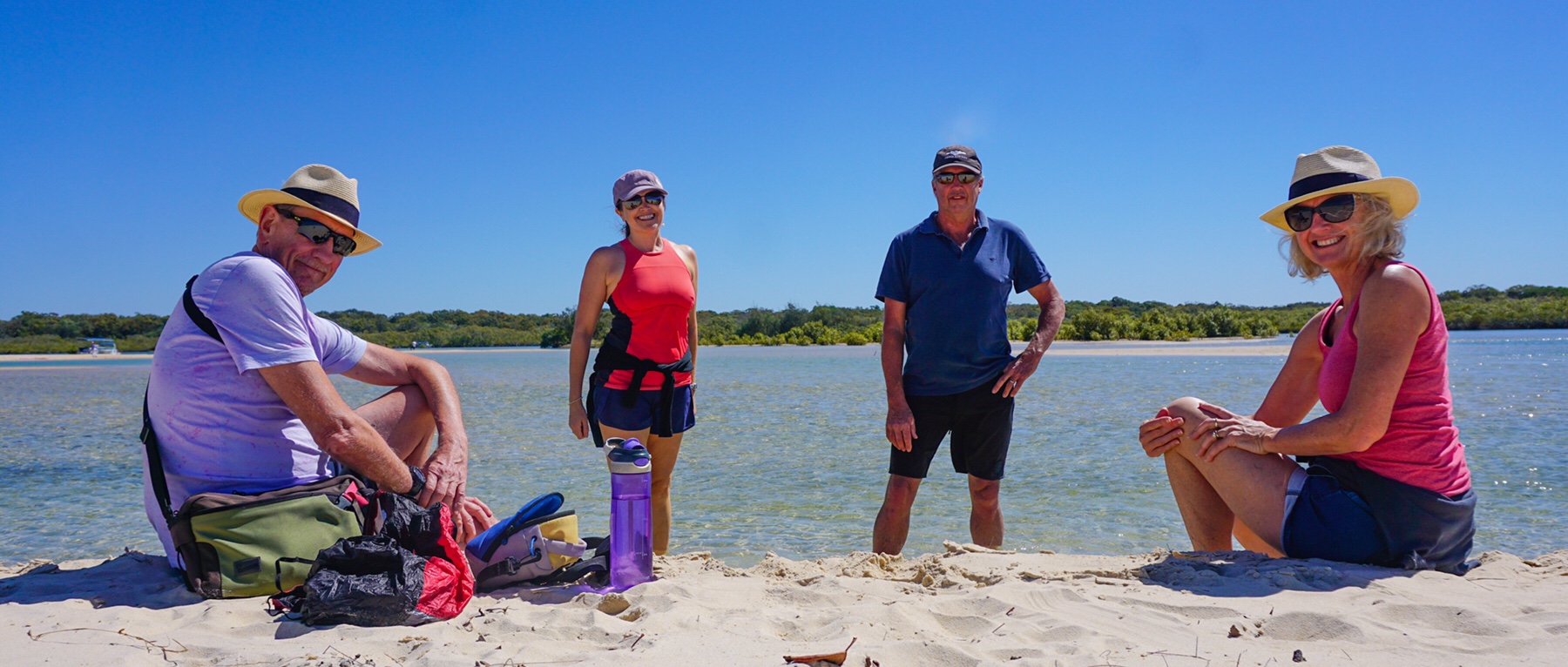 We come back and pile into the fresh produce for lunch.
We come back and pile into the fresh produce for lunch.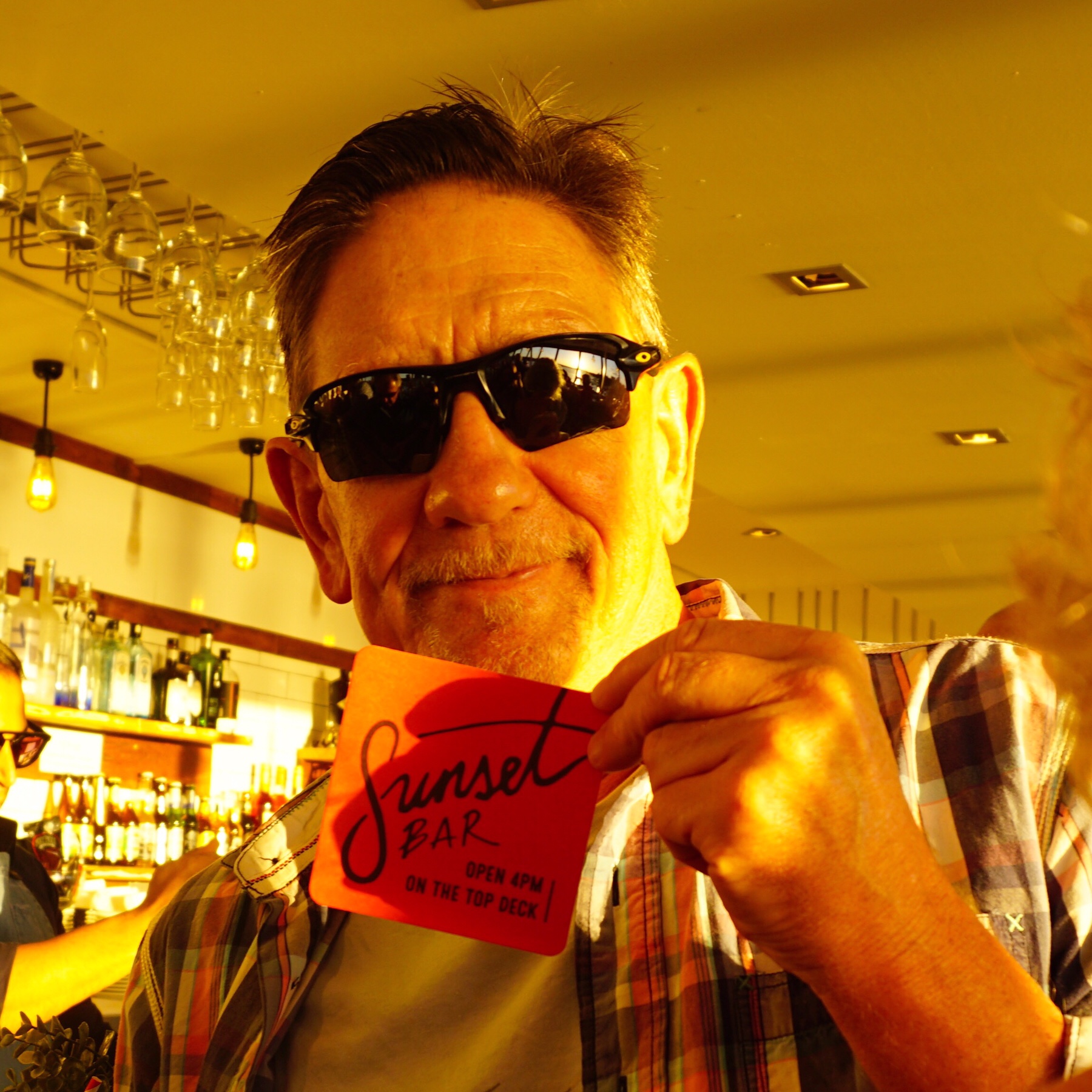
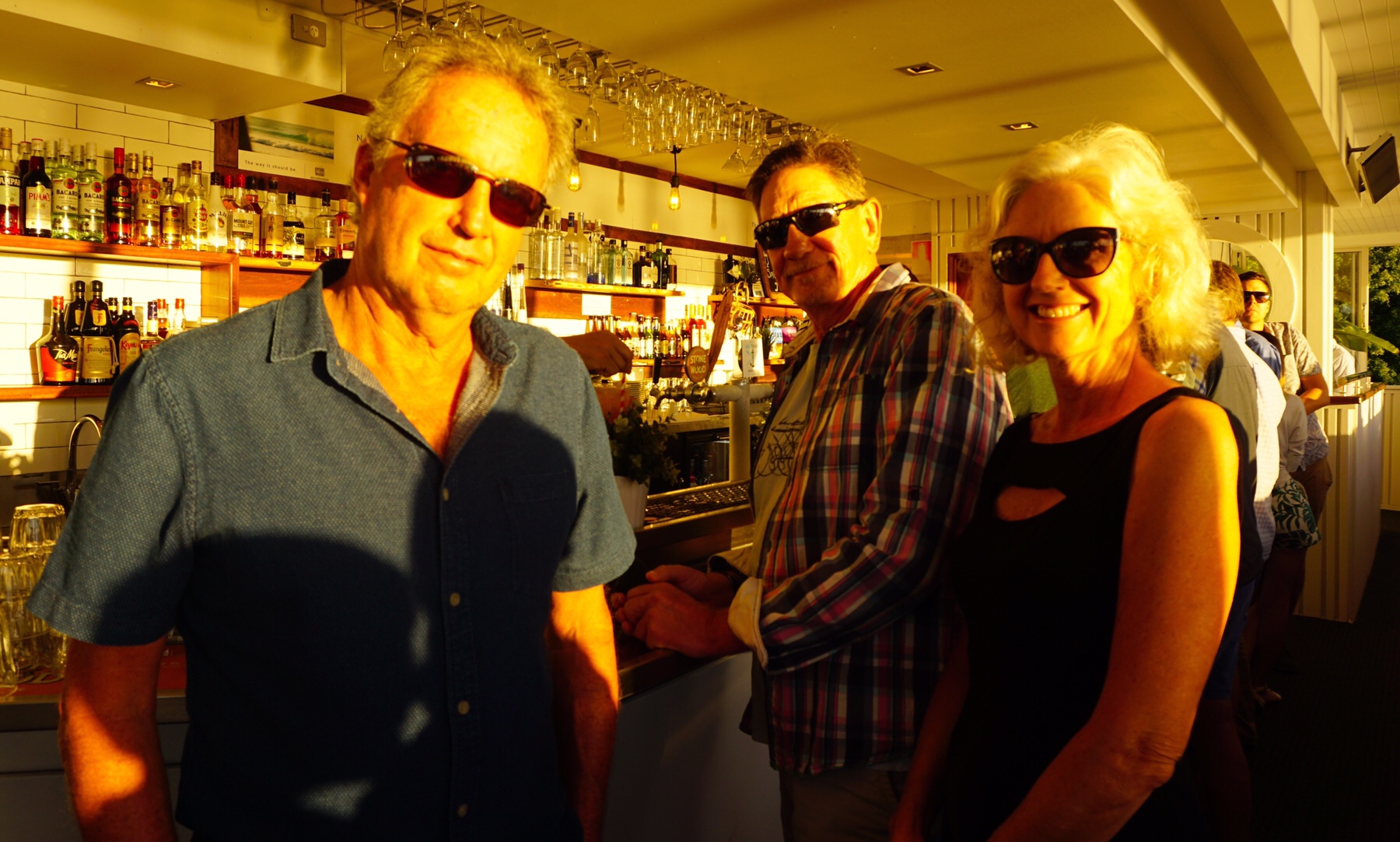
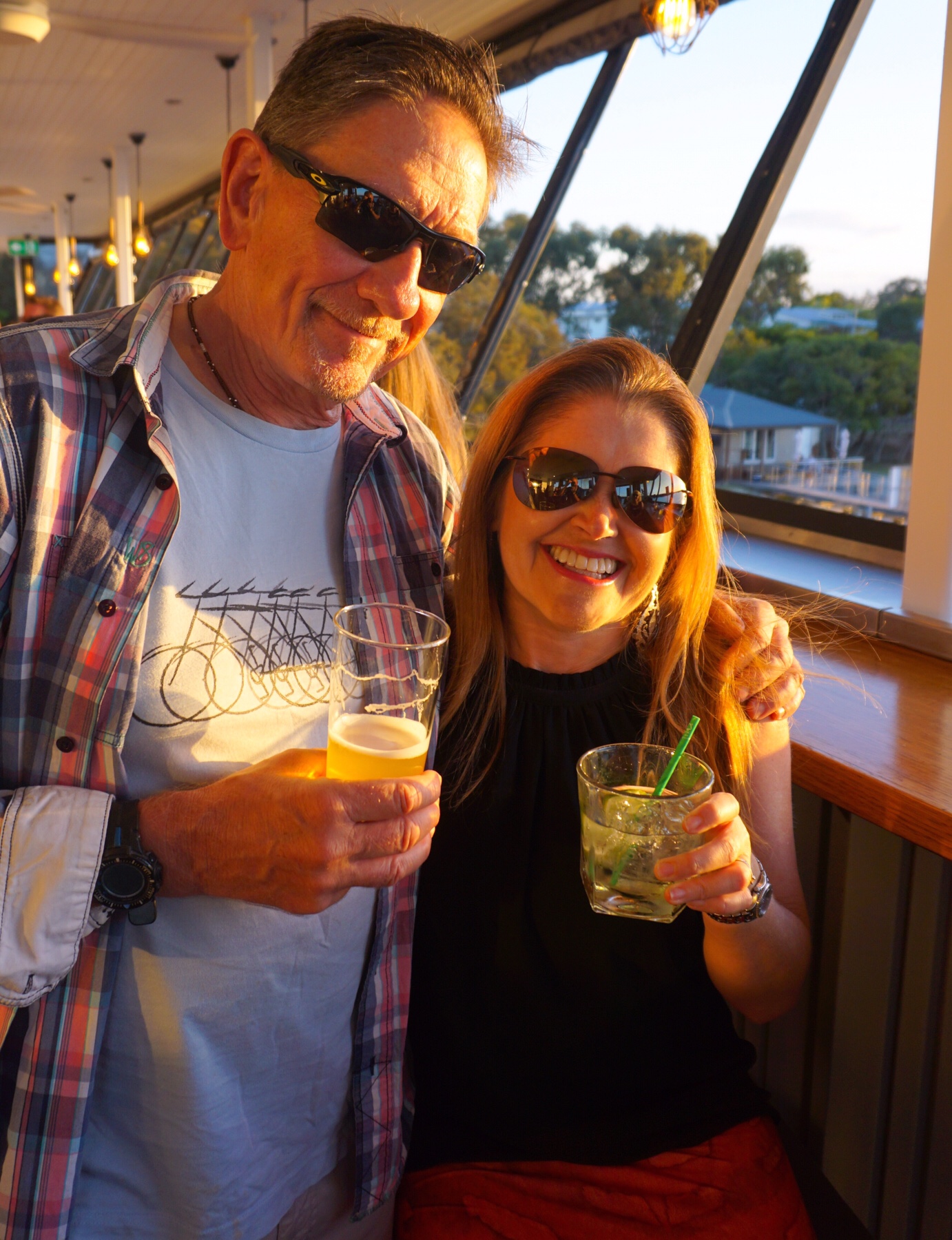
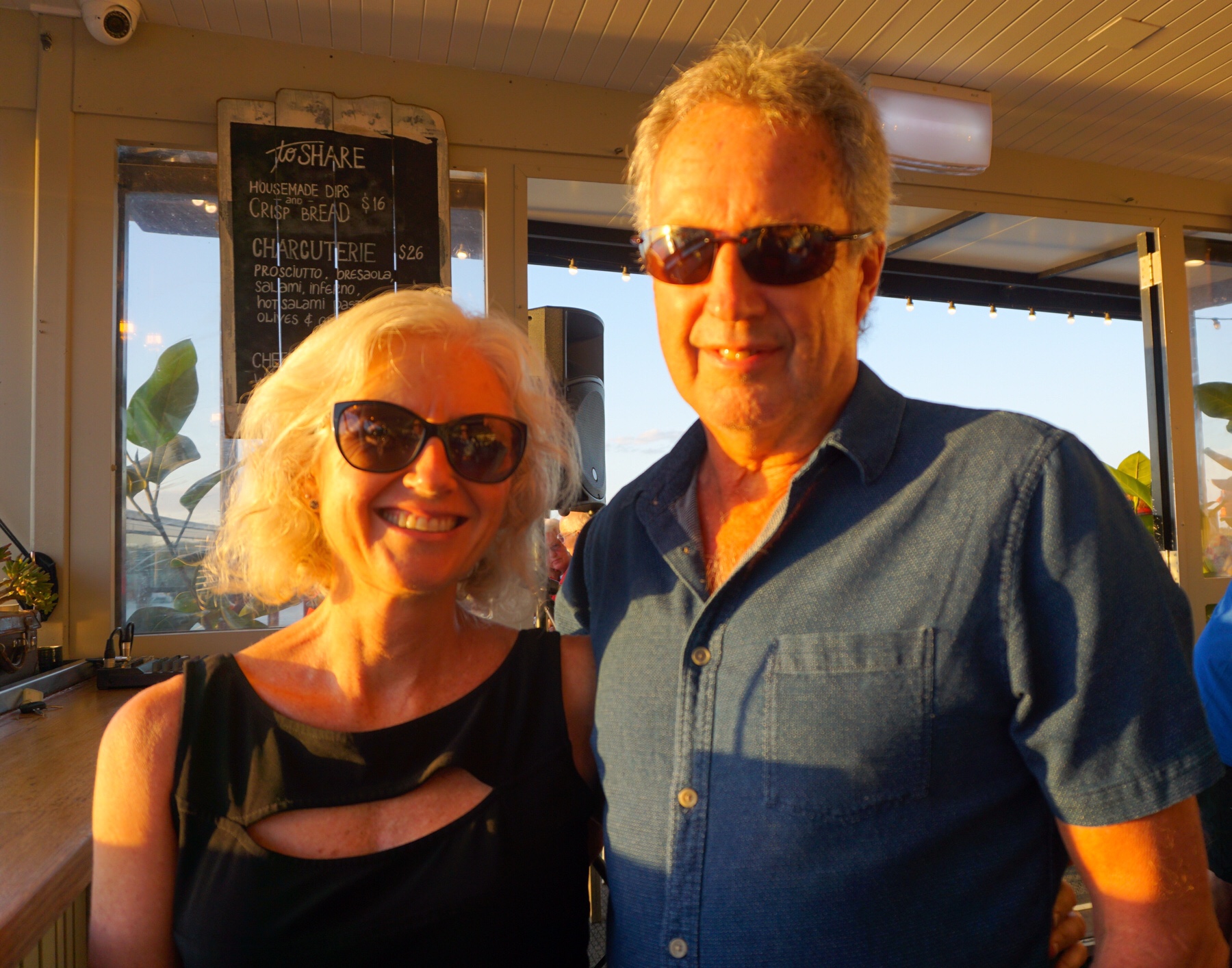 What a view. Great beer on tap, free live music, good bar service. I could enjoy making this a regular Sunday night catch up spot with friends!
What a view. Great beer on tap, free live music, good bar service. I could enjoy making this a regular Sunday night catch up spot with friends!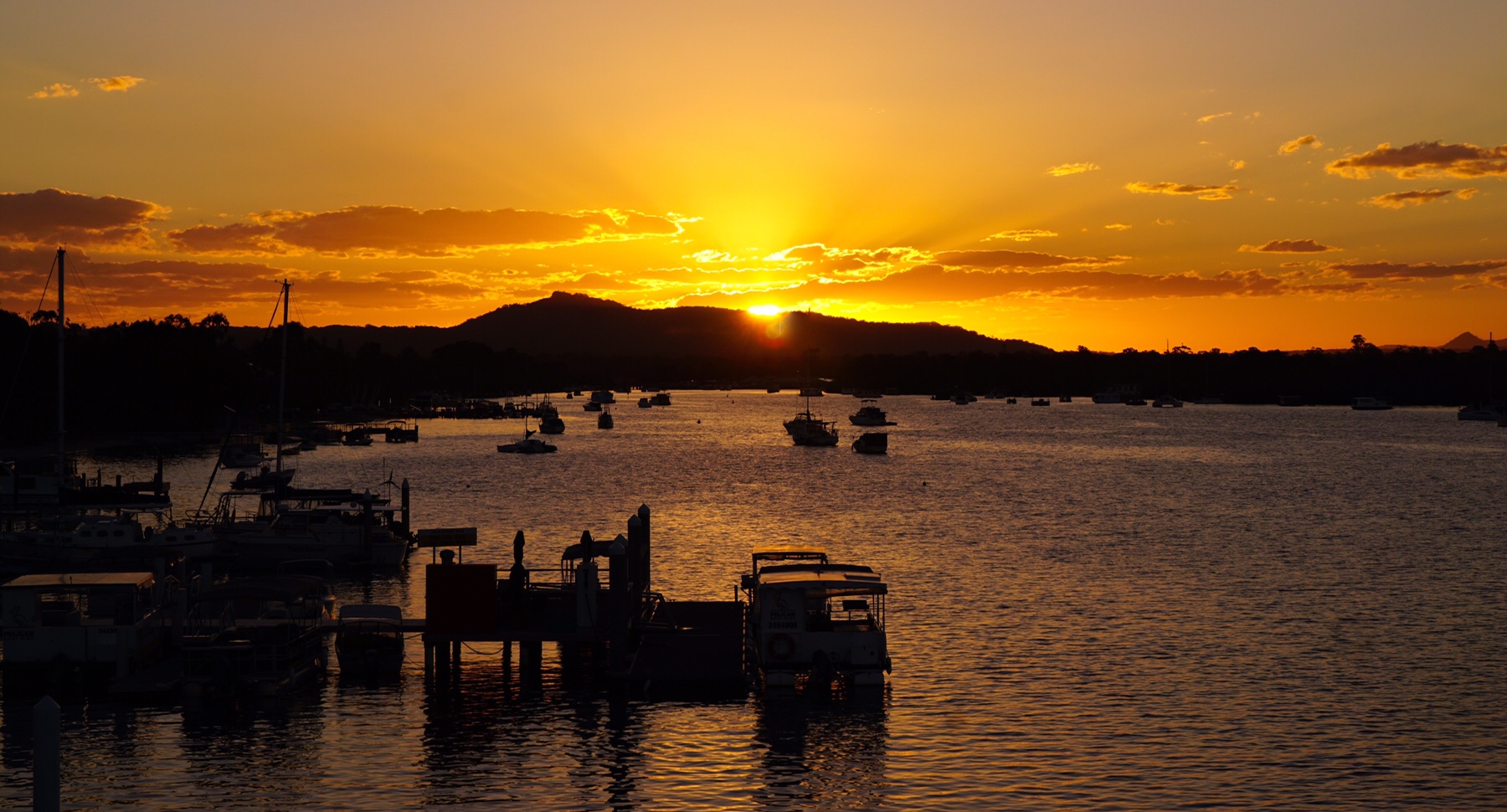
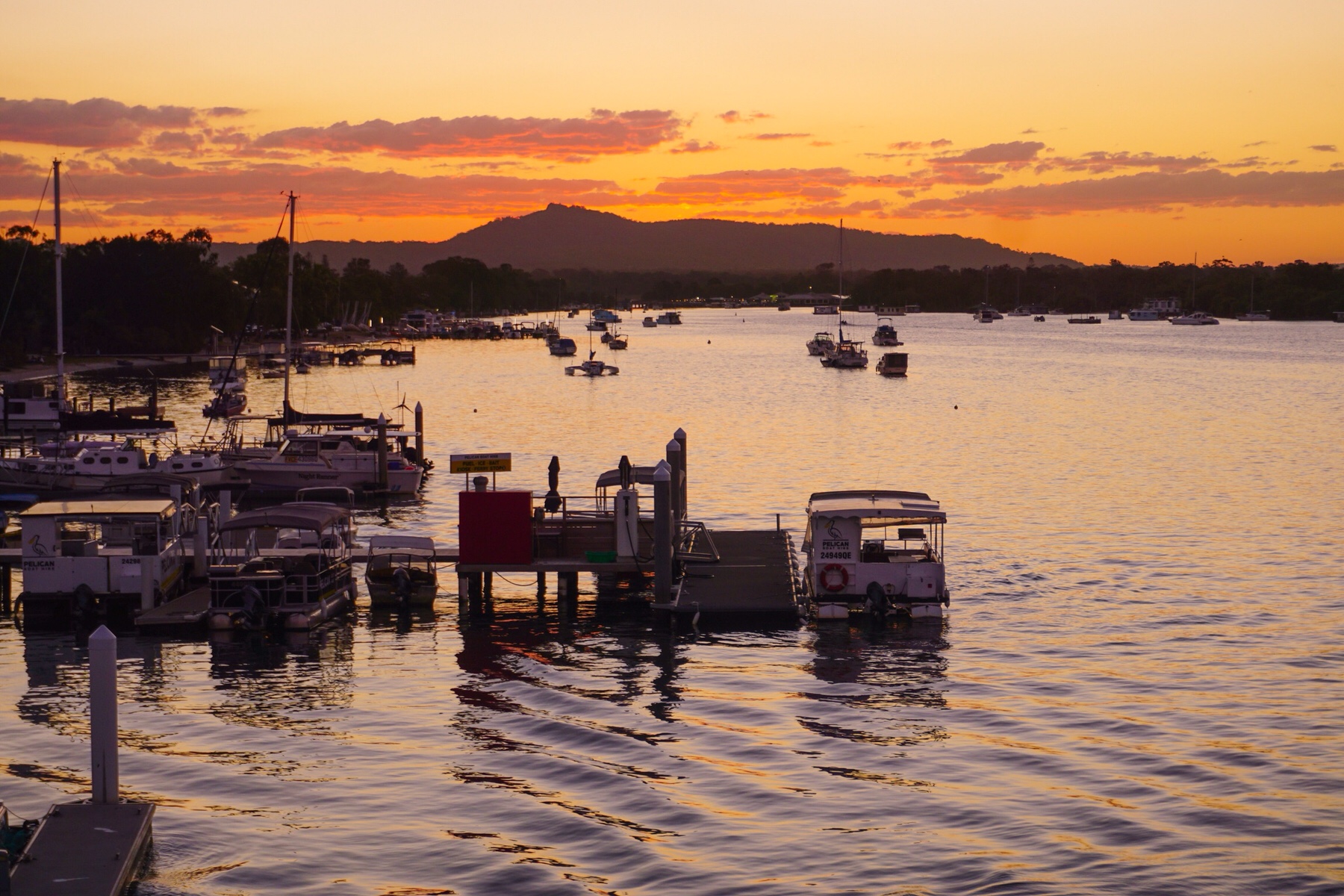
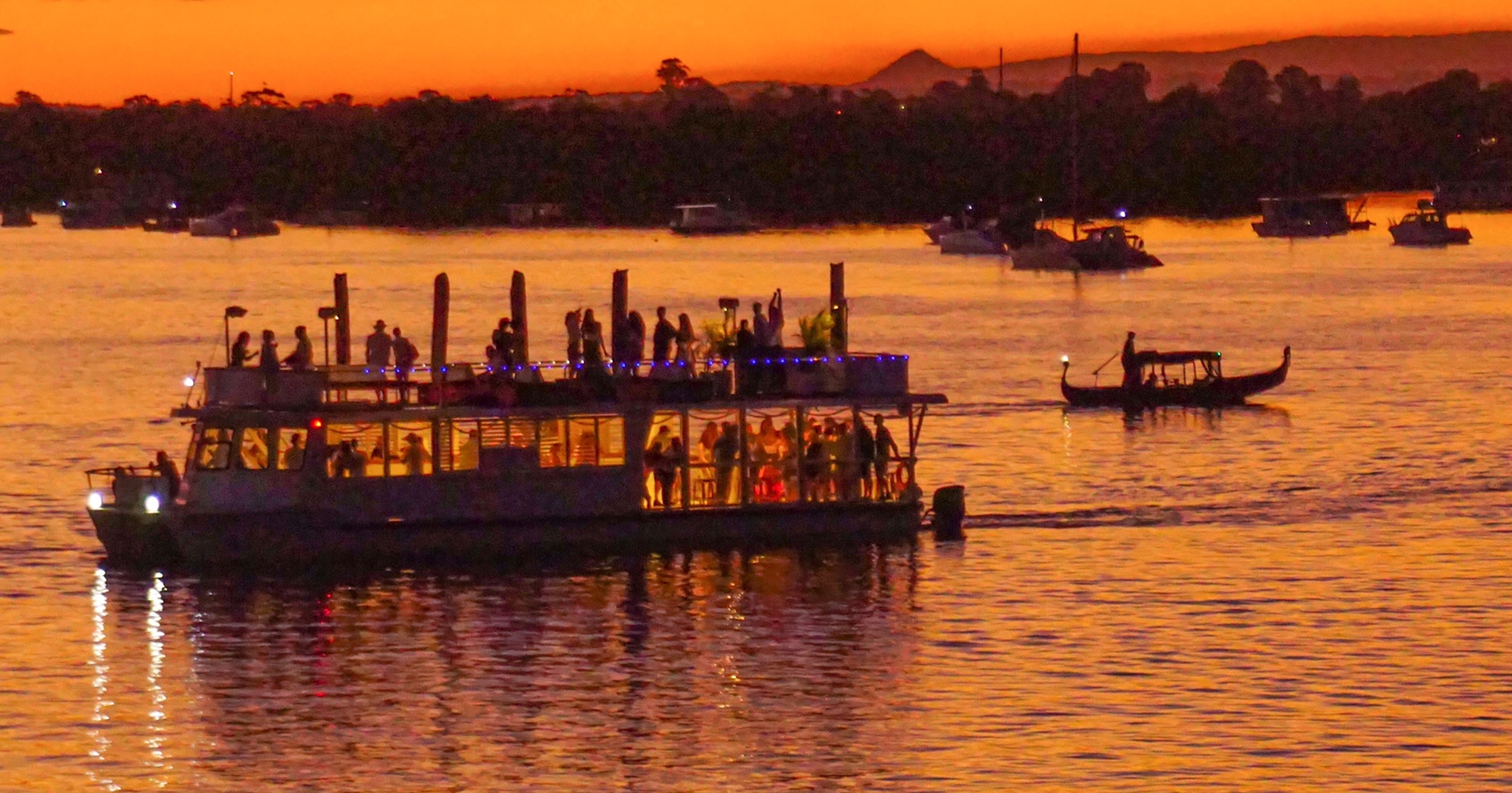
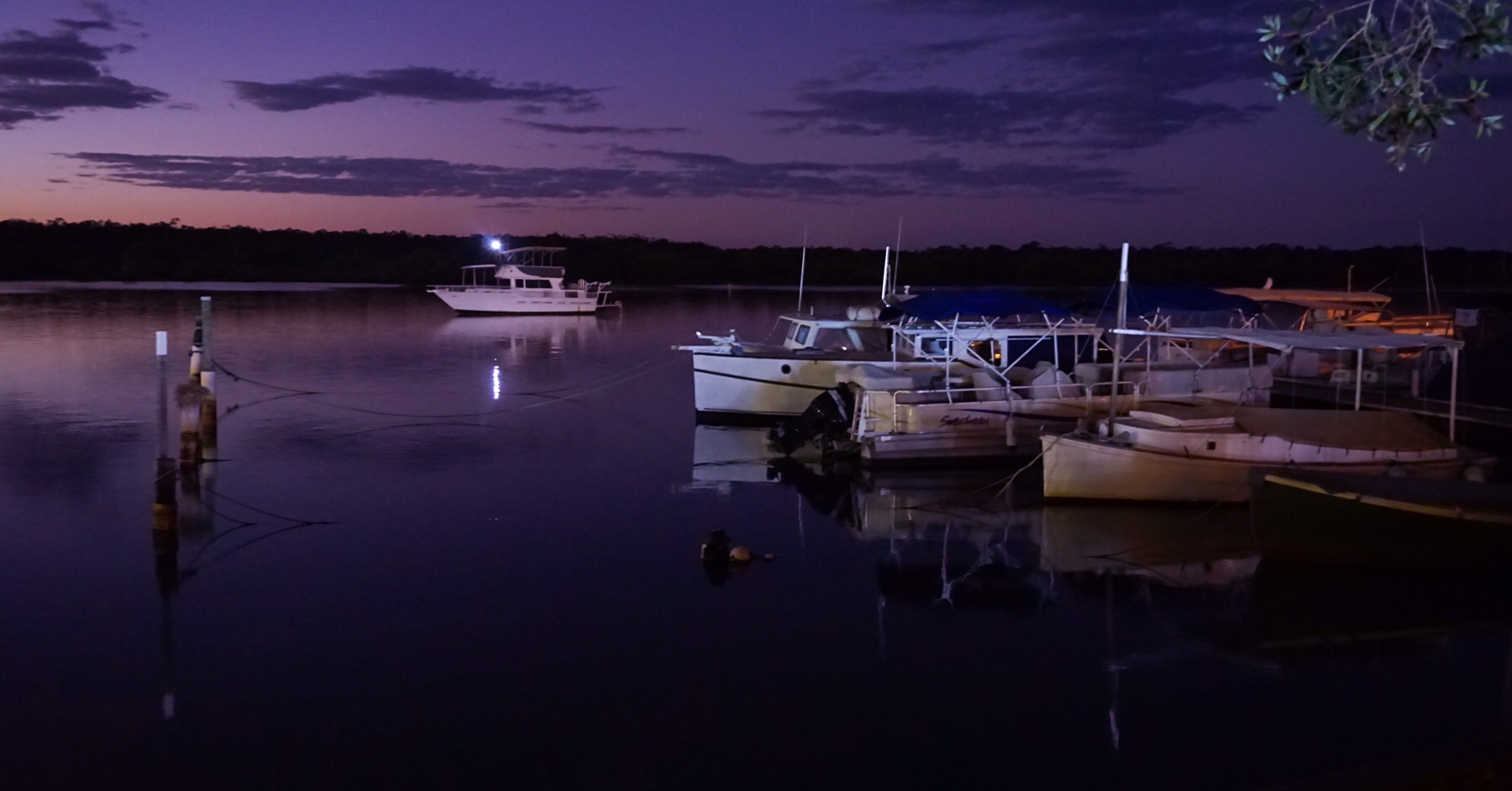
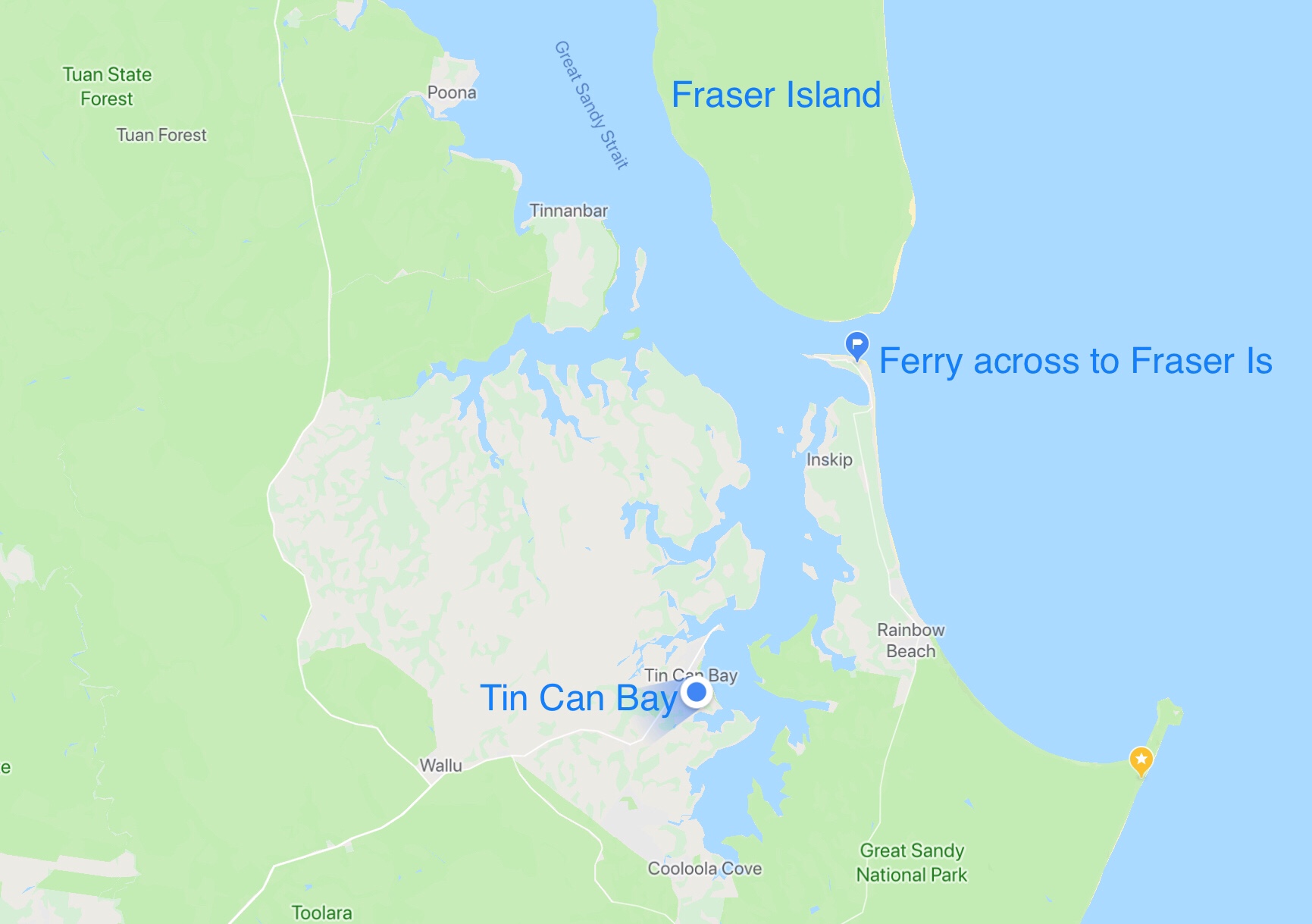
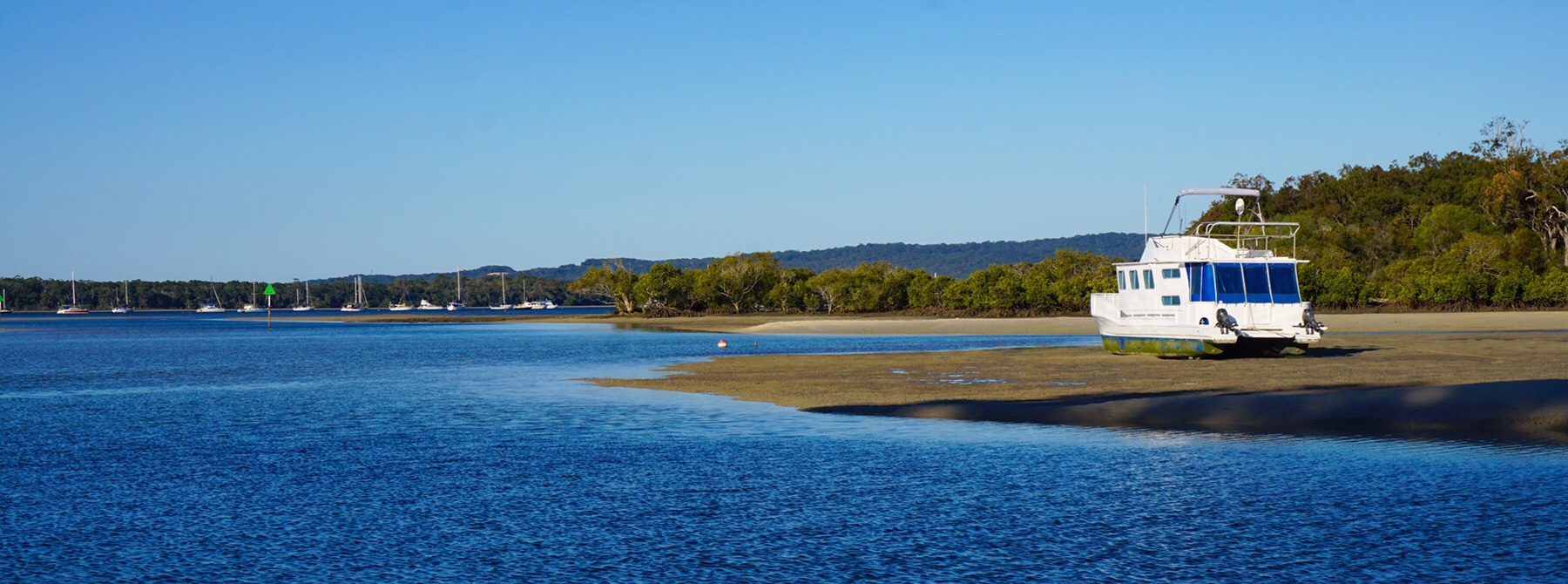
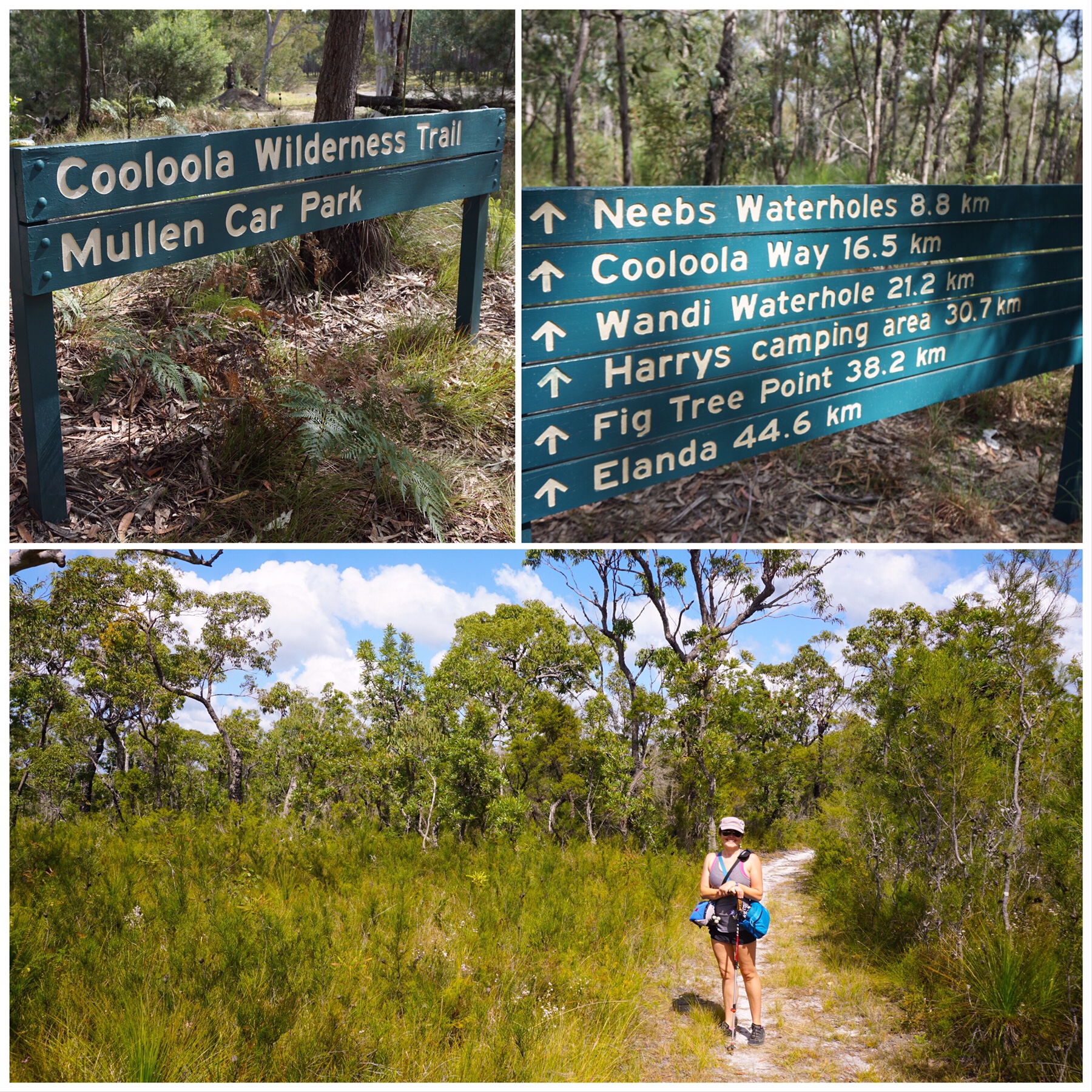 And what a beautiful walk it is. We are days away from the offical start of spring here (1st September) but the wildflowers were out in abundance.
And what a beautiful walk it is. We are days away from the offical start of spring here (1st September) but the wildflowers were out in abundance.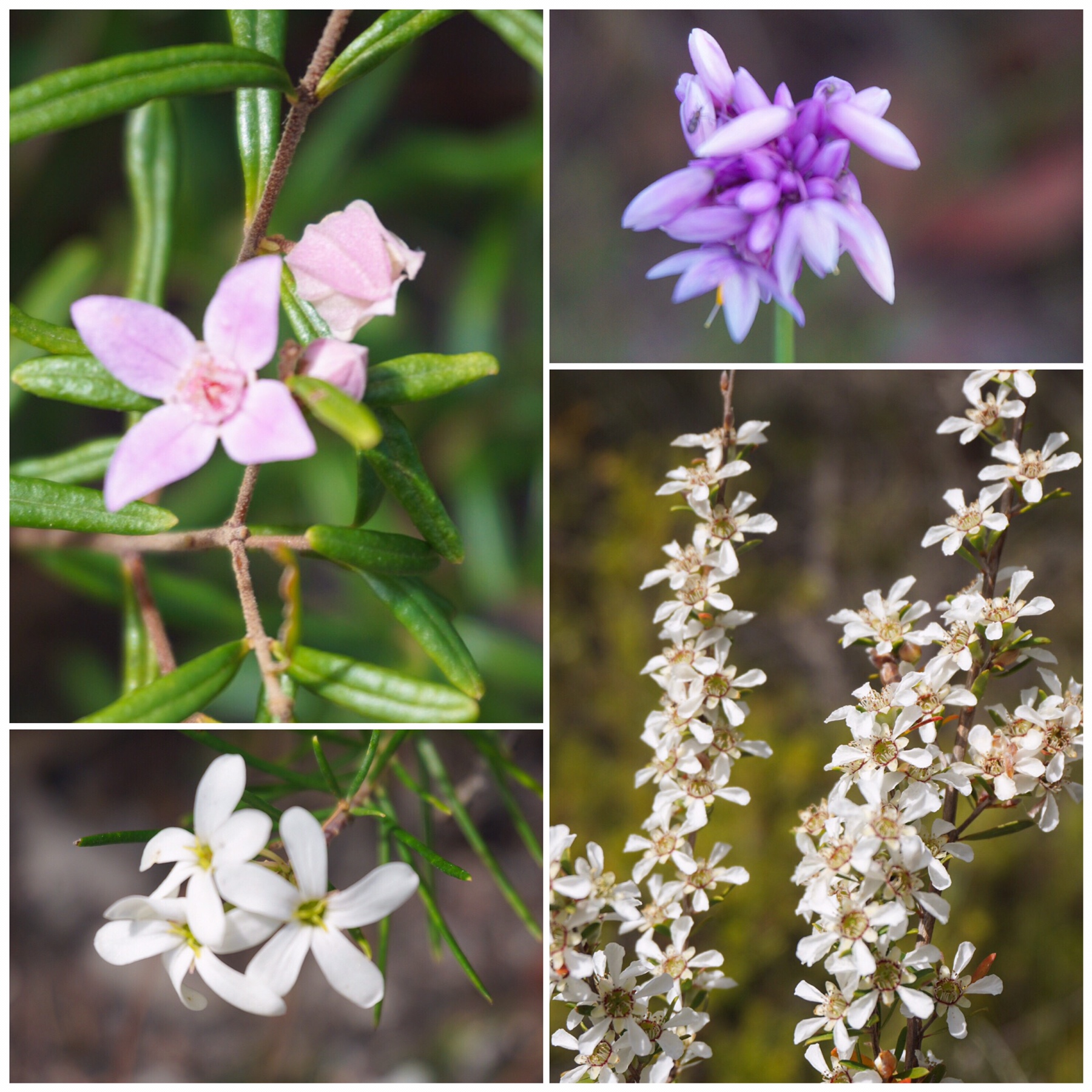 Several varieties of boronia, teatree, bottlebrush, peas, heath, eucalypts and more brightened our pathway, accompanied by the rhythmic hum of insects feeding on the nectar. It really was good for the soul and reminded us how much we love bush walking at this time of year.
Several varieties of boronia, teatree, bottlebrush, peas, heath, eucalypts and more brightened our pathway, accompanied by the rhythmic hum of insects feeding on the nectar. It really was good for the soul and reminded us how much we love bush walking at this time of year.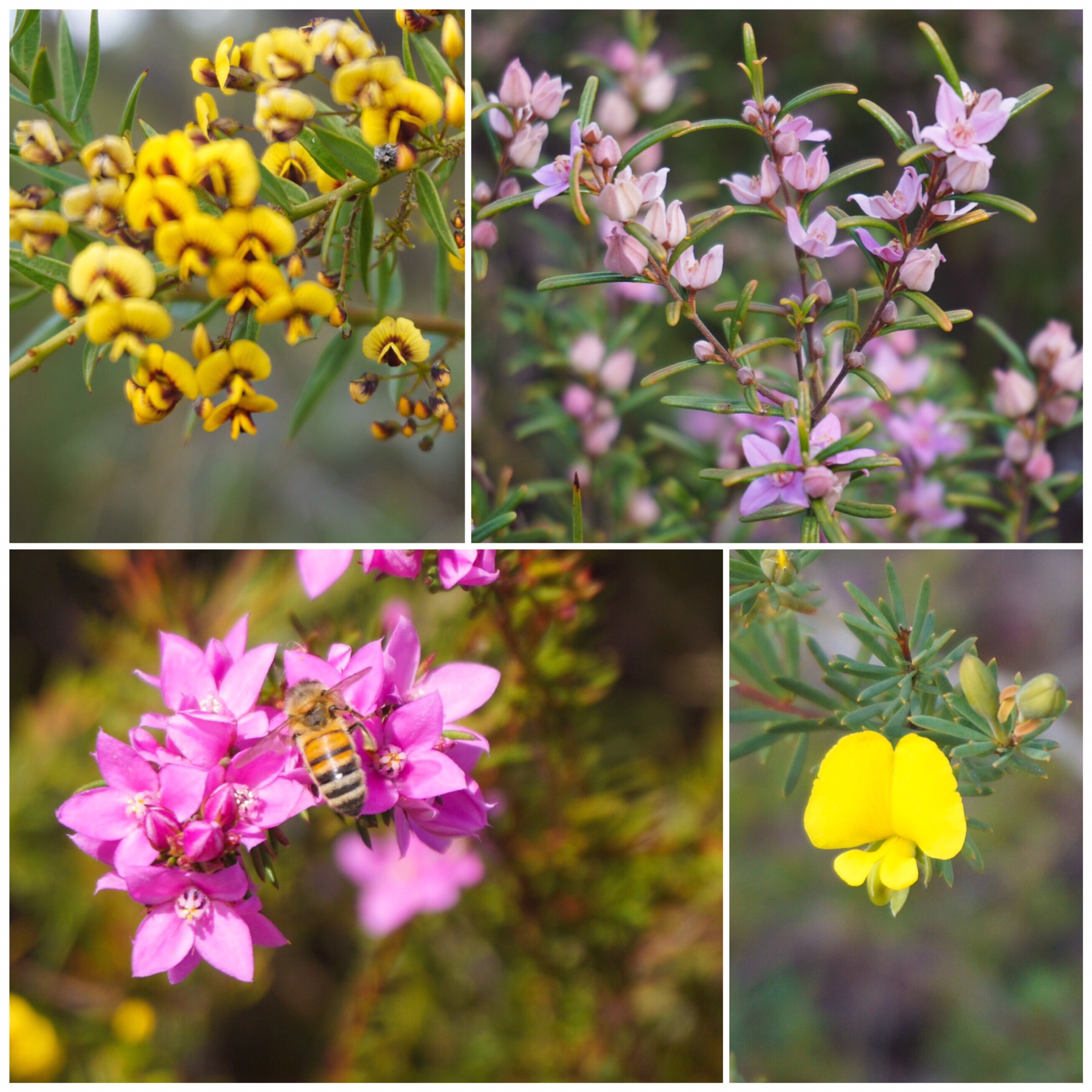
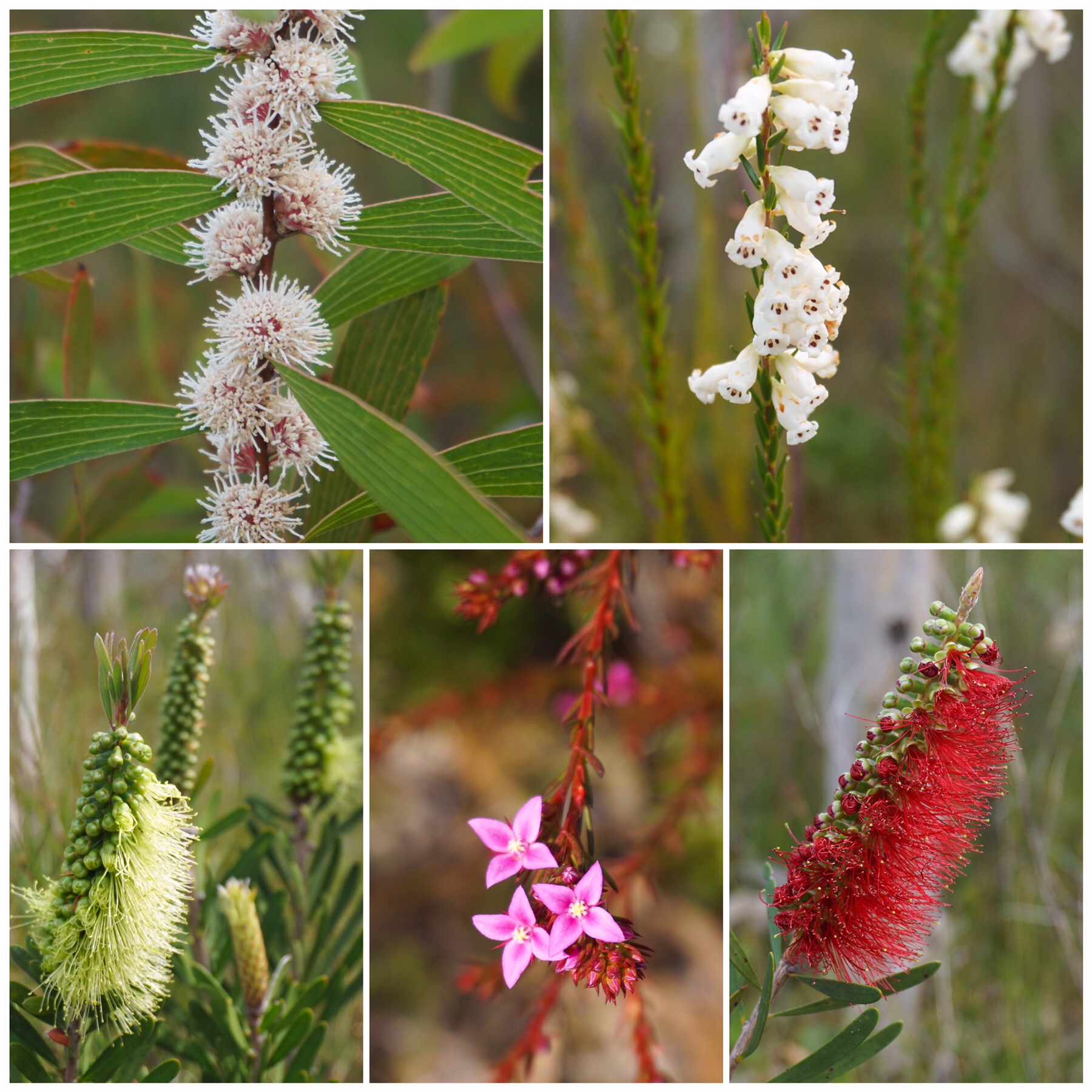 The pathway was well marked and predominantly white sand or grass, very easy walking with a couple of water crossings along the way. The landscape was quite open with good views to the east, across to the Great Sandy National Park.
The pathway was well marked and predominantly white sand or grass, very easy walking with a couple of water crossings along the way. The landscape was quite open with good views to the east, across to the Great Sandy National Park.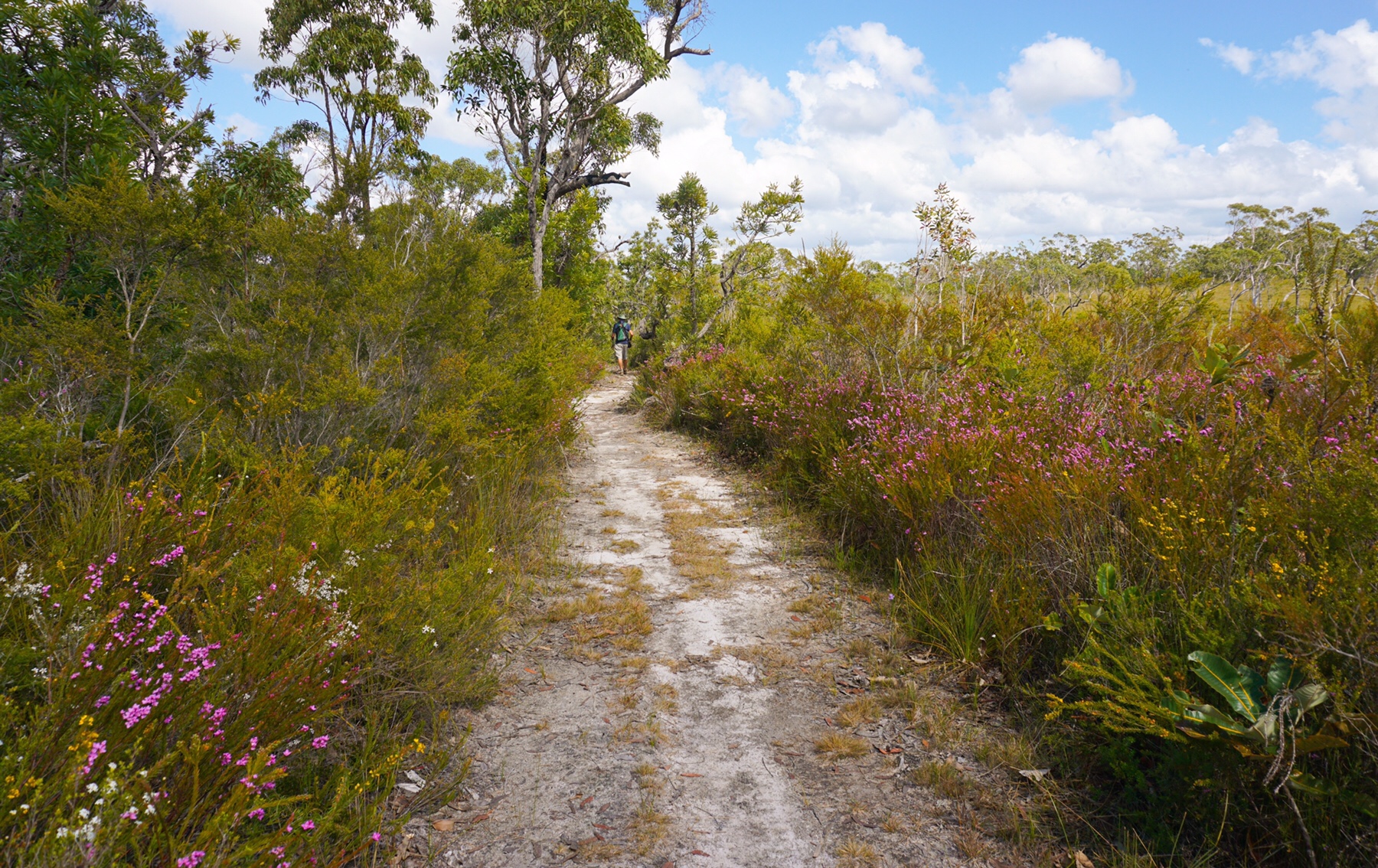
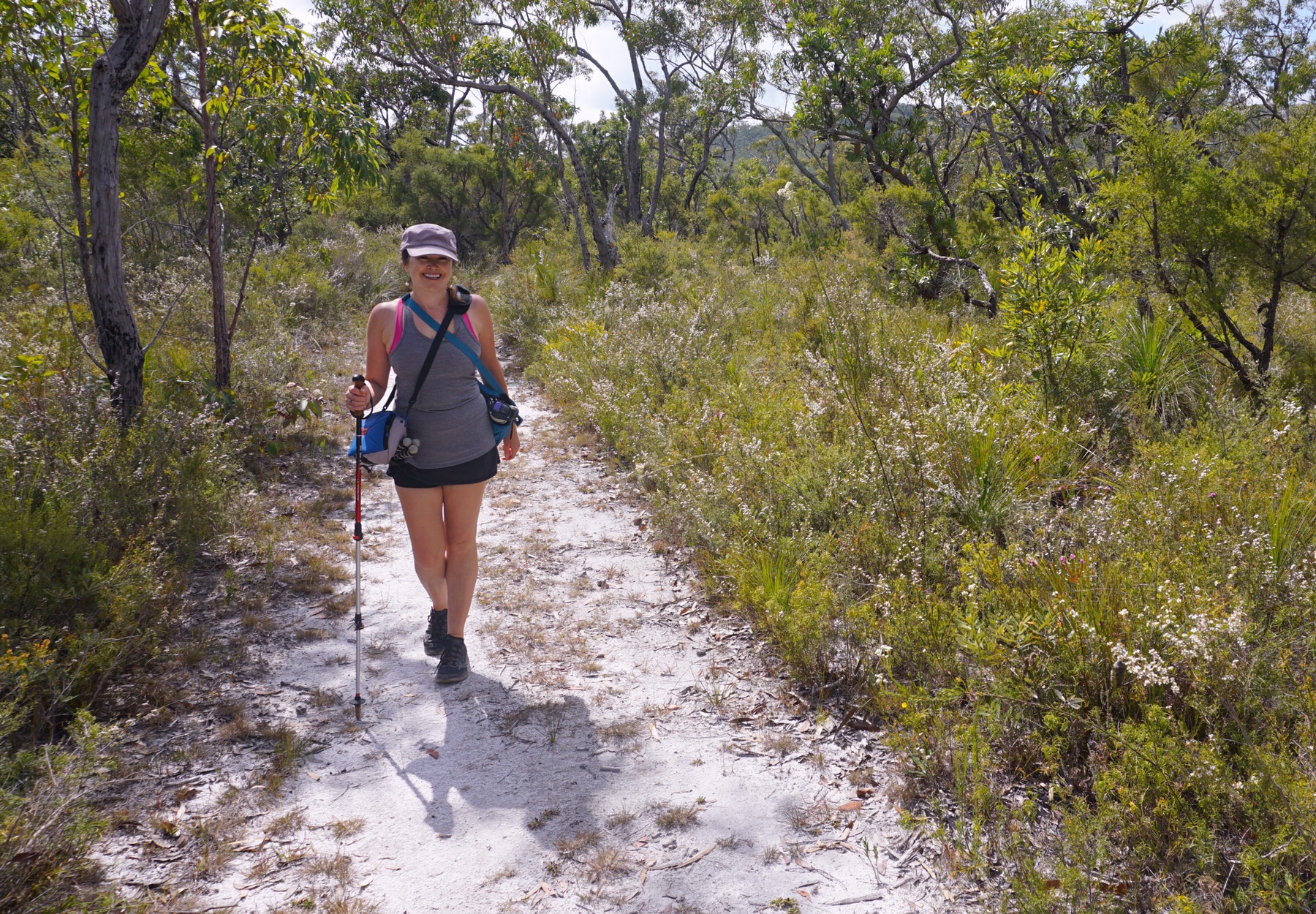

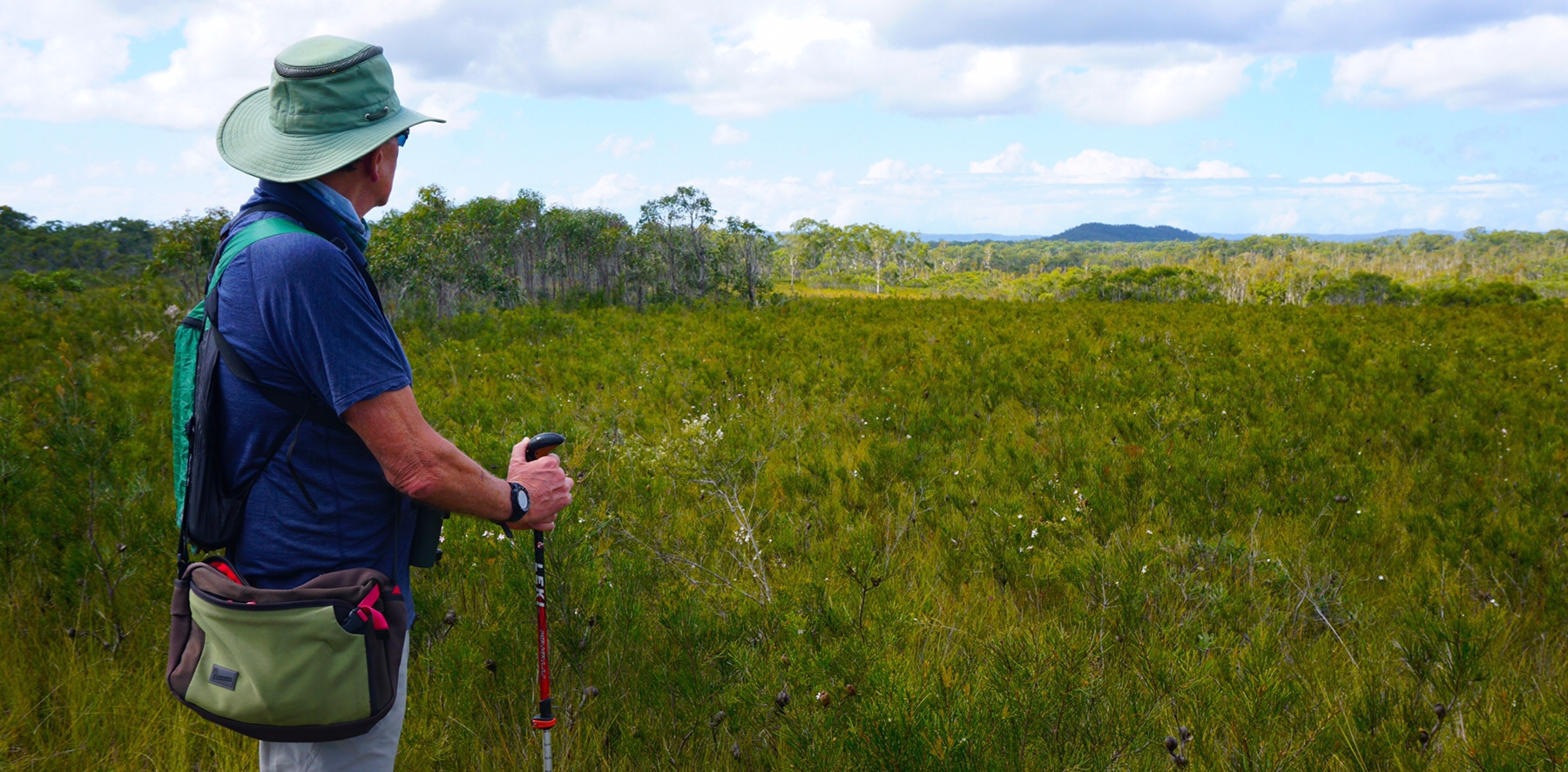
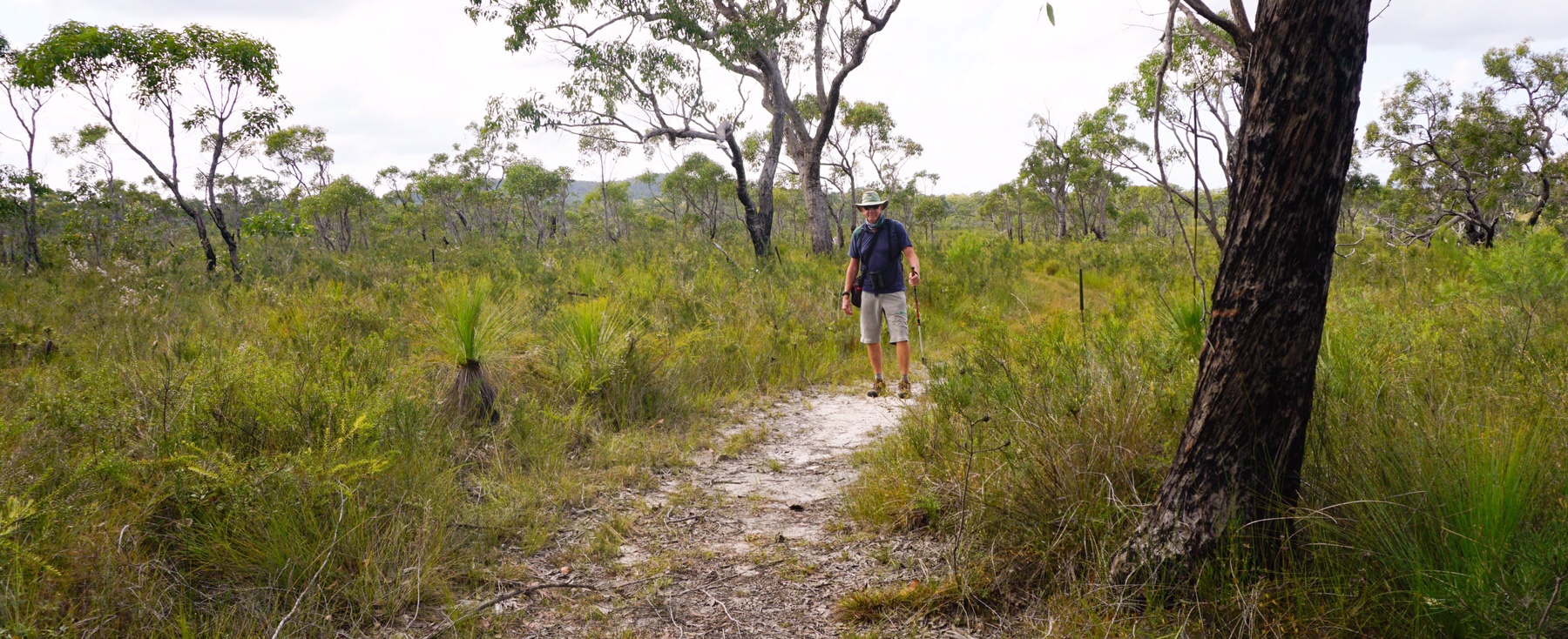 Even the trunks of the gum trees were beautiful!
Even the trunks of the gum trees were beautiful!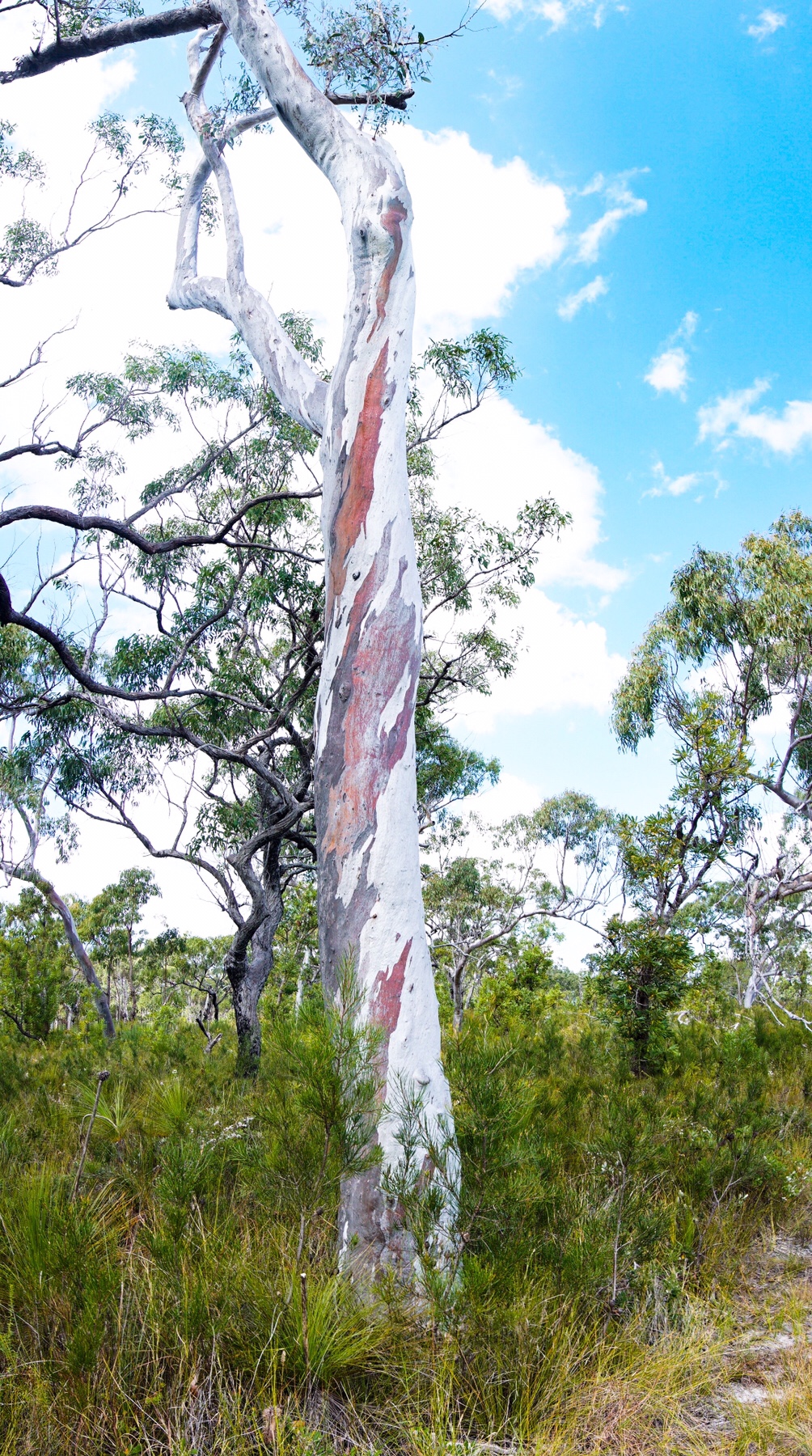
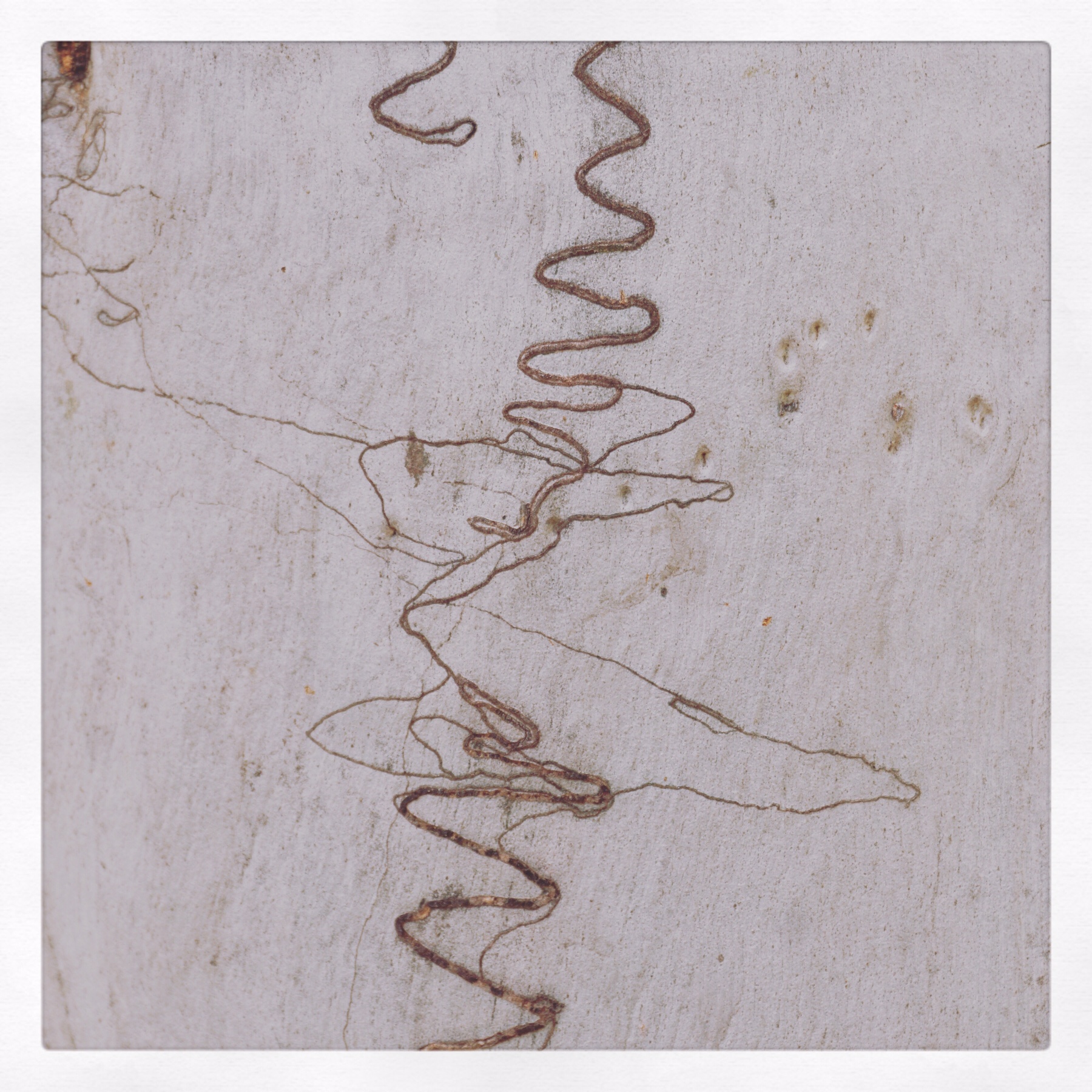 We stopped walking after around 5km when we saw the path dropping steeply downhill, remembering we had to turn around at some point and return via the same route.
We stopped walking after around 5km when we saw the path dropping steeply downhill, remembering we had to turn around at some point and return via the same route.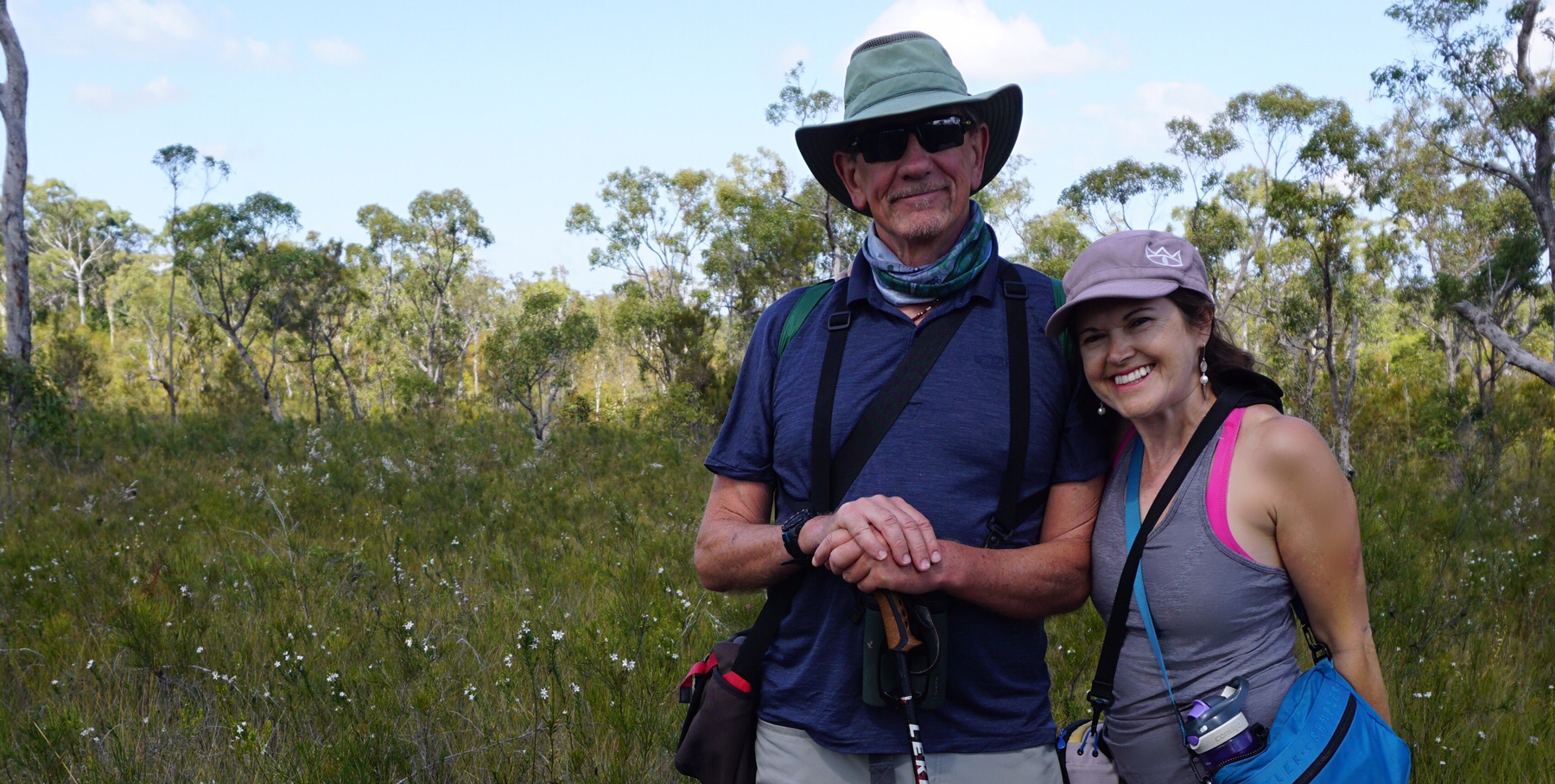 We definitely recommend getting out and enjoying the Australian bush at this time of year.
We definitely recommend getting out and enjoying the Australian bush at this time of year.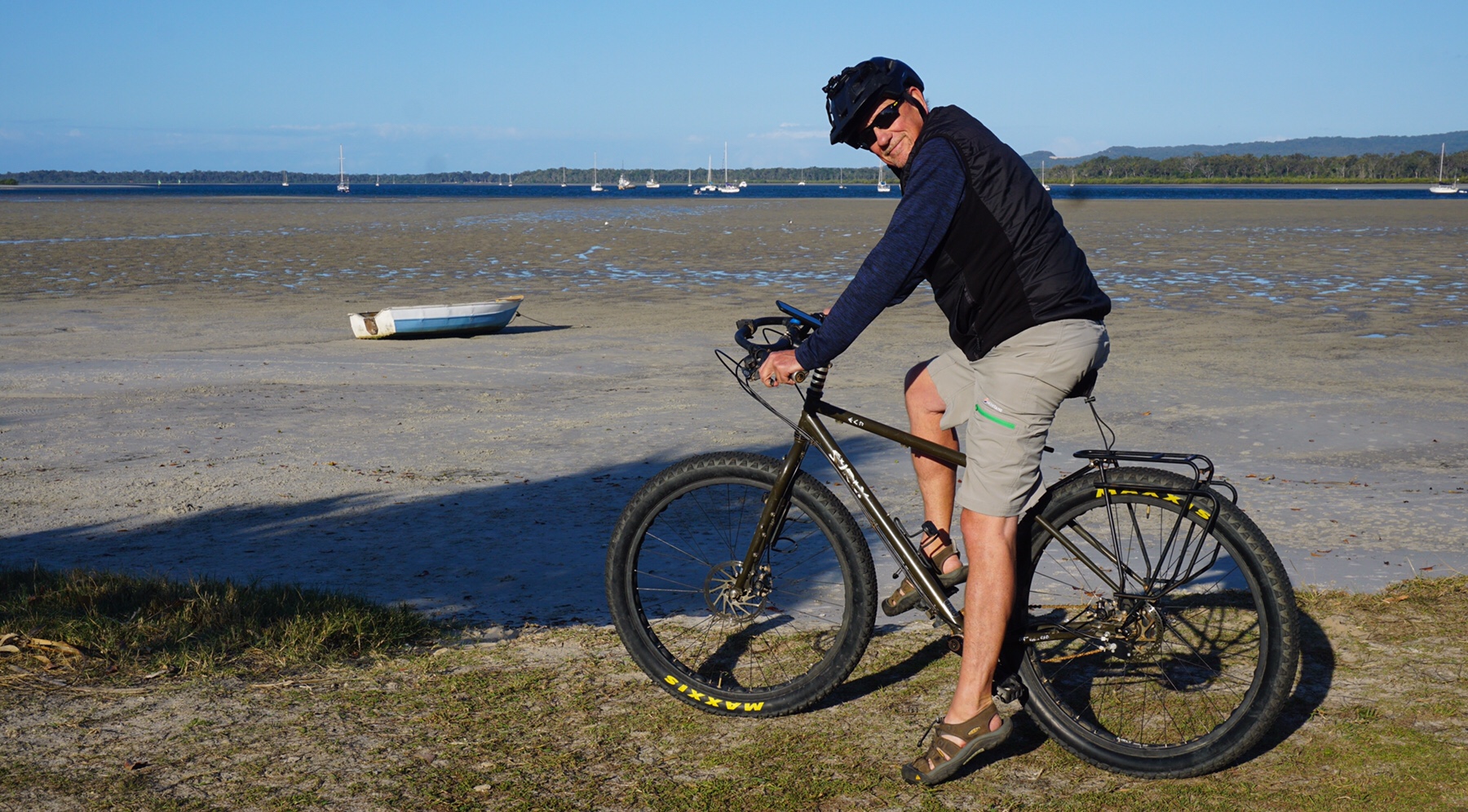
 We were soon sampling a plate of Tibetan dumplings, I had an Argentinian empanada which was simply delicious, also some dairy free donuts packed to go. We then spotted the Japanese pancake stall, we had not seen these since Sydney. Wow…a taste sensation.
We were soon sampling a plate of Tibetan dumplings, I had an Argentinian empanada which was simply delicious, also some dairy free donuts packed to go. We then spotted the Japanese pancake stall, we had not seen these since Sydney. Wow…a taste sensation.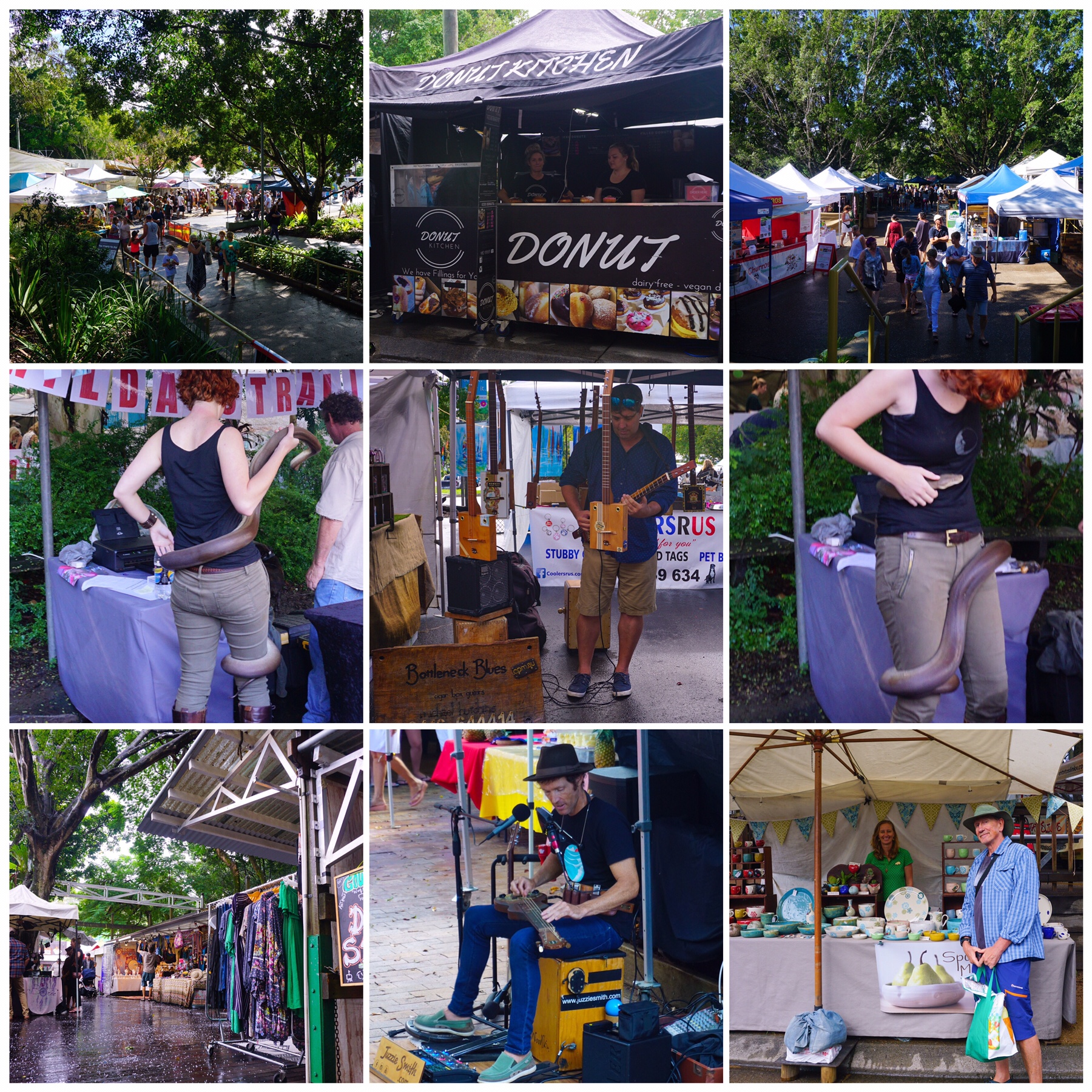 Suitably sated we picked up a small bowl from a pottery stall we could use a mortar, plenty of peanuts and chillies to grind up for our Pad Thai creation for instance.
Suitably sated we picked up a small bowl from a pottery stall we could use a mortar, plenty of peanuts and chillies to grind up for our Pad Thai creation for instance.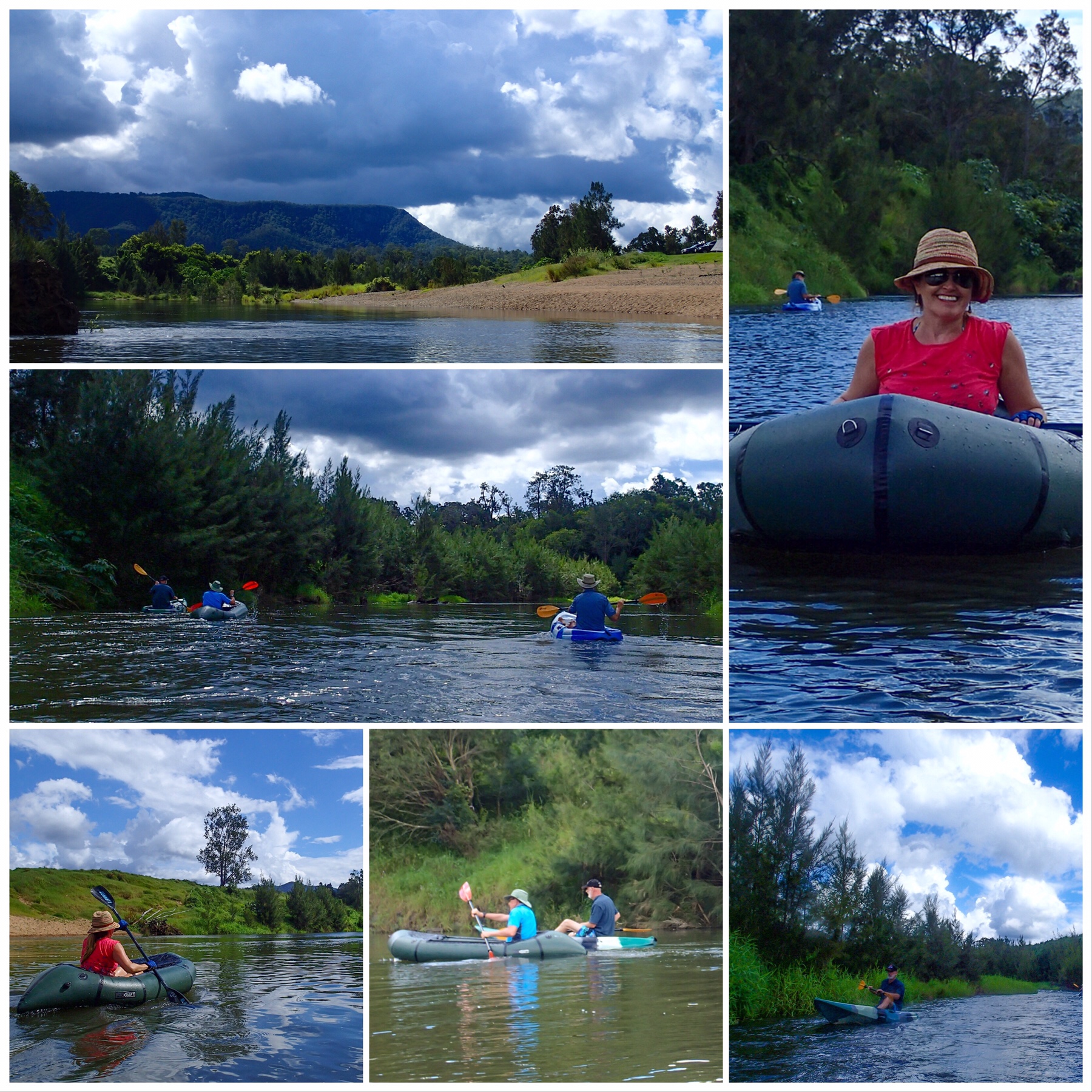 We all then started to prepare the camp for tonight’s visitors from Zone RV. They had kindly offered to give up their Saturday afternoon and evening and have a bit of a chat with us about our experiences with their products and service.
We all then started to prepare the camp for tonight’s visitors from Zone RV. They had kindly offered to give up their Saturday afternoon and evening and have a bit of a chat with us about our experiences with their products and service.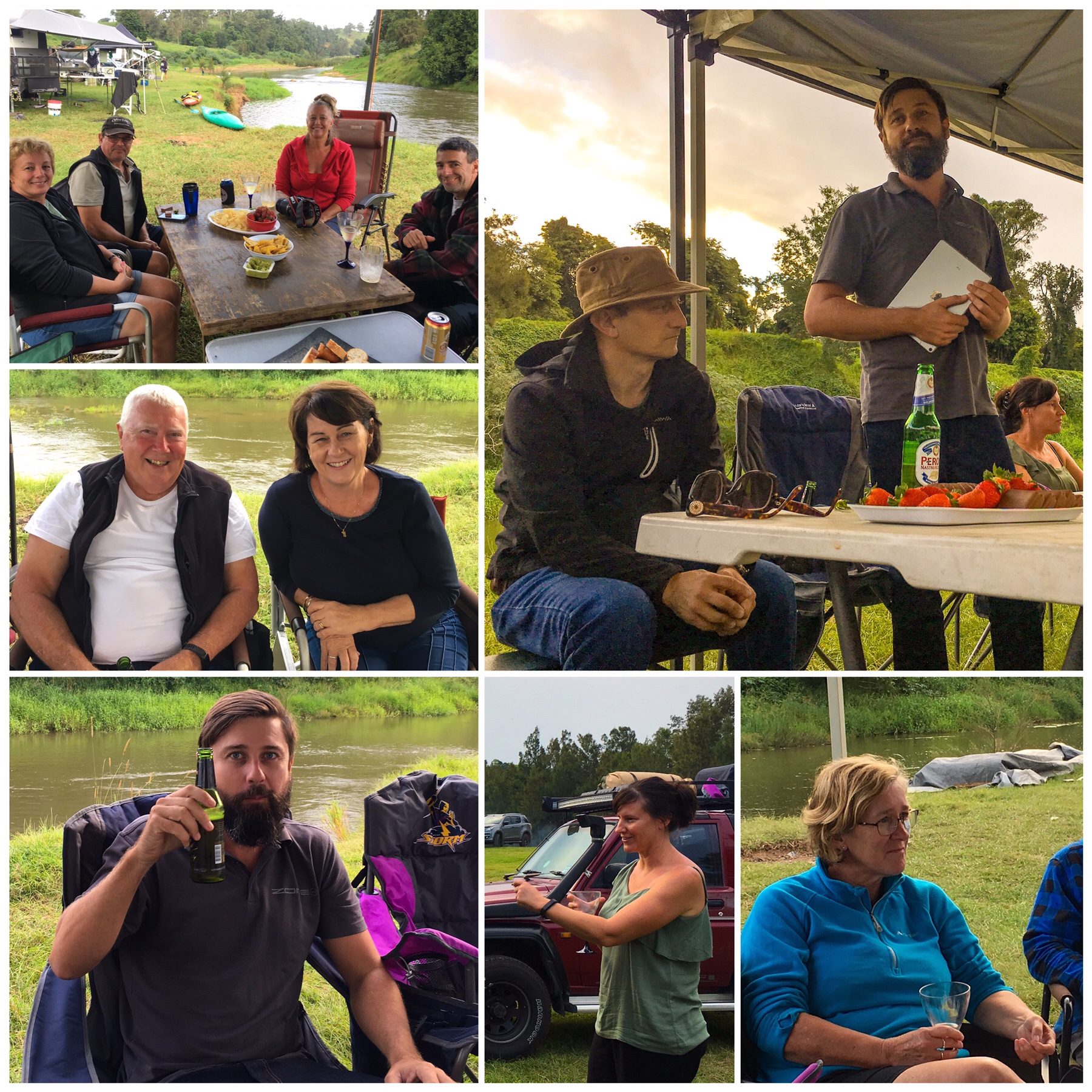 It was great to hear Dave Biggar, one of the directors, talk about some of the initiatives they are taking to mature their build processes and strive to offer even an more consistent quality experience to their new customers. He was joined by key members of the Zone team in customer support, systems improvement and marketing. There were 14 customers there, and all of us really appreciated the effort the team made to come and meet us and openly discuss where they were at as a business and seek input from us on their initiatives.
It was great to hear Dave Biggar, one of the directors, talk about some of the initiatives they are taking to mature their build processes and strive to offer even an more consistent quality experience to their new customers. He was joined by key members of the Zone team in customer support, systems improvement and marketing. There were 14 customers there, and all of us really appreciated the effort the team made to come and meet us and openly discuss where they were at as a business and seek input from us on their initiatives. One of the customers, Phil Clem, had a surprise for everyone as darkness drew in. He had brought along an enormous hollow tree trunk to burn on the campfire, and had taken the trouble to carve out ‘Zone RV’ into the side with a chainsaw, so when the fire really got going the letters shone out. What a star.
One of the customers, Phil Clem, had a surprise for everyone as darkness drew in. He had brought along an enormous hollow tree trunk to burn on the campfire, and had taken the trouble to carve out ‘Zone RV’ into the side with a chainsaw, so when the fire really got going the letters shone out. What a star.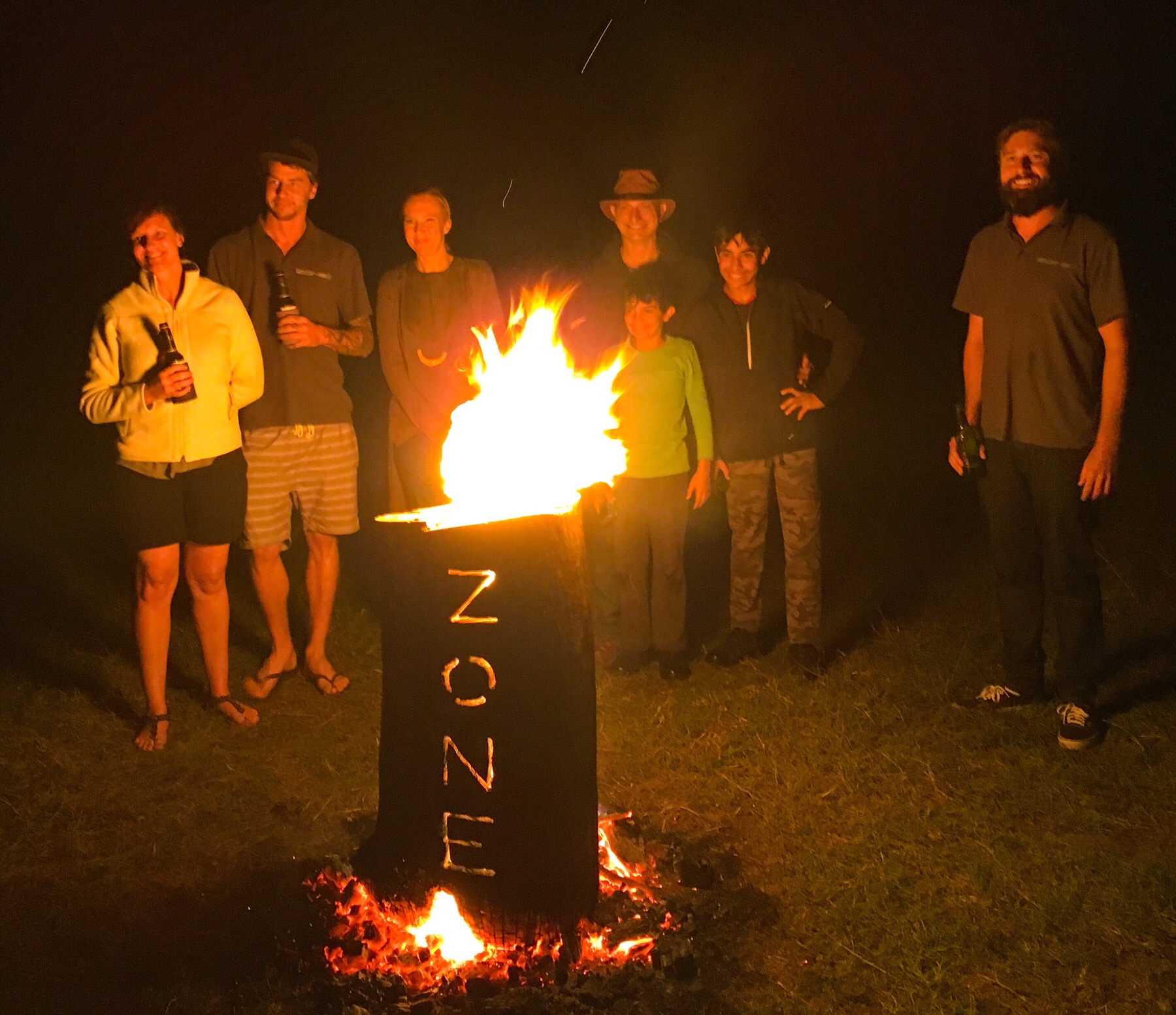 It seemed a fun and educative night was had by all, and we were very grateful for the effort they made to come out and visit. Their journey to being a leader in the industry has not been an easy one. They have pushed the boundaries on design with materials and finish. That doesn’t come easily, and clearly there have been some significant hurdles along the way. But these guys have pushed through and are now at the stage where they just need to bed down this innovation with robust processes allowing on time, on spec builds at the lowest cost to them and their customers. We think they will do it, and are proud to have been a small part of their journey.
It seemed a fun and educative night was had by all, and we were very grateful for the effort they made to come out and visit. Their journey to being a leader in the industry has not been an easy one. They have pushed the boundaries on design with materials and finish. That doesn’t come easily, and clearly there have been some significant hurdles along the way. But these guys have pushed through and are now at the stage where they just need to bed down this innovation with robust processes allowing on time, on spec builds at the lowest cost to them and their customers. We think they will do it, and are proud to have been a small part of their journey.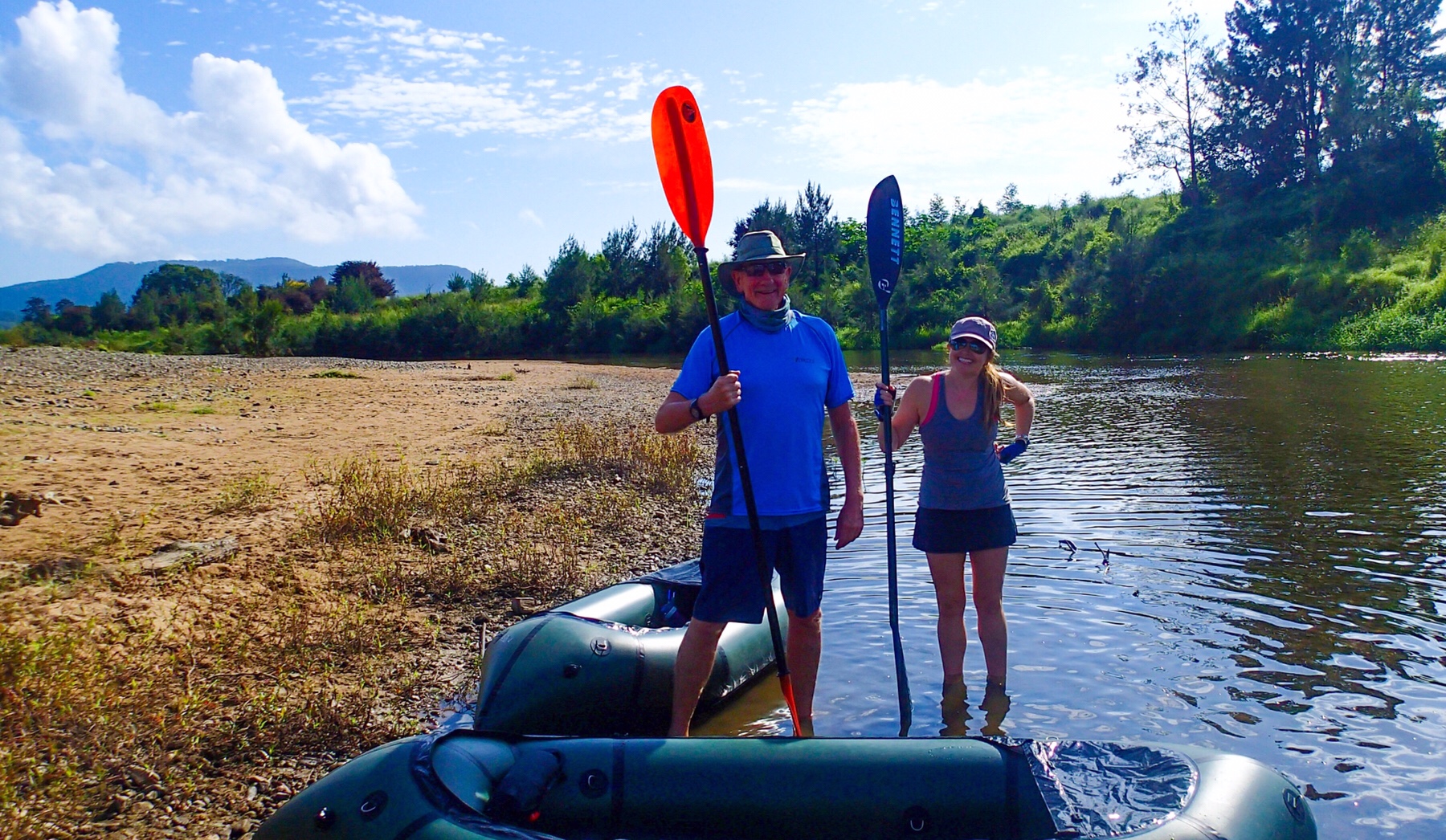 Greg had only paddled a Canadian canoe in the past, so the sit on top kayak was a new experience for him, but he did really well. We took our time, enjoying the scenery and birds, mostly letting the current guide us down the gravel races (we prefer to call them rapids!)
Greg had only paddled a Canadian canoe in the past, so the sit on top kayak was a new experience for him, but he did really well. We took our time, enjoying the scenery and birds, mostly letting the current guide us down the gravel races (we prefer to call them rapids!)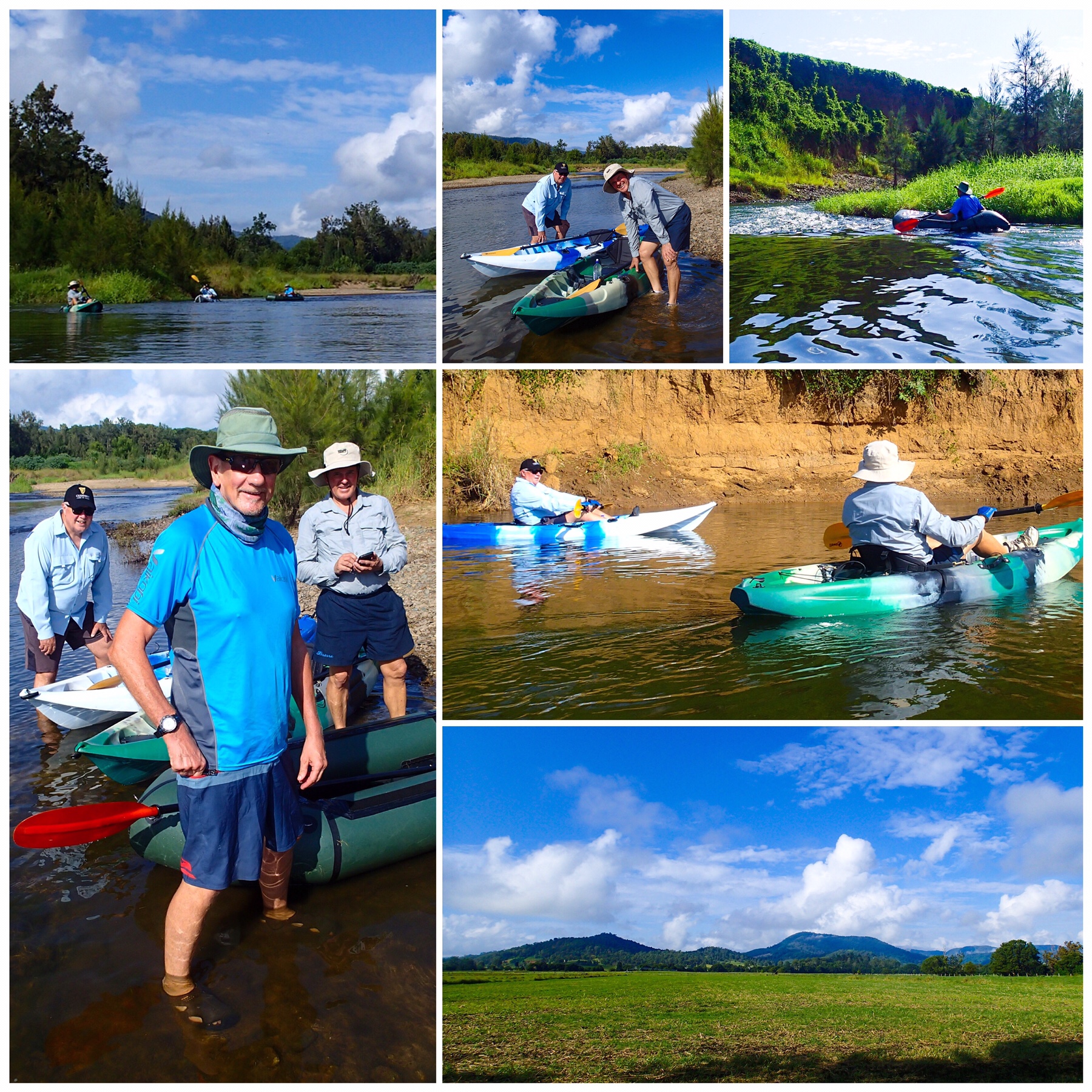 Rainbow bee eaters, cormorants, black kites, red backed wrens…the list of birdlife was endless and made the paddle even more interesting.
Rainbow bee eaters, cormorants, black kites, red backed wrens…the list of birdlife was endless and made the paddle even more interesting.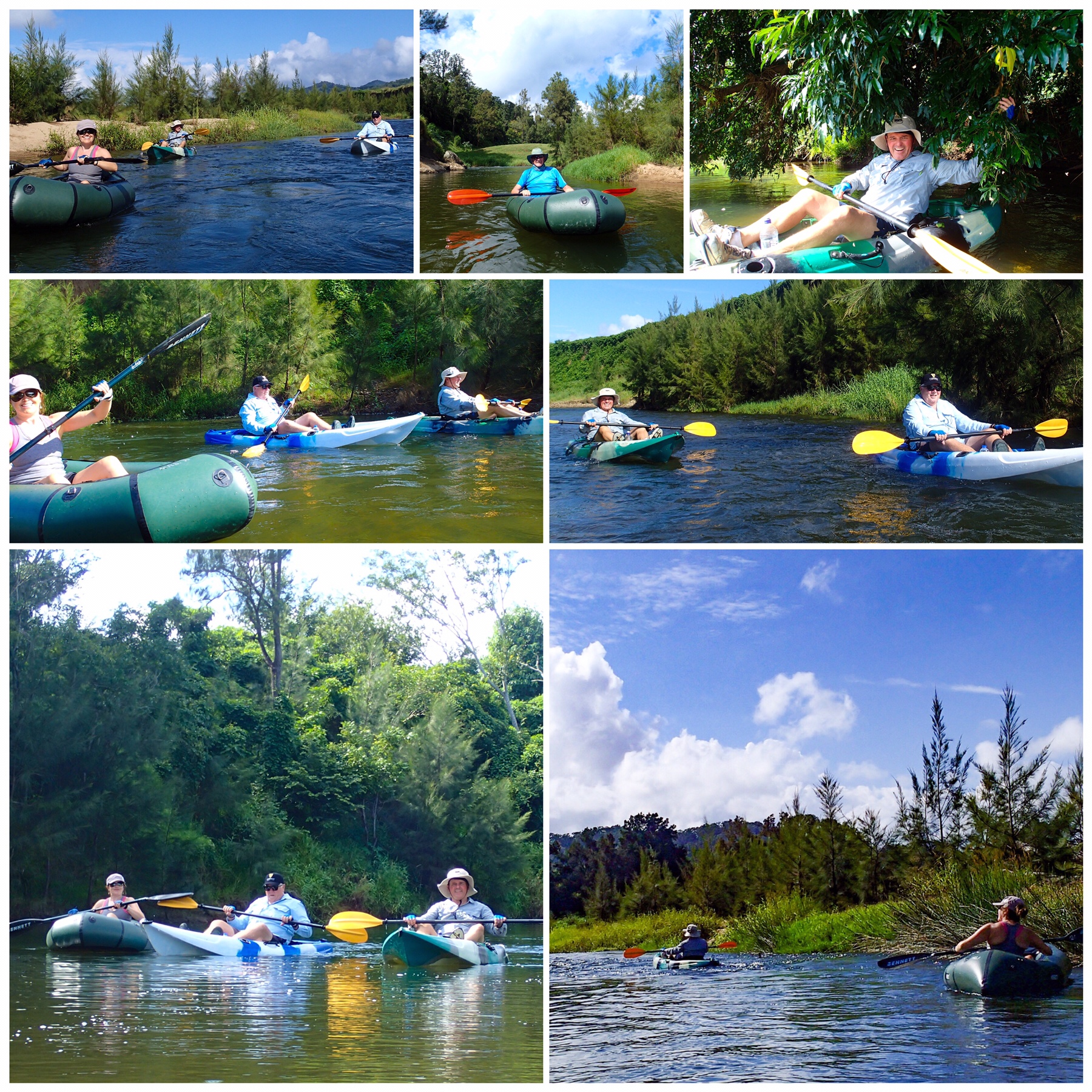 The Mary River and its surrounding valley was saved from being flooded for a reservoir by the discovery of an extremely rare fish. The Australian Lungfish is only naturally present in this river and one other in Australia. Lungfish fossils were found in New South Wales which date back 100 million years, virtually unchanged, making this creature a living fossil and really important ecologically.
The Mary River and its surrounding valley was saved from being flooded for a reservoir by the discovery of an extremely rare fish. The Australian Lungfish is only naturally present in this river and one other in Australia. Lungfish fossils were found in New South Wales which date back 100 million years, virtually unchanged, making this creature a living fossil and really important ecologically.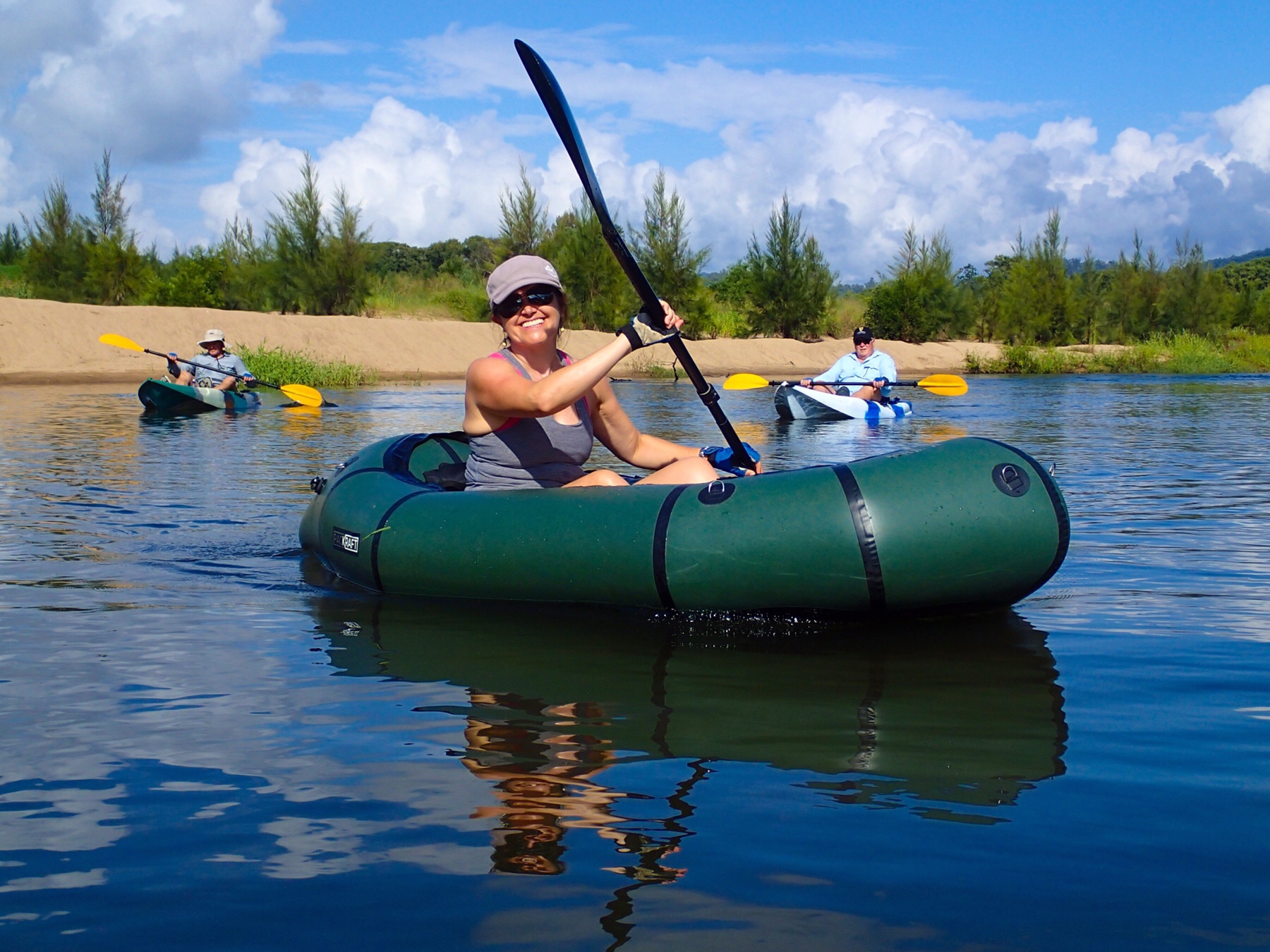 We had a great hour or so paddling downstream 4.5km, finishing up at our camp for showers. Greg then dropped us back at our car and Mr A and I drove to the Kenilworth Hotel (pub). As we walked in we discovered the Sunshine Coast Ukulele Festival was on in town with the pub hosting some of the performances. It’s funny how you can spot a ukulele player – rainbow coloured tie died outfits and funny crocheted hats! Some performances were better than others, but we avoided the stage and found a table inside.
We had a great hour or so paddling downstream 4.5km, finishing up at our camp for showers. Greg then dropped us back at our car and Mr A and I drove to the Kenilworth Hotel (pub). As we walked in we discovered the Sunshine Coast Ukulele Festival was on in town with the pub hosting some of the performances. It’s funny how you can spot a ukulele player – rainbow coloured tie died outfits and funny crocheted hats! Some performances were better than others, but we avoided the stage and found a table inside.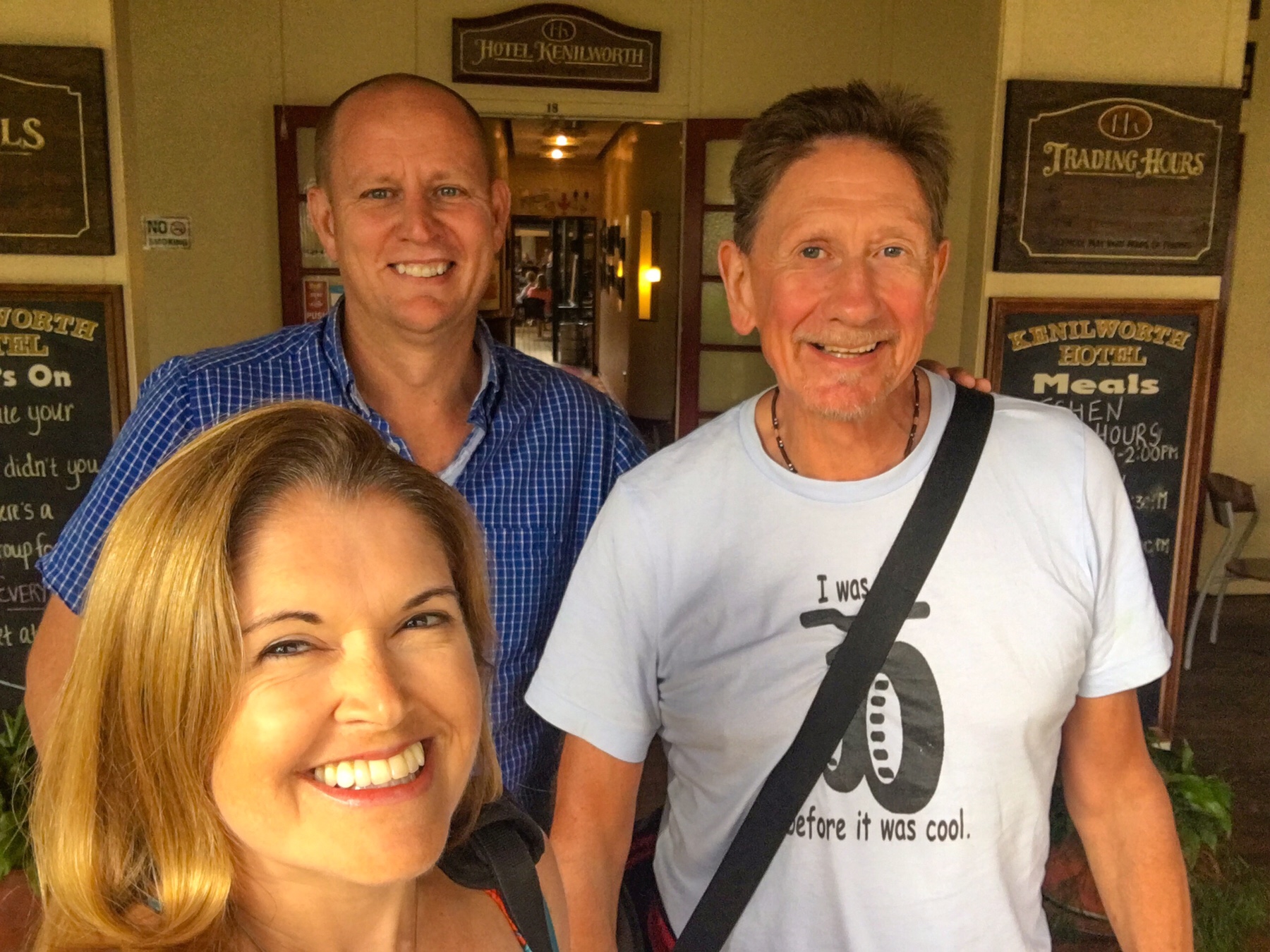 After a great feed, Mr A and I farewelled Andrew and headed back to camp to catch up with the next batch of Zoners who had arrived.
After a great feed, Mr A and I farewelled Andrew and headed back to camp to catch up with the next batch of Zoners who had arrived.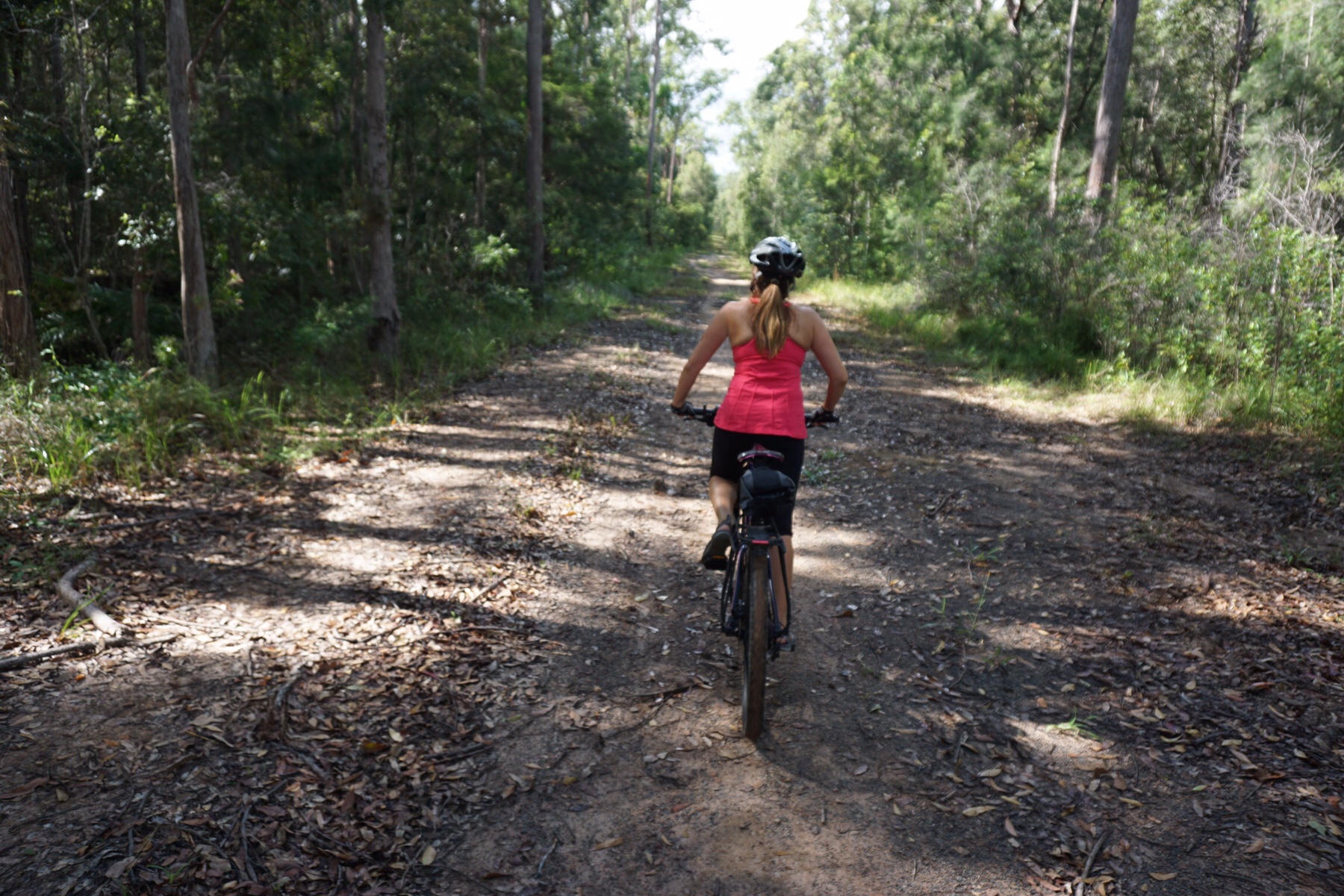
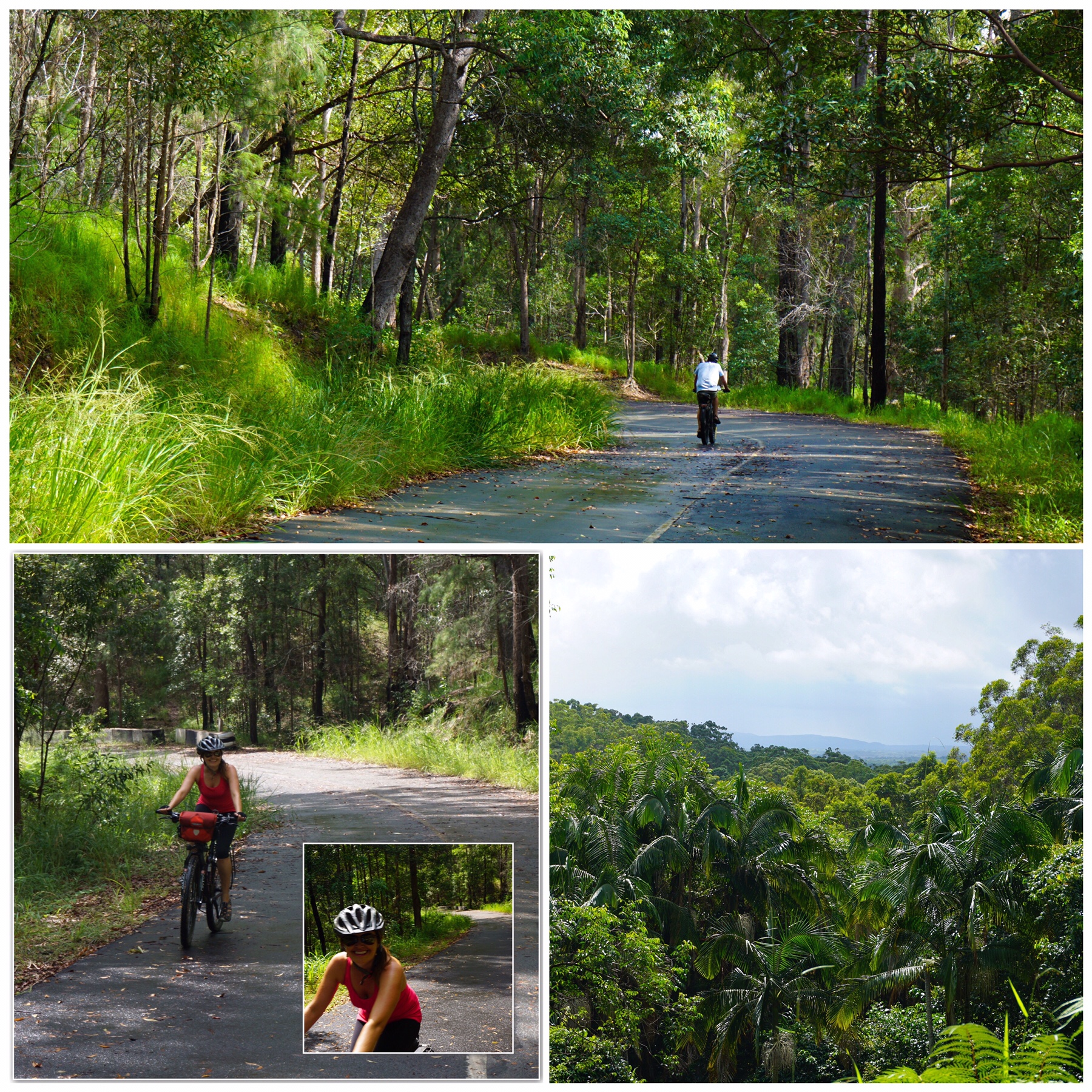 We rode down Gyndier Drive, a locked gate road winding up through the forest. The route is used as part of the Noosa triathlon and twice a year the site for road and race cars which enter the Noosa Hill Climb, with 14 corners to race through – just us there today though, on our private road.
We rode down Gyndier Drive, a locked gate road winding up through the forest. The route is used as part of the Noosa triathlon and twice a year the site for road and race cars which enter the Noosa Hill Climb, with 14 corners to race through – just us there today though, on our private road.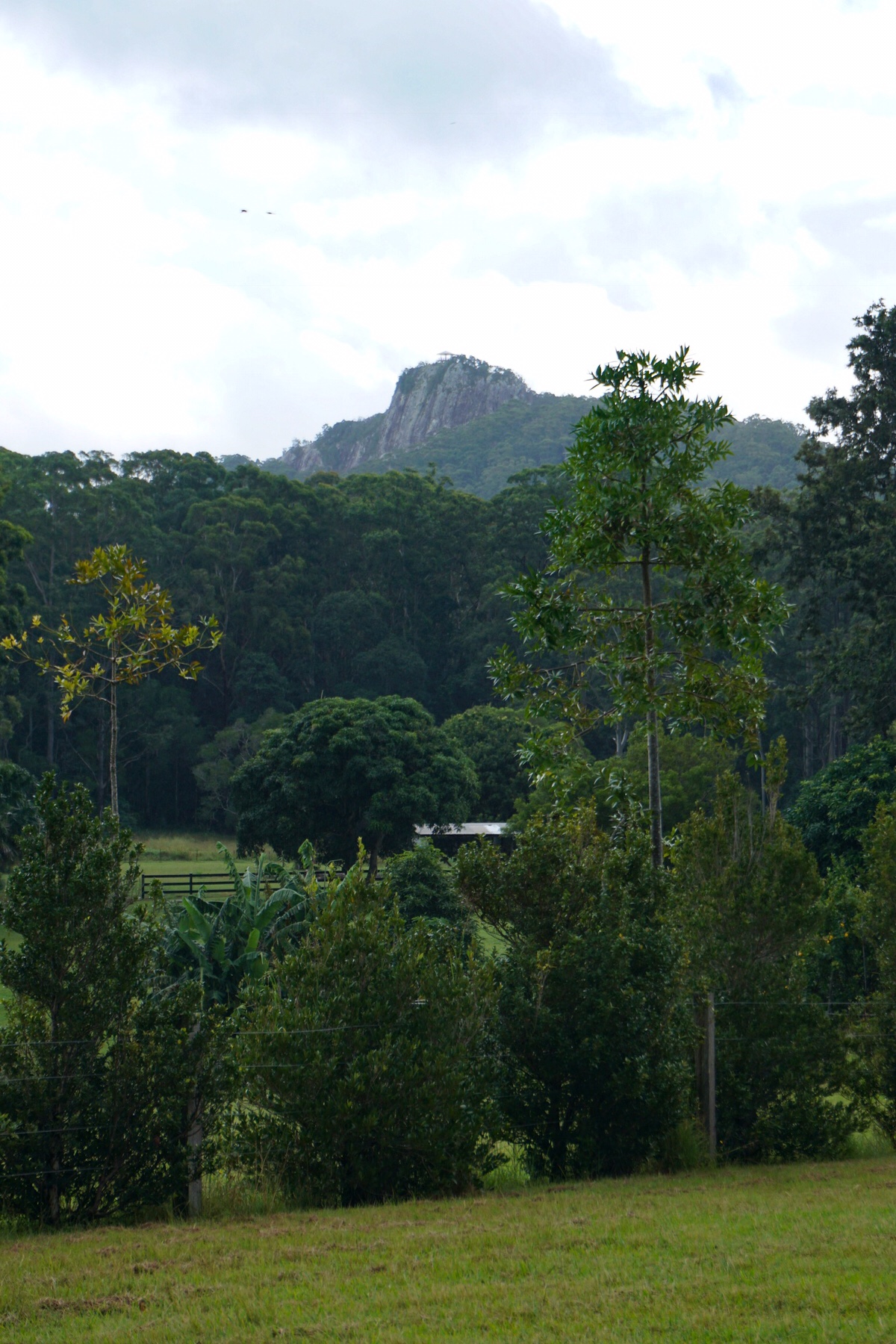 Everything seemed to be against us, as the rain fell down as hail, and then in ridiculously heavy torrents. The road was mostly unpaved and the orange mud ran down in rivers, making the surface sticky and slippery as well as it already being extremely steep. We kept on going. Finally, we reached the carpark with some relief, and the rain stopped!
Everything seemed to be against us, as the rain fell down as hail, and then in ridiculously heavy torrents. The road was mostly unpaved and the orange mud ran down in rivers, making the surface sticky and slippery as well as it already being extremely steep. We kept on going. Finally, we reached the carpark with some relief, and the rain stopped!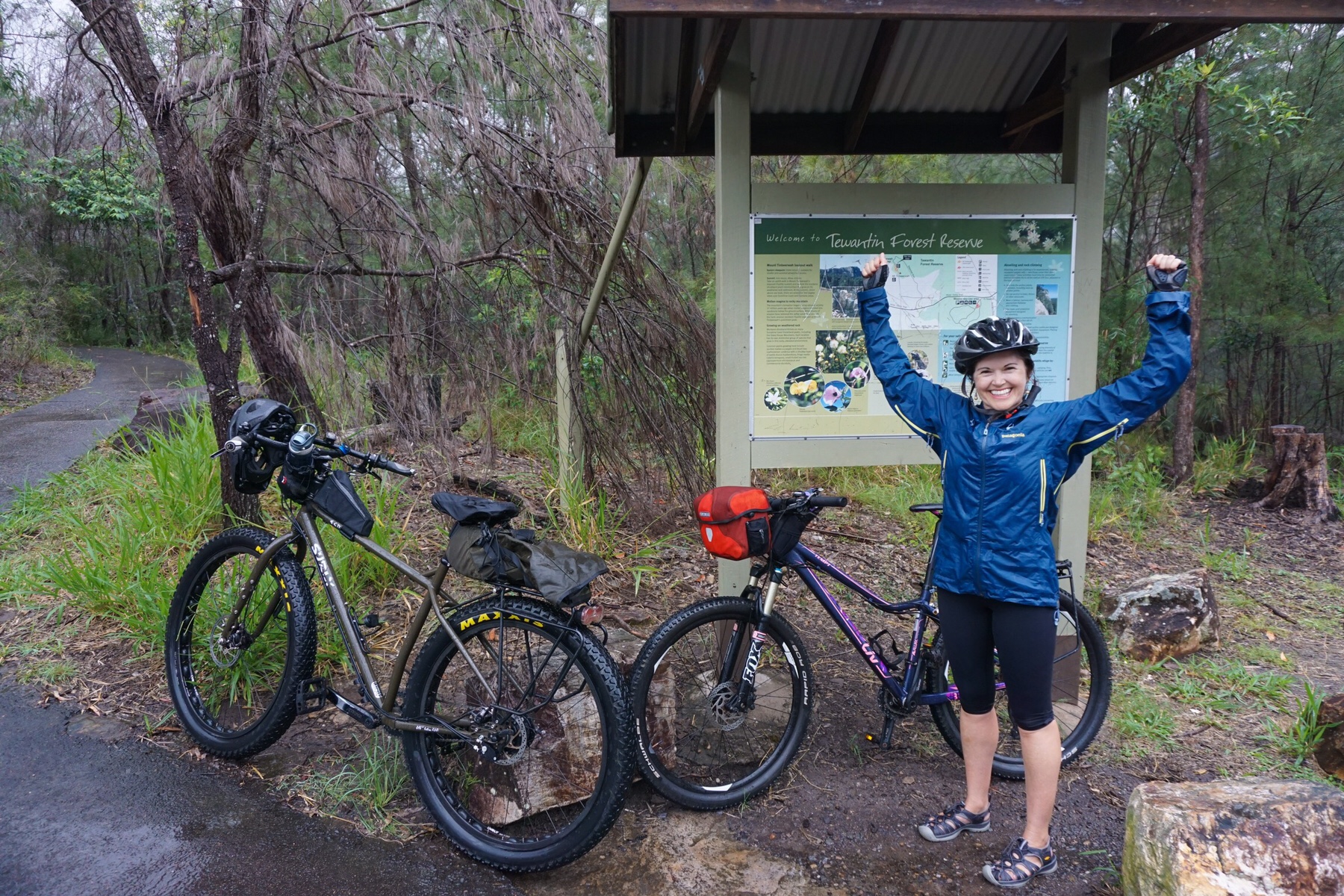
 We left the bikes leaning in the car park, hoping nobody would steal them, and hiked up the final kilometre to the summit, with fabulous views over Noosa Heads and the next rain shower heading our way.
We left the bikes leaning in the car park, hoping nobody would steal them, and hiked up the final kilometre to the summit, with fabulous views over Noosa Heads and the next rain shower heading our way.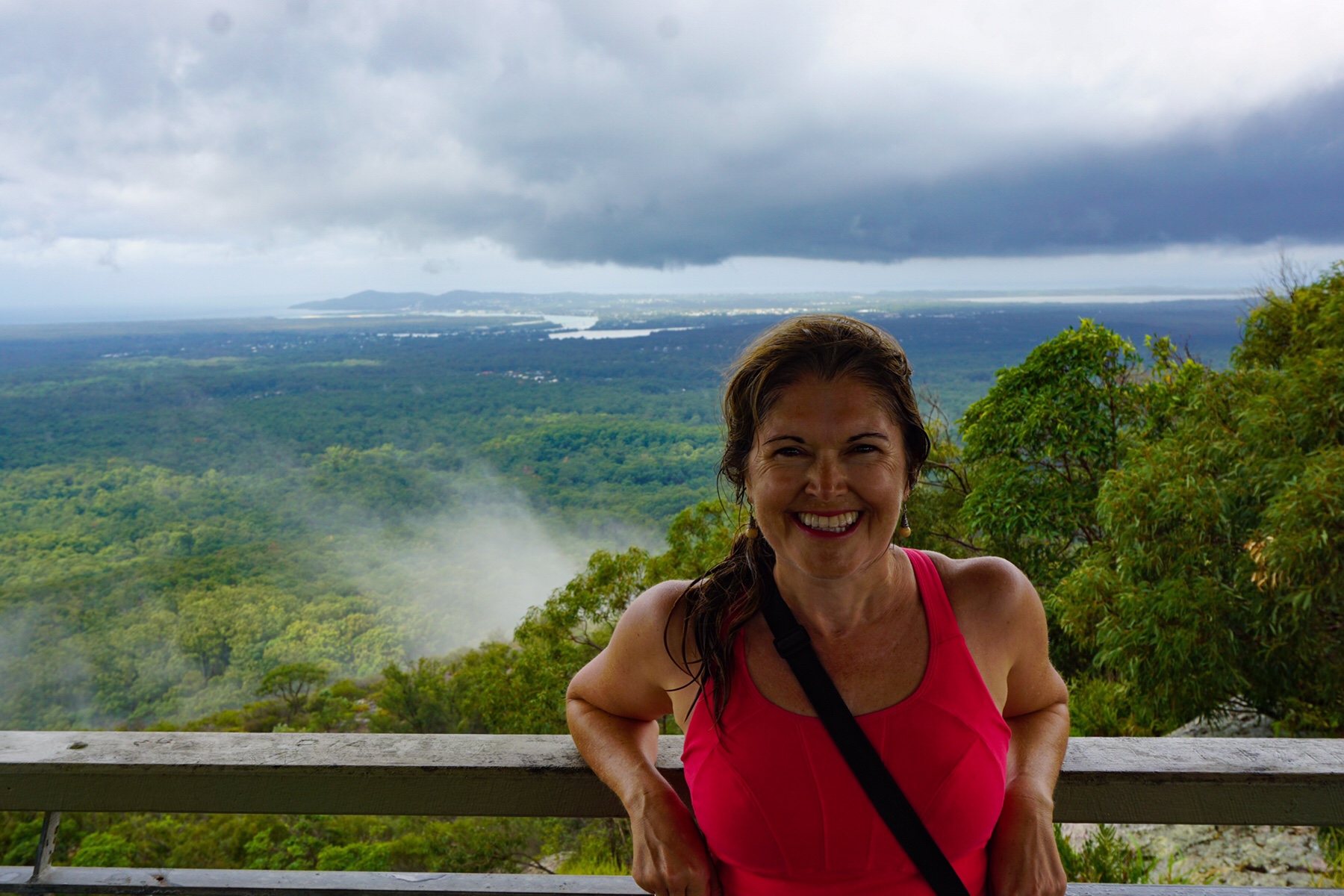


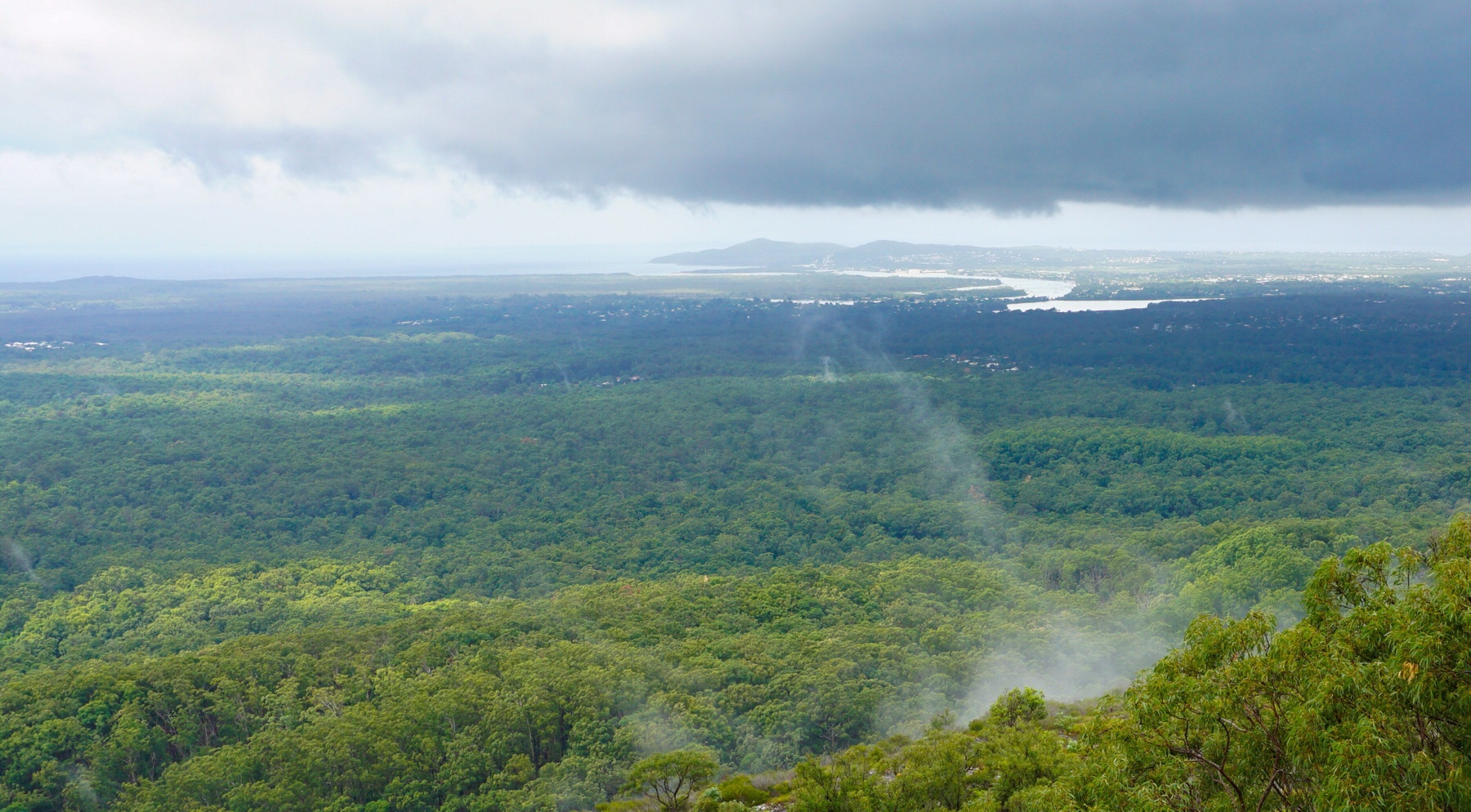 We enjoyed the view, then retraced our steps (wheels?) a short way before heading through the forest along an ‘easy’ route.
We enjoyed the view, then retraced our steps (wheels?) a short way before heading through the forest along an ‘easy’ route.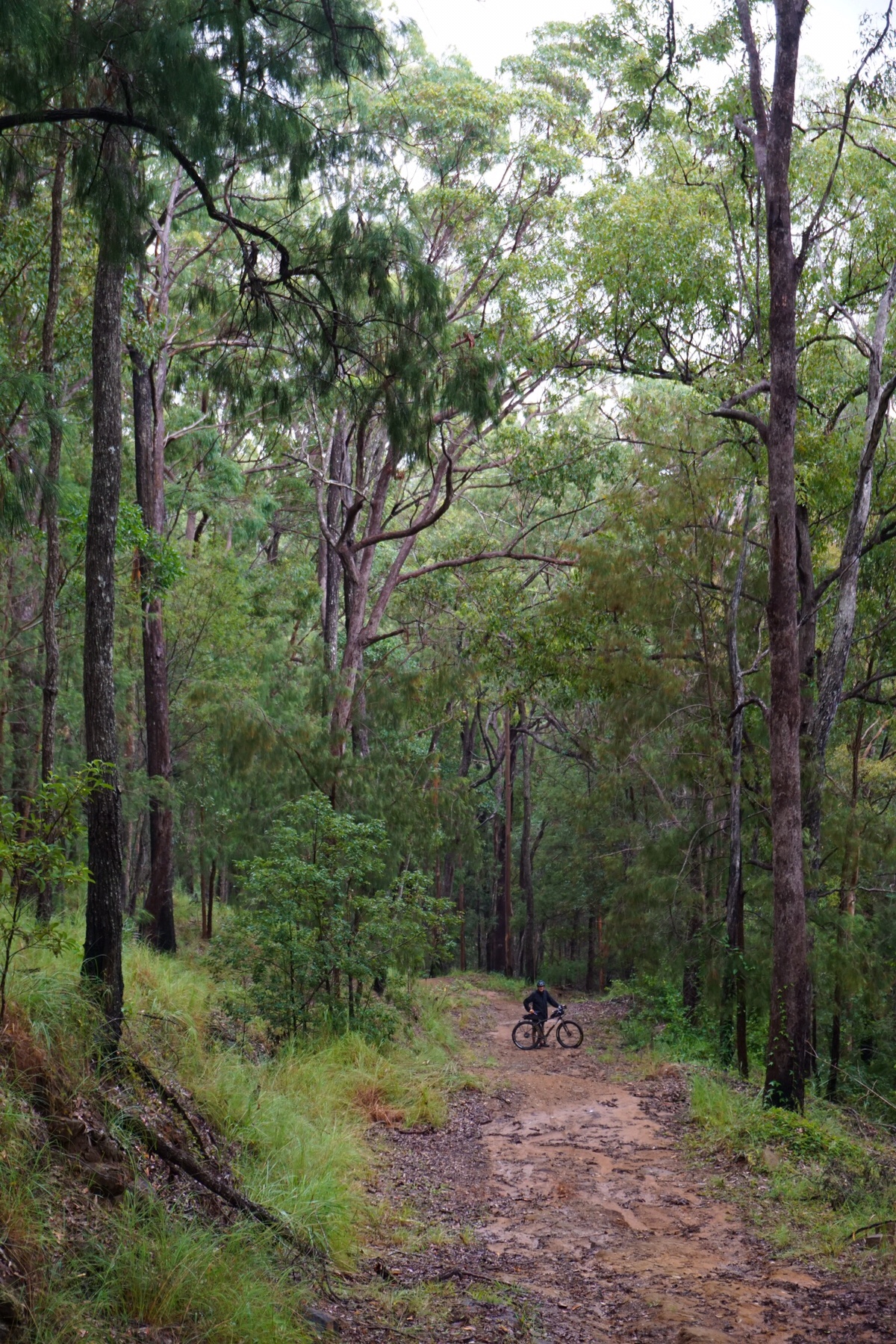 I’m certain it is easy when dry, but the wet conditions had us slipping and sliding sideways down the tracks, thankfully staying upright. It was a short way from the end of this track back to our caravan, with just over 20km under our belts. Boiled eggs & Marmite soldiers burned off I think!
I’m certain it is easy when dry, but the wet conditions had us slipping and sliding sideways down the tracks, thankfully staying upright. It was a short way from the end of this track back to our caravan, with just over 20km under our belts. Boiled eggs & Marmite soldiers burned off I think!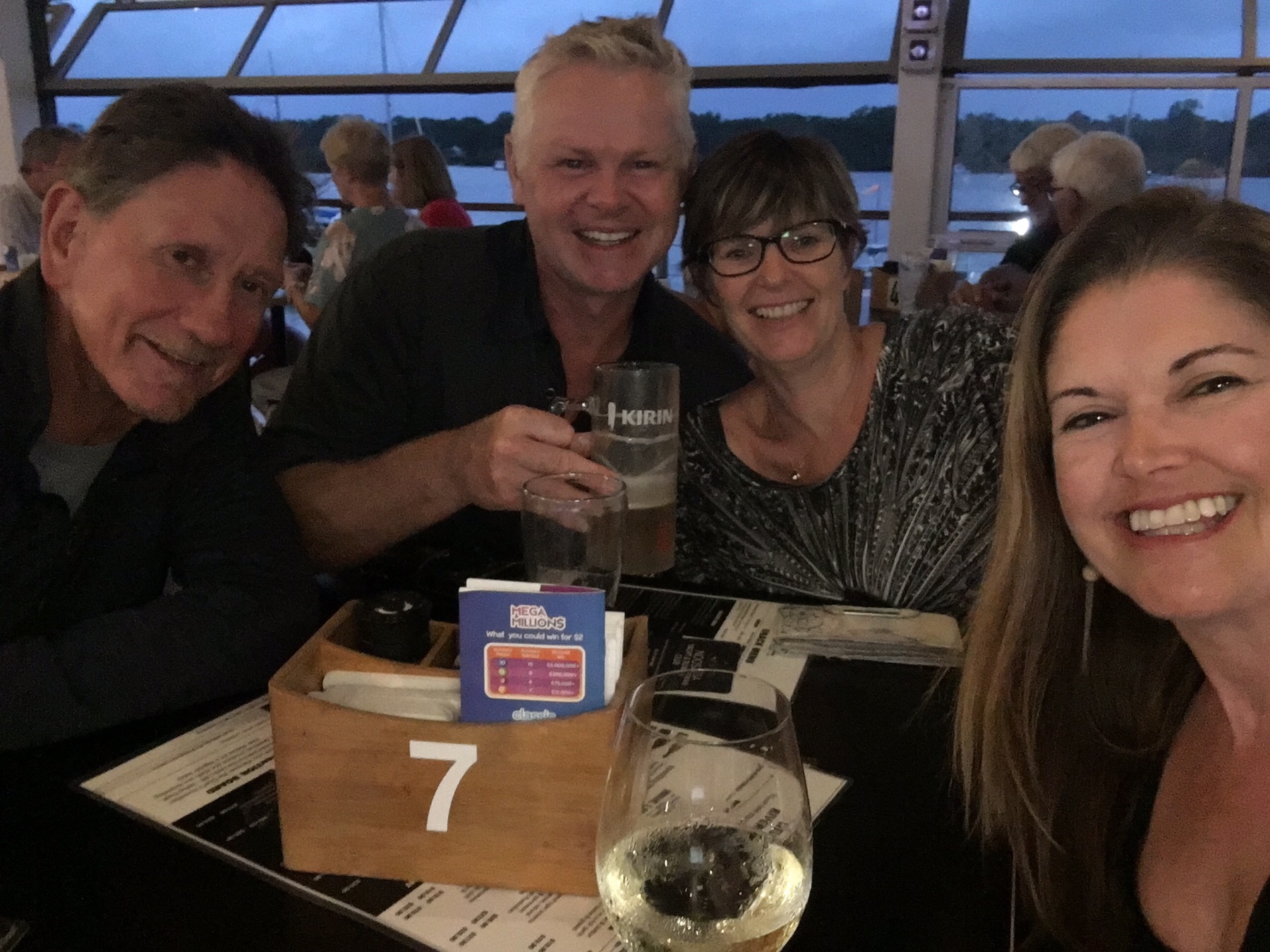 We headed back to camp for a relaxed evening. We move on from here tomorrow…
We headed back to camp for a relaxed evening. We move on from here tomorrow…